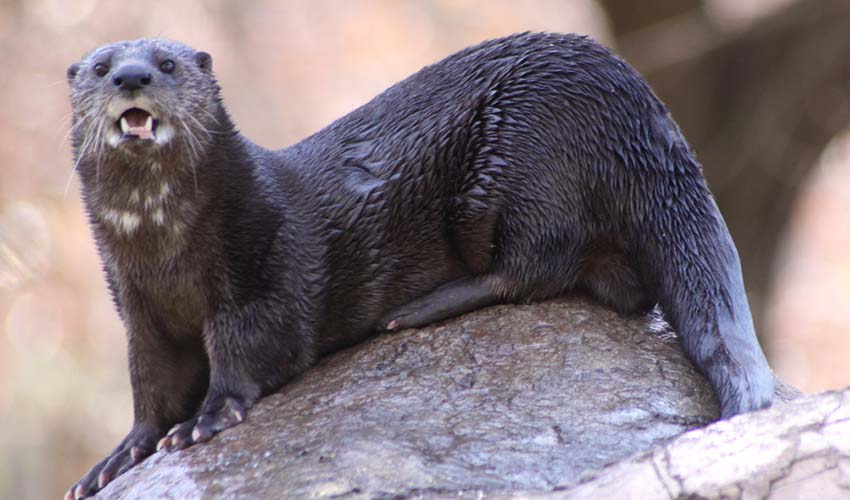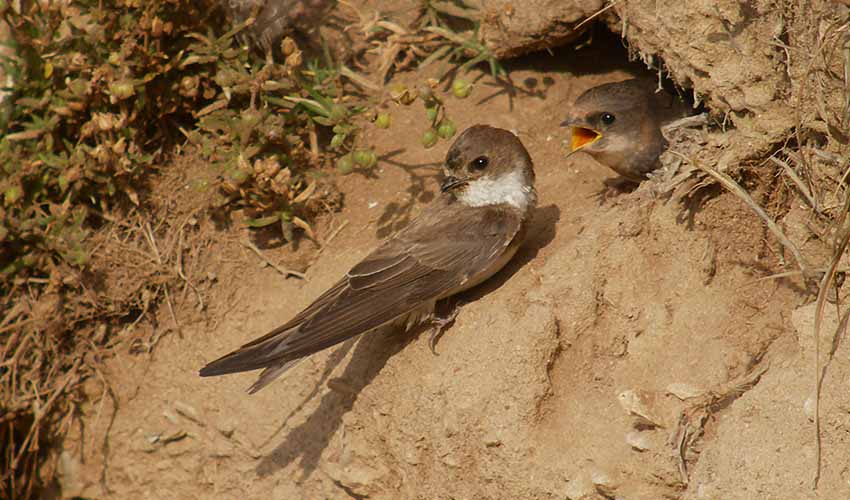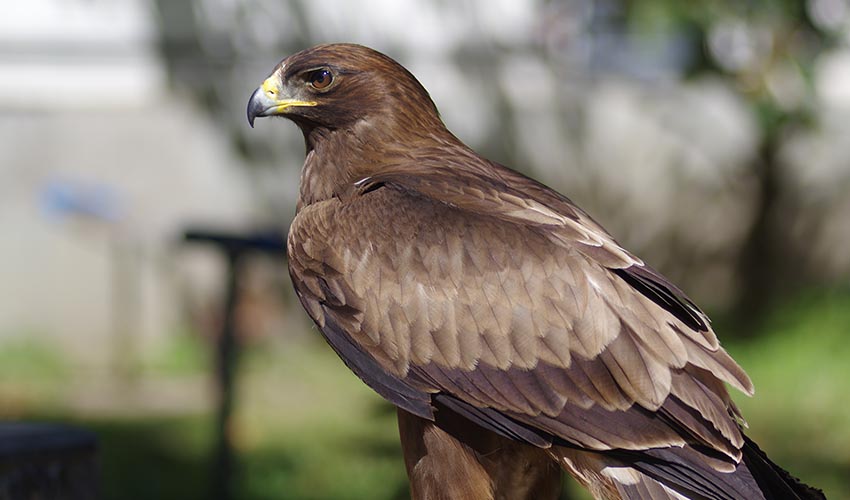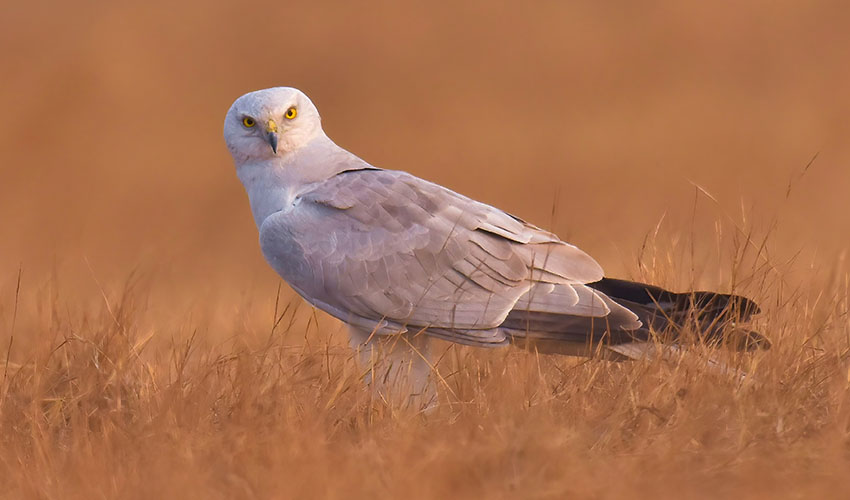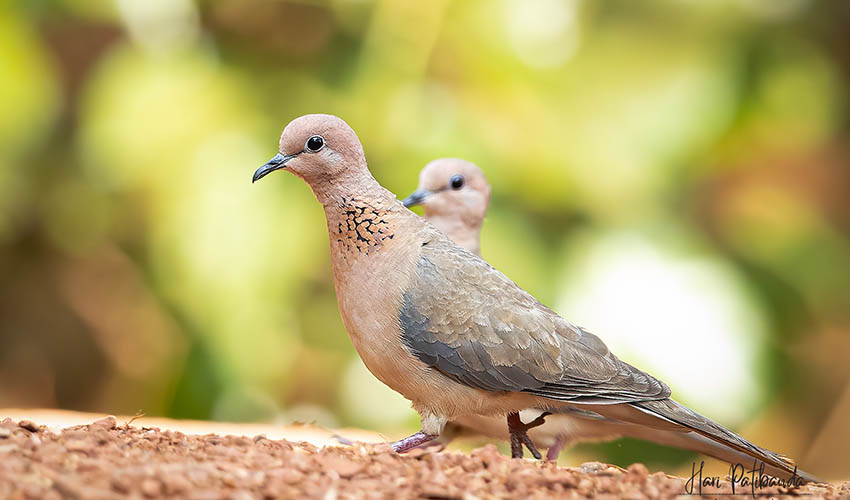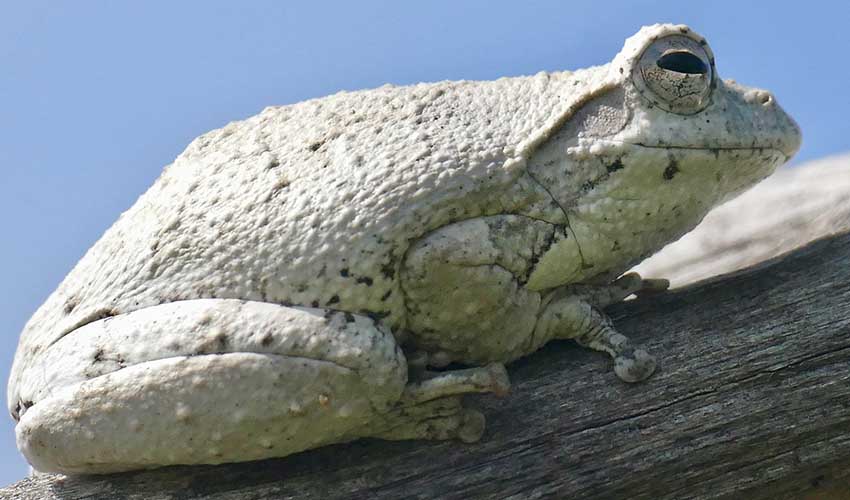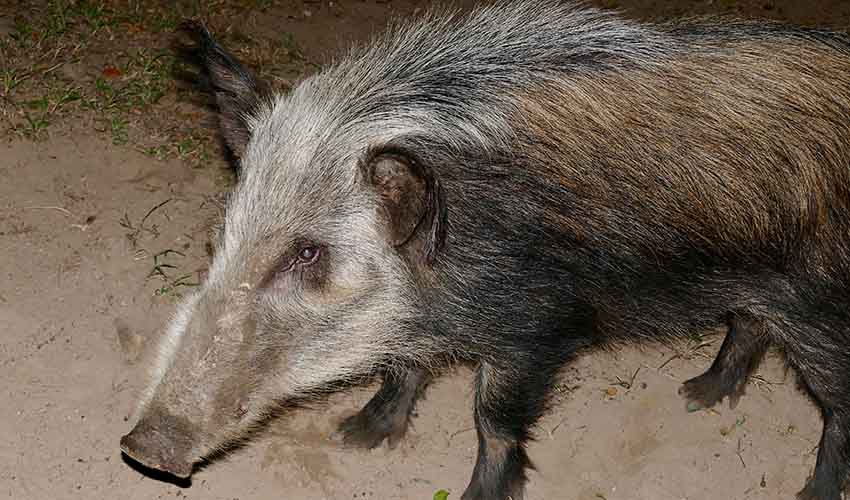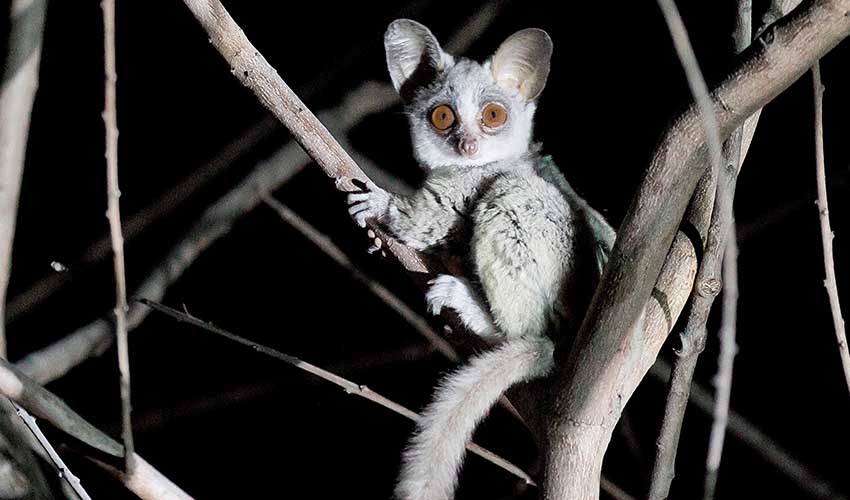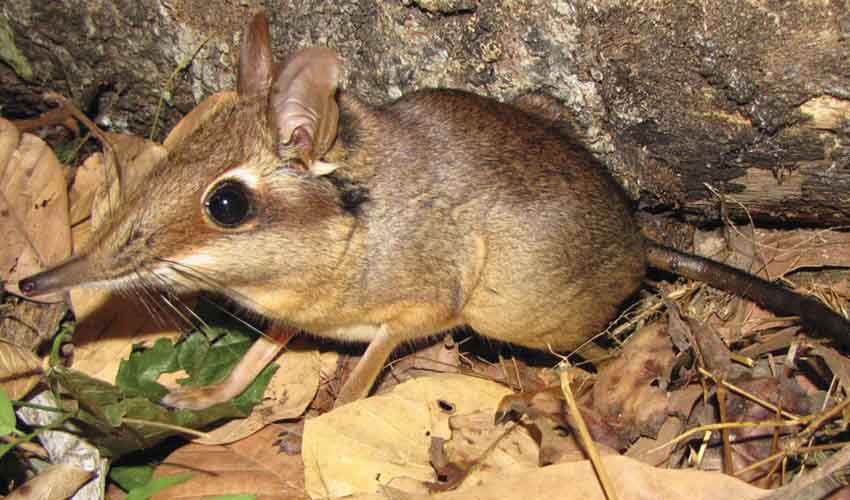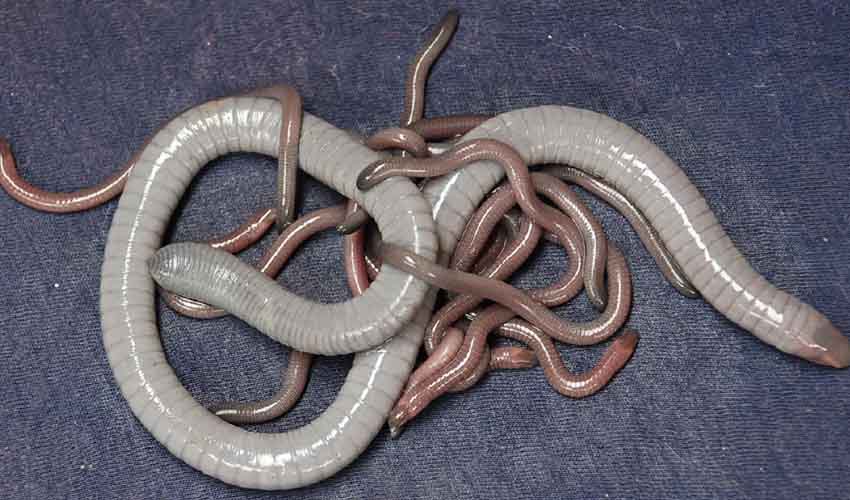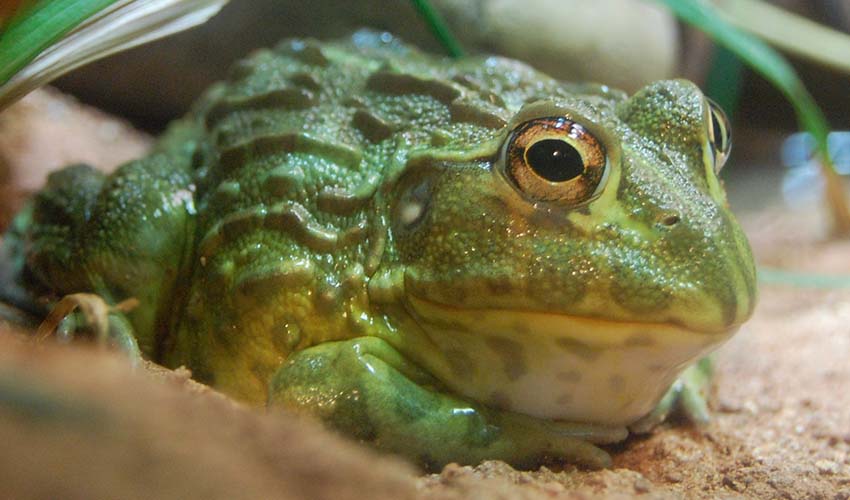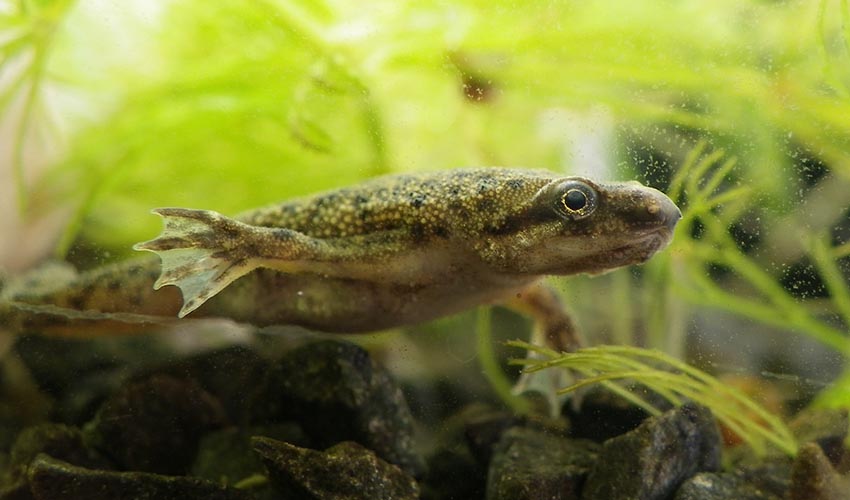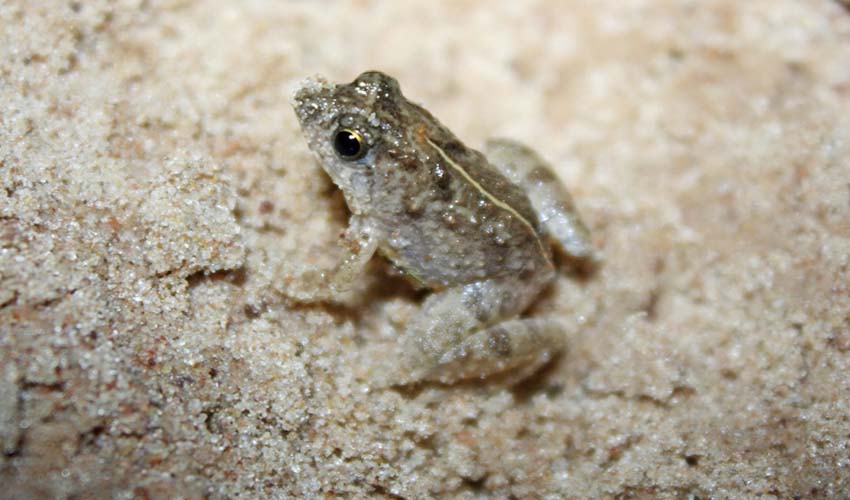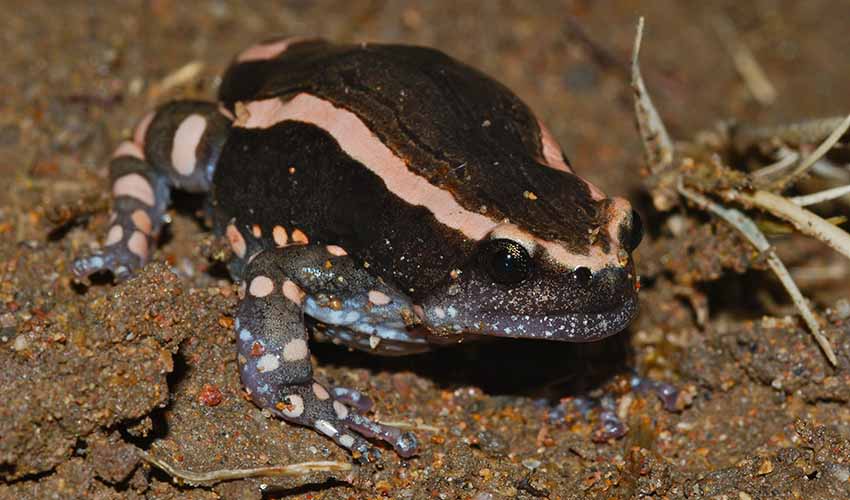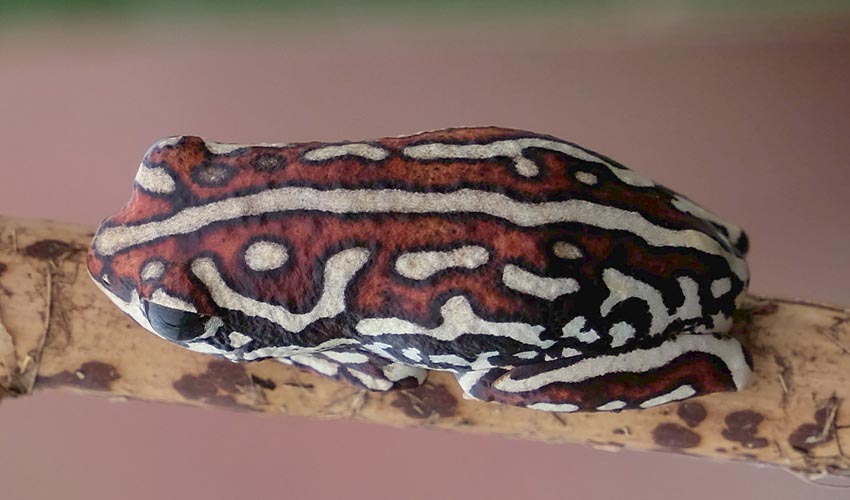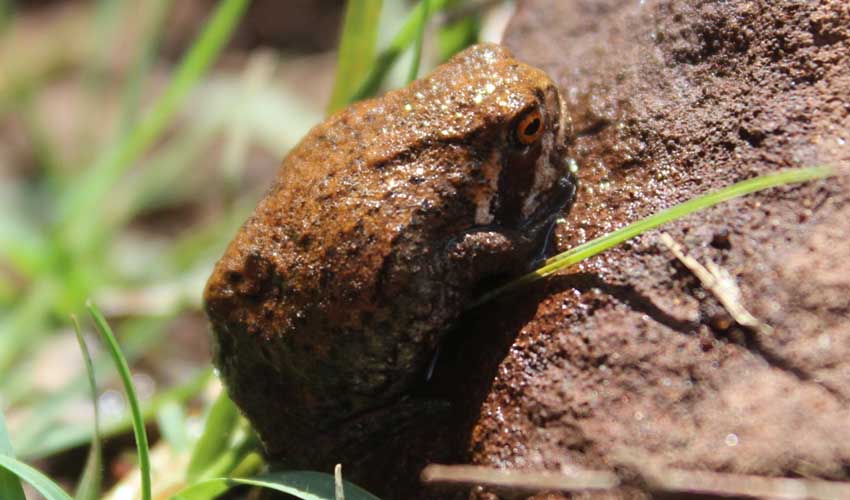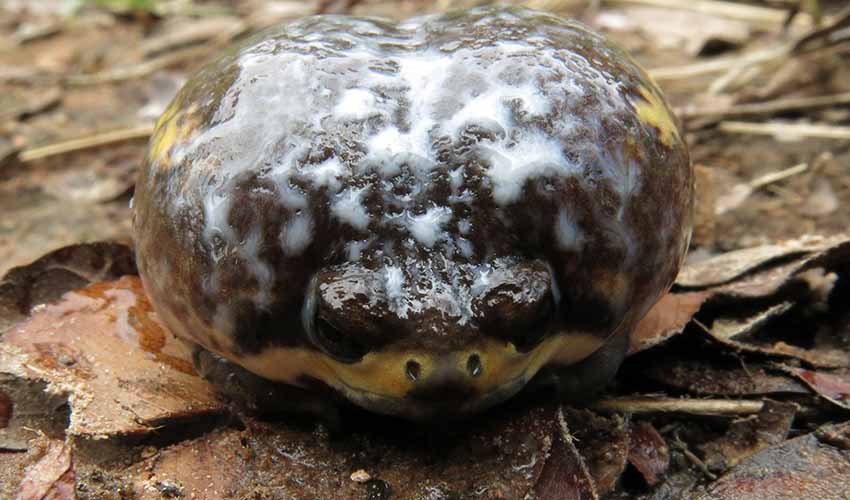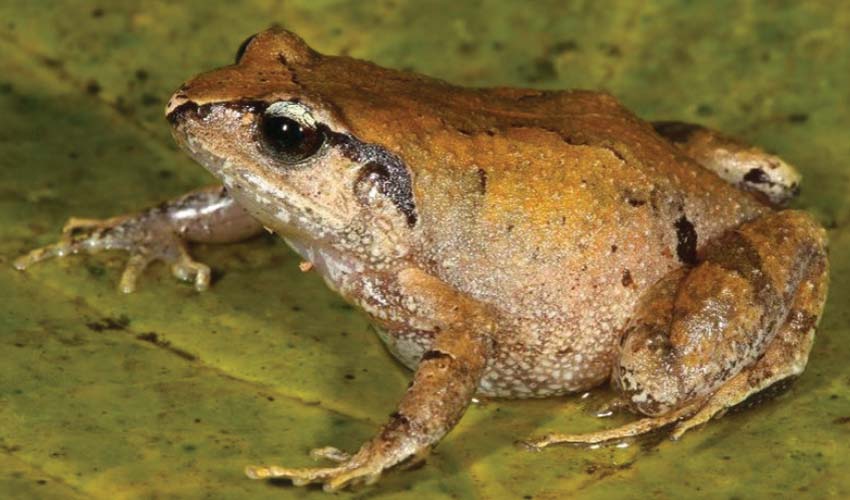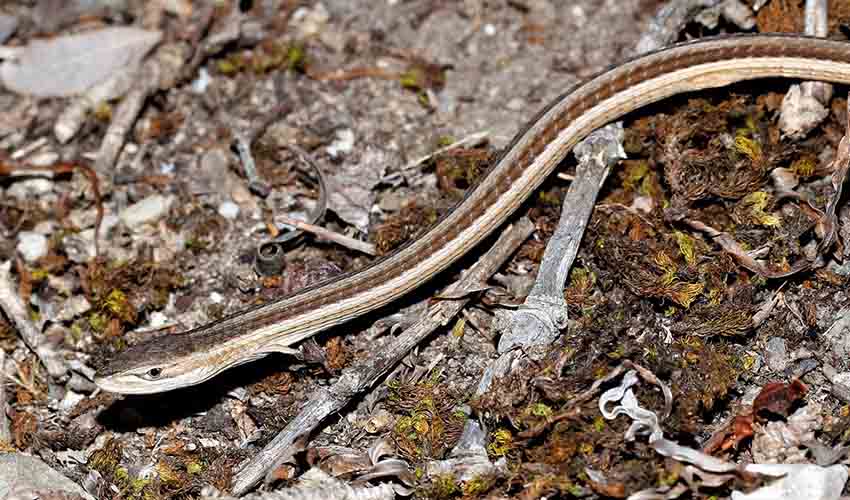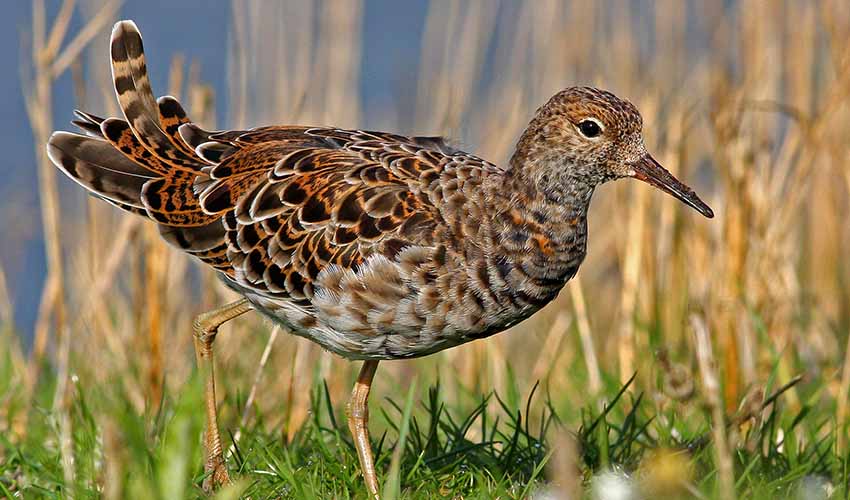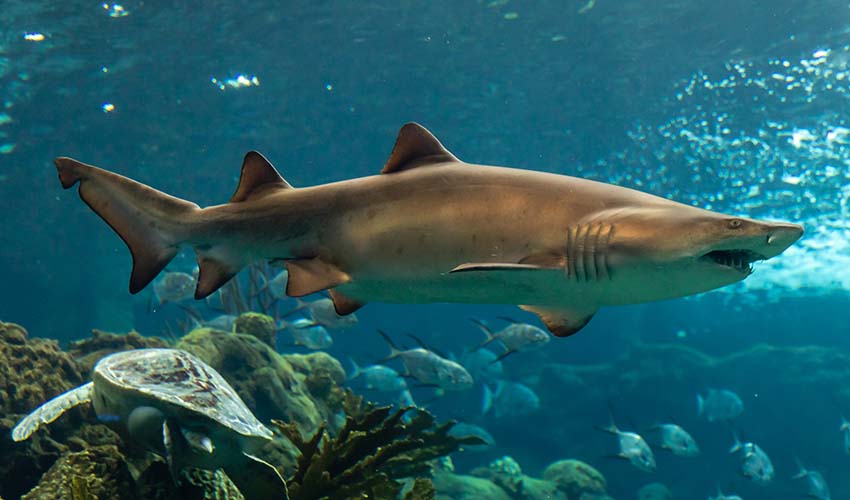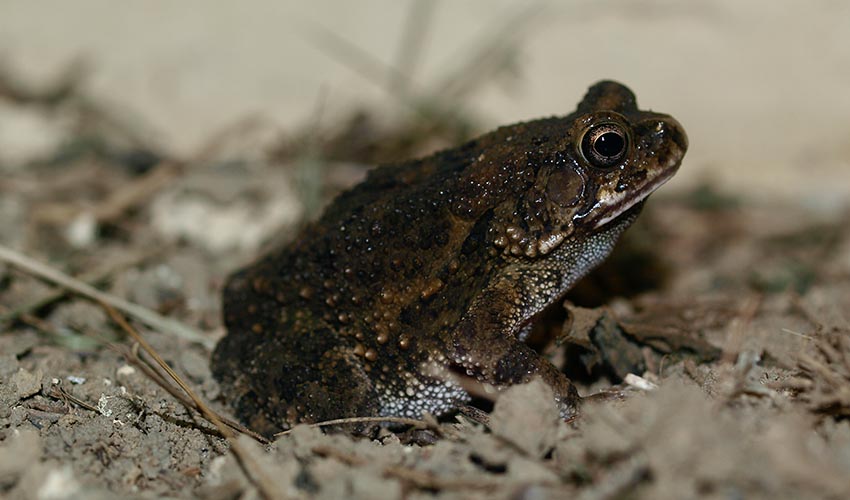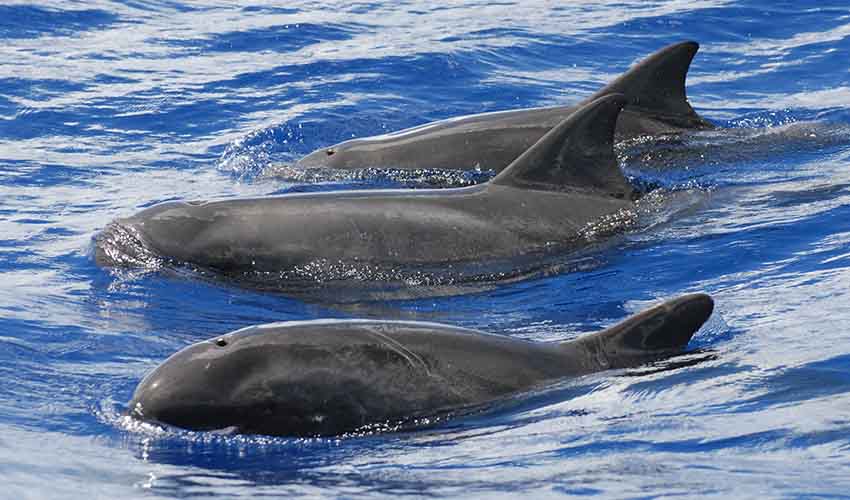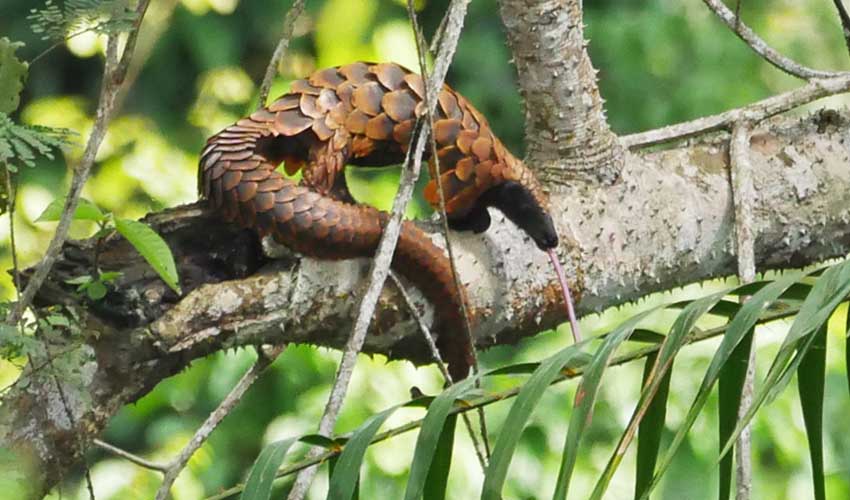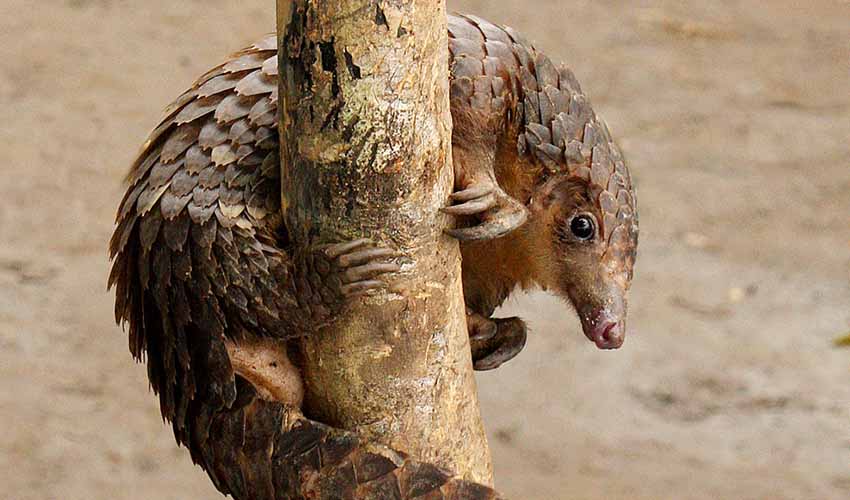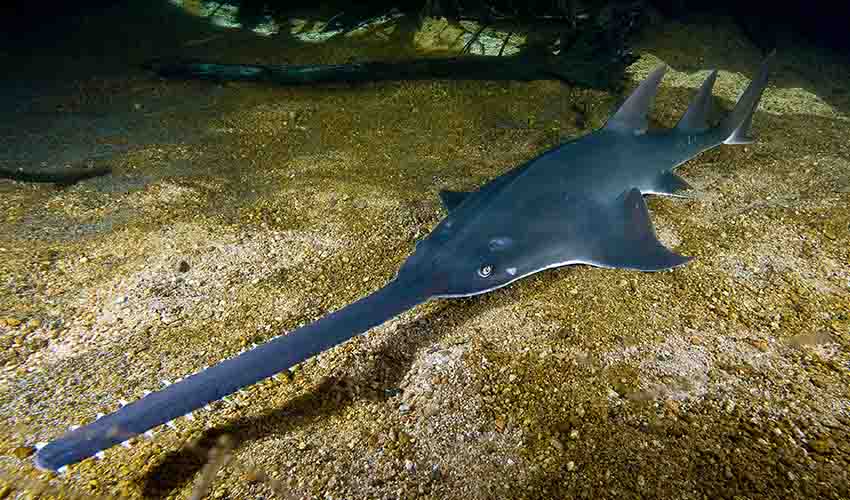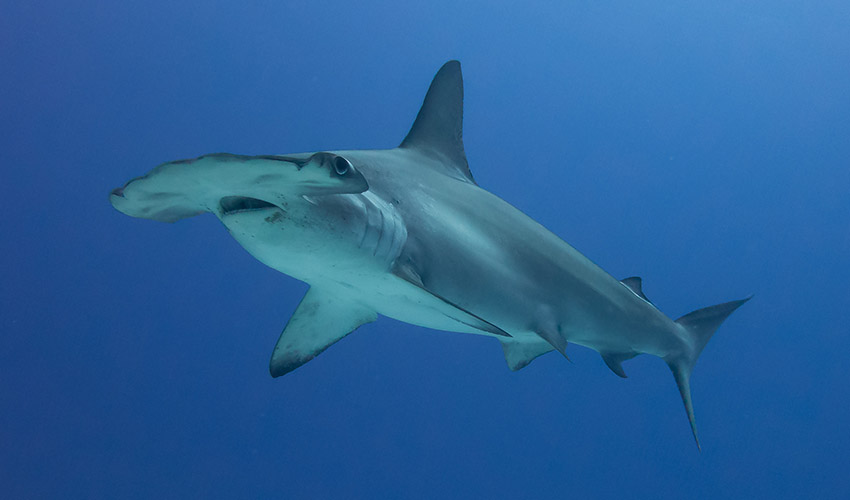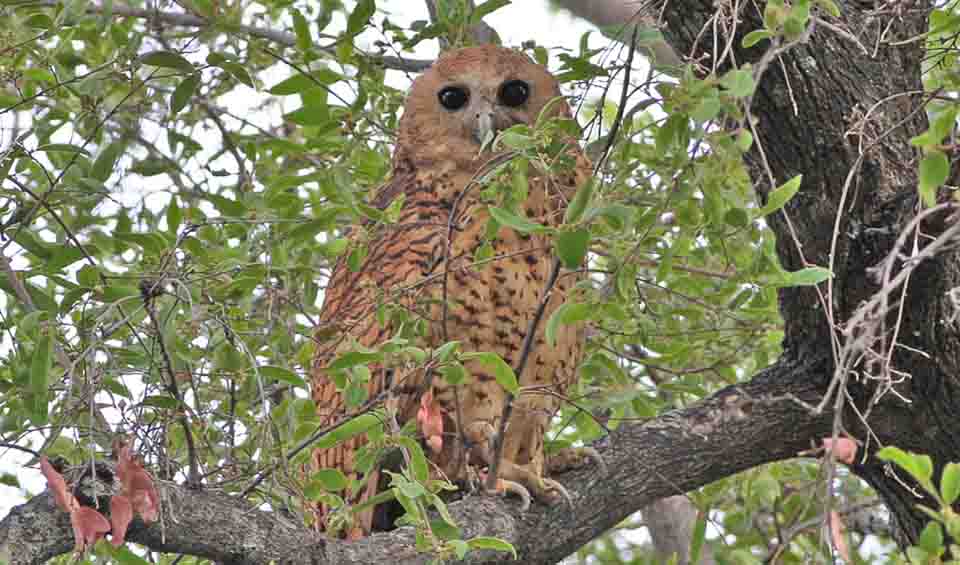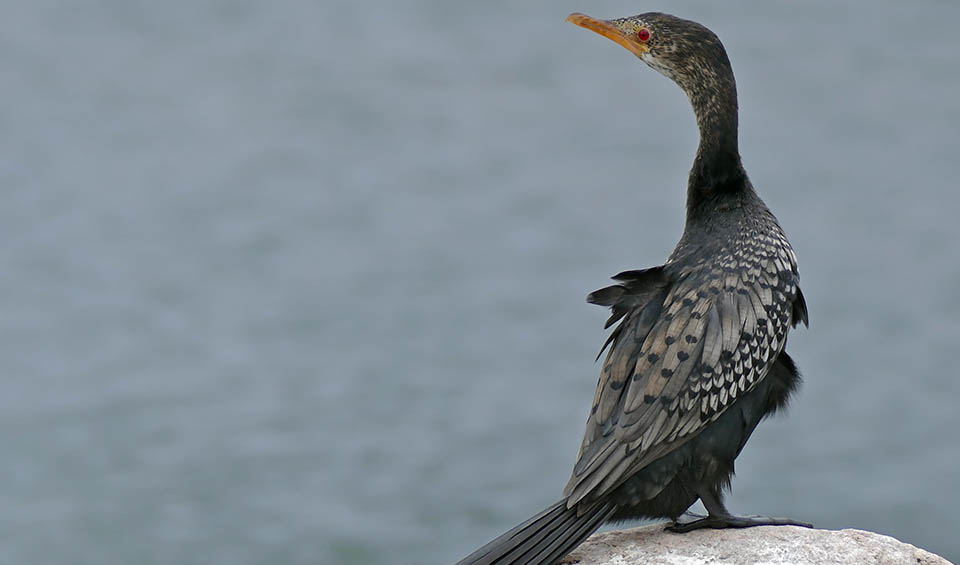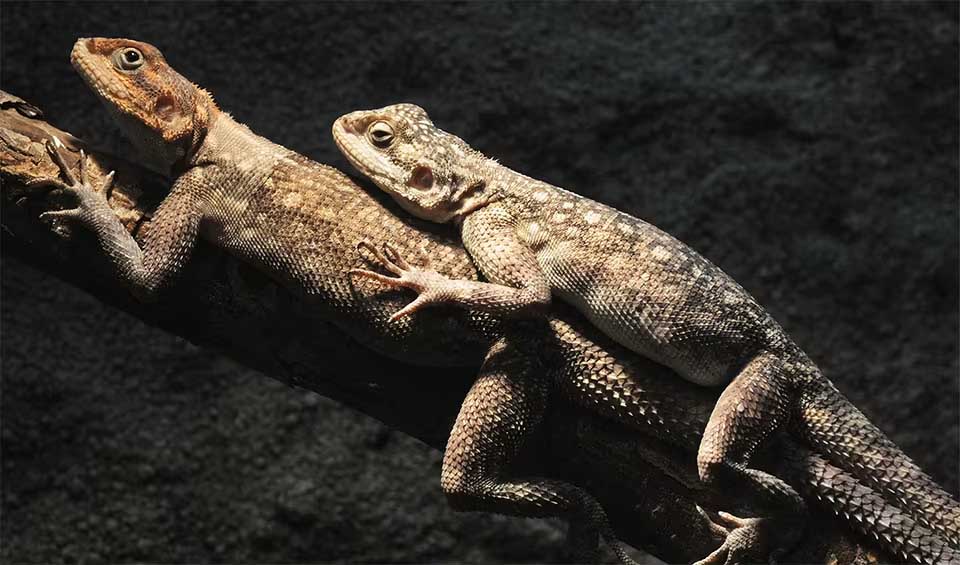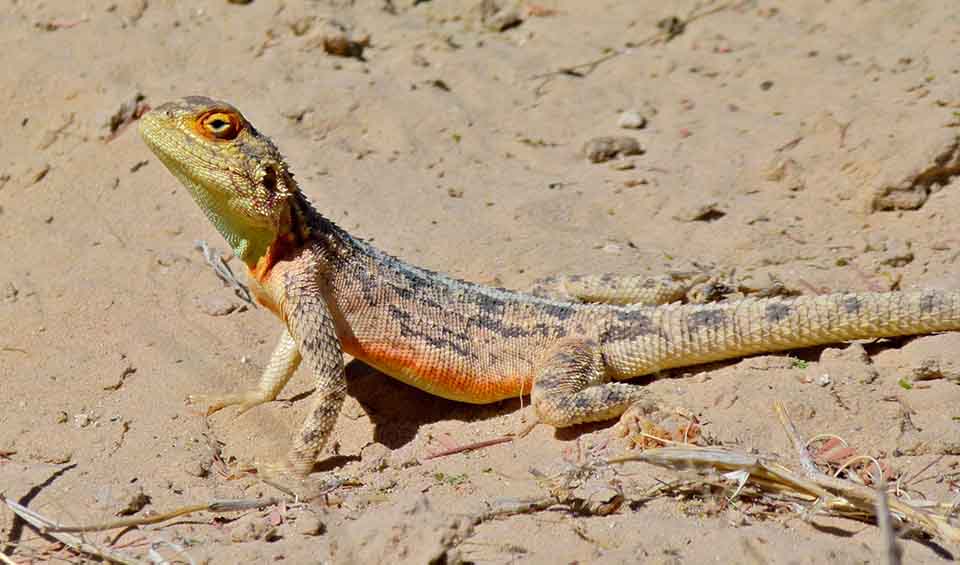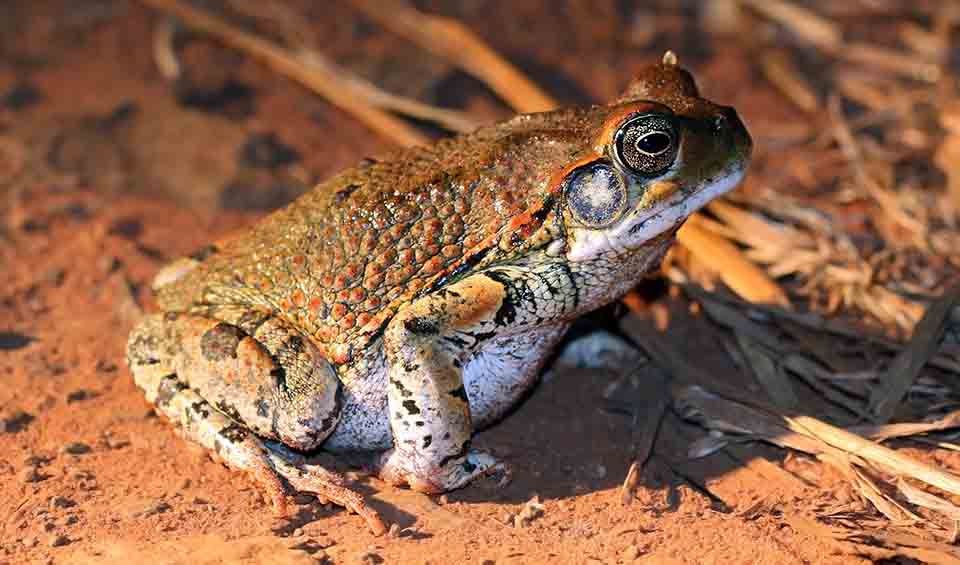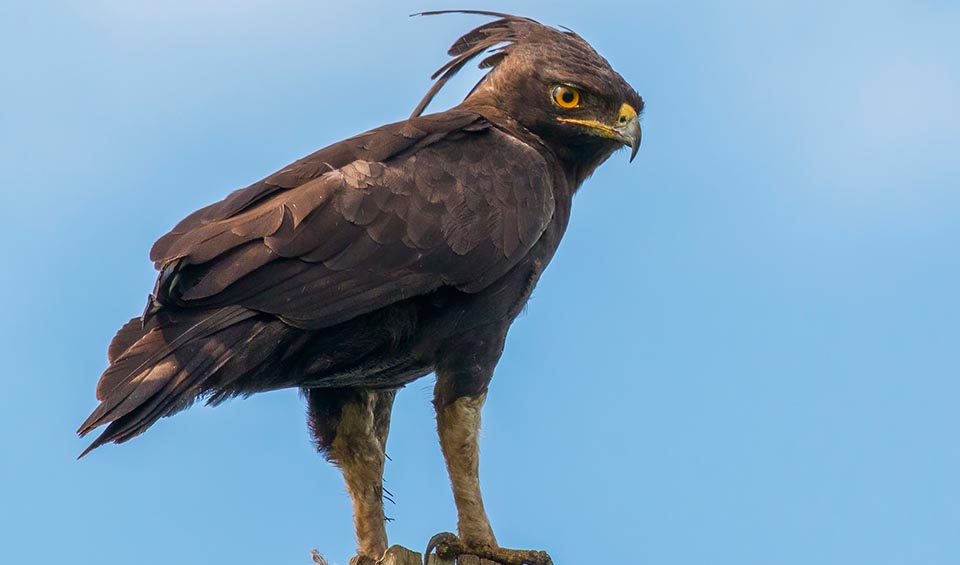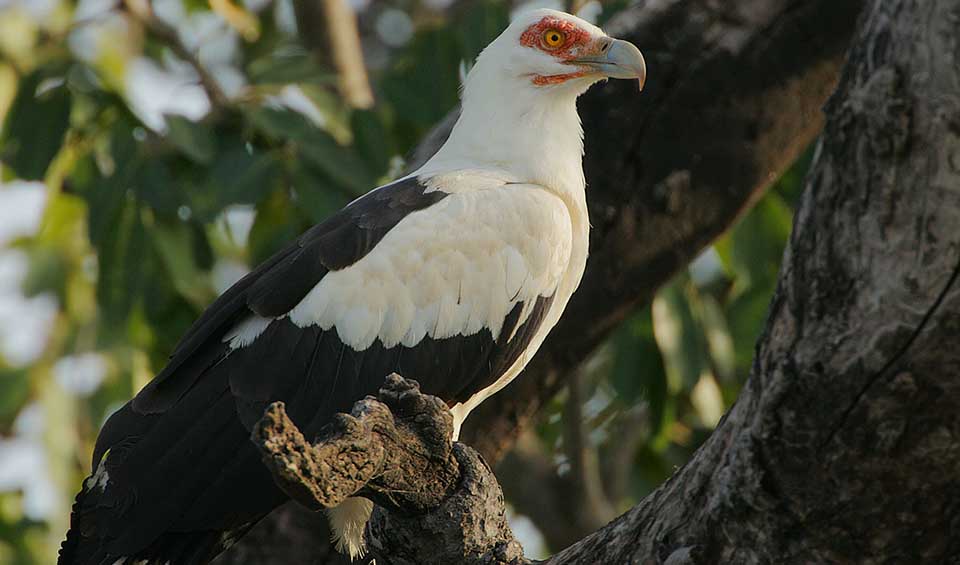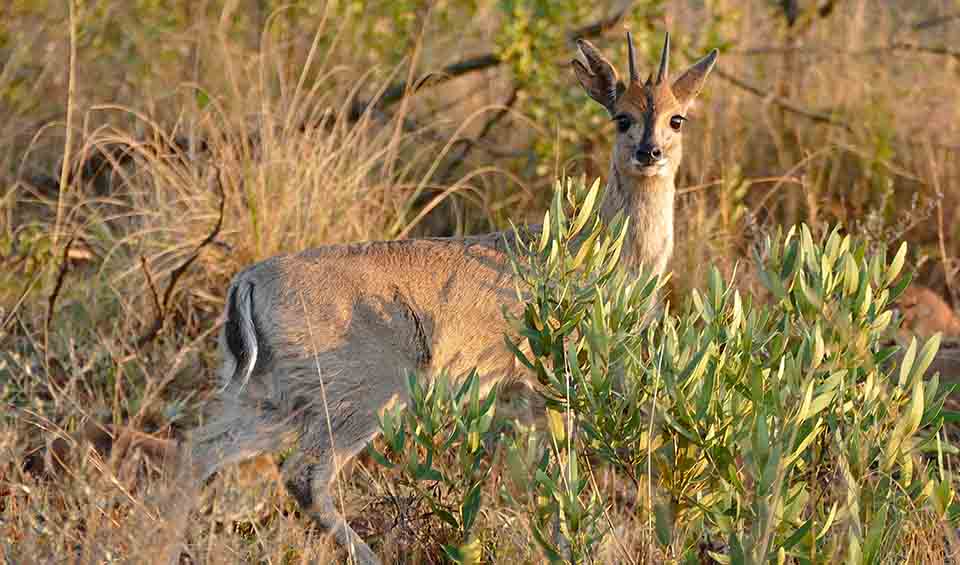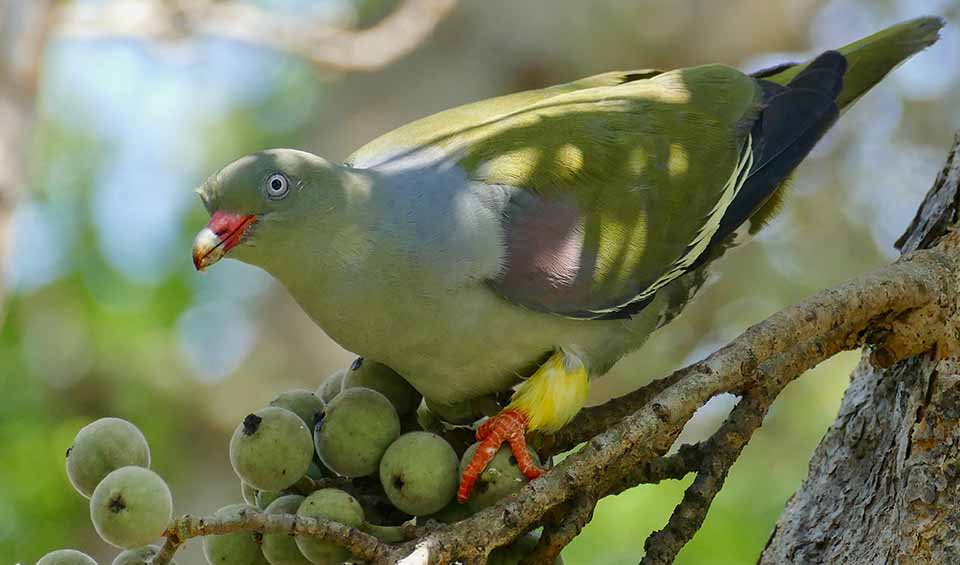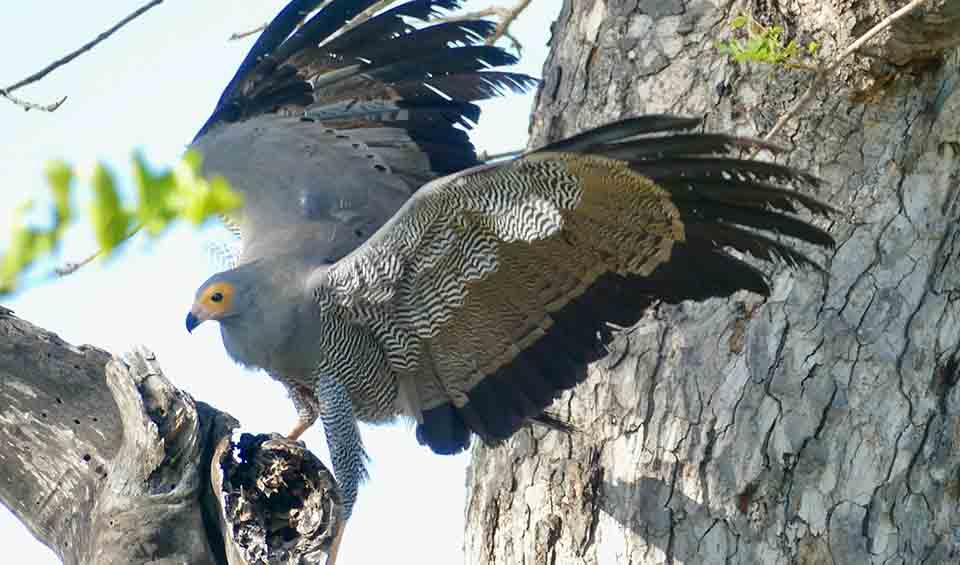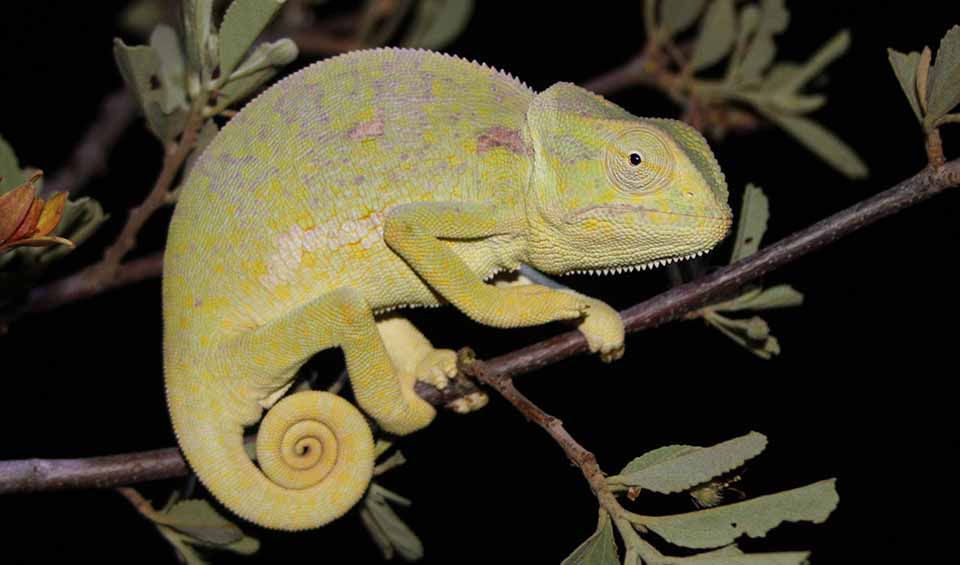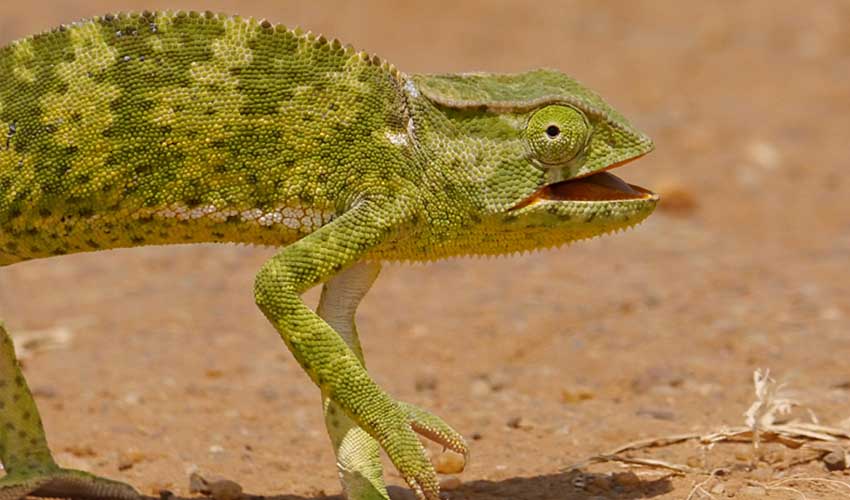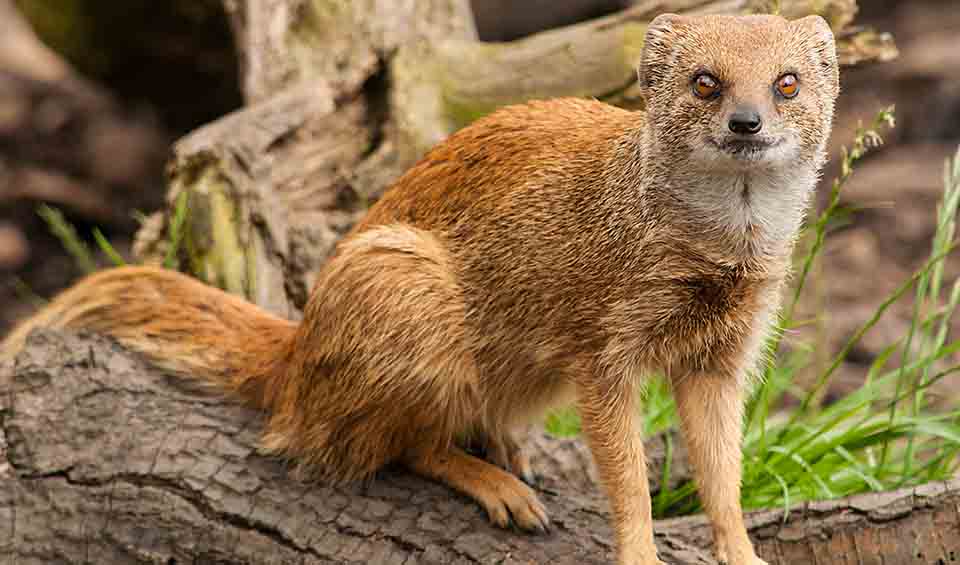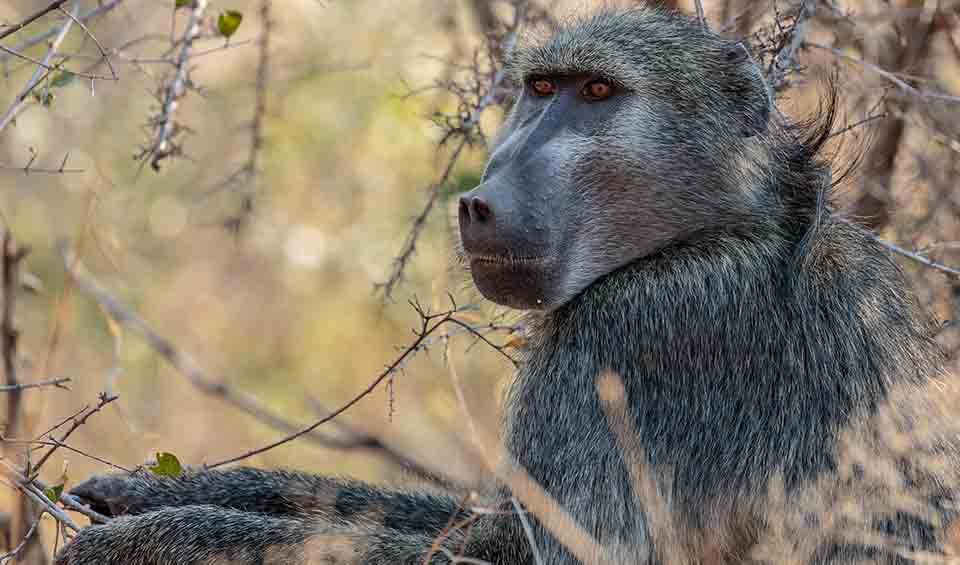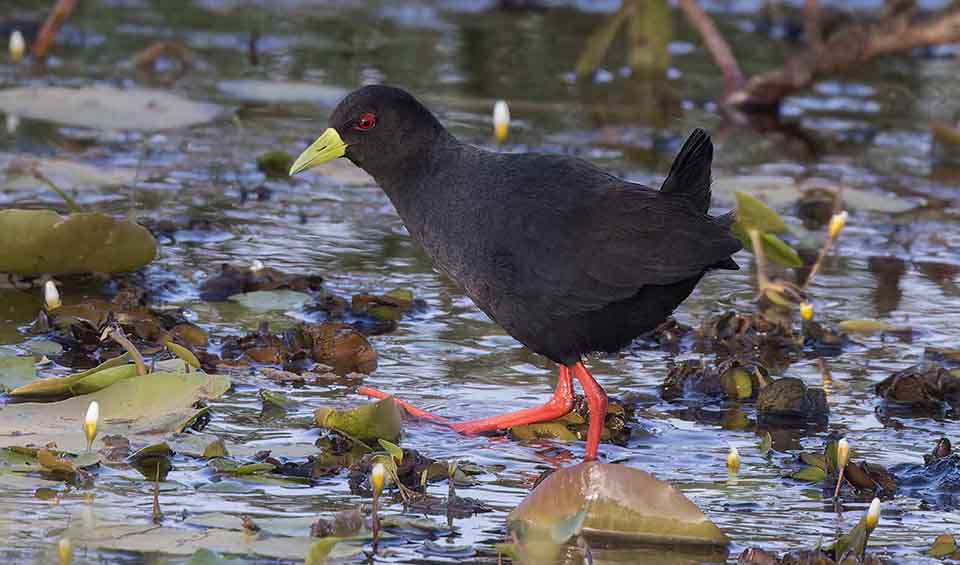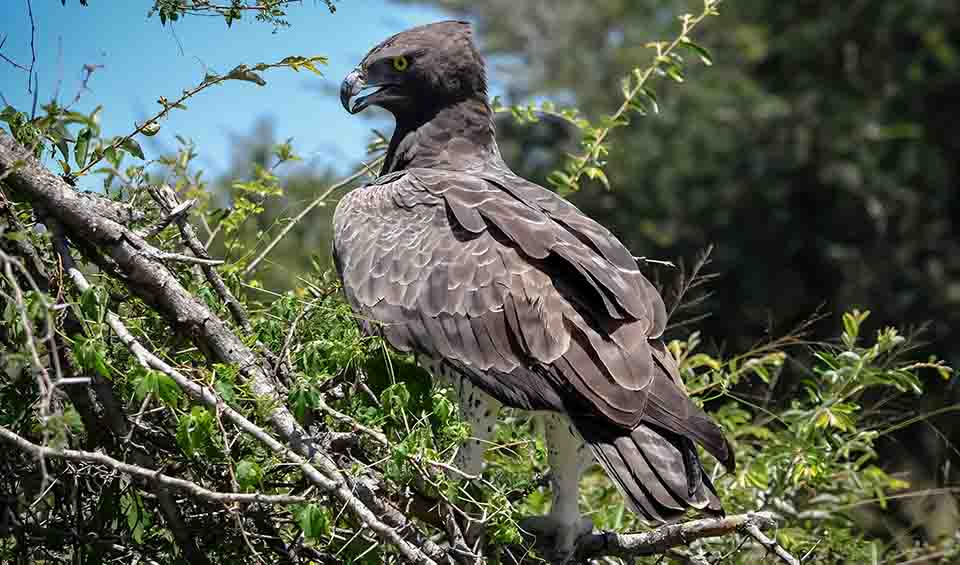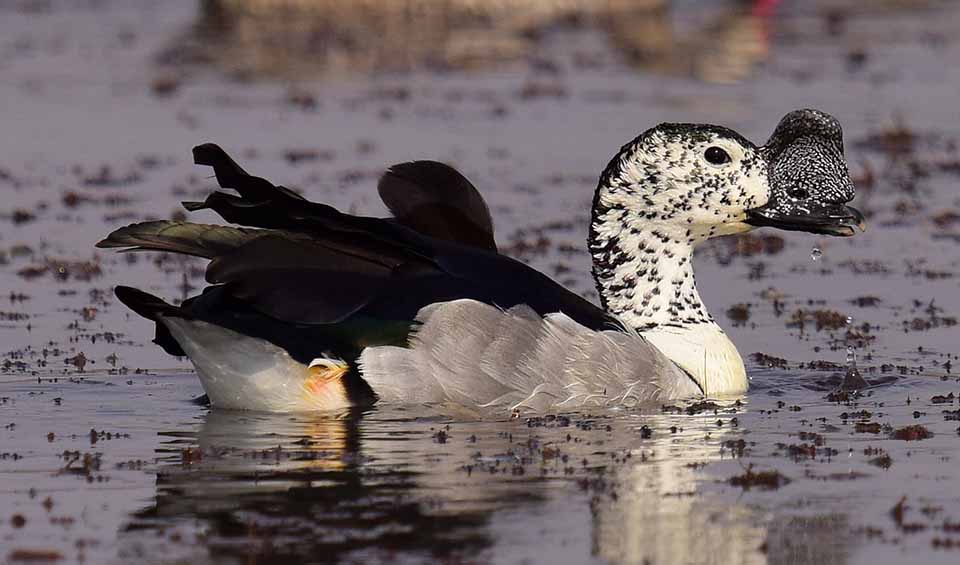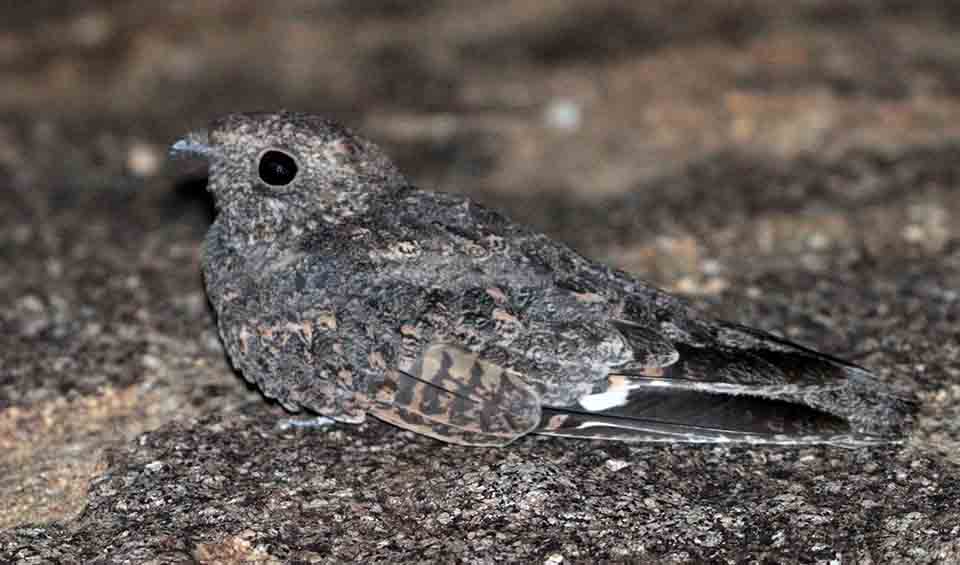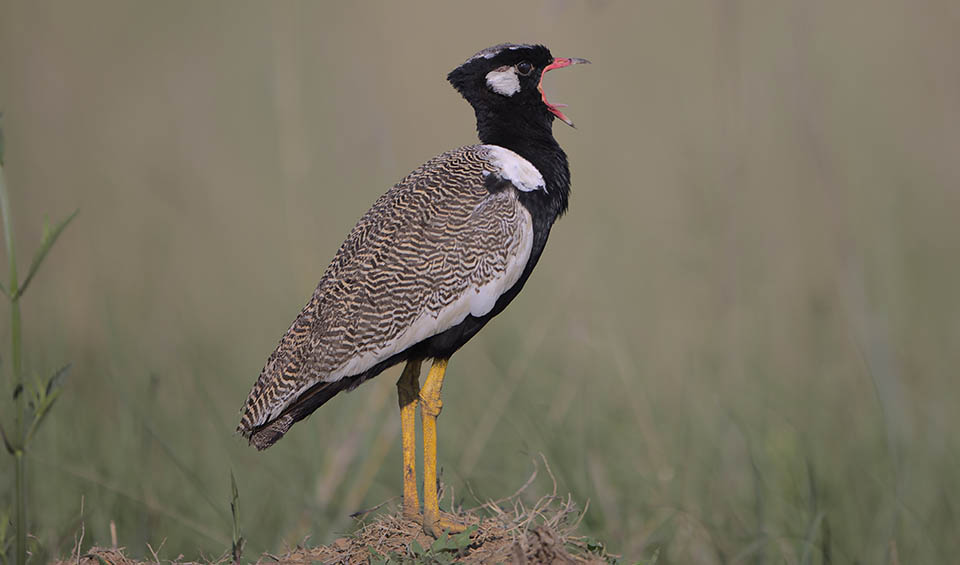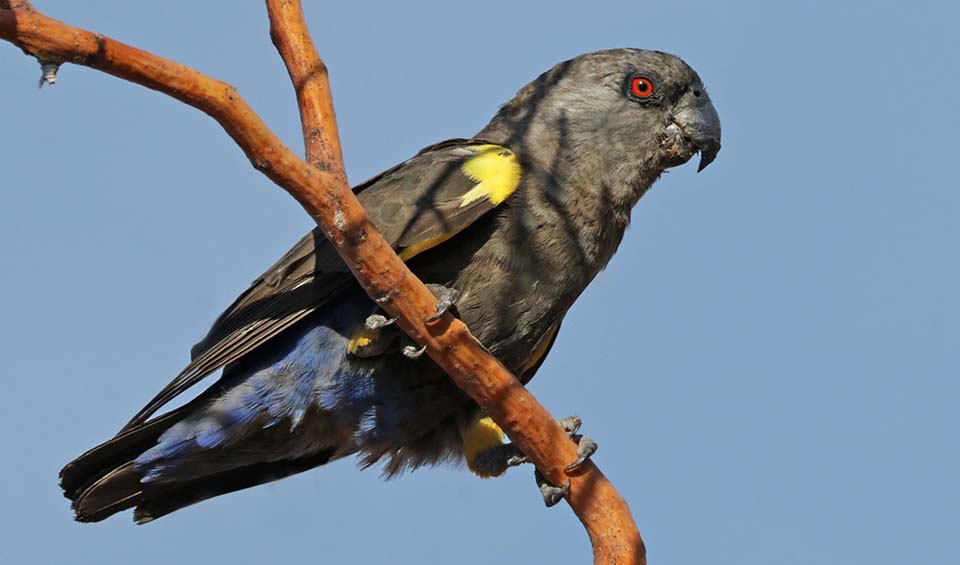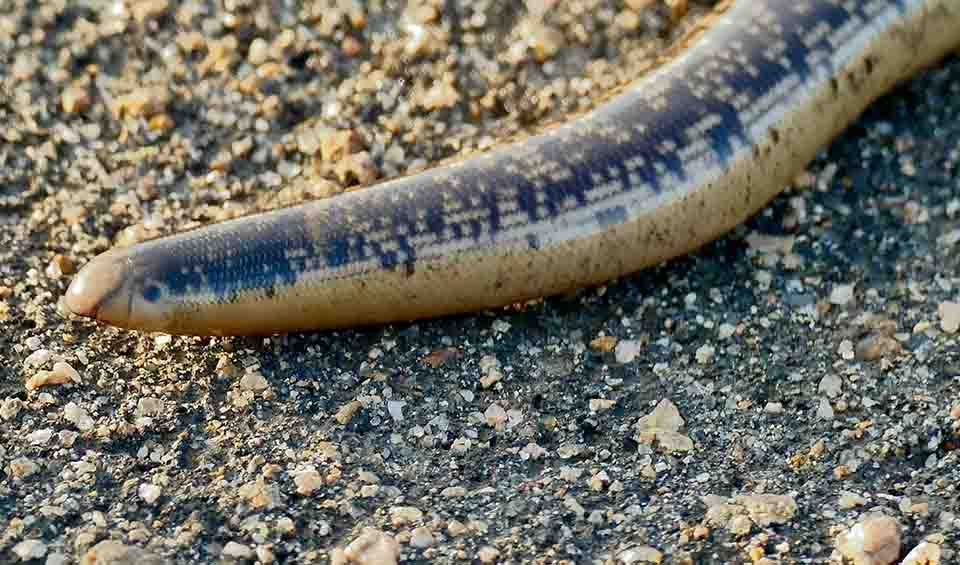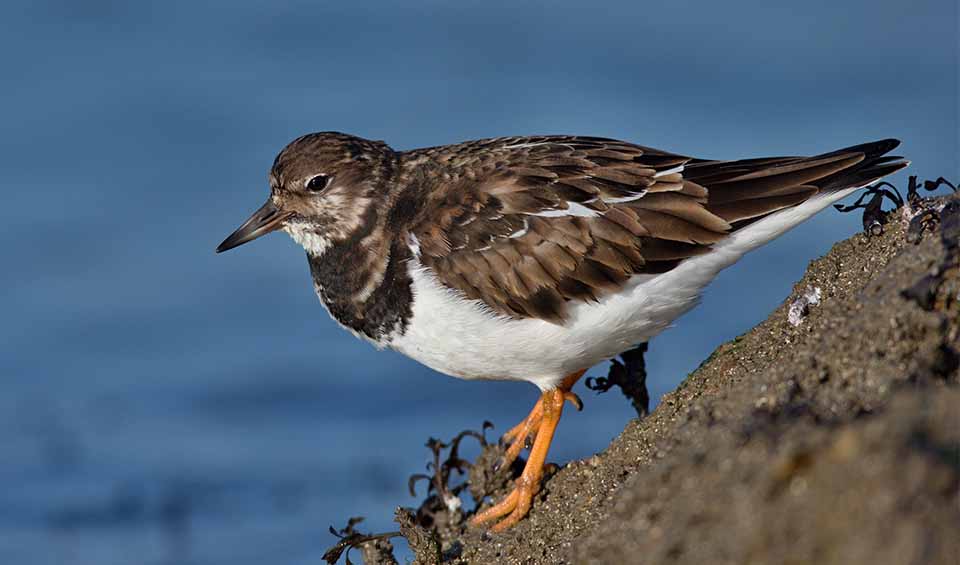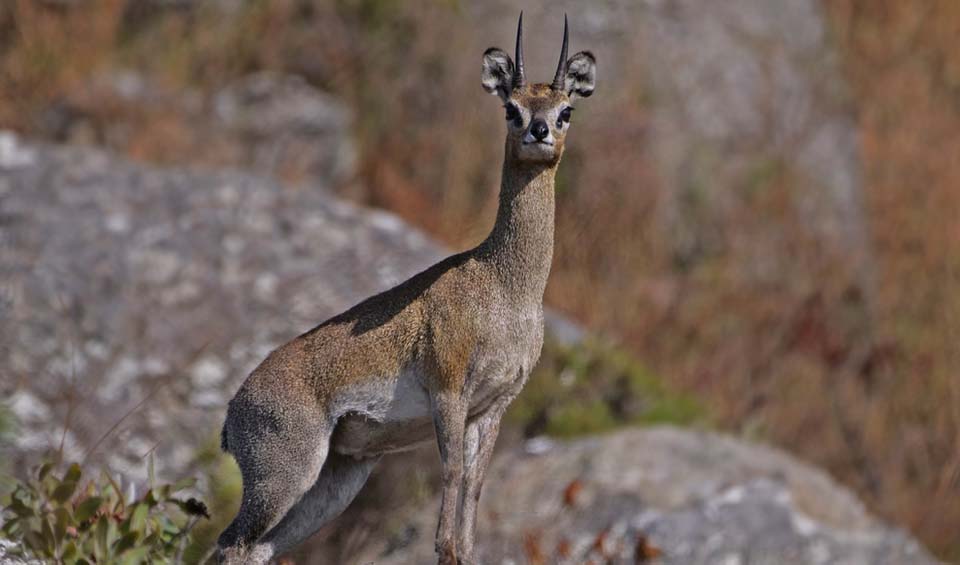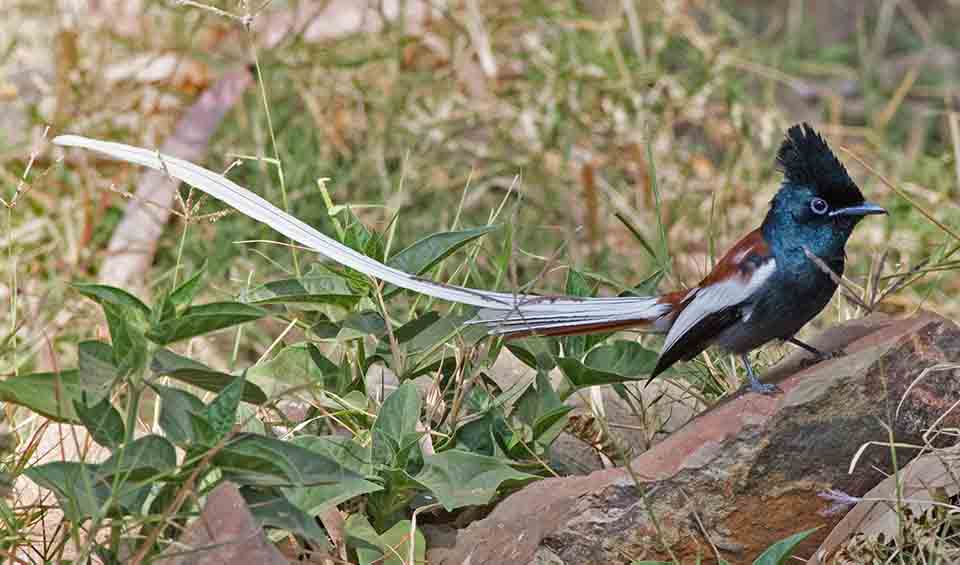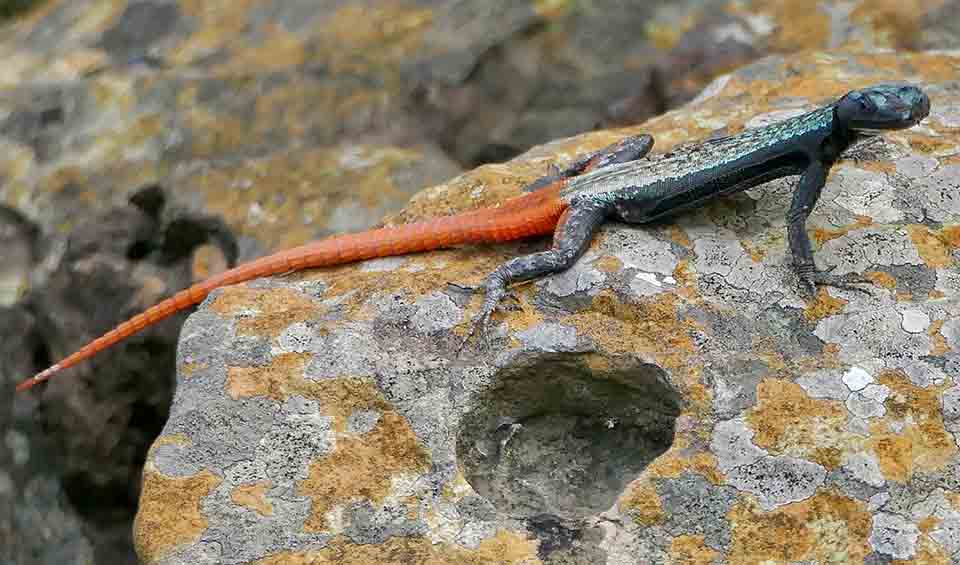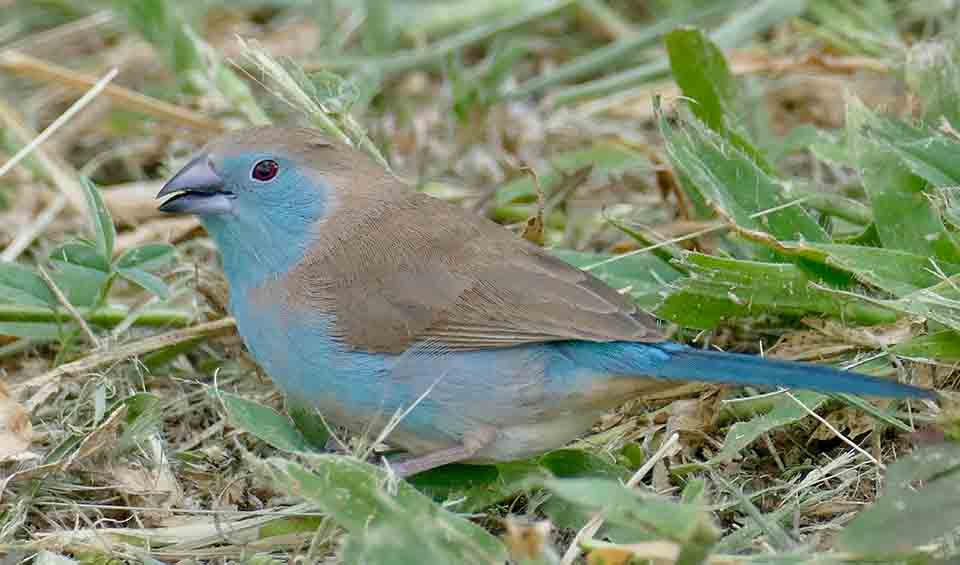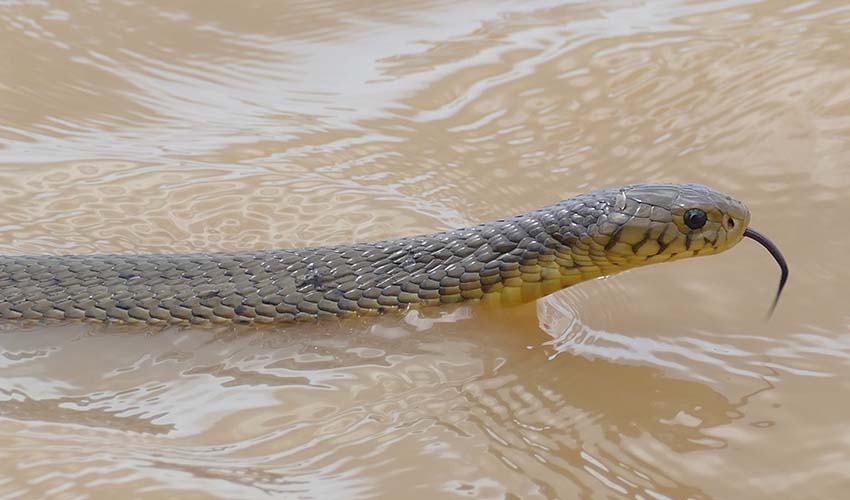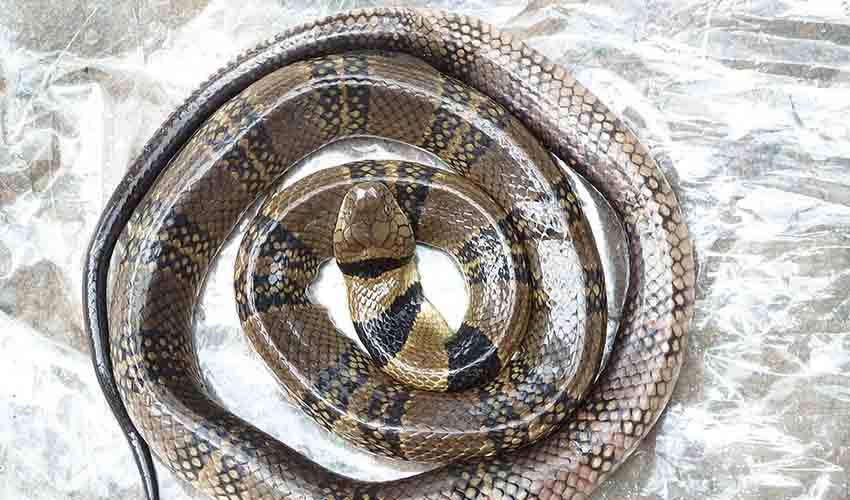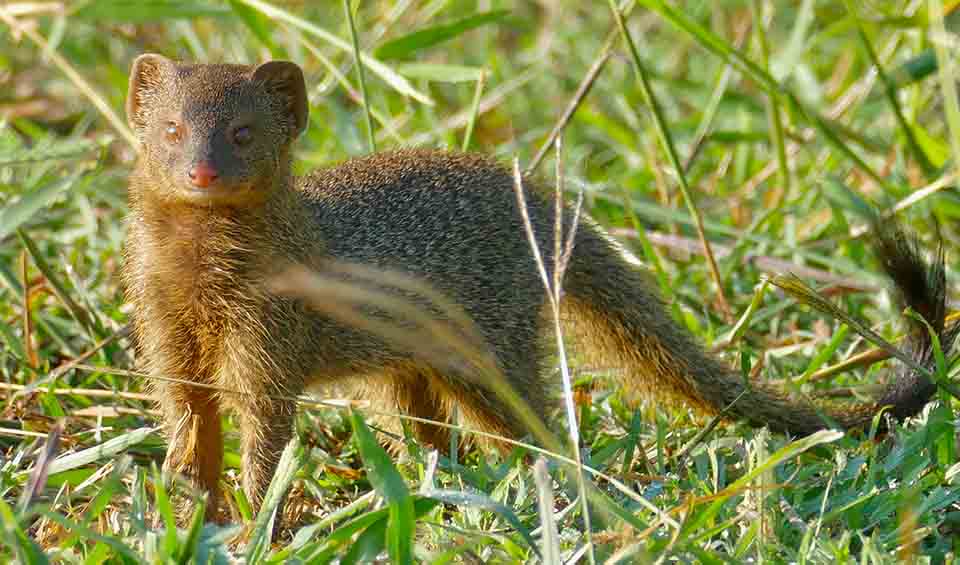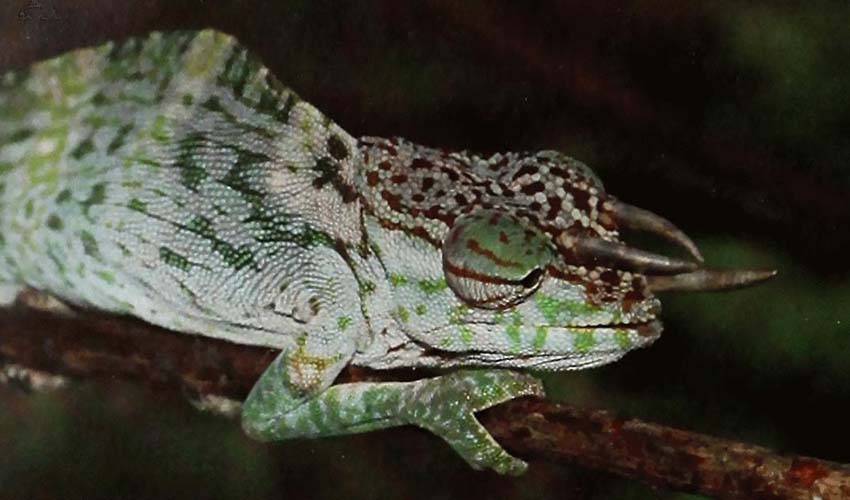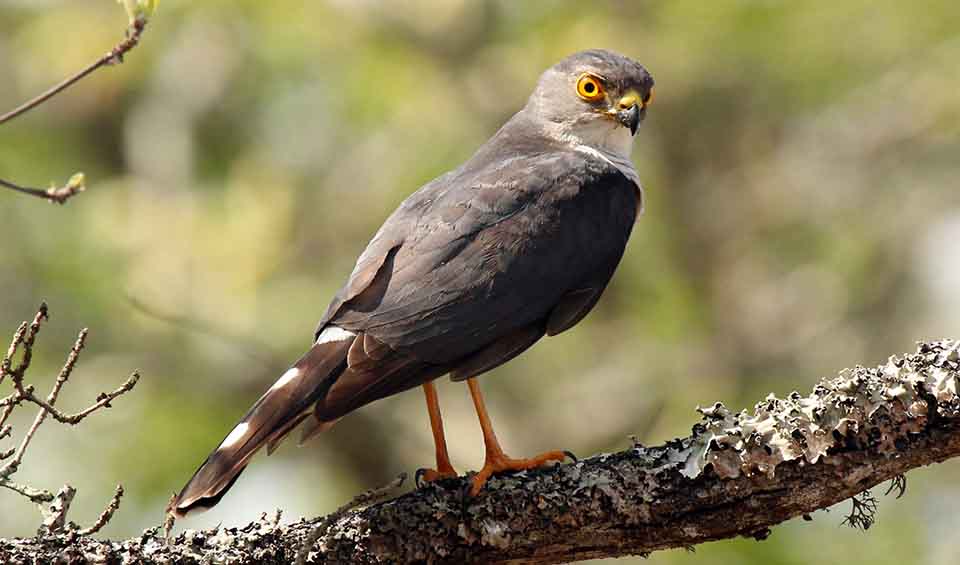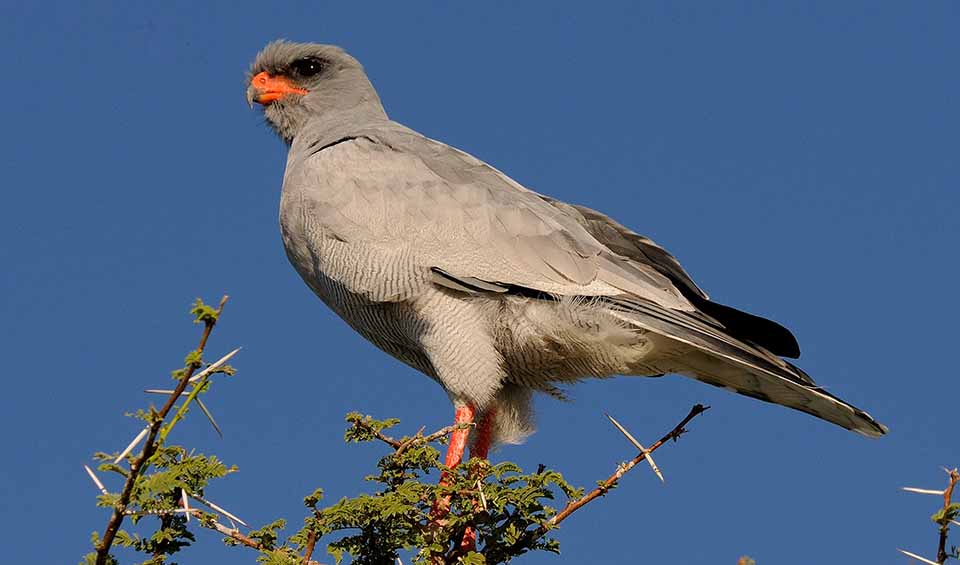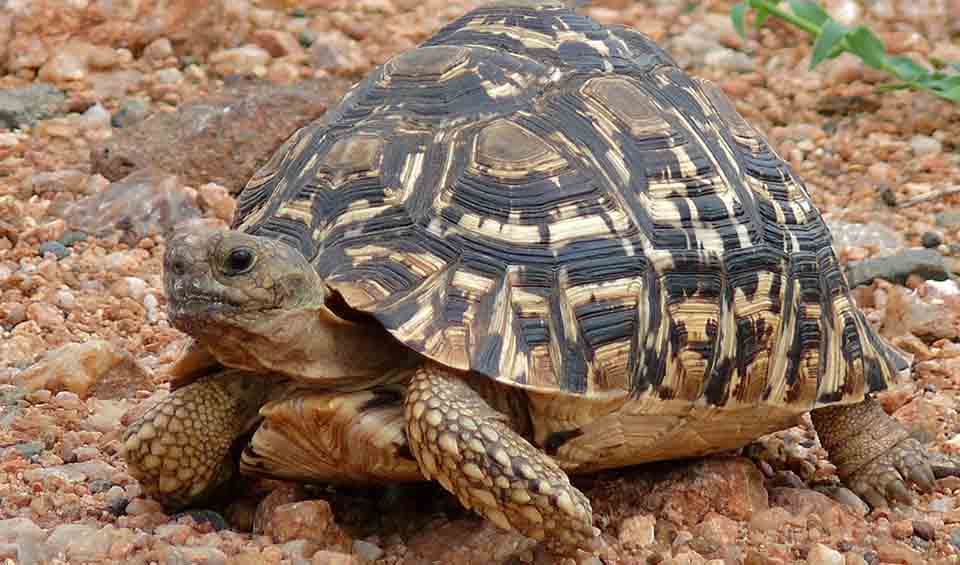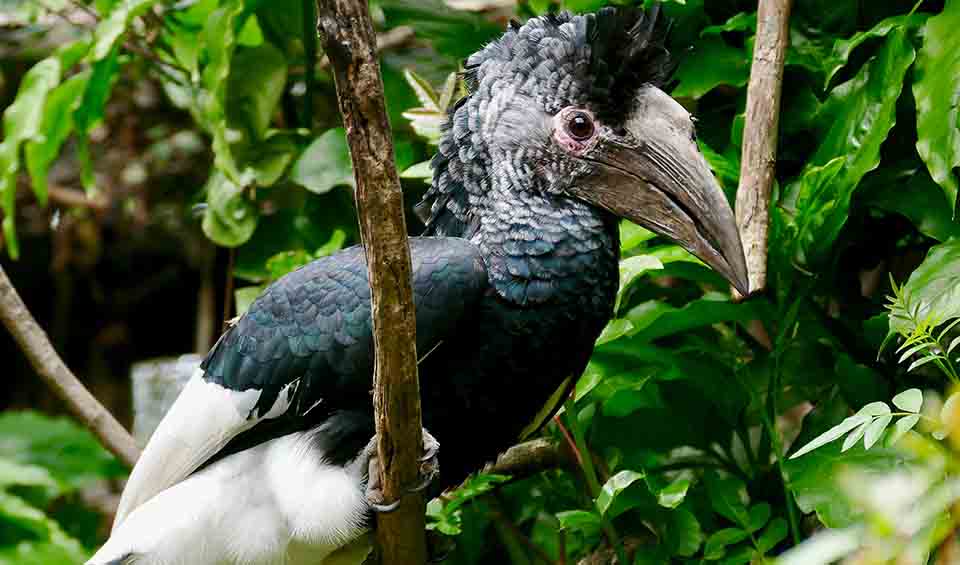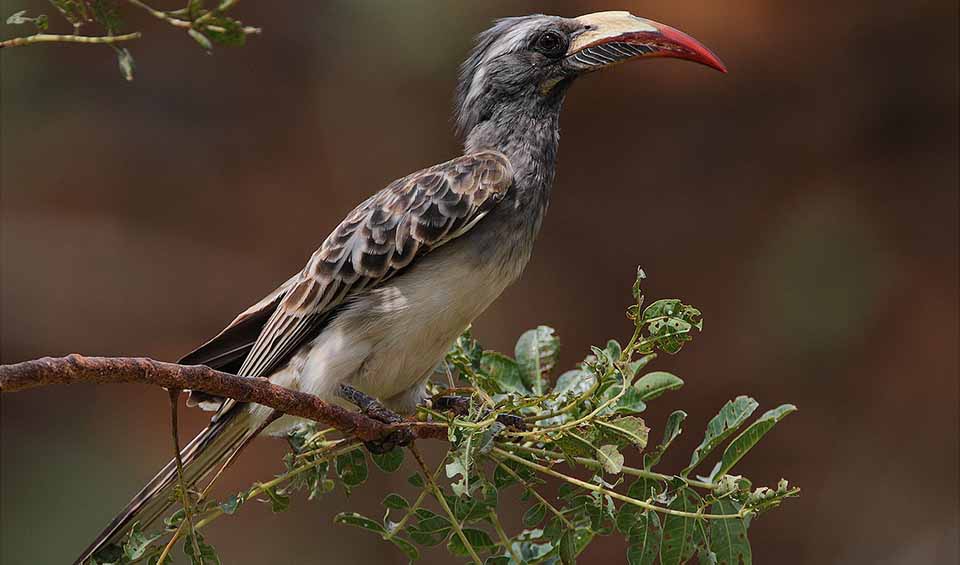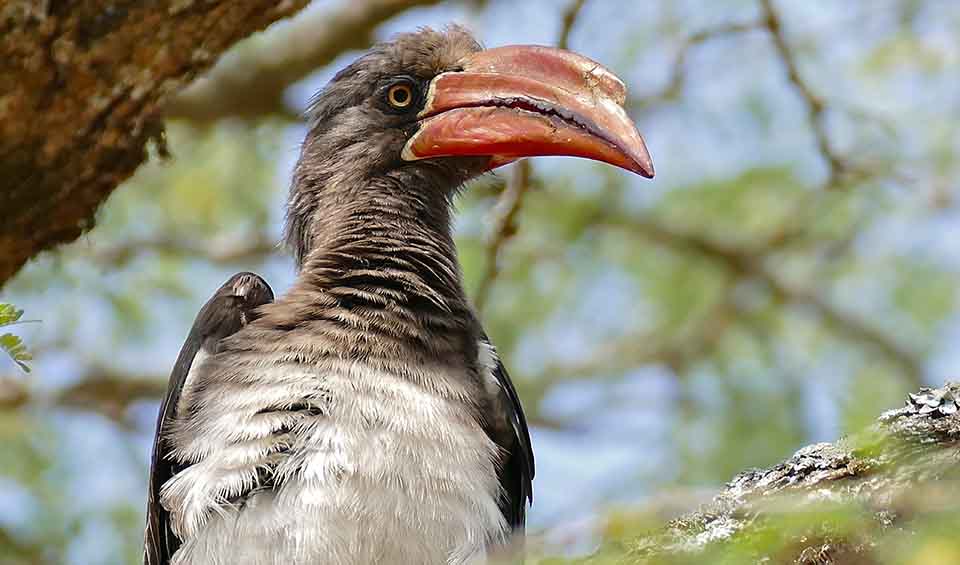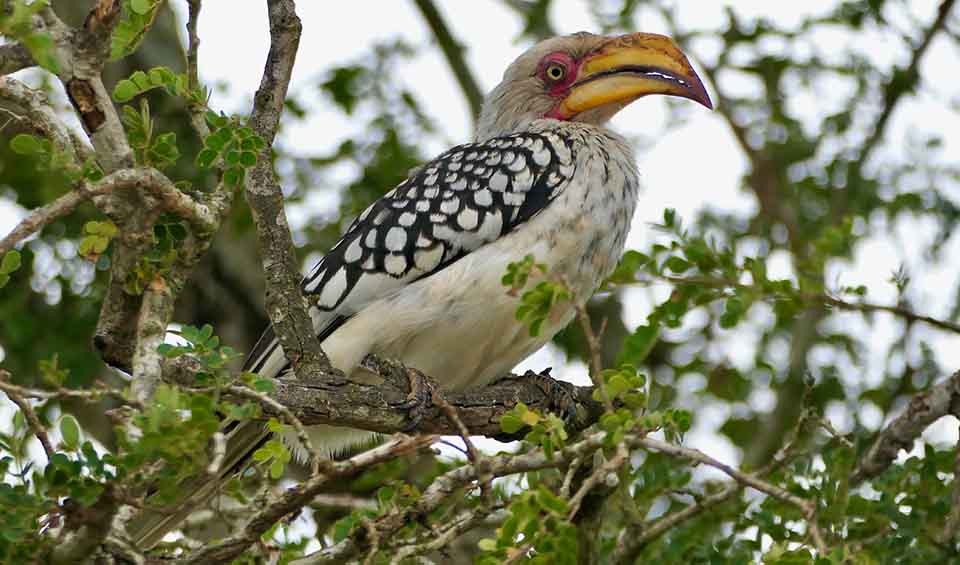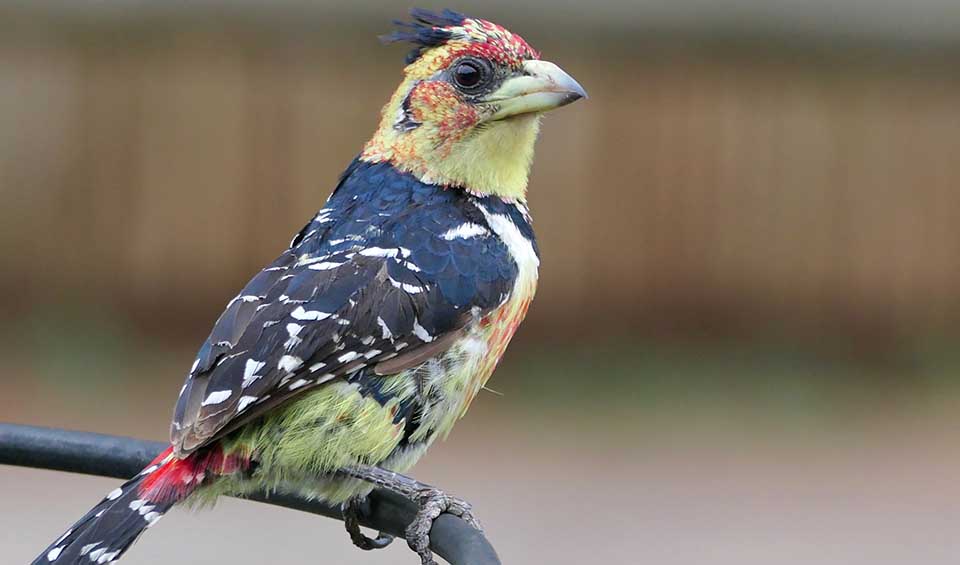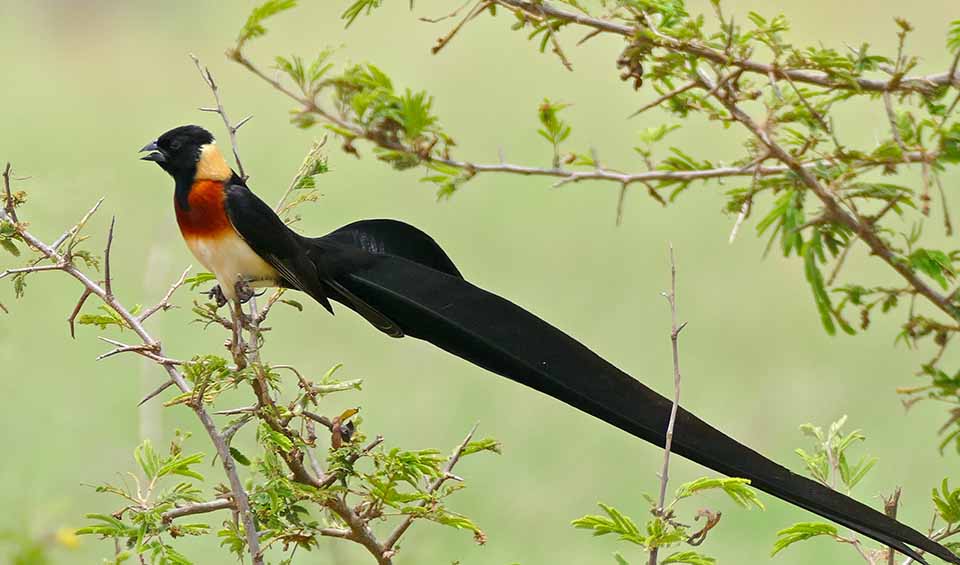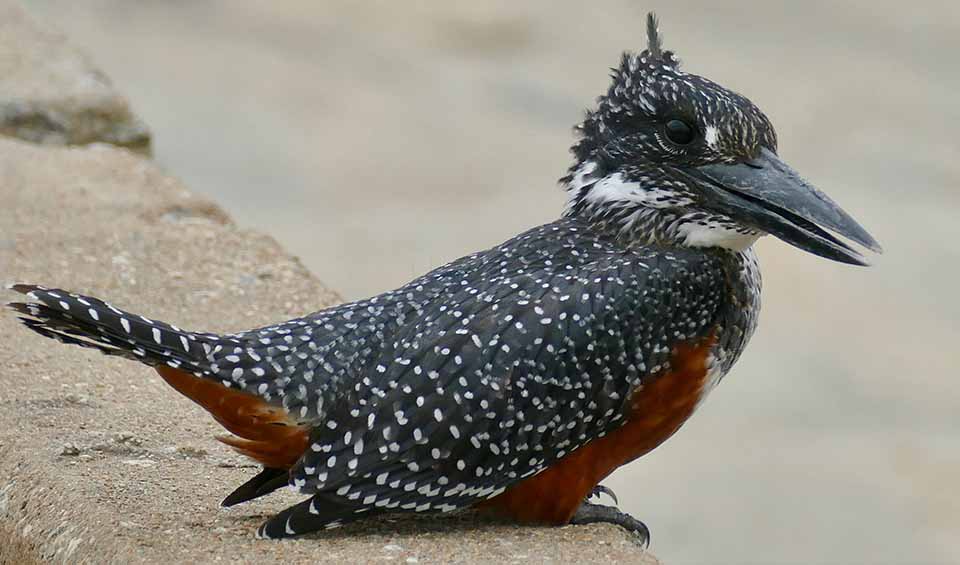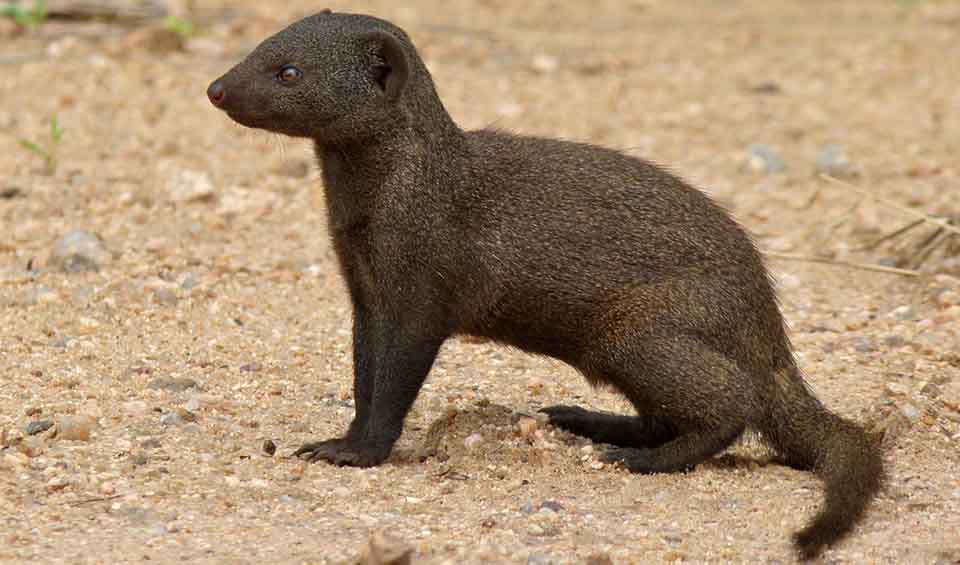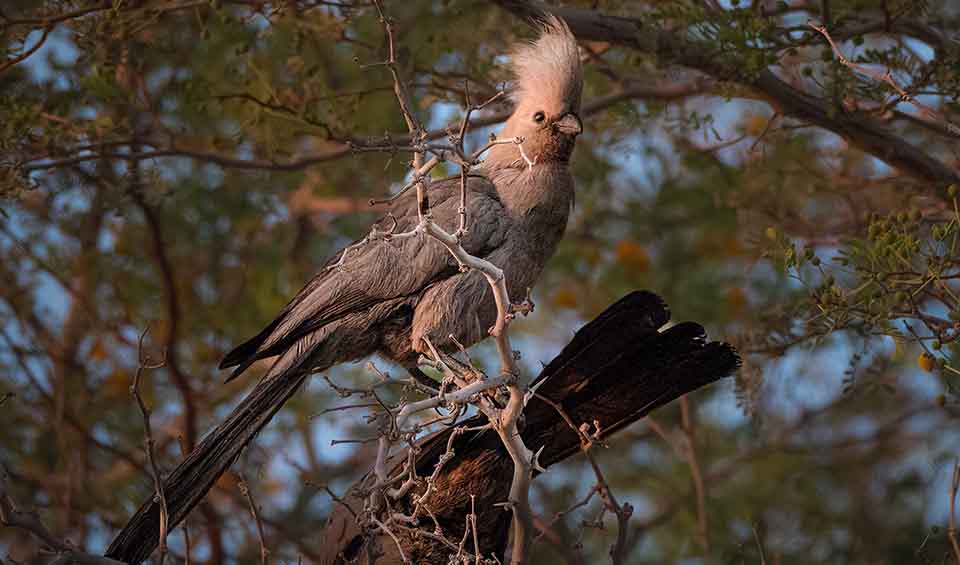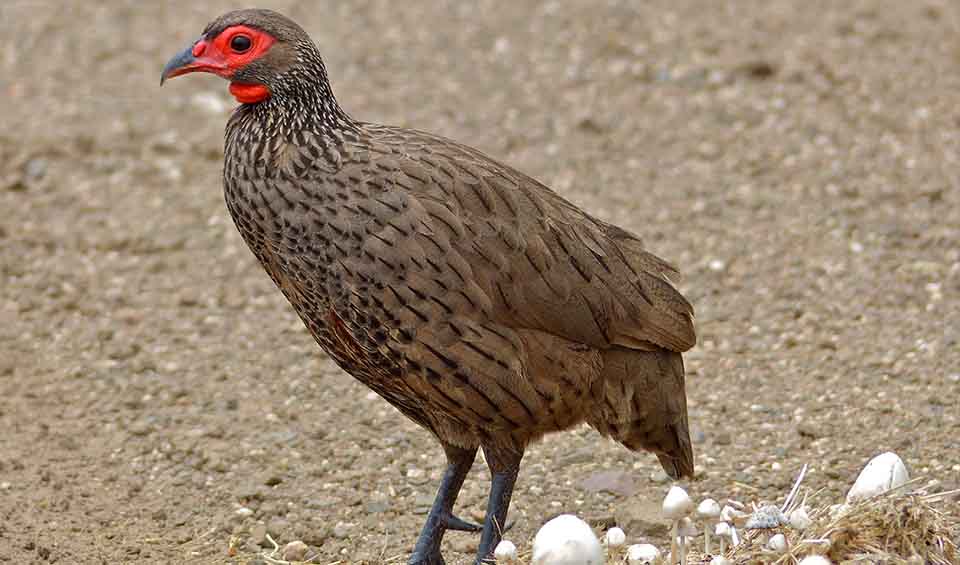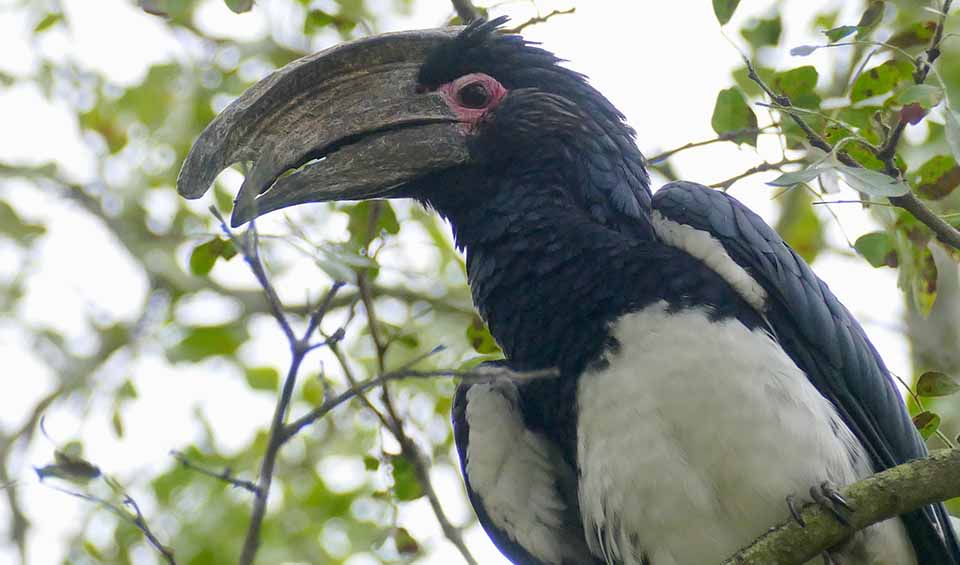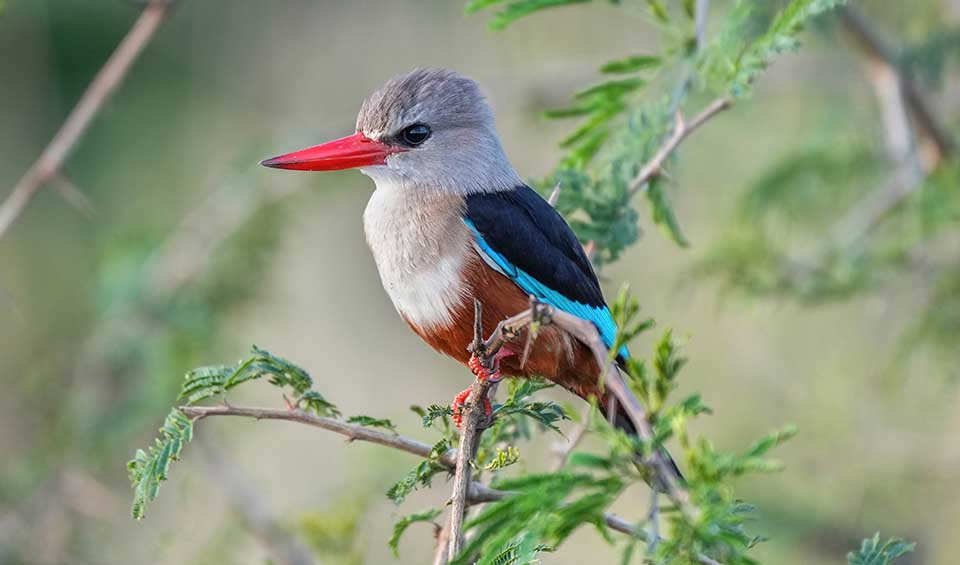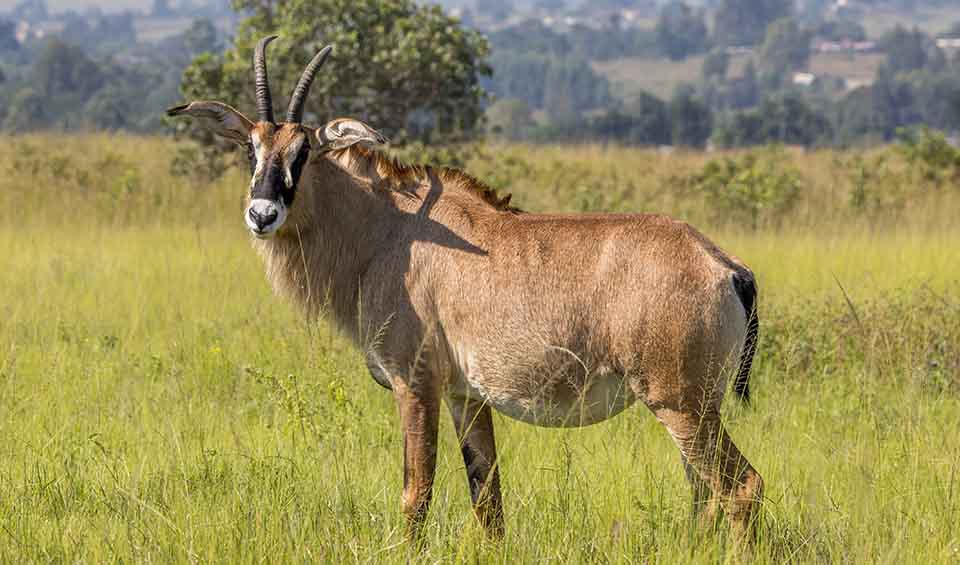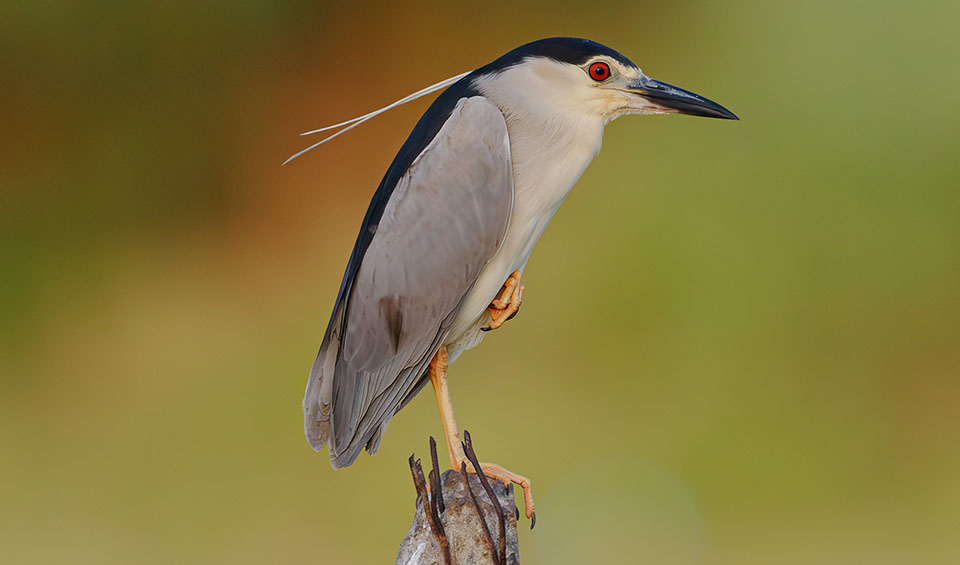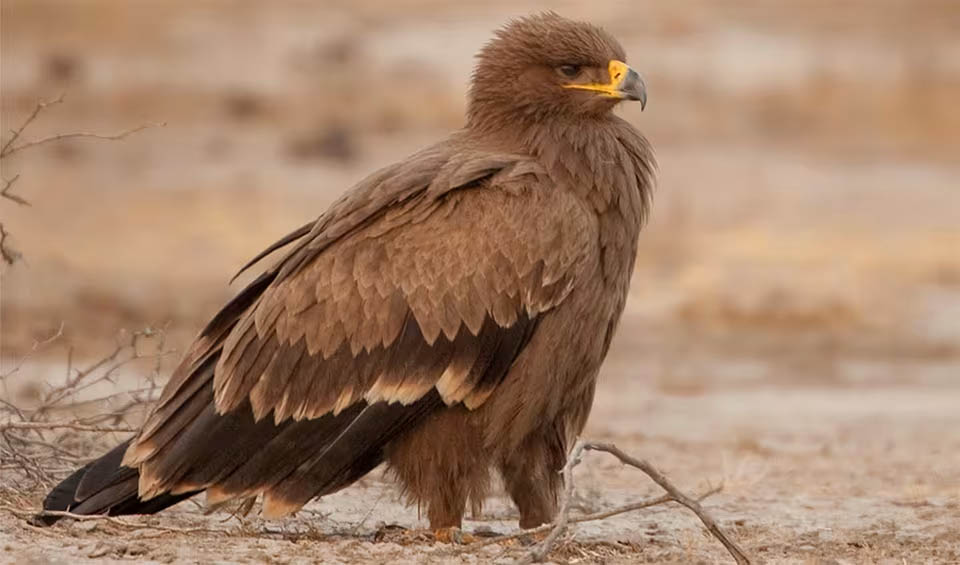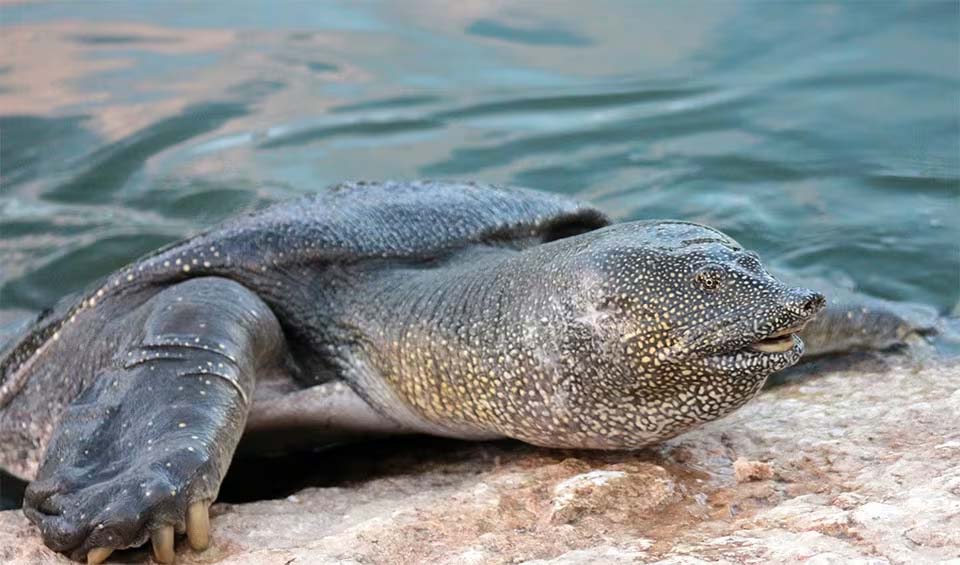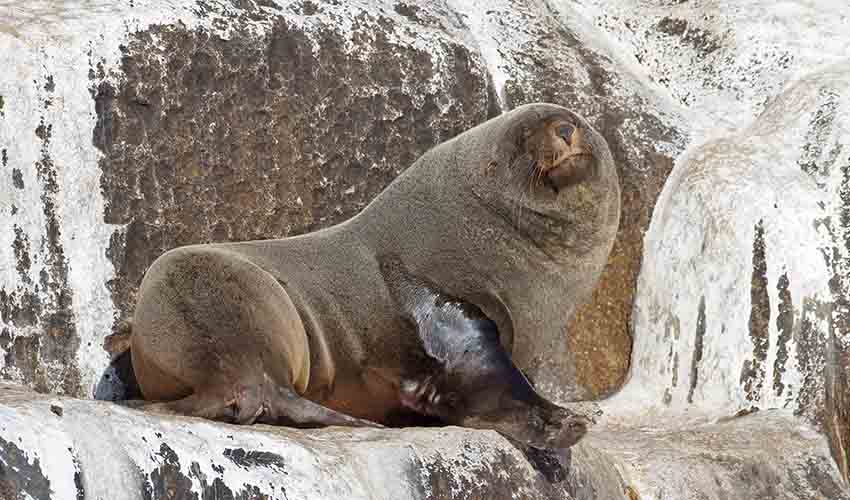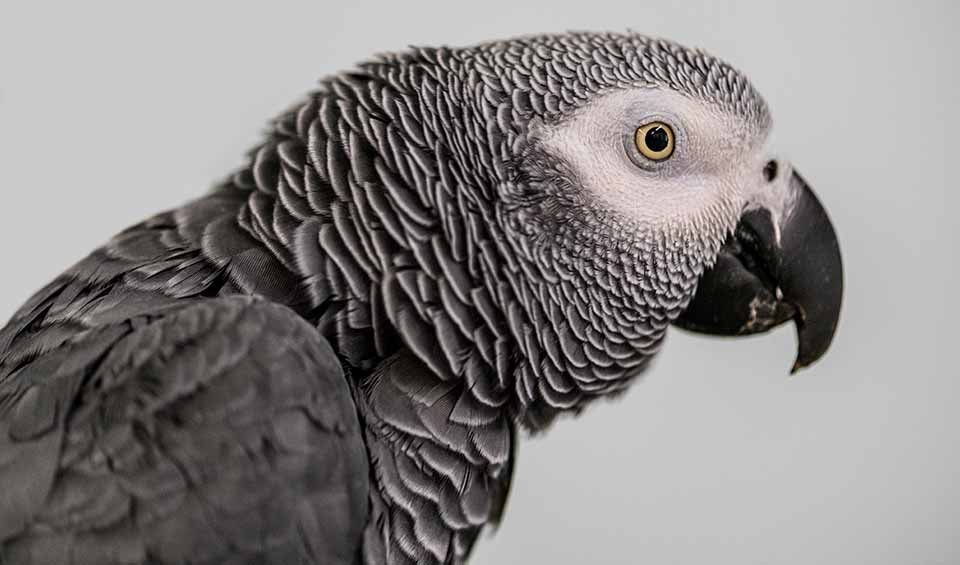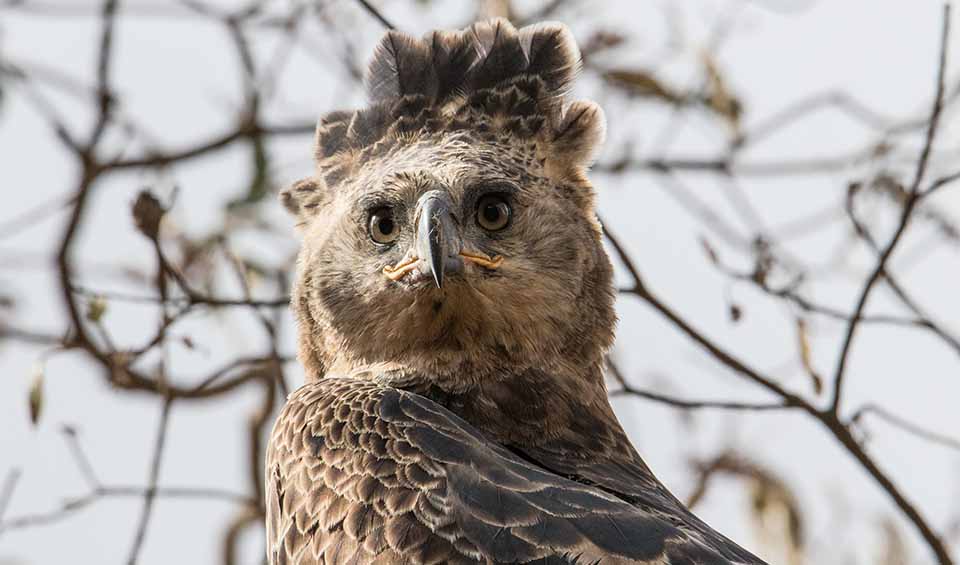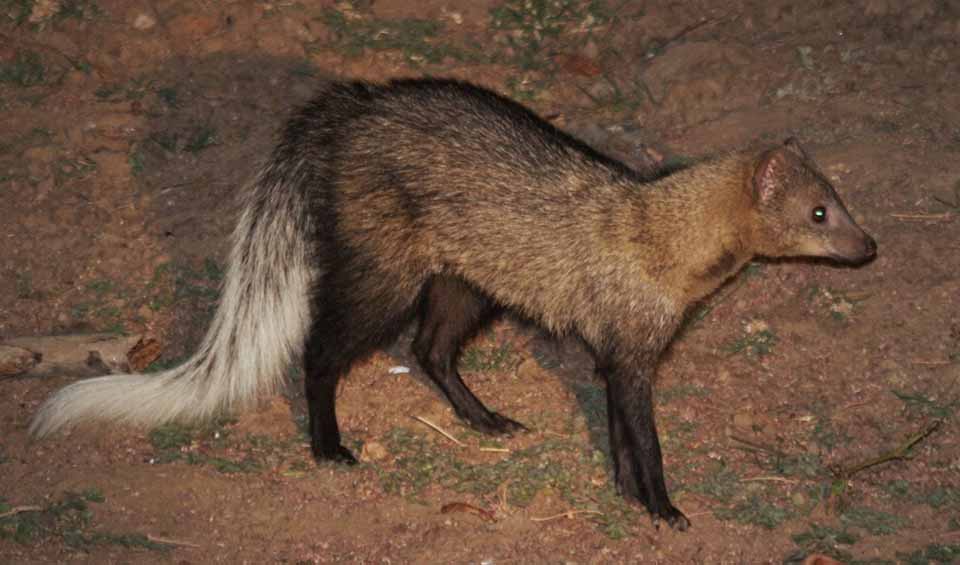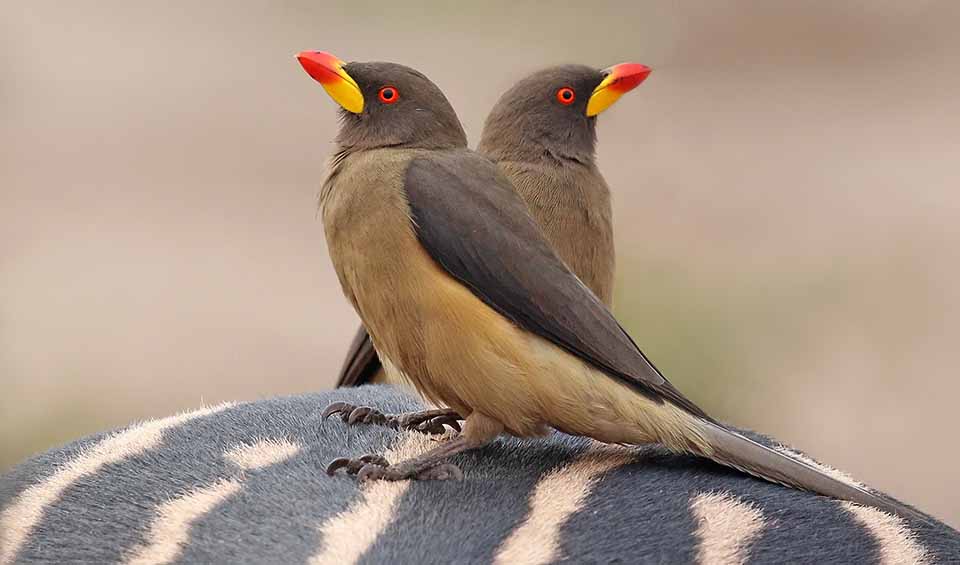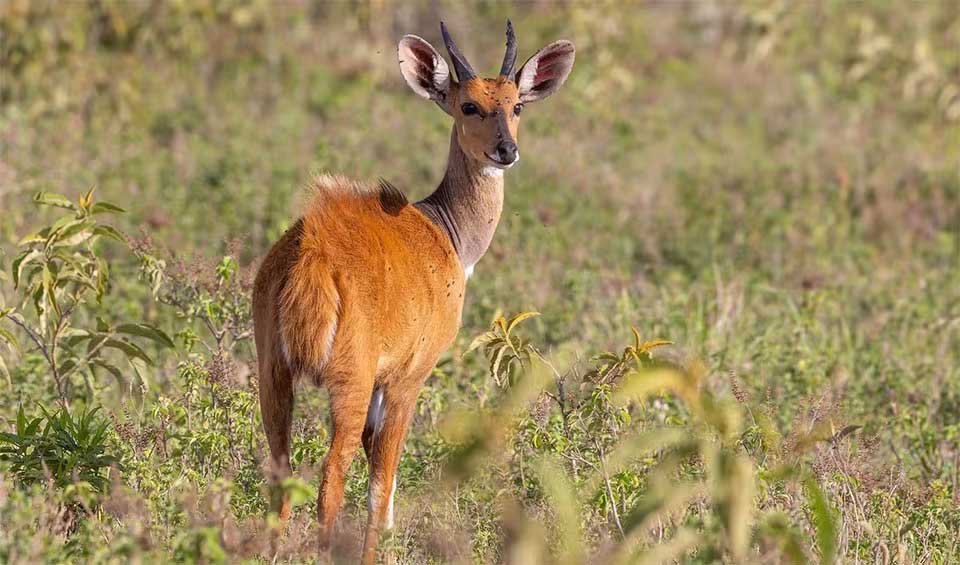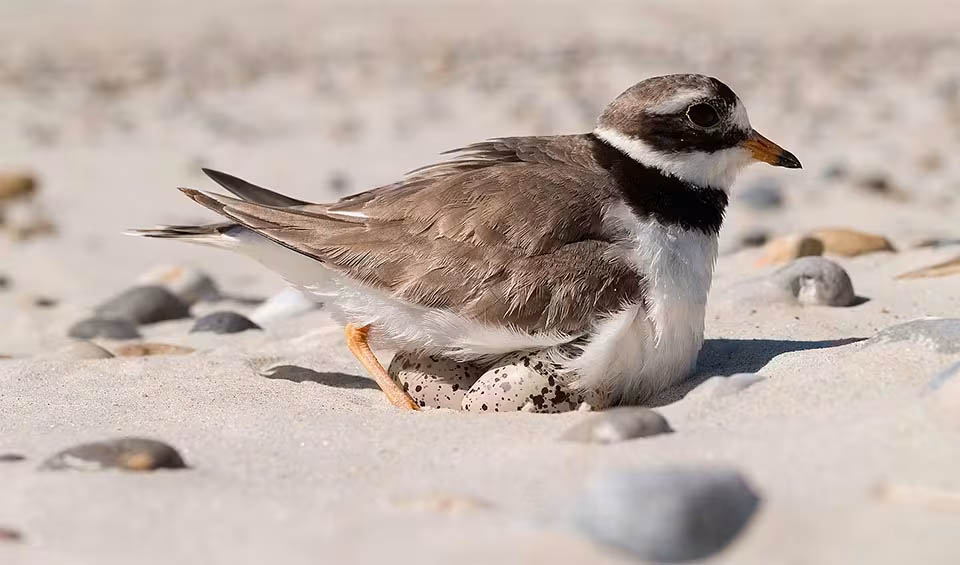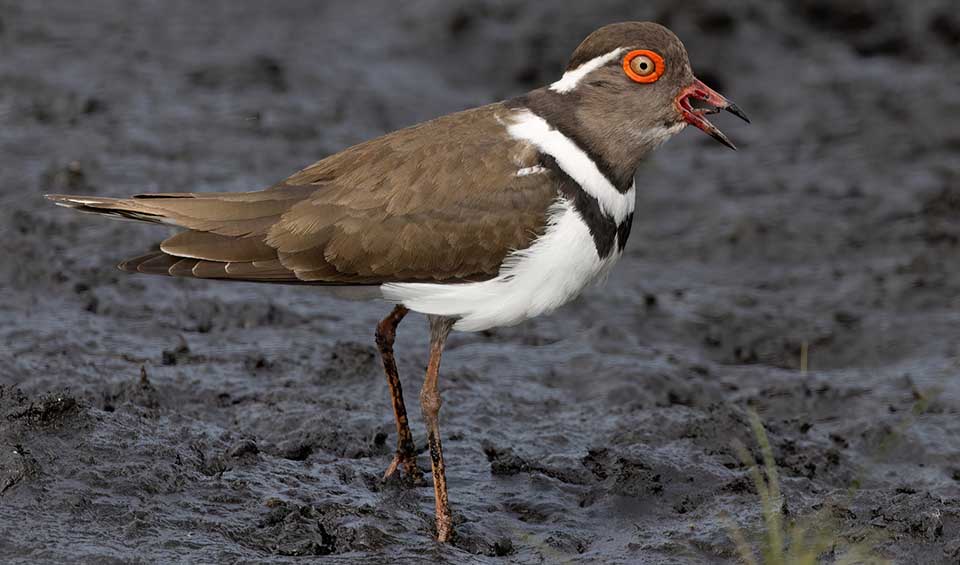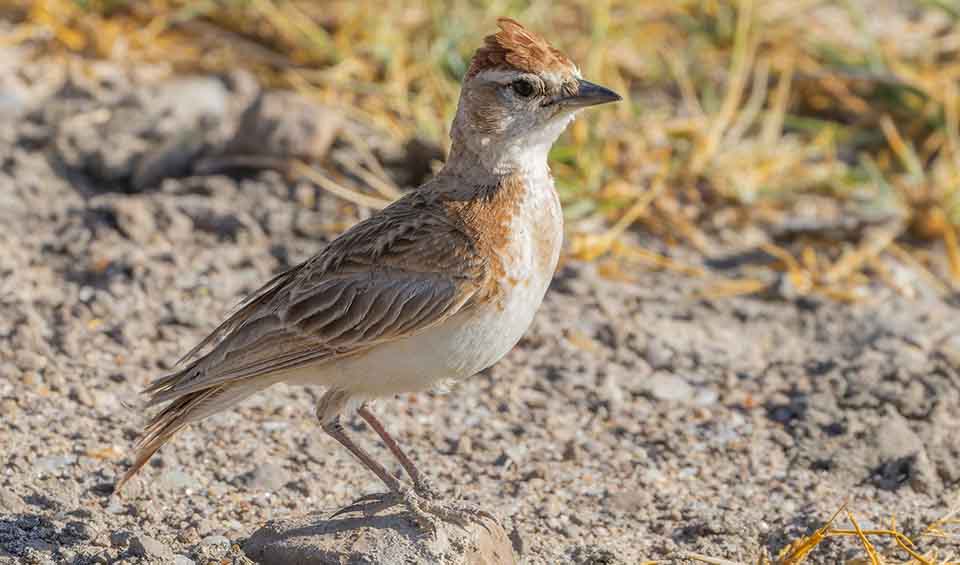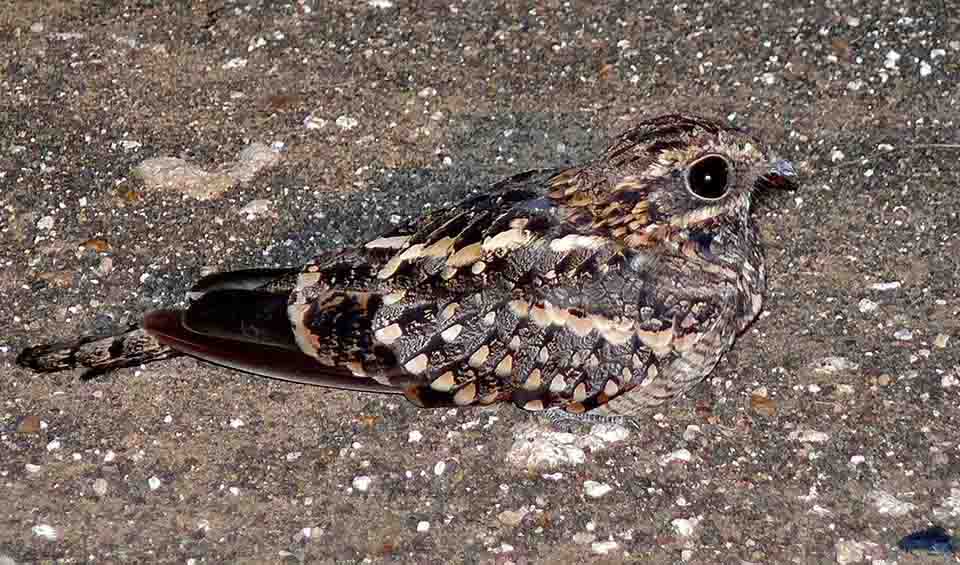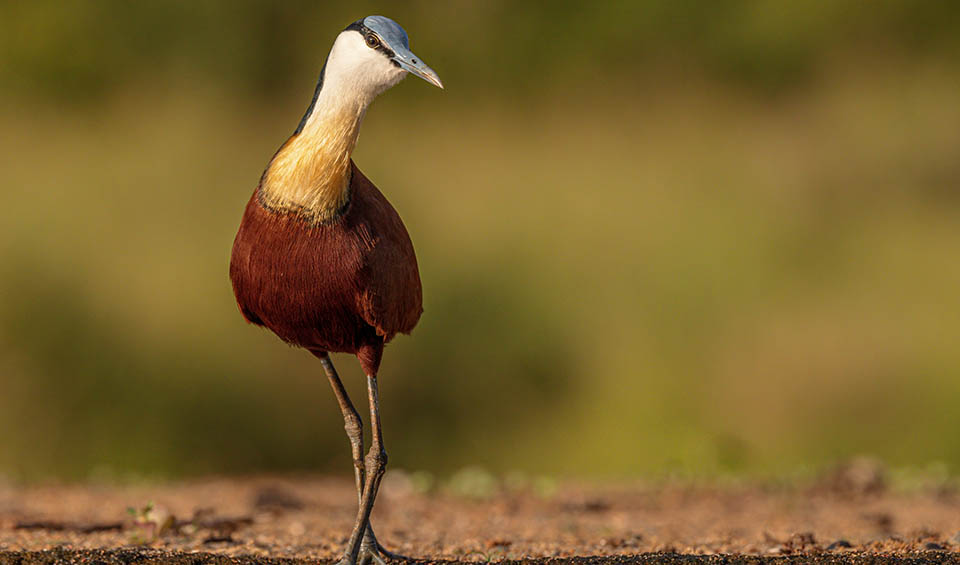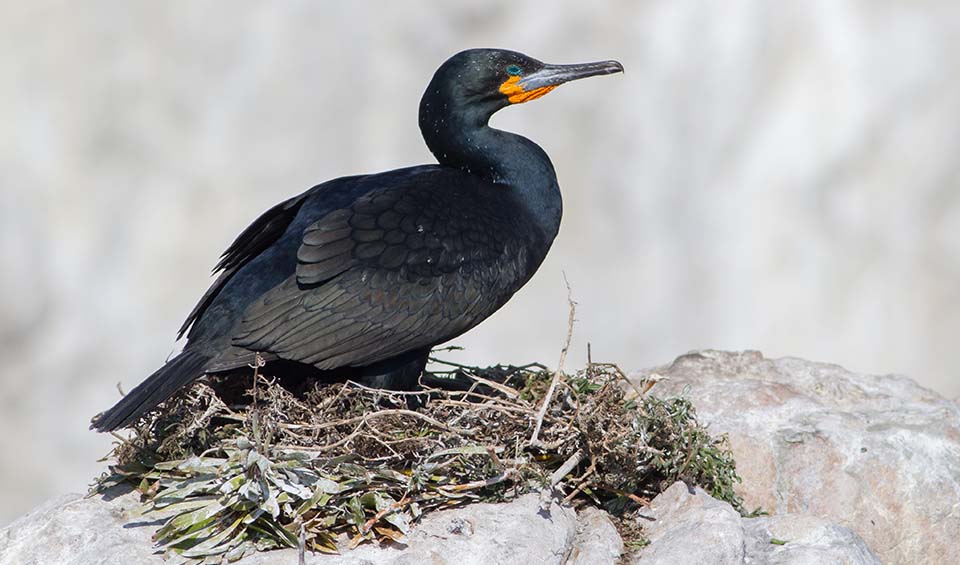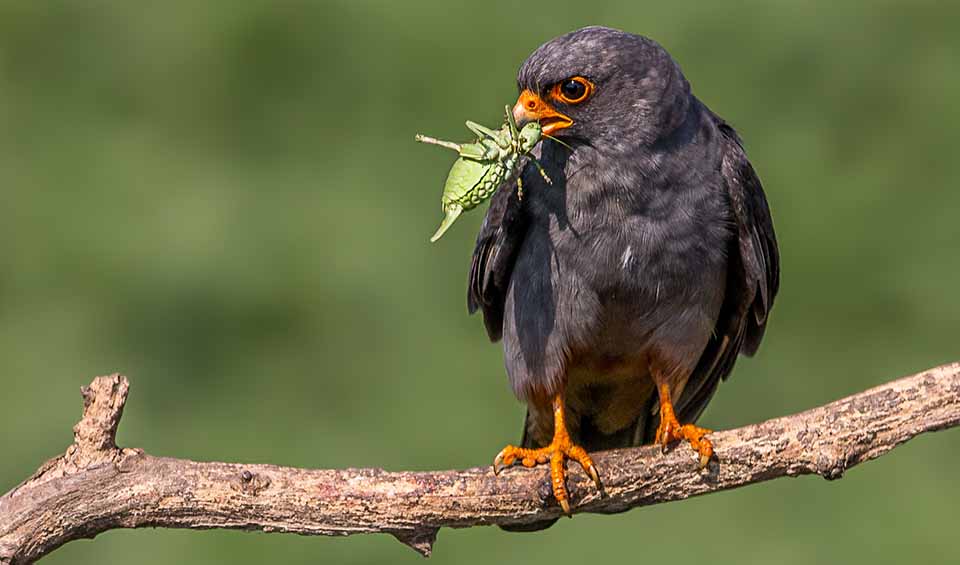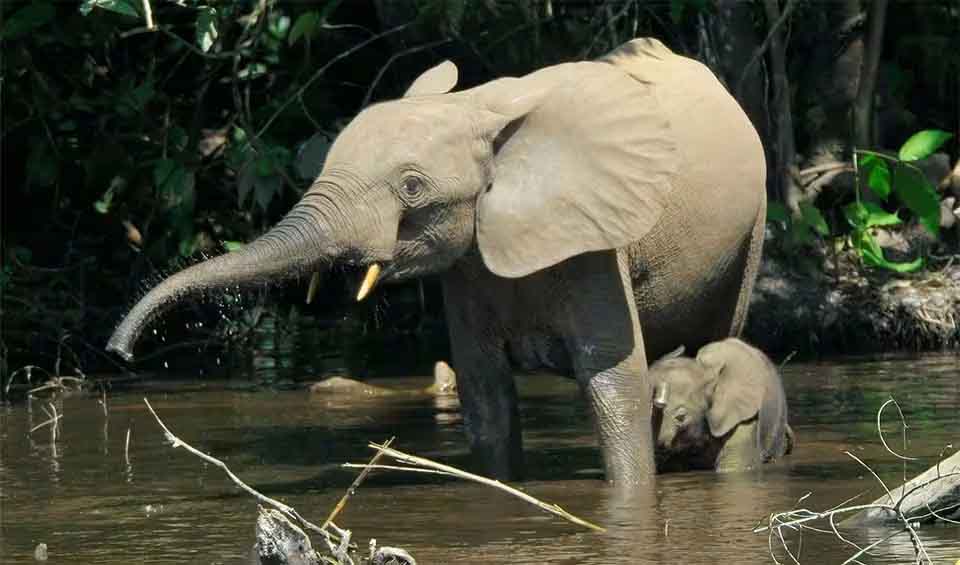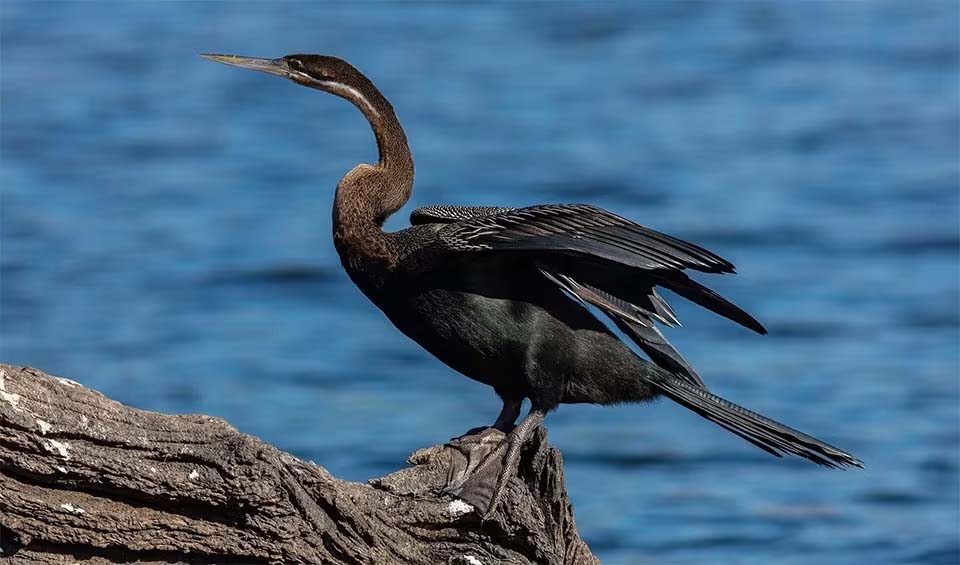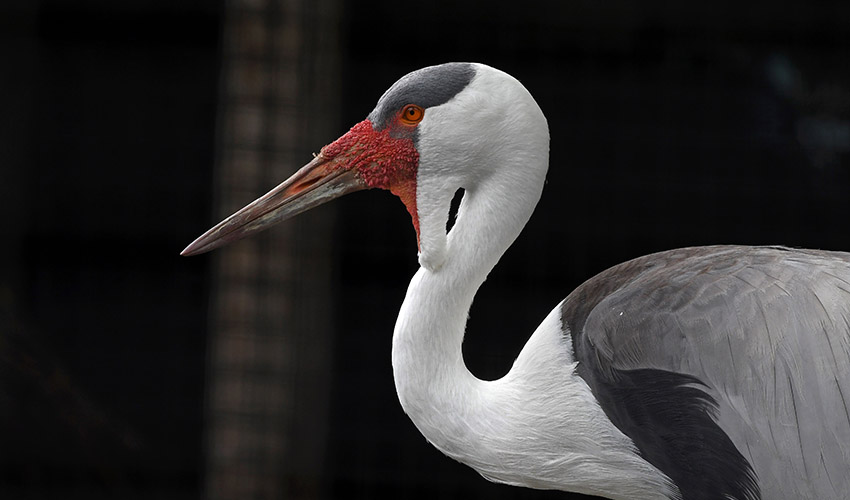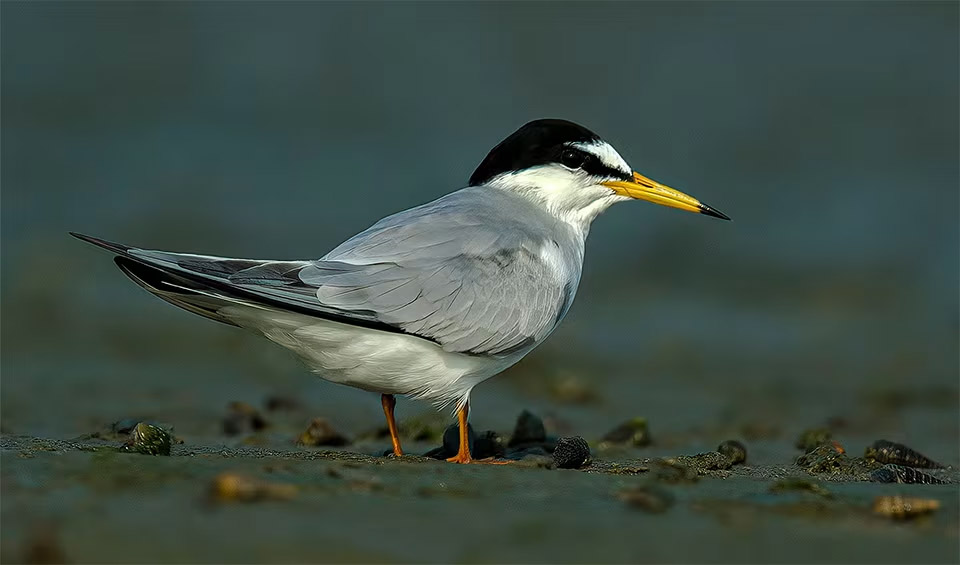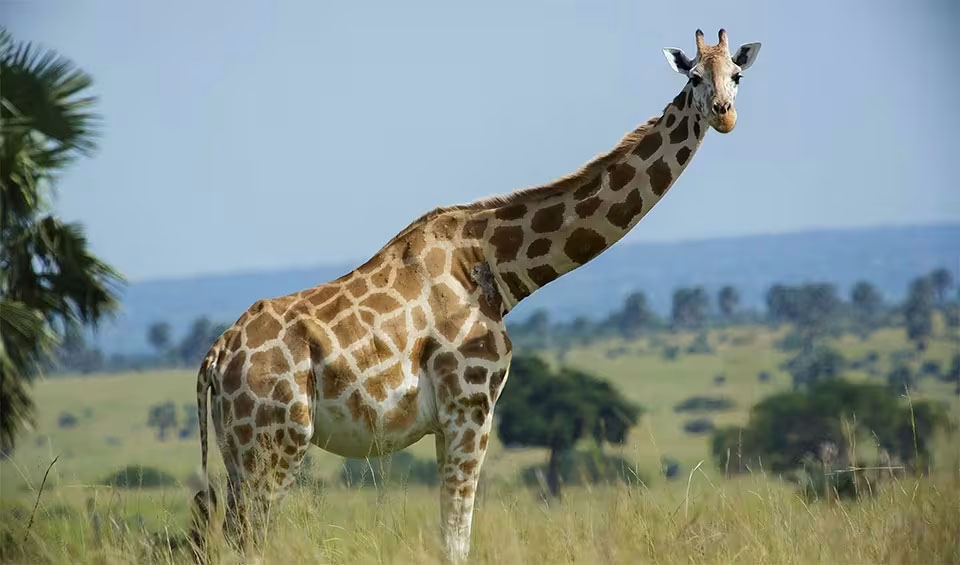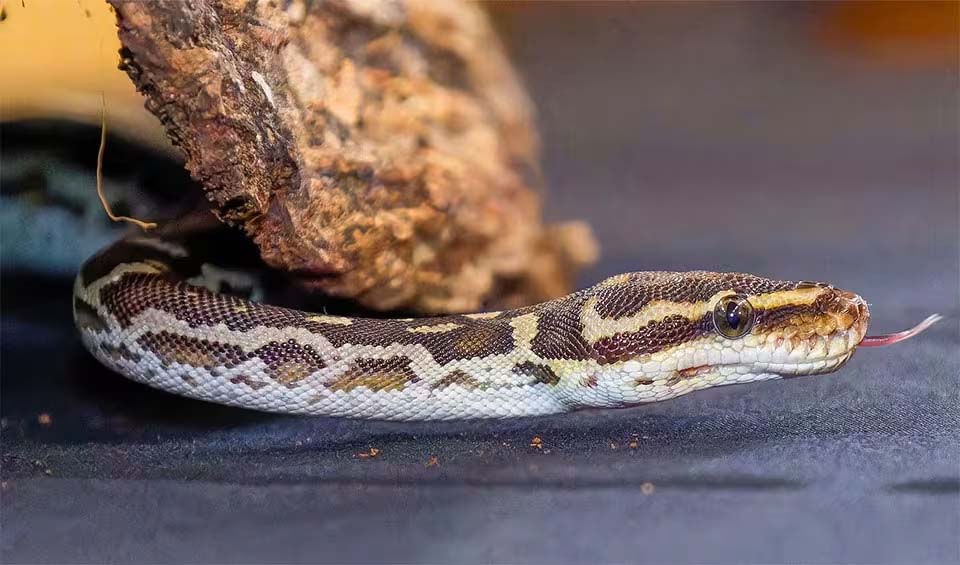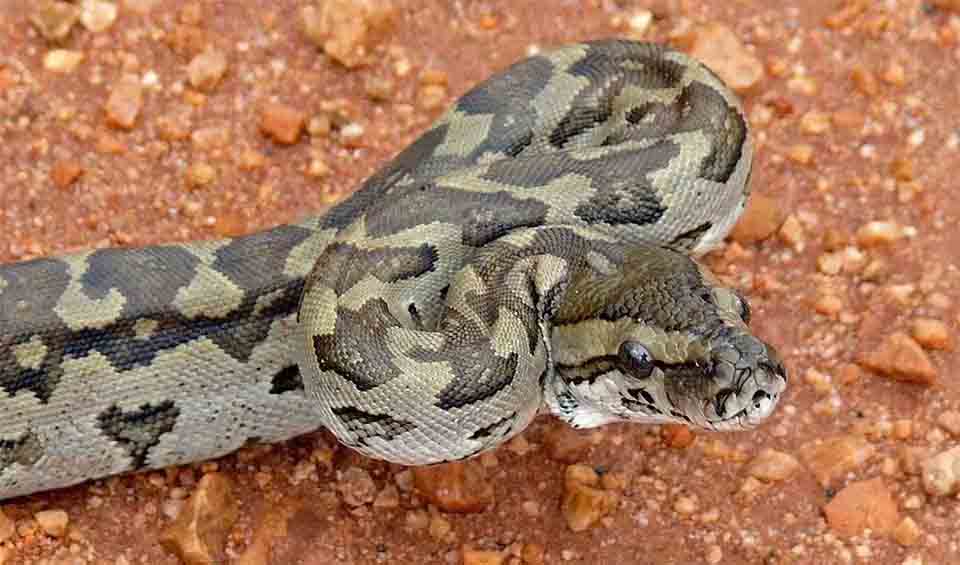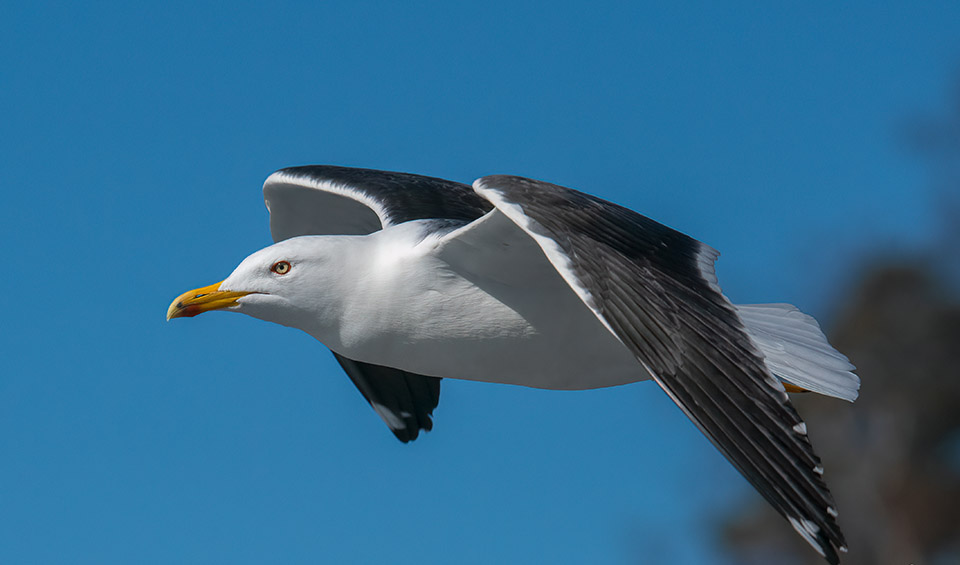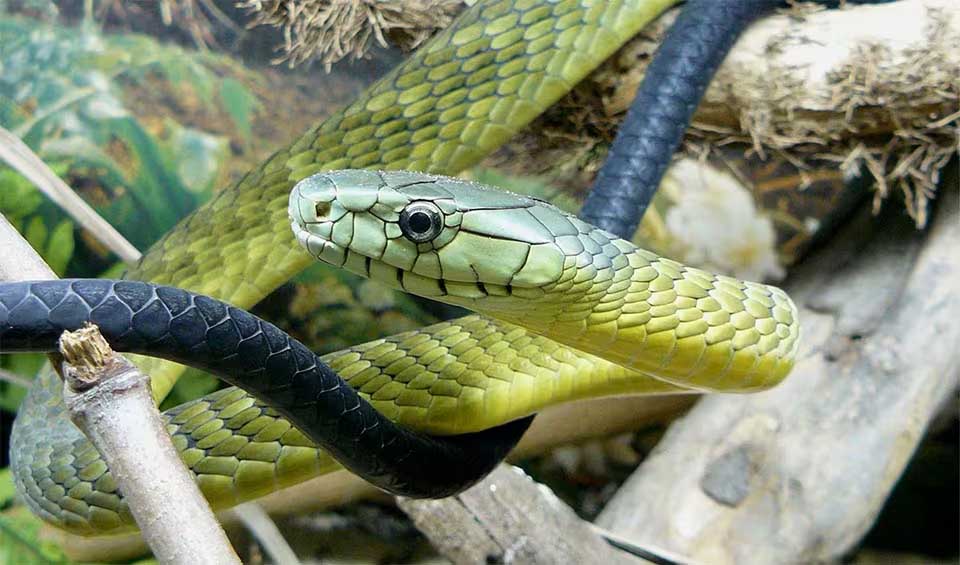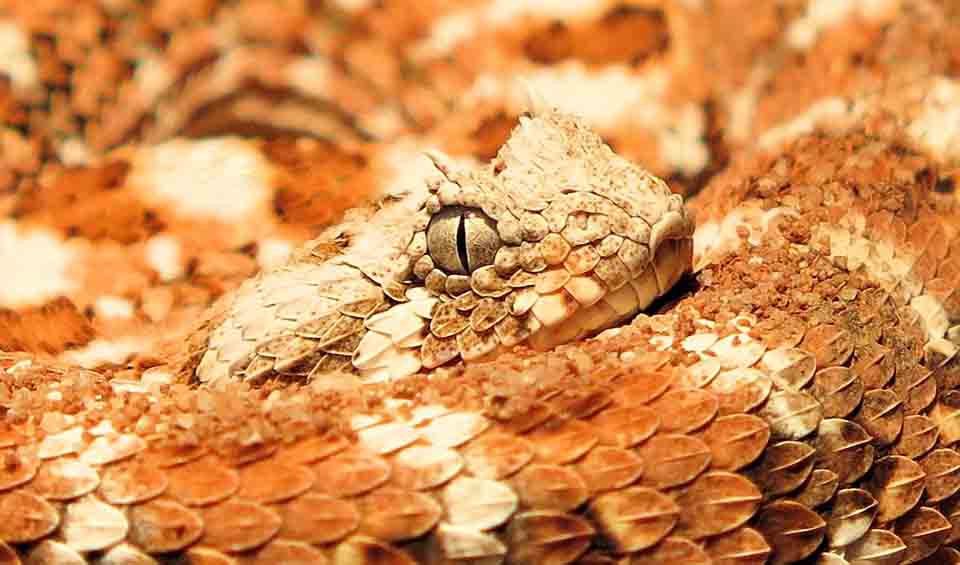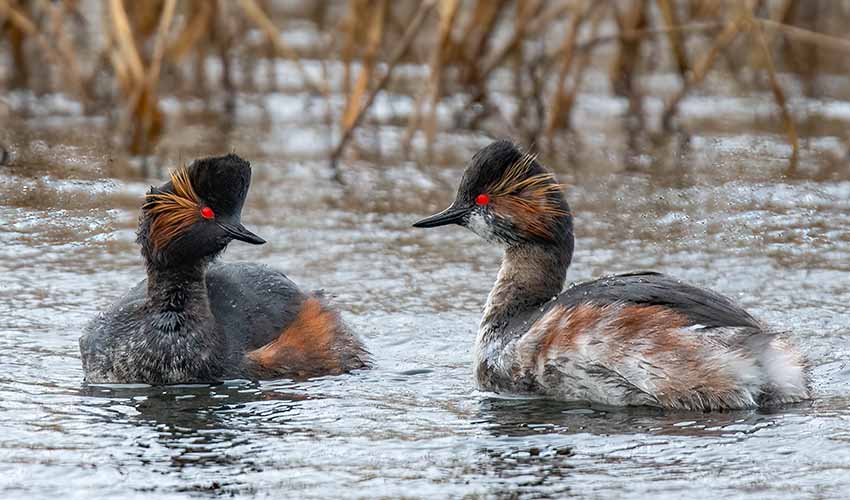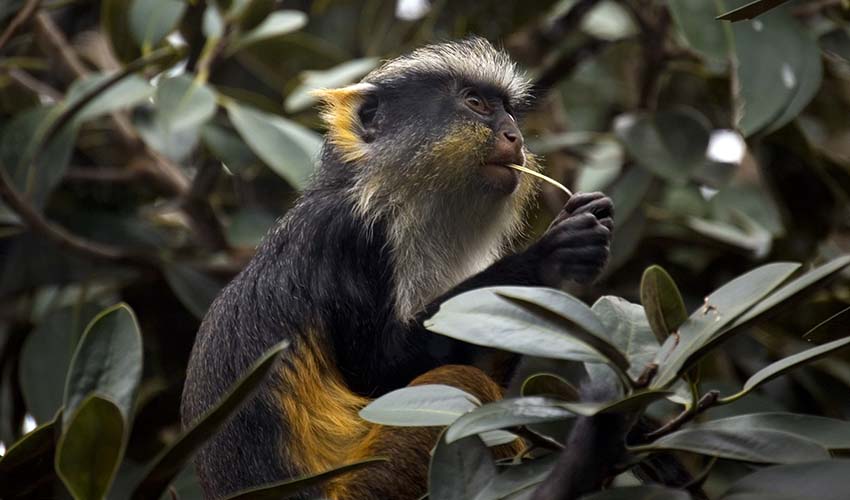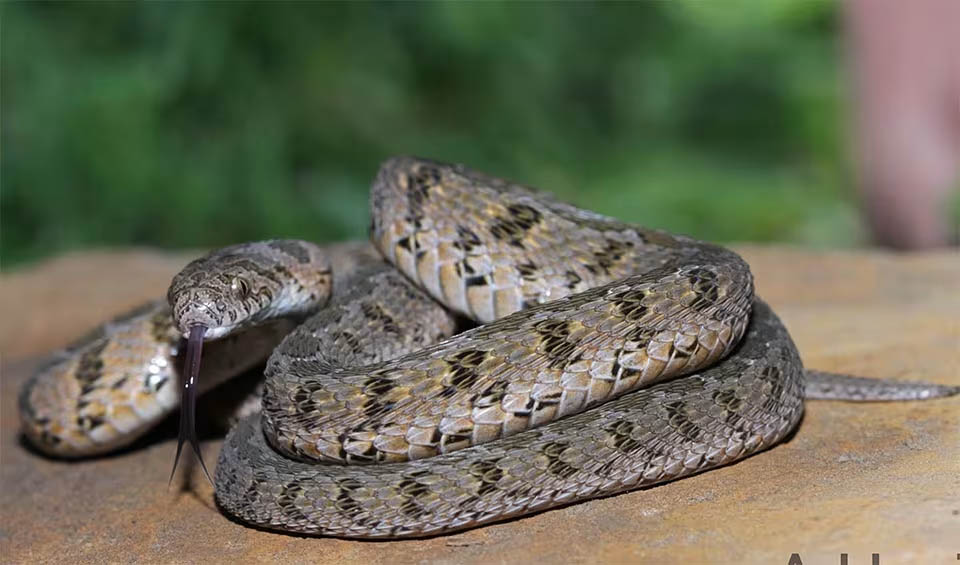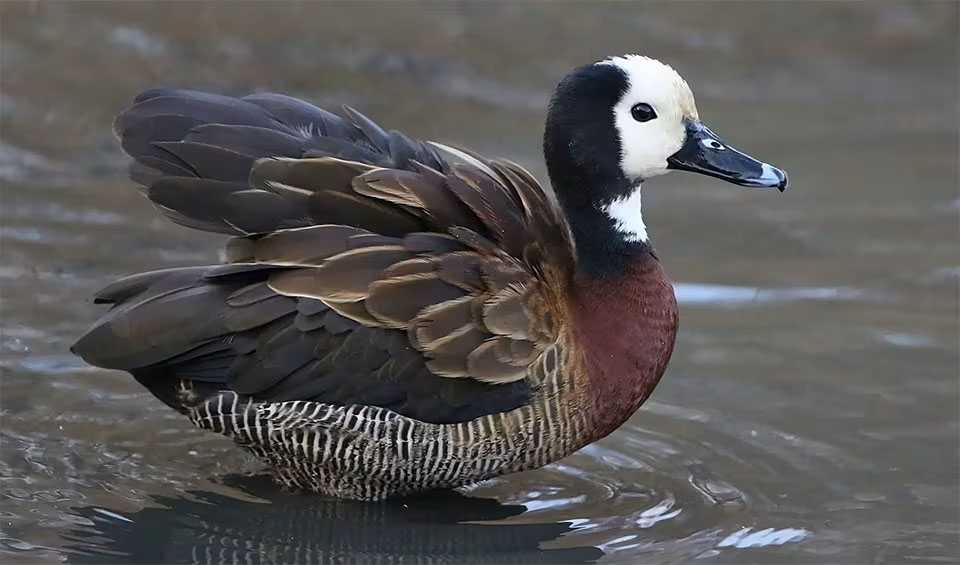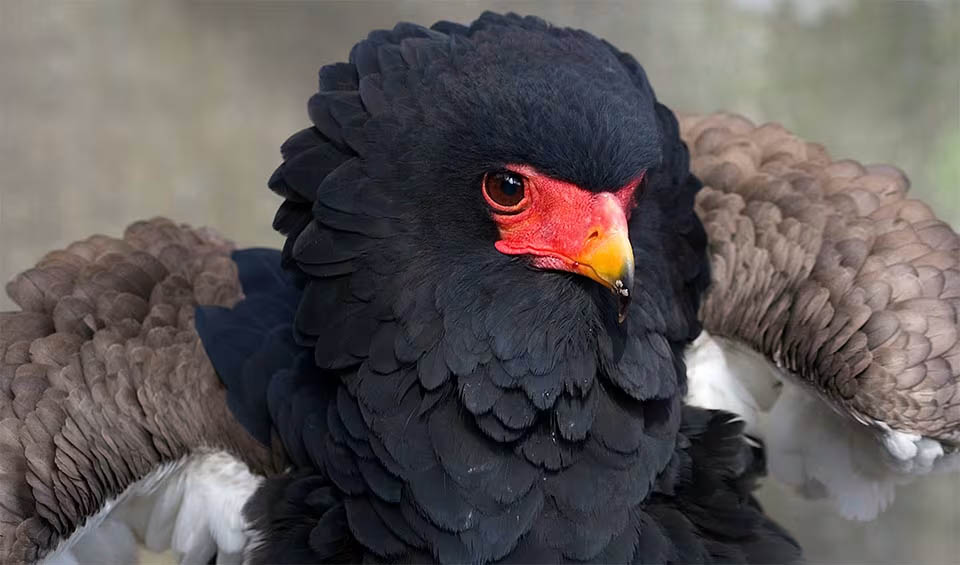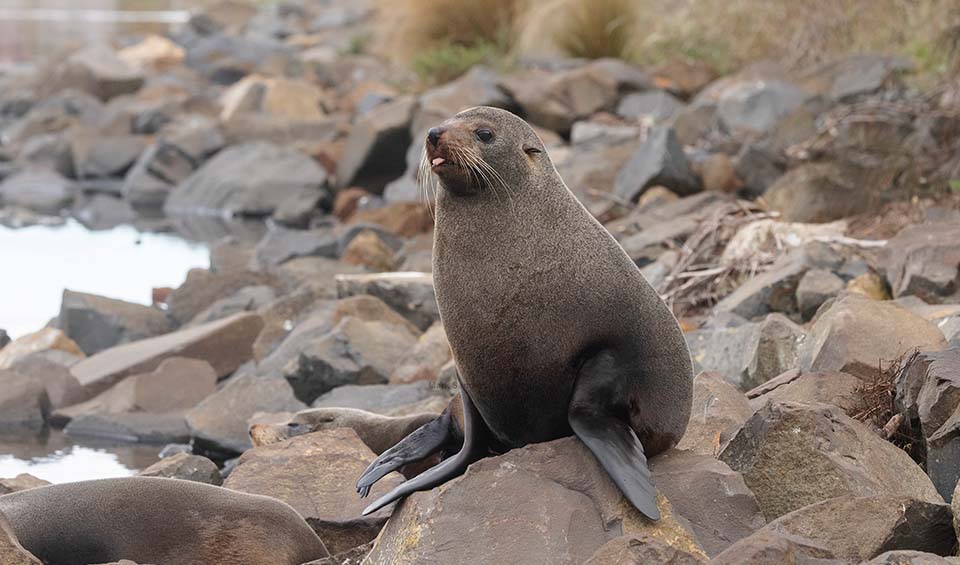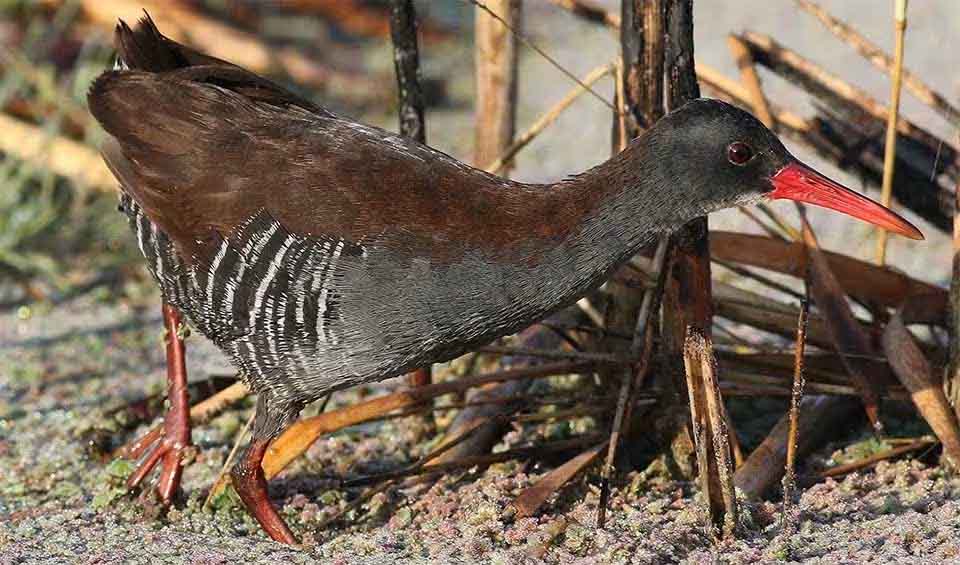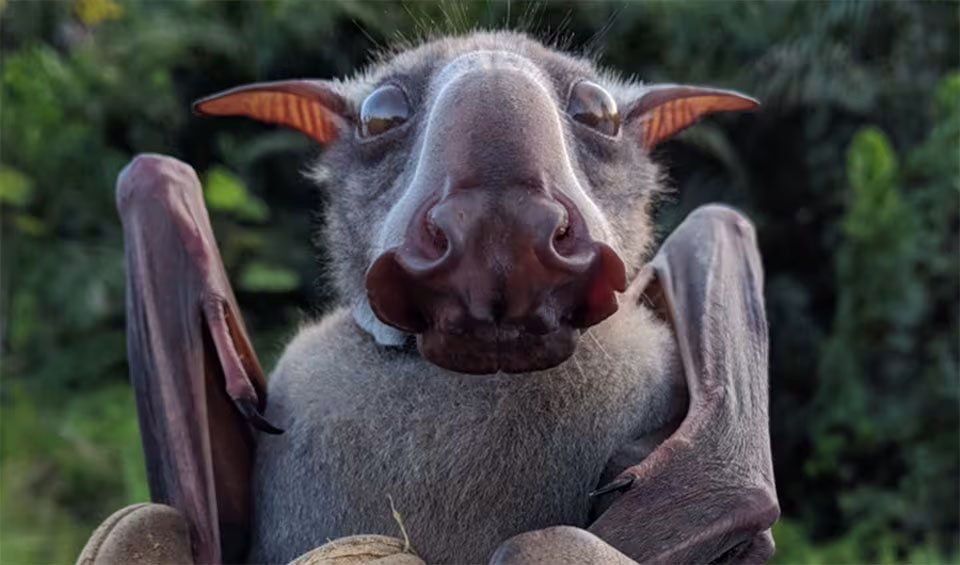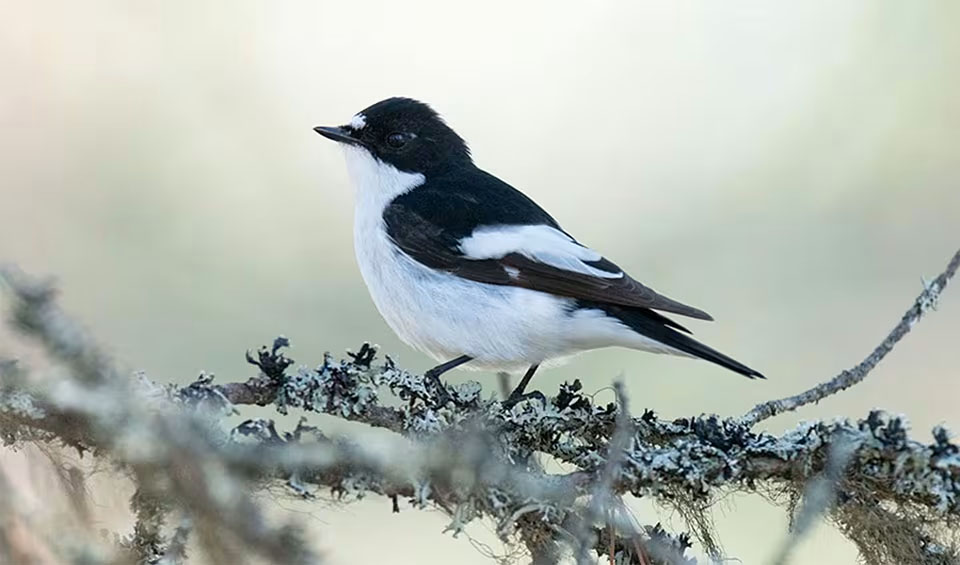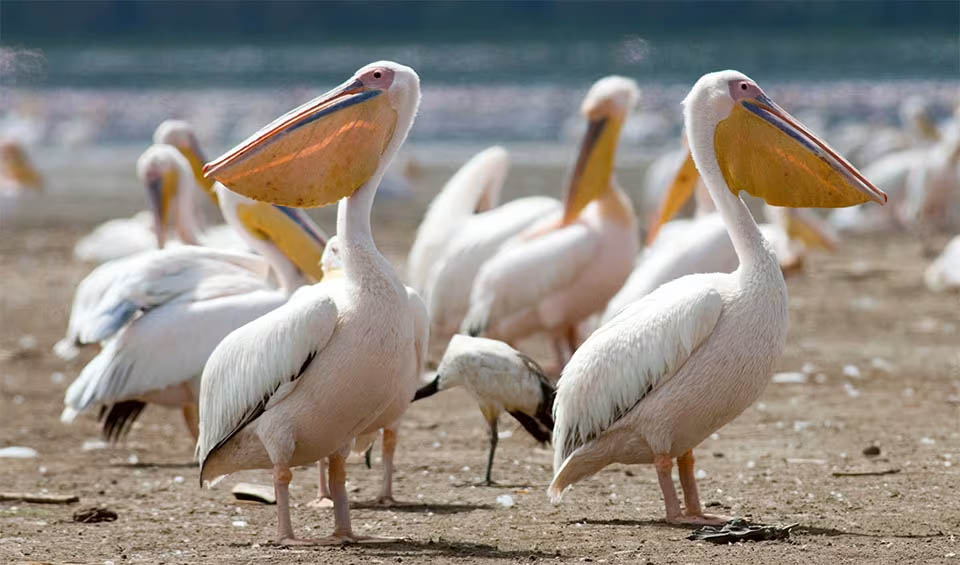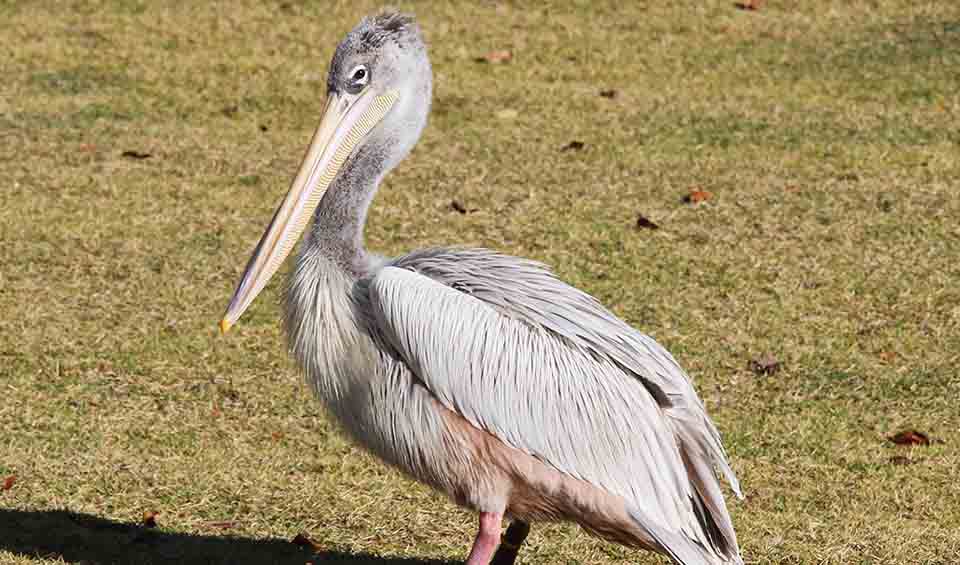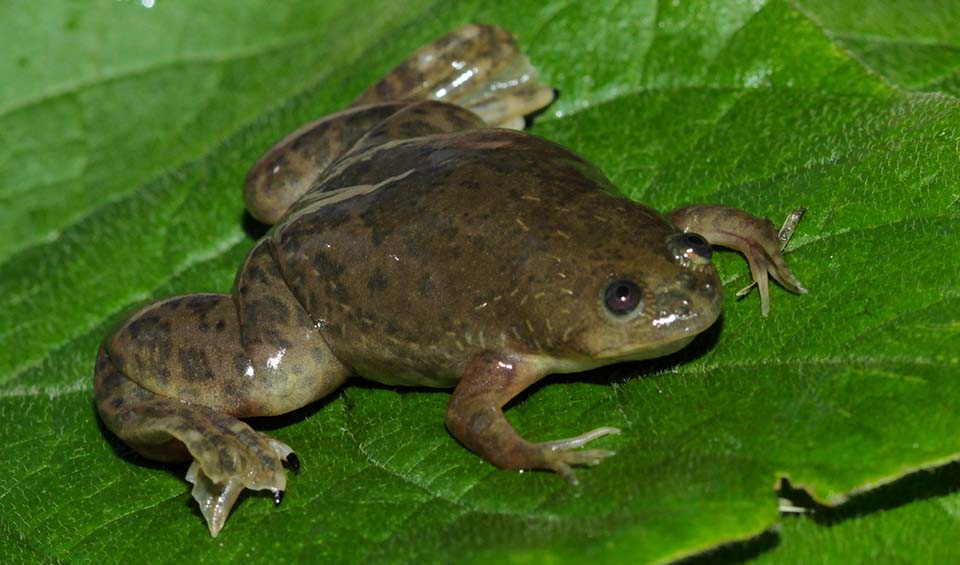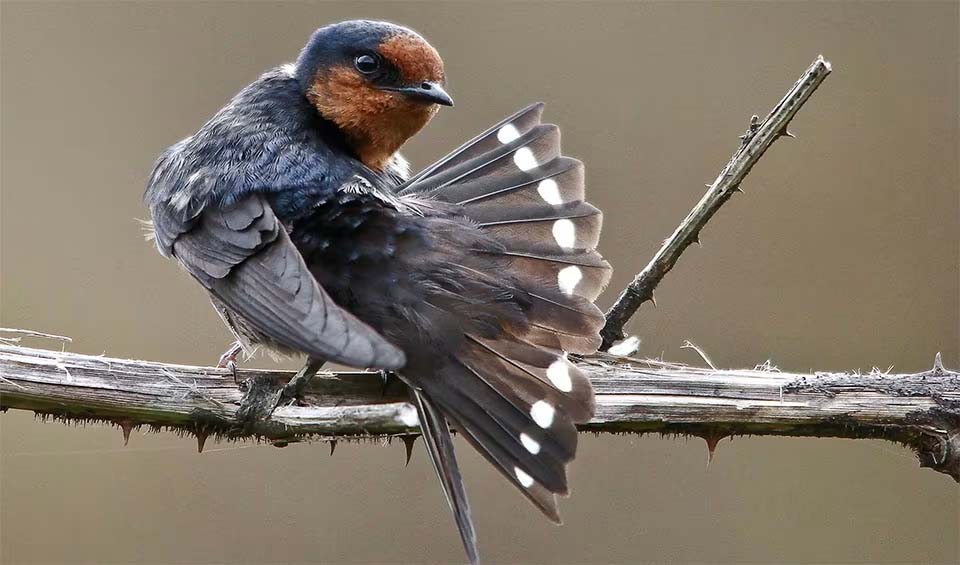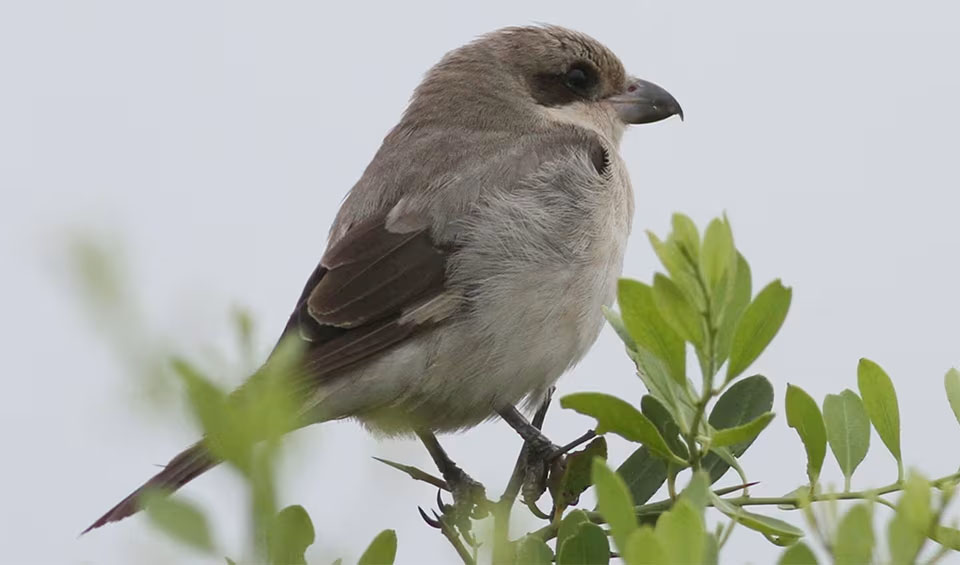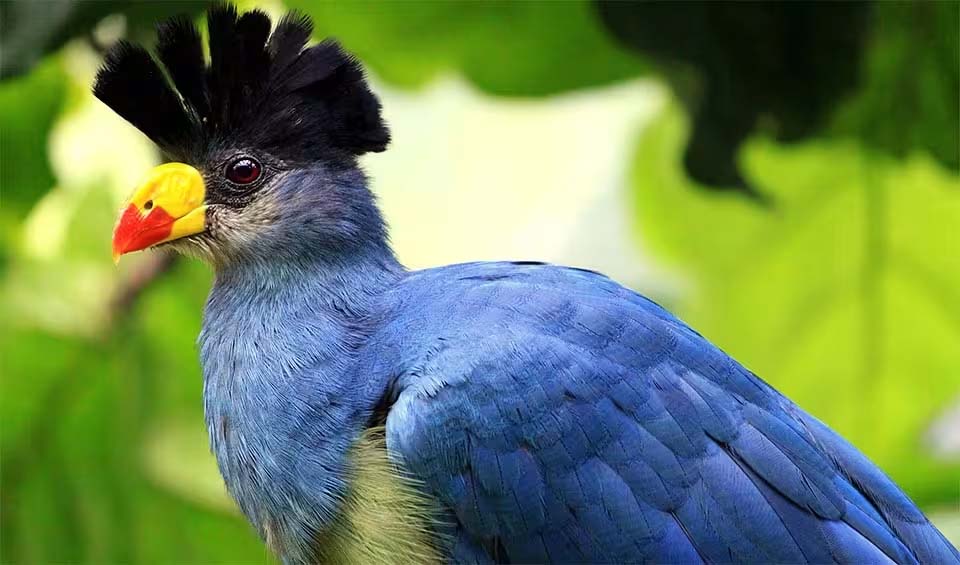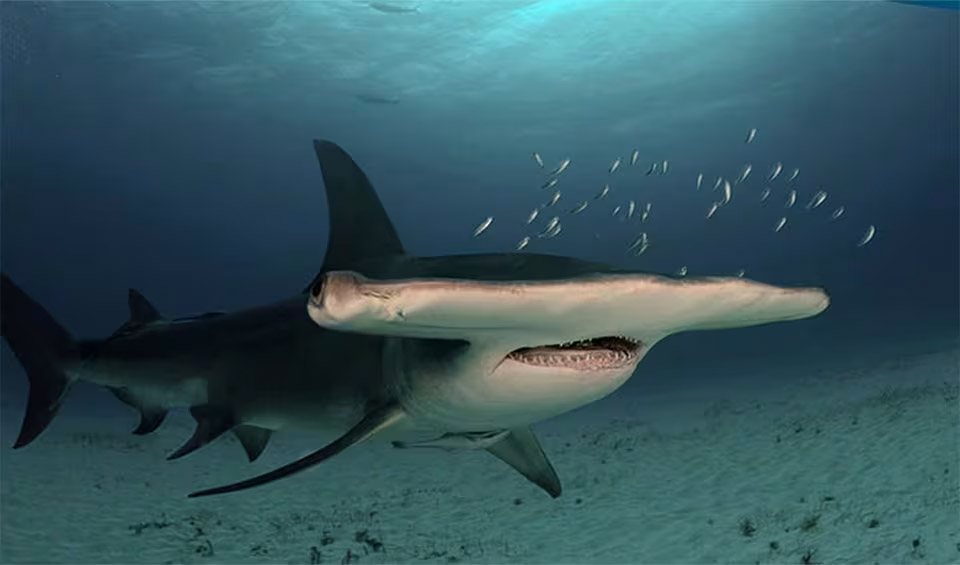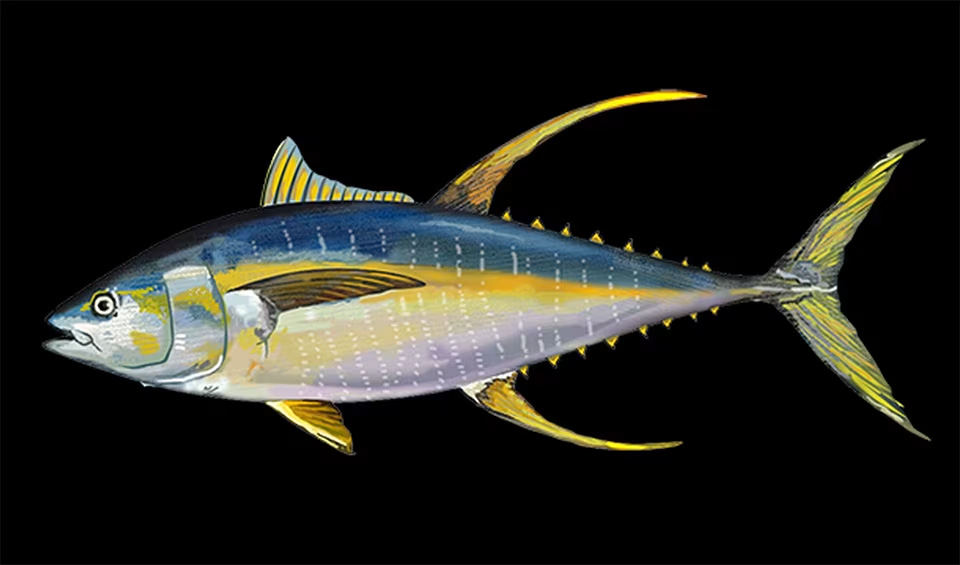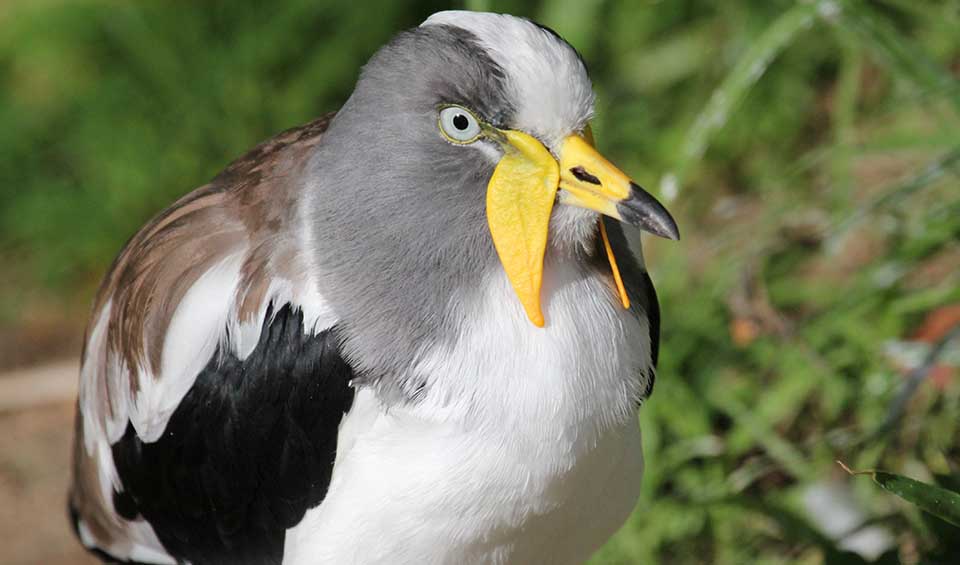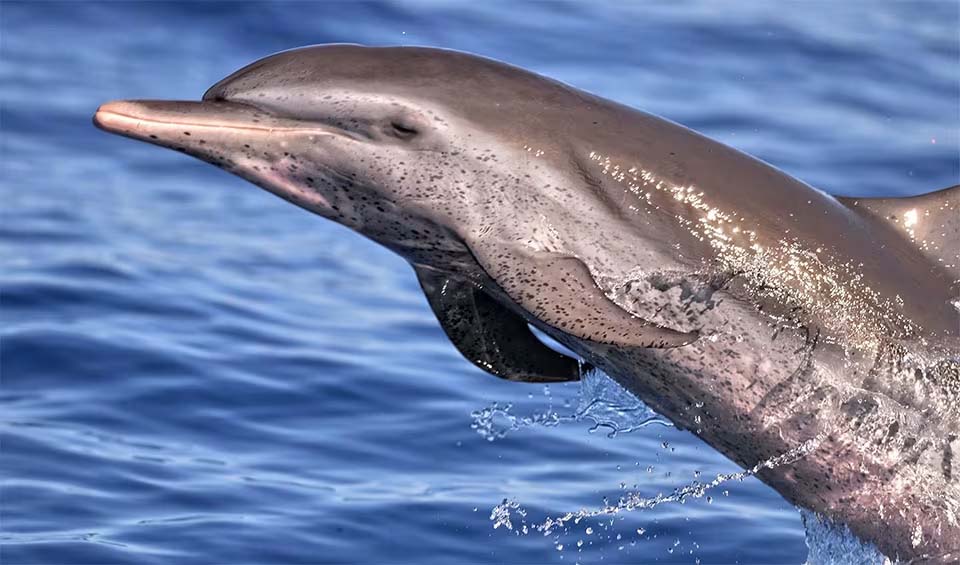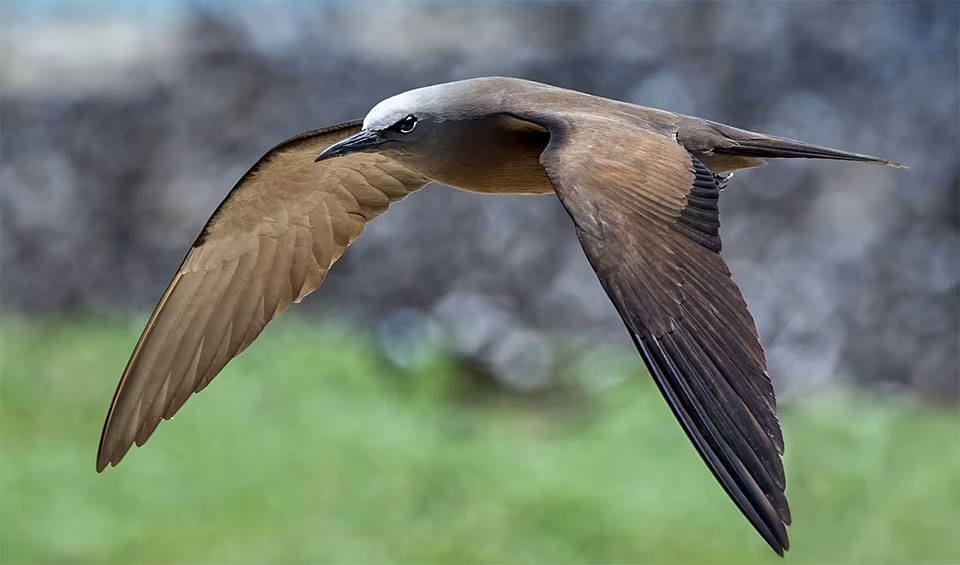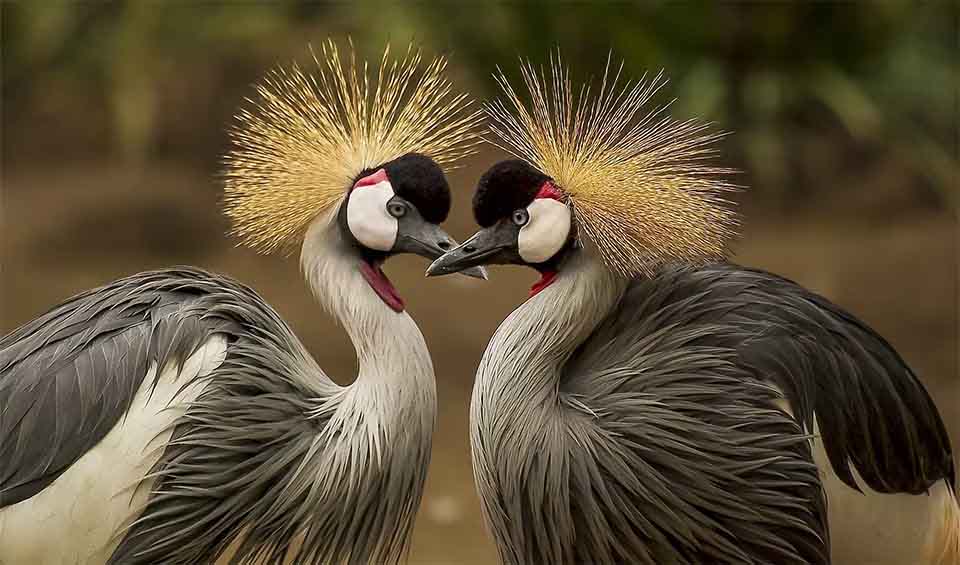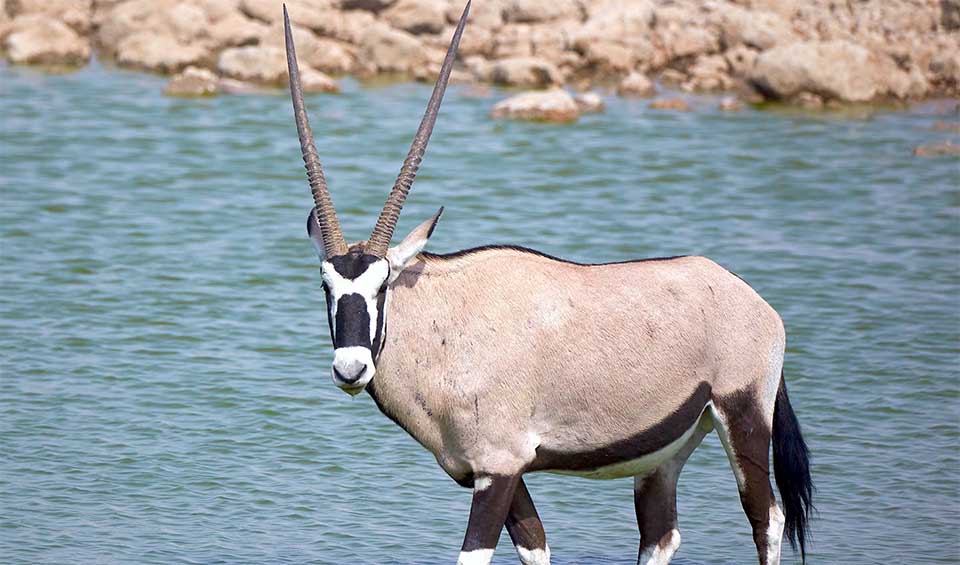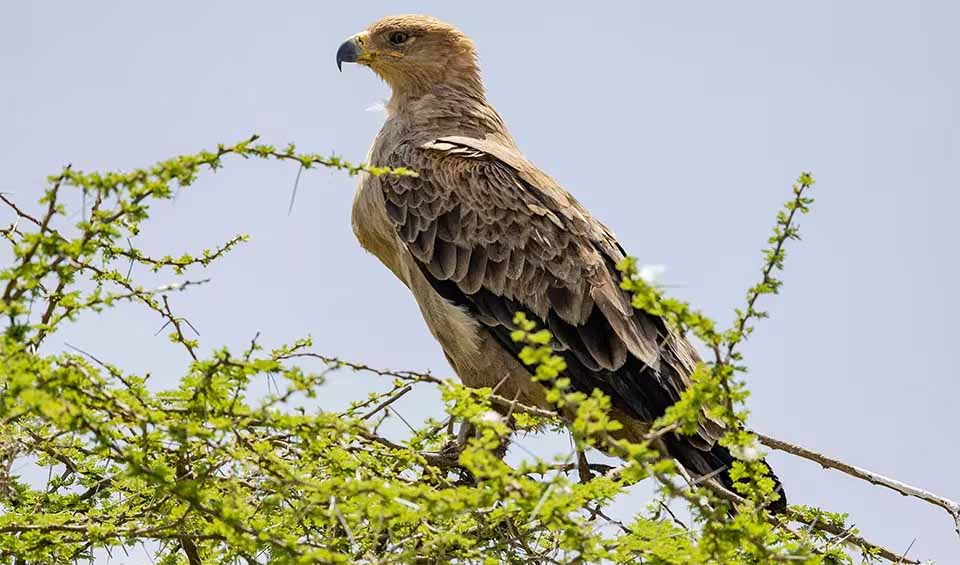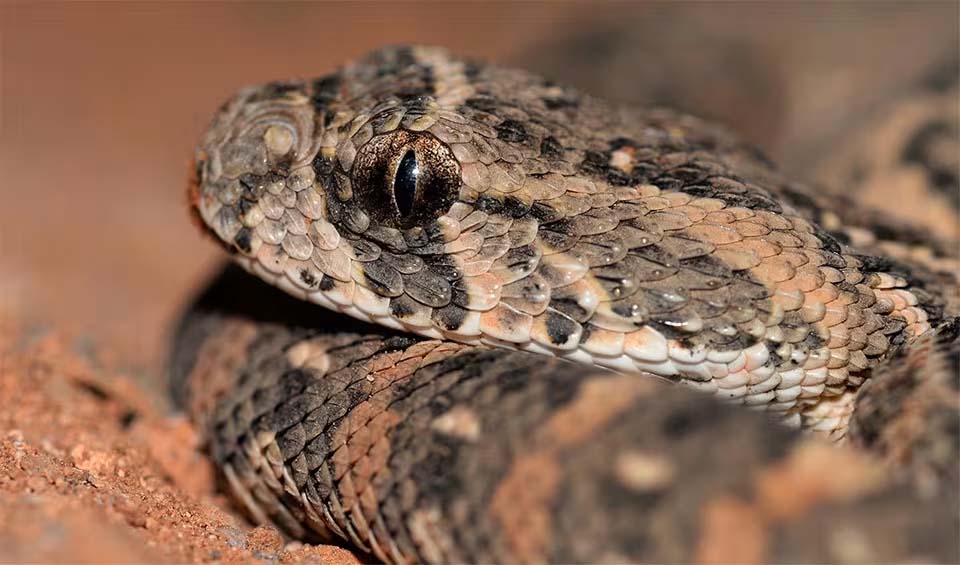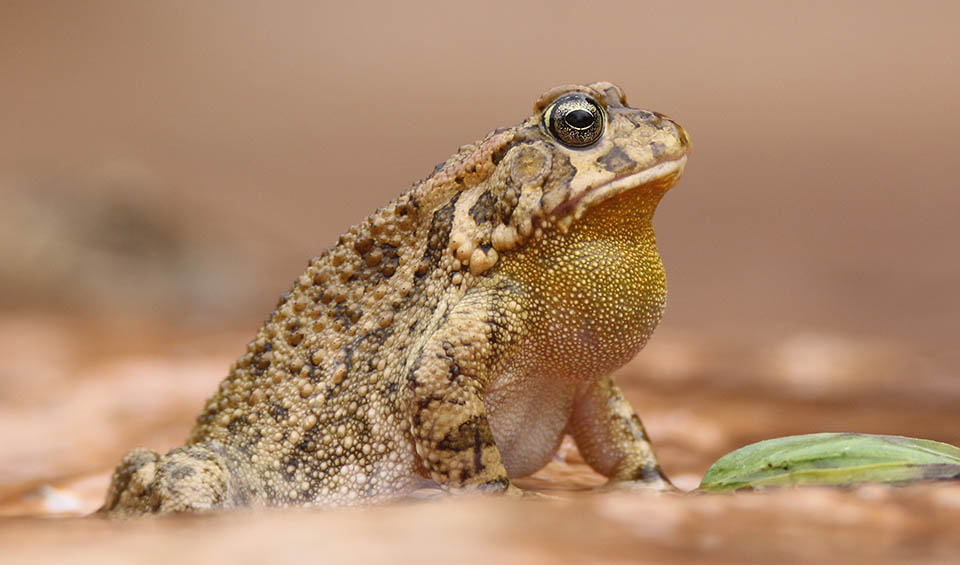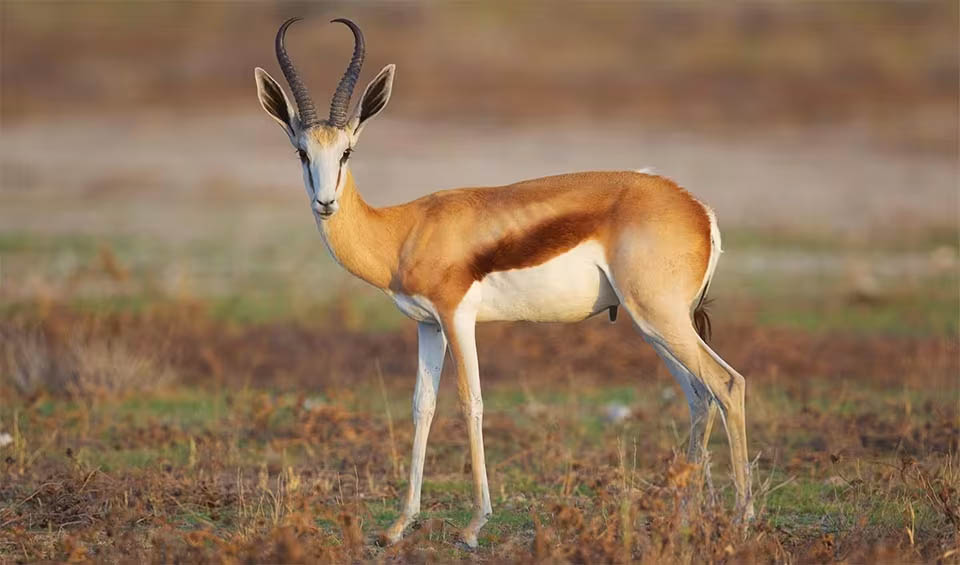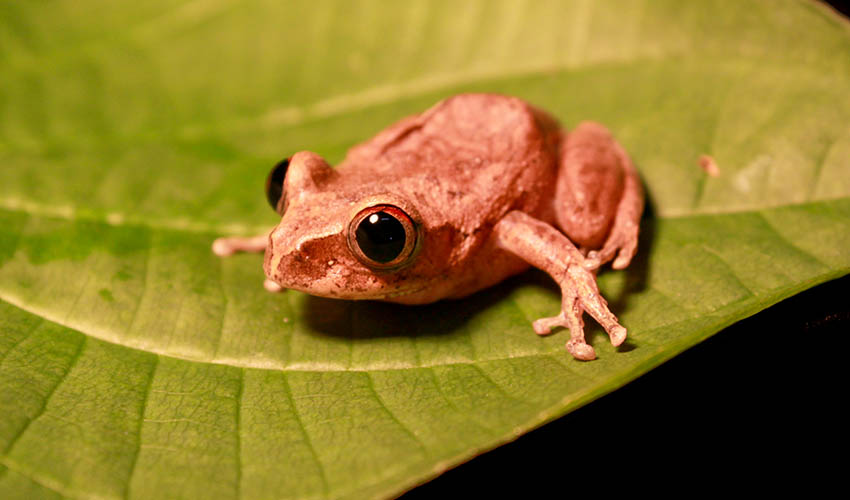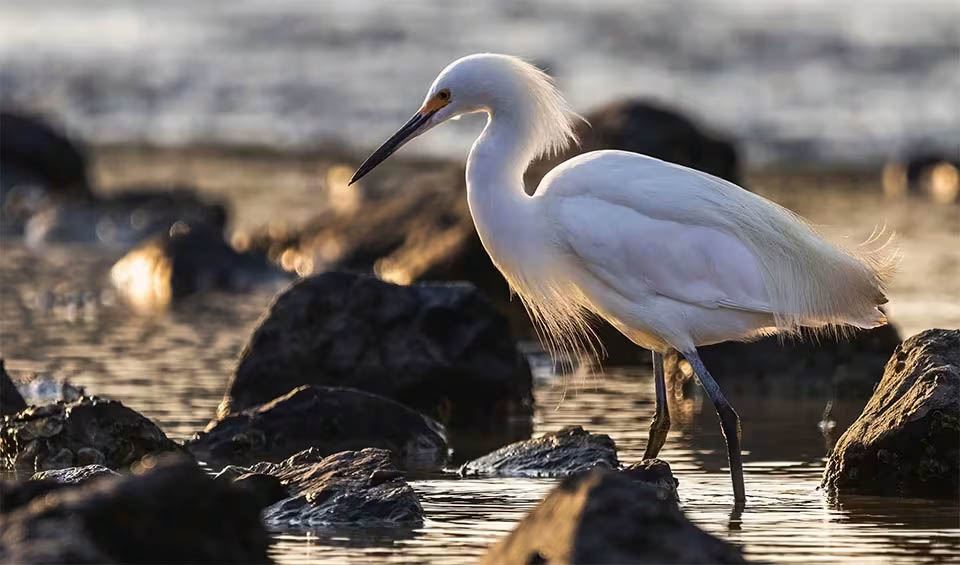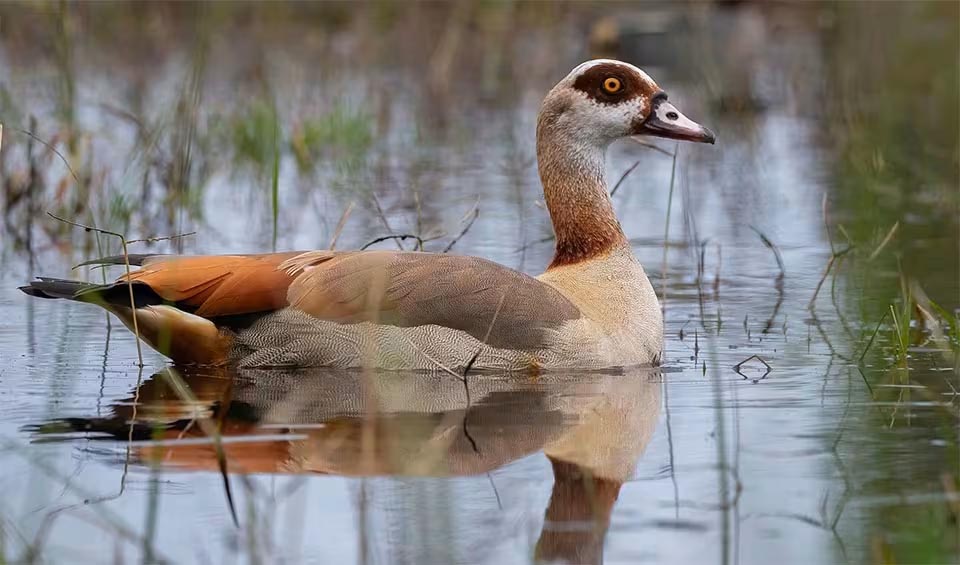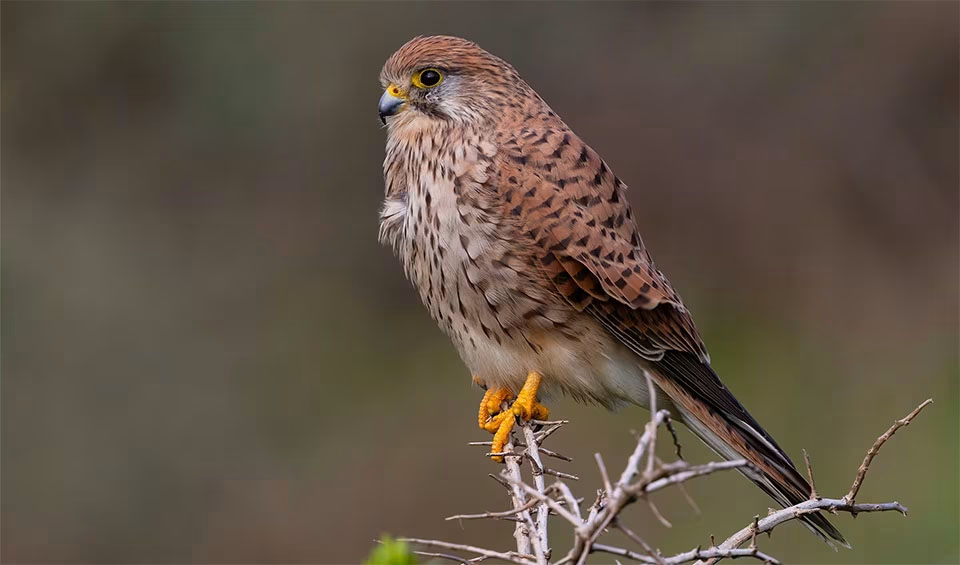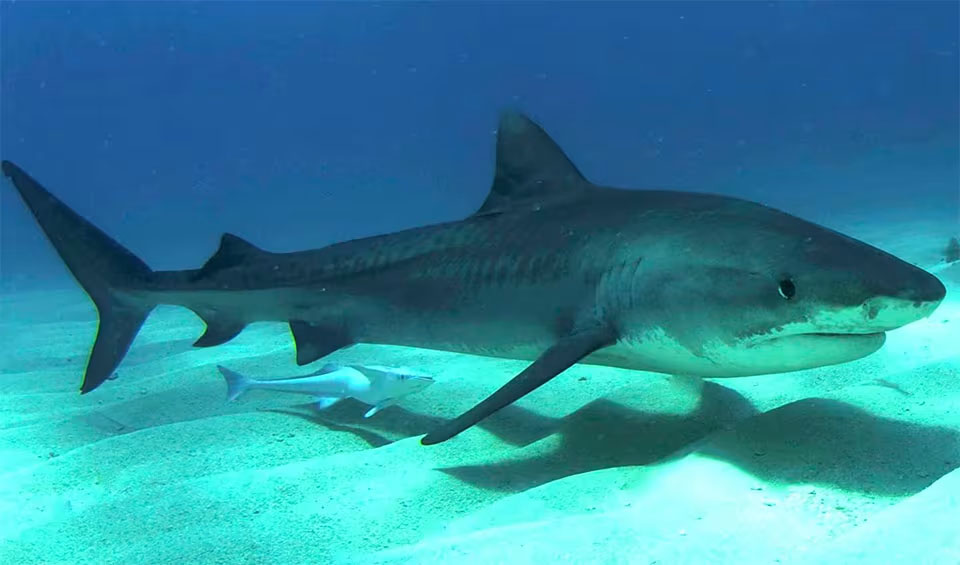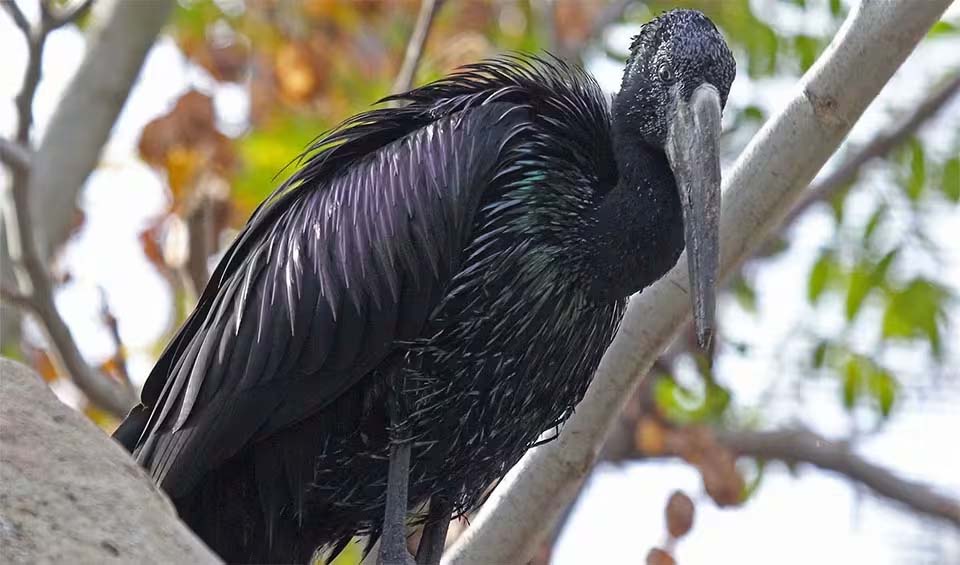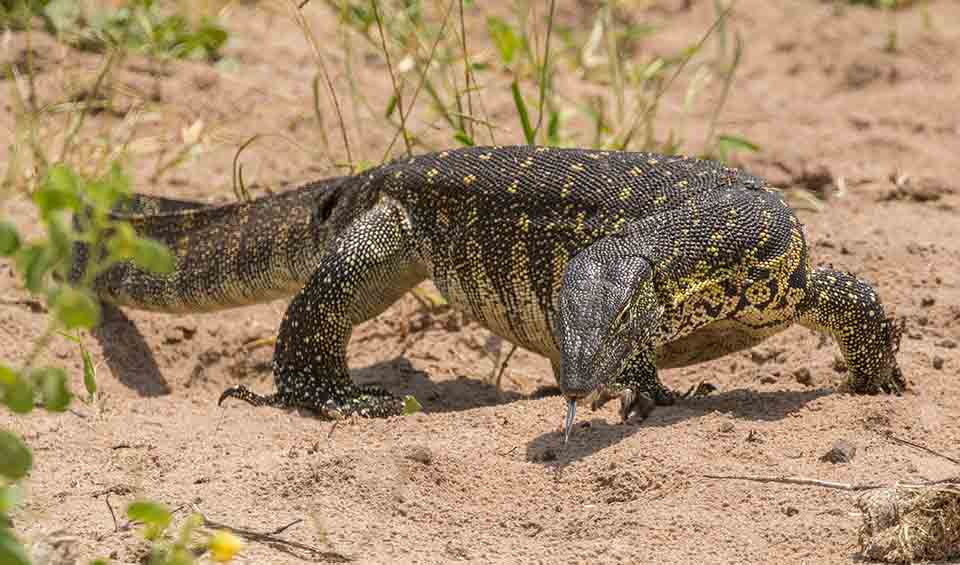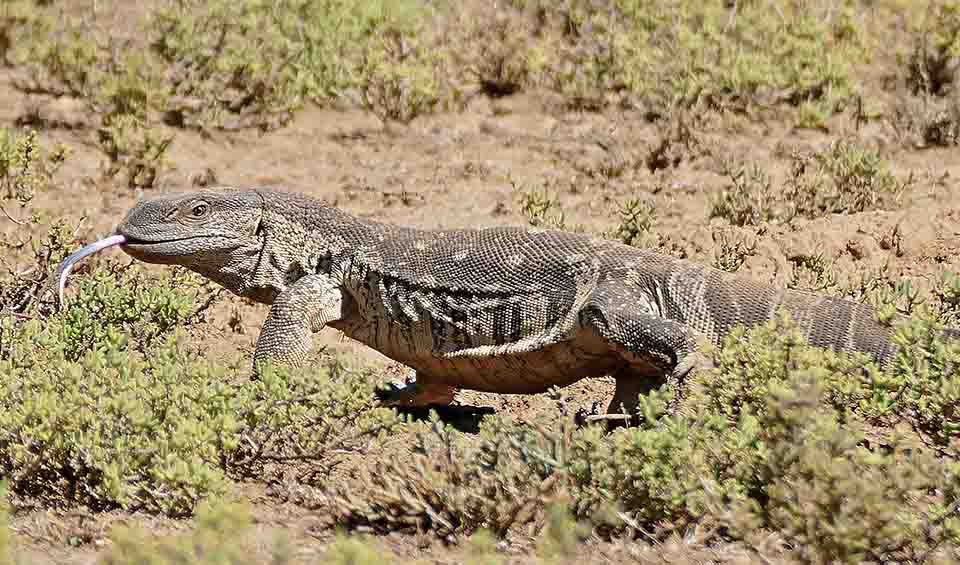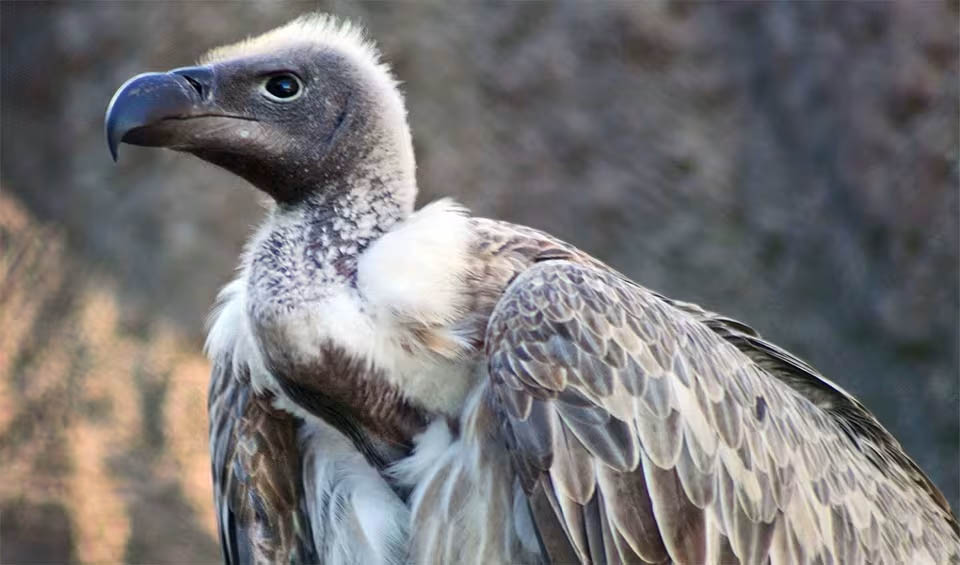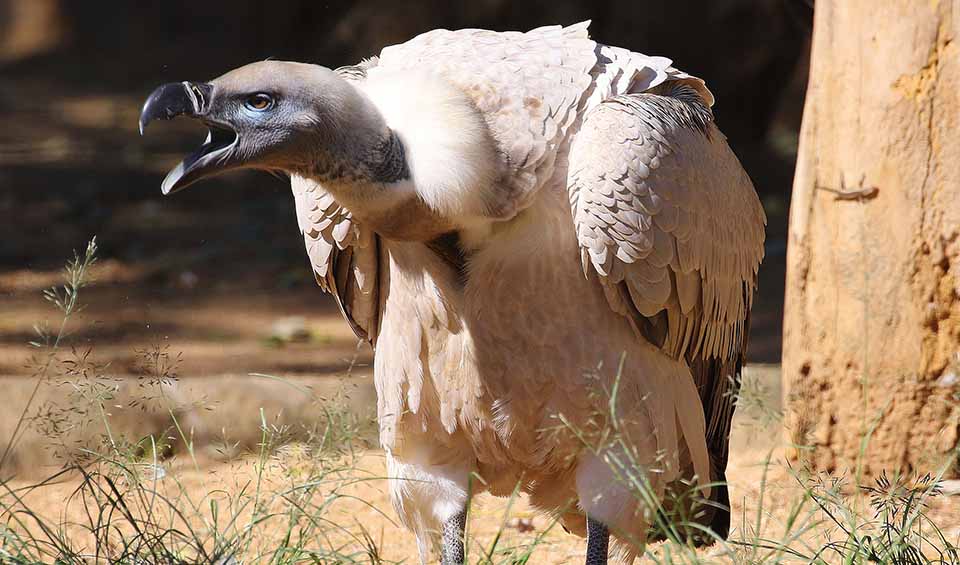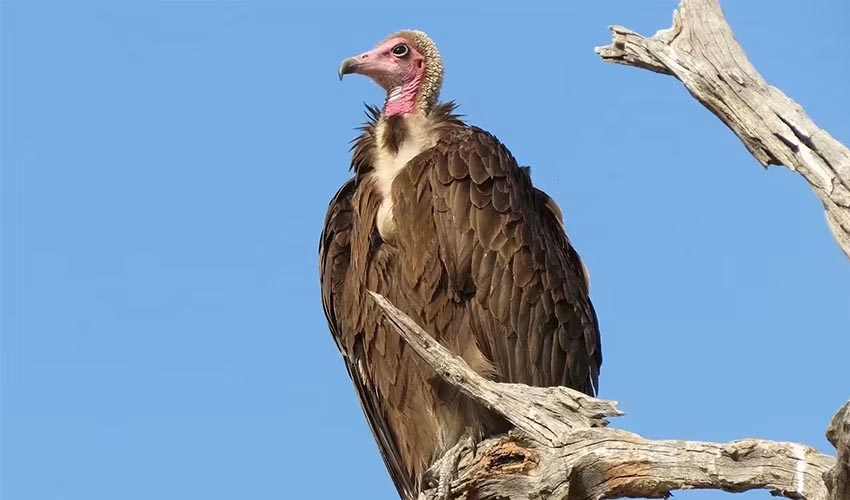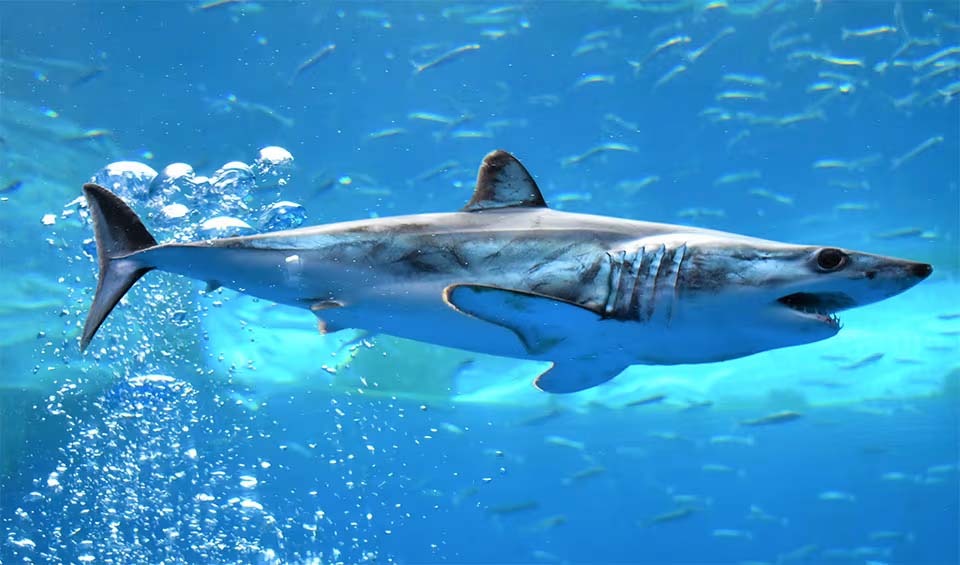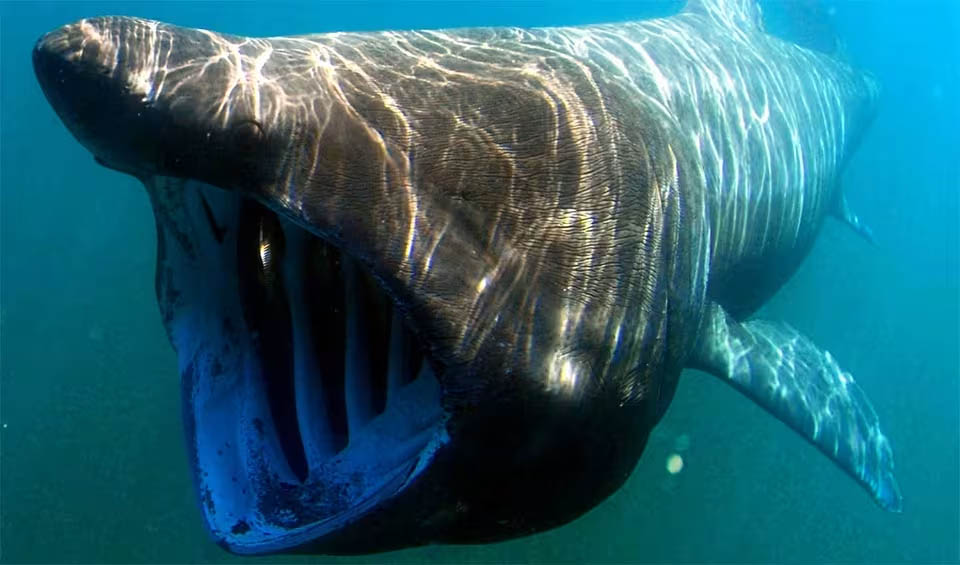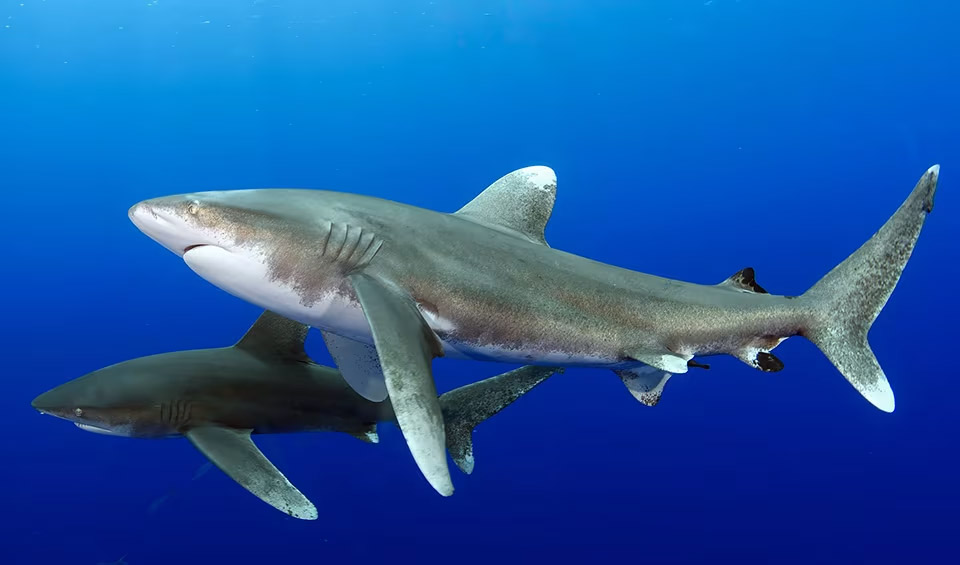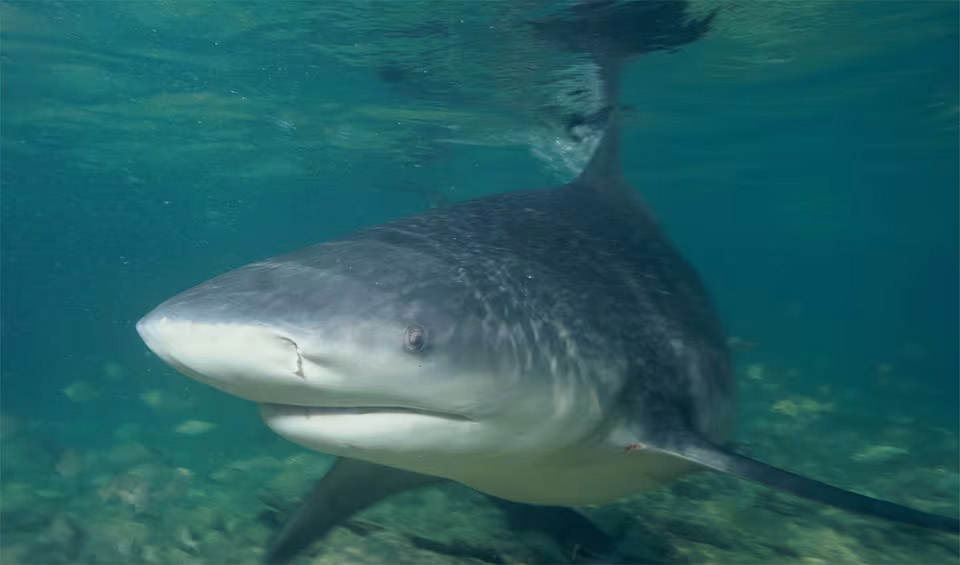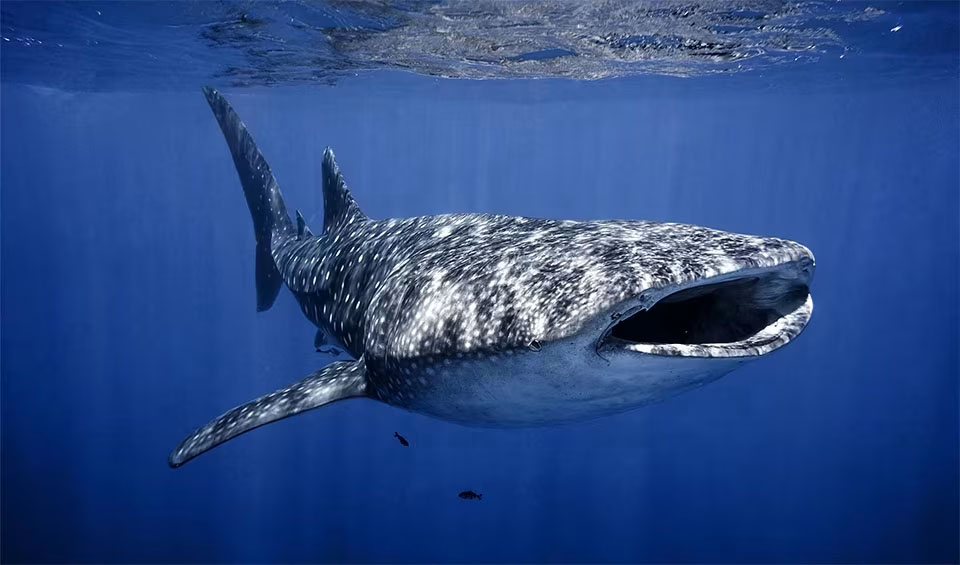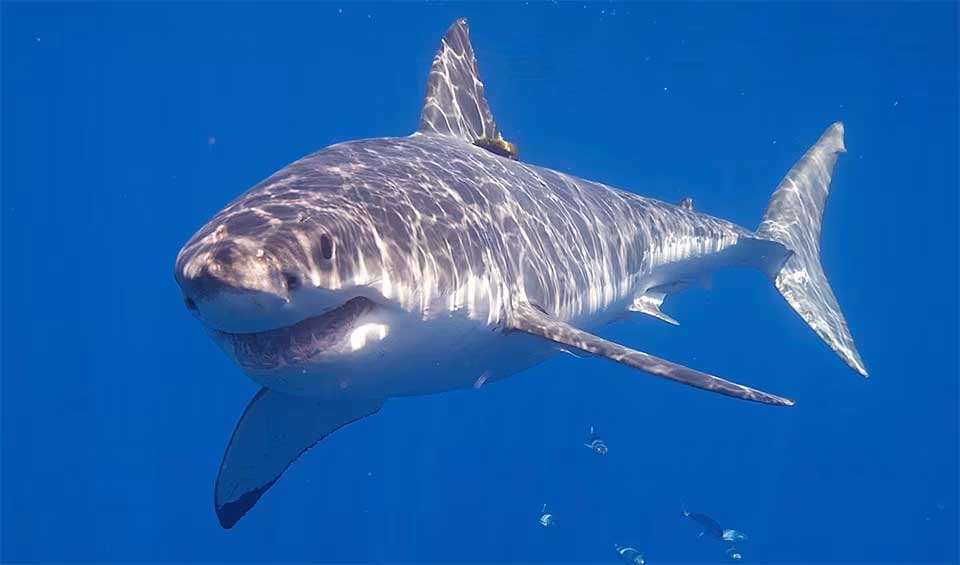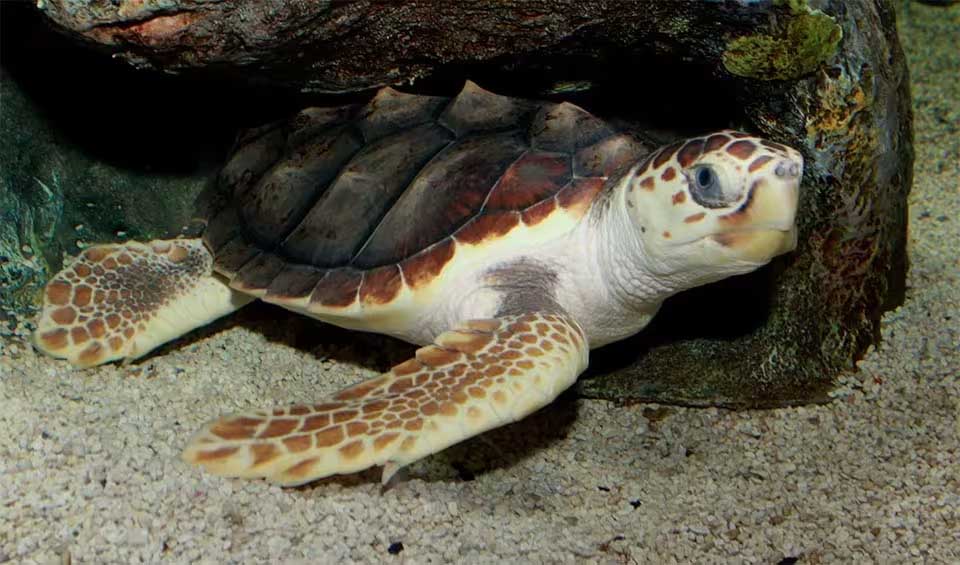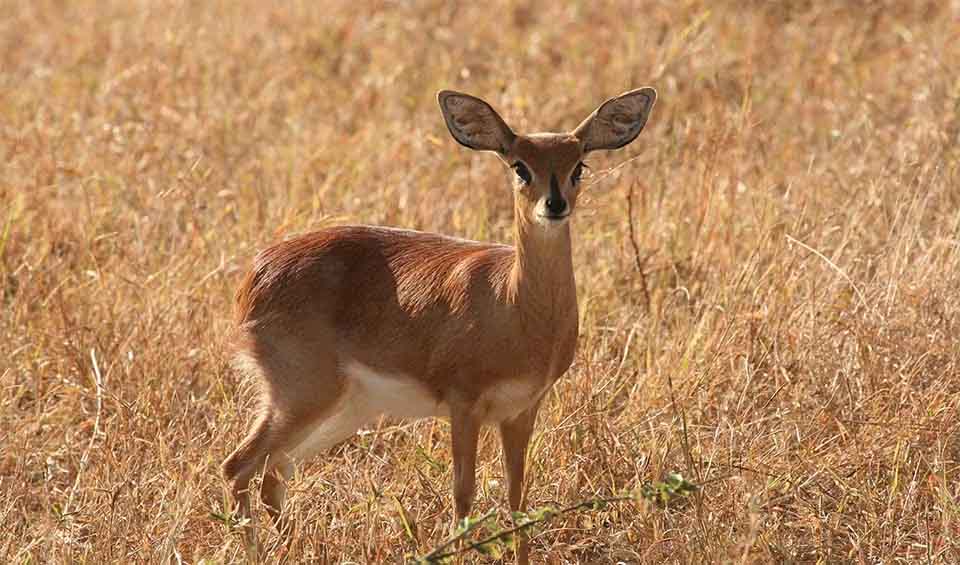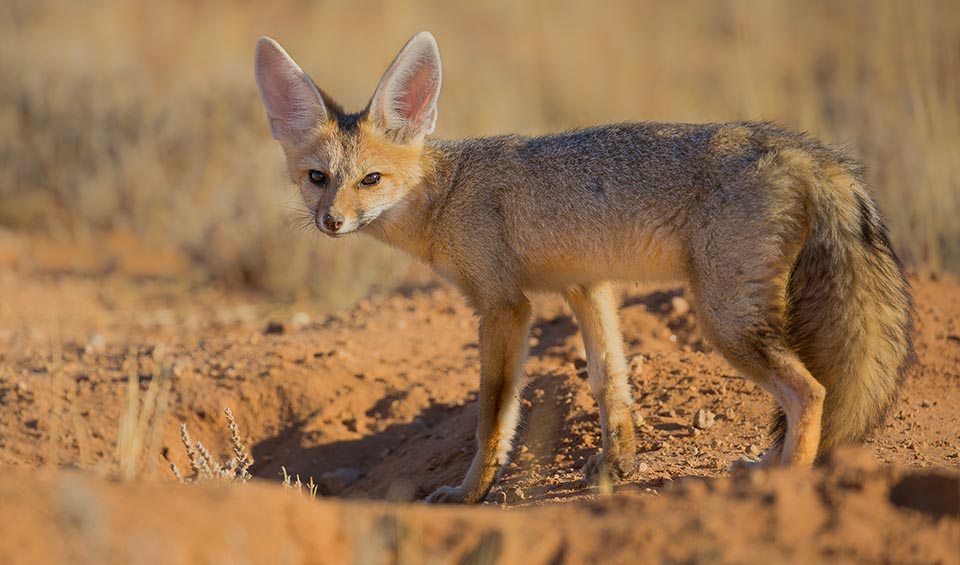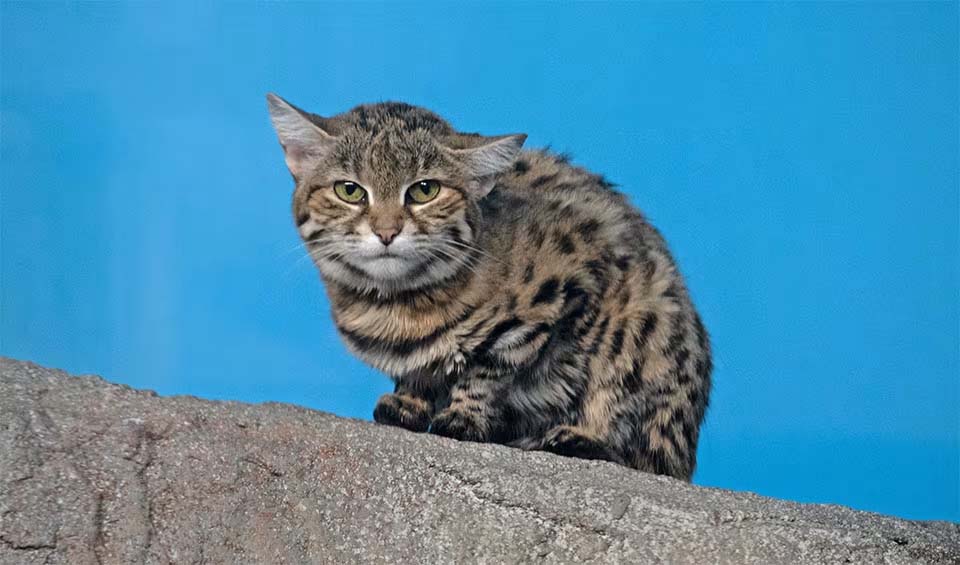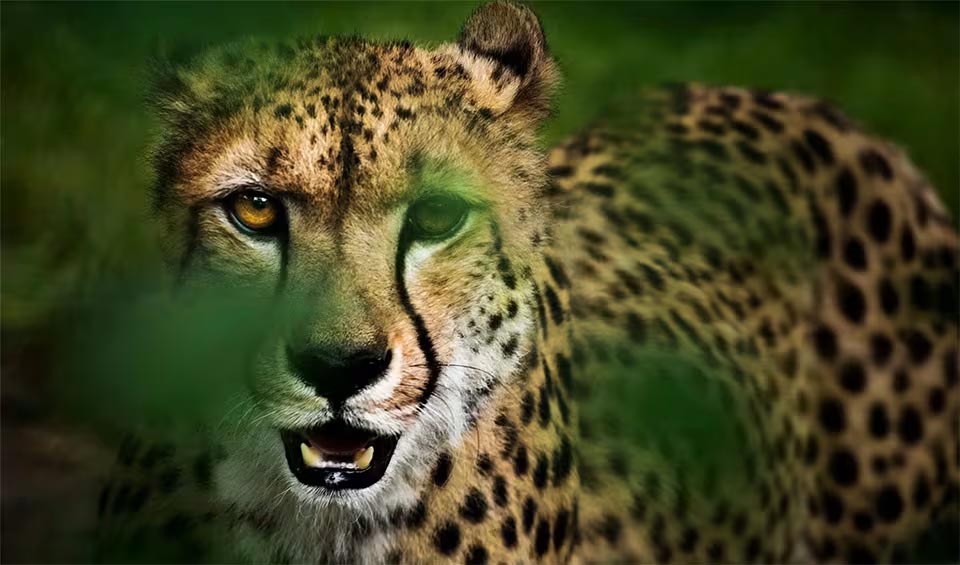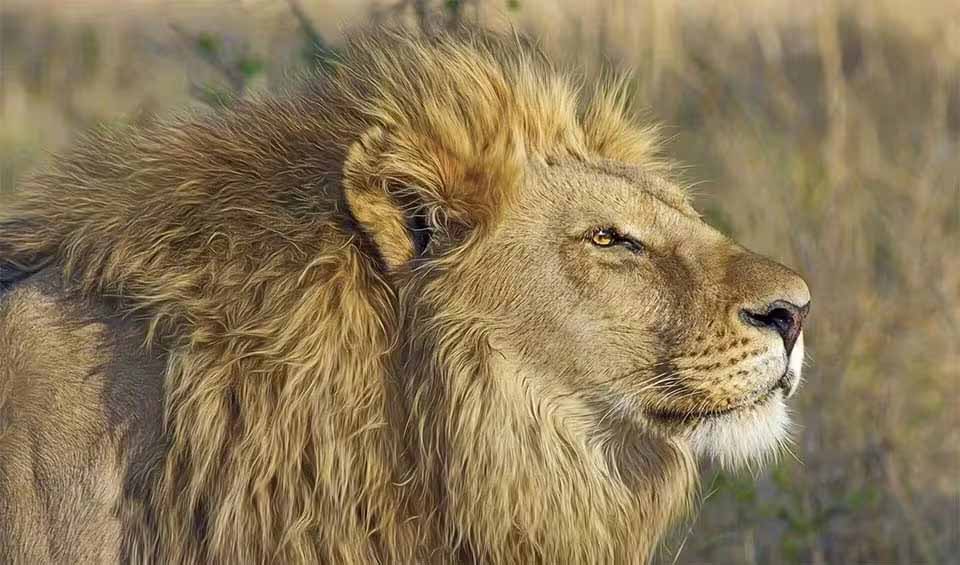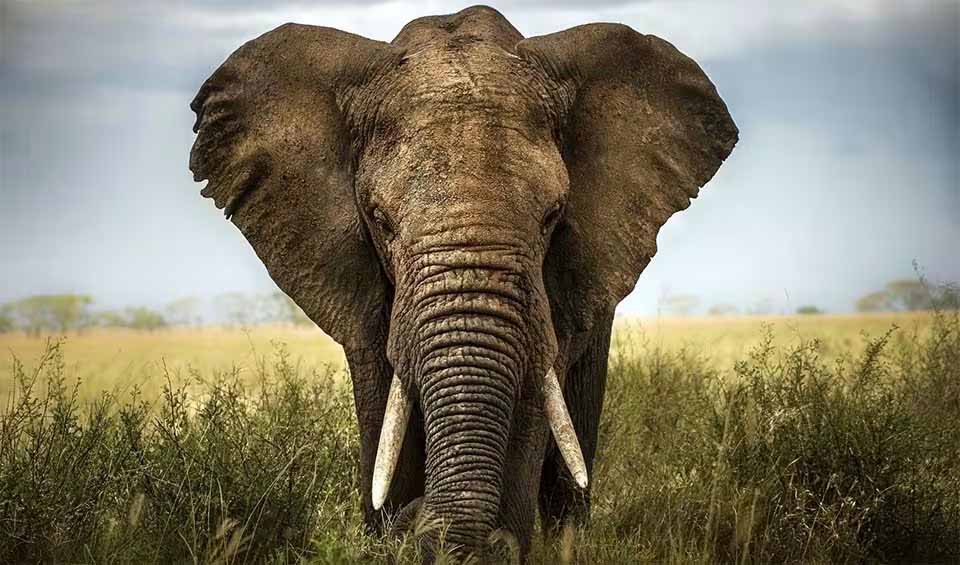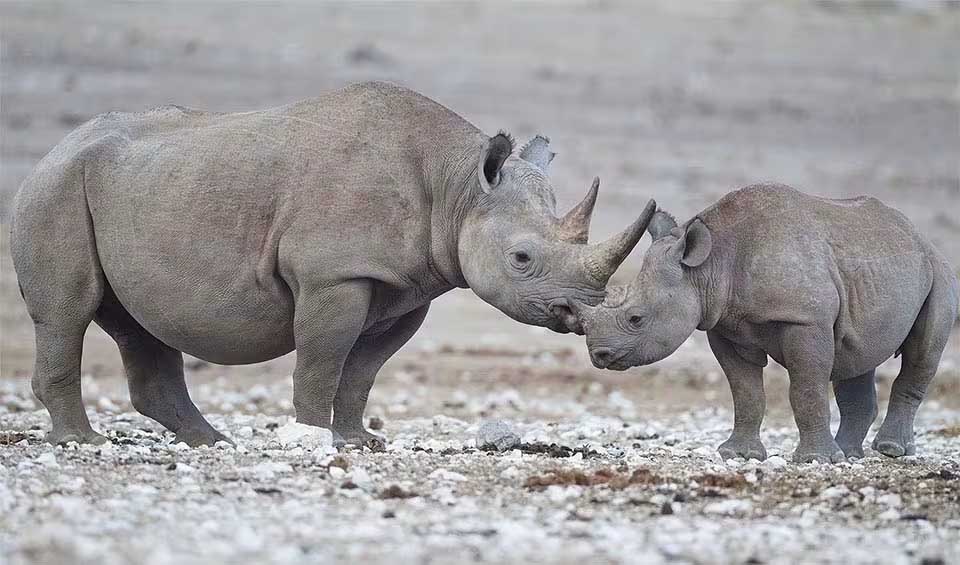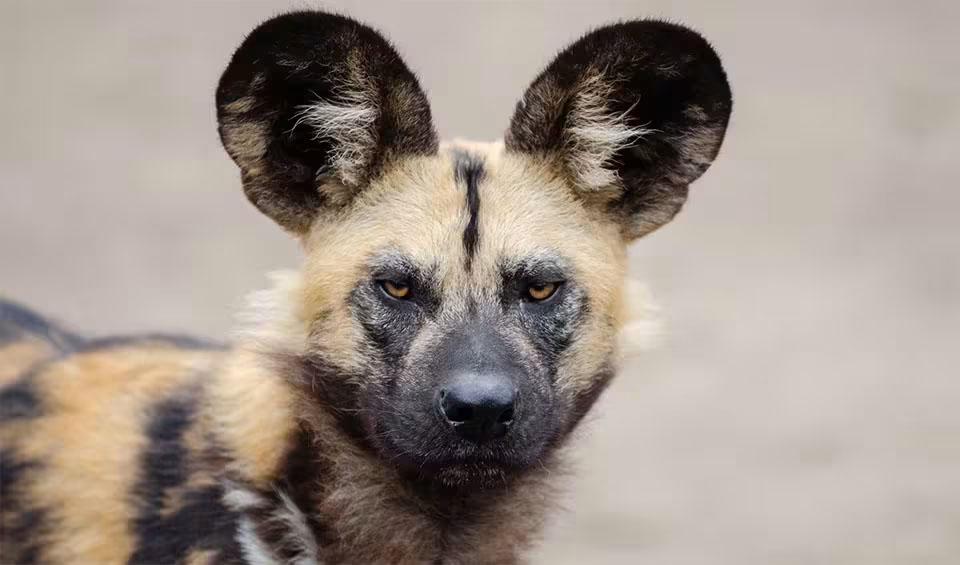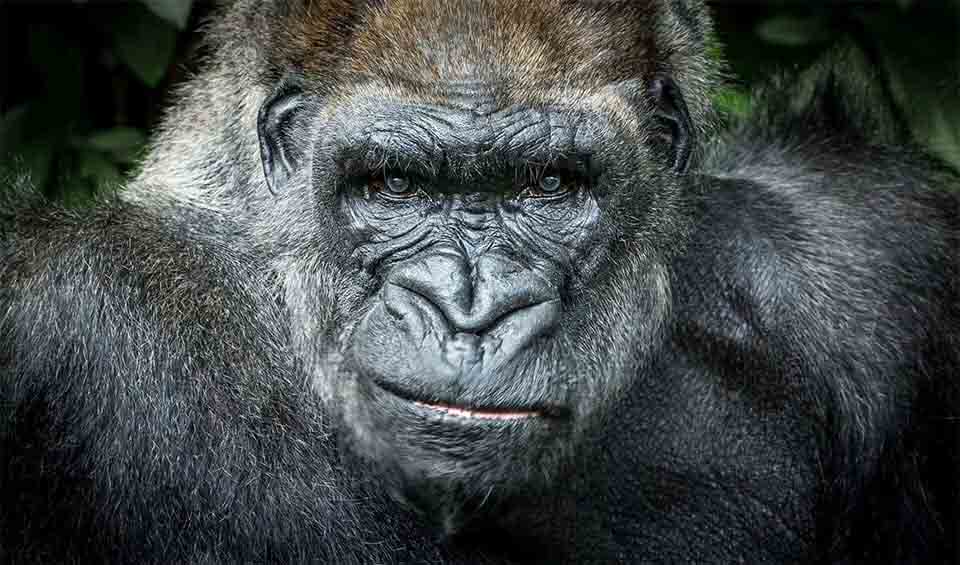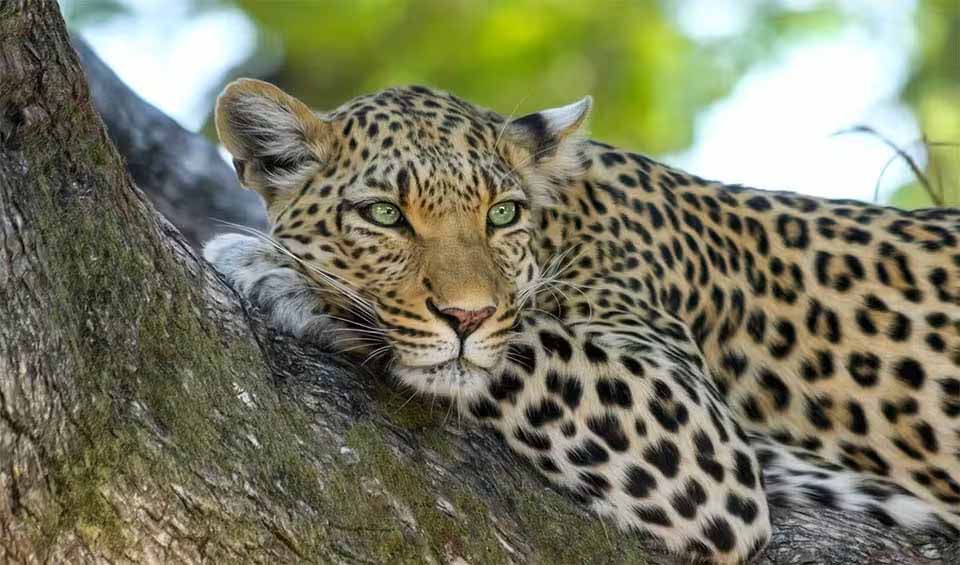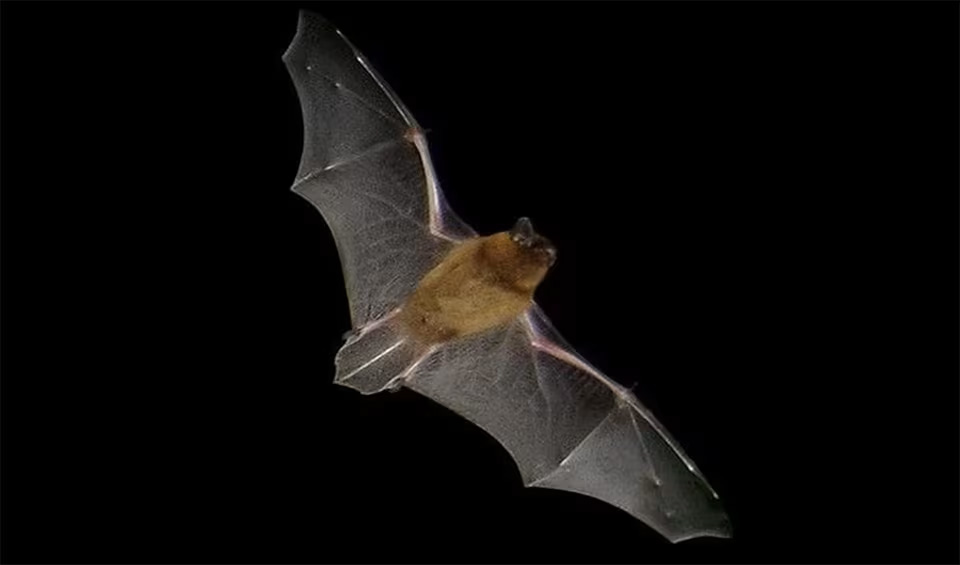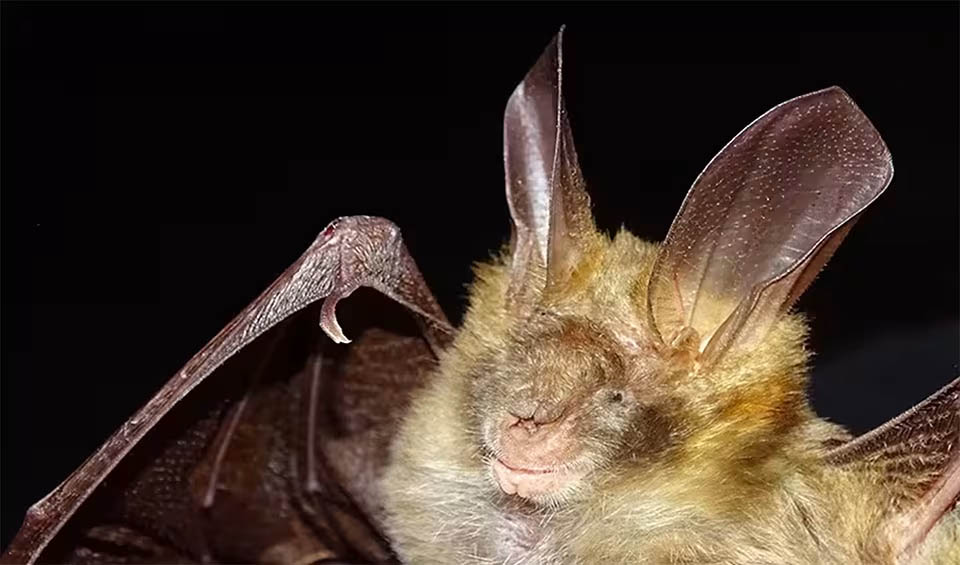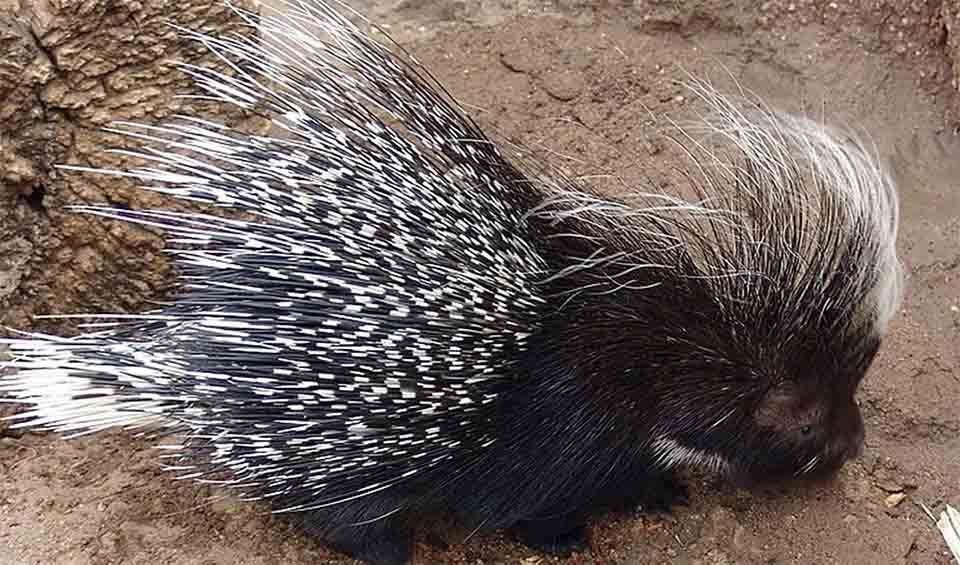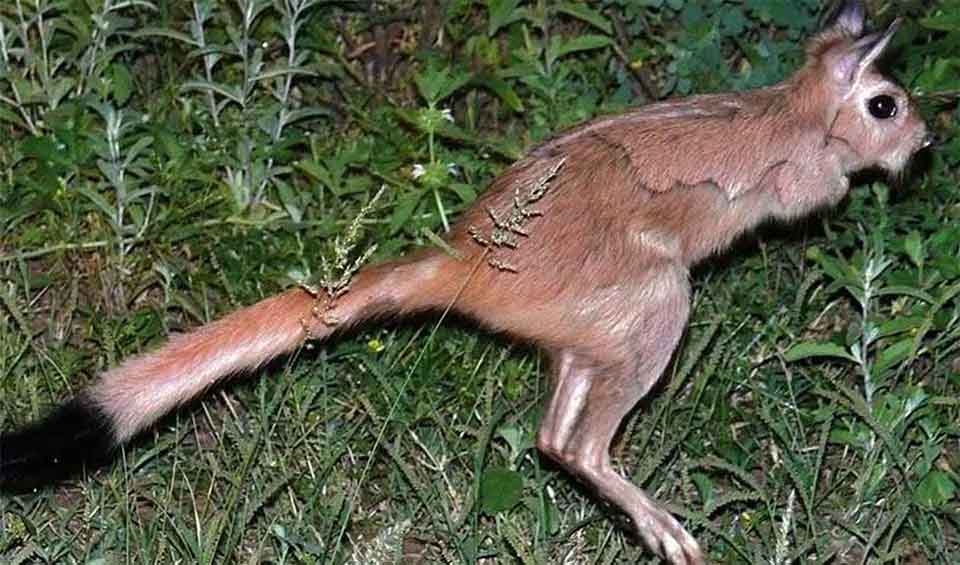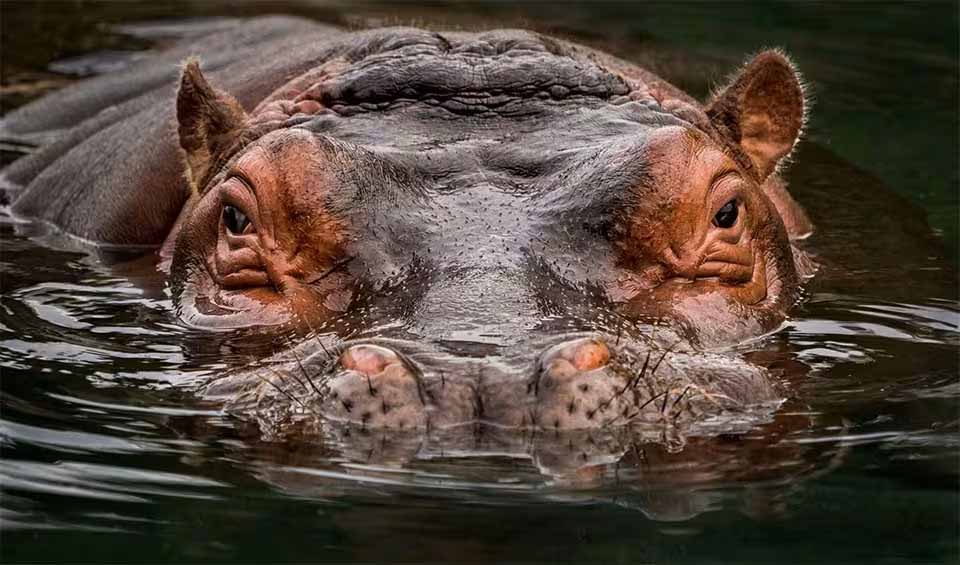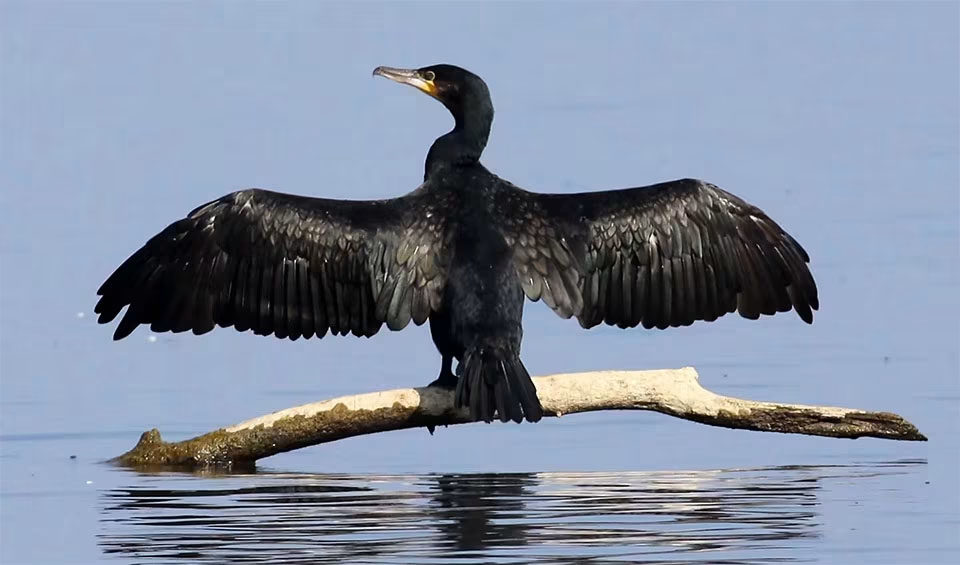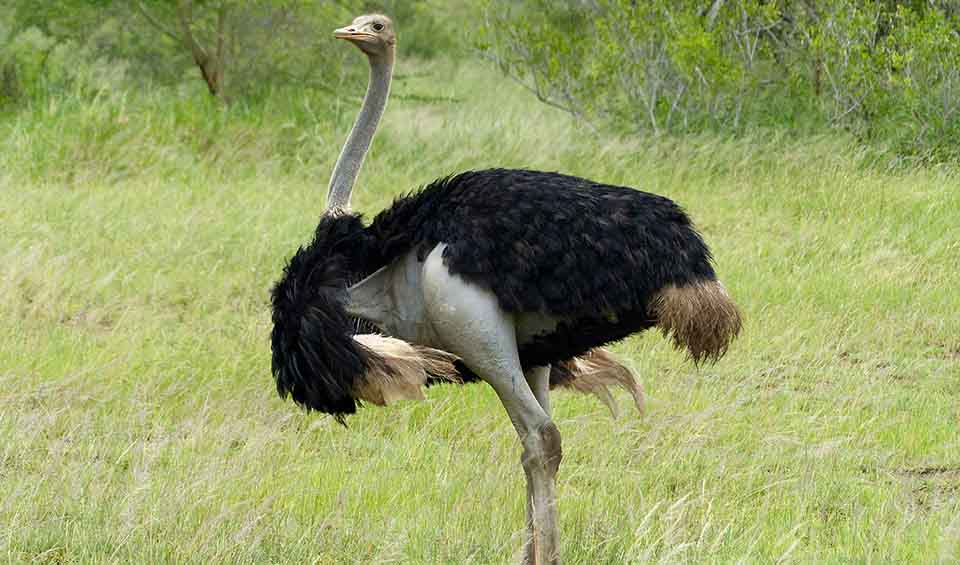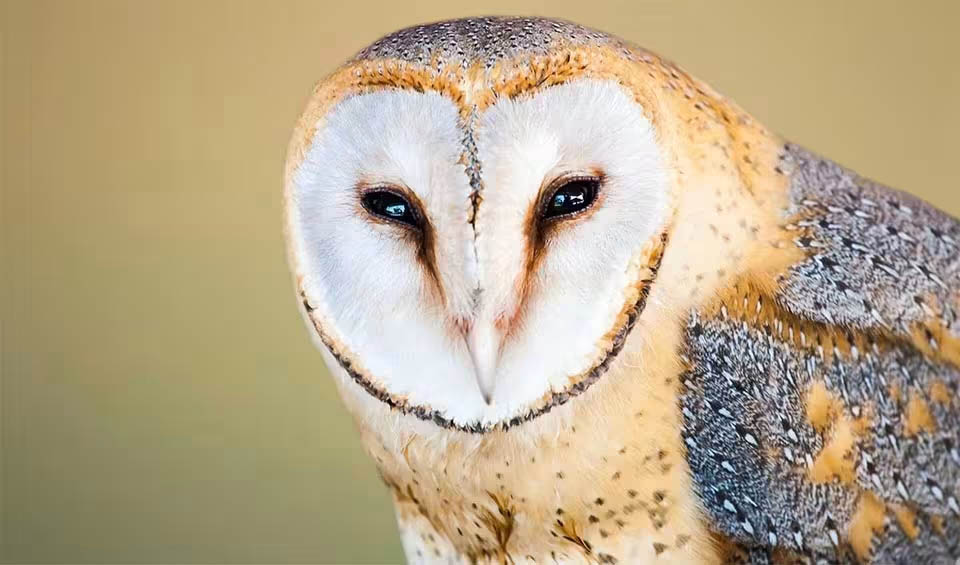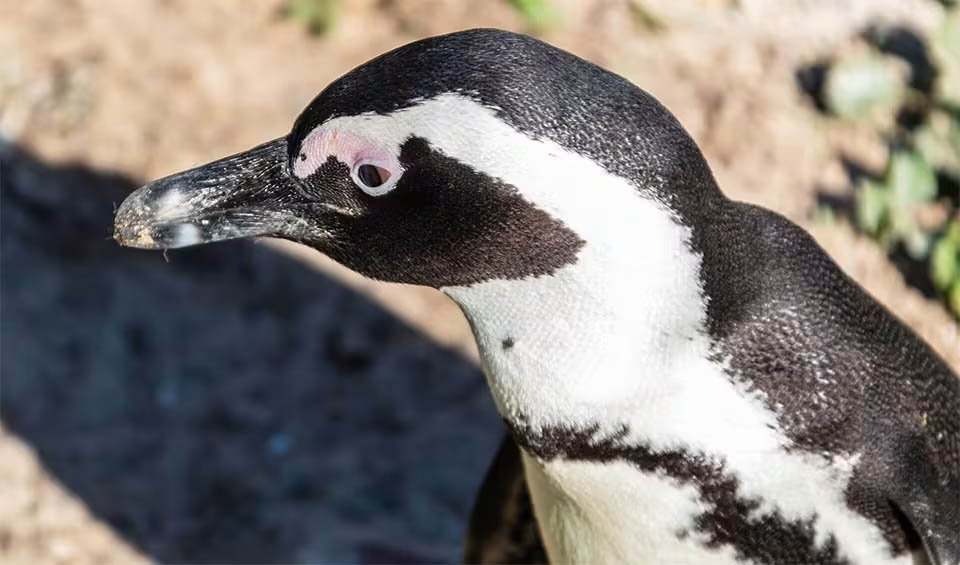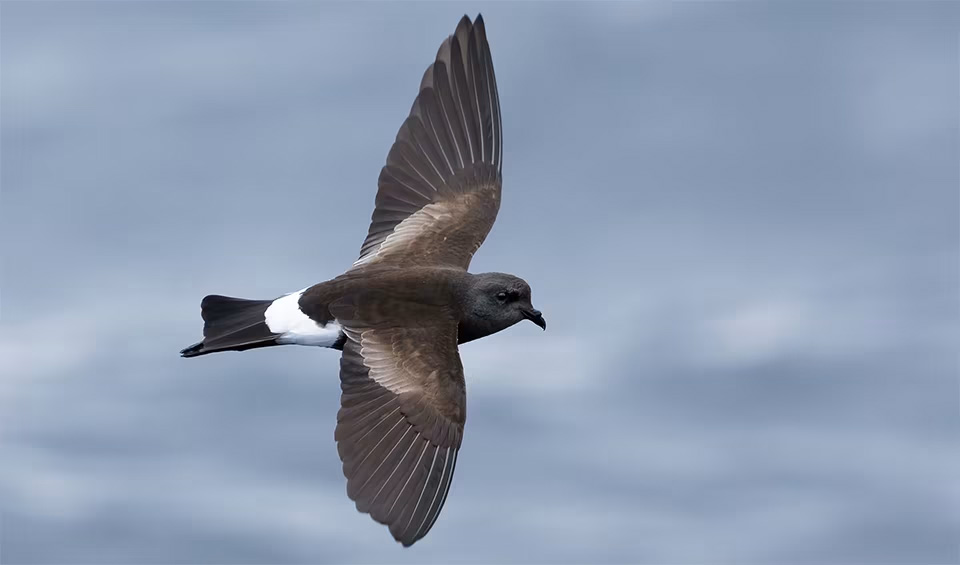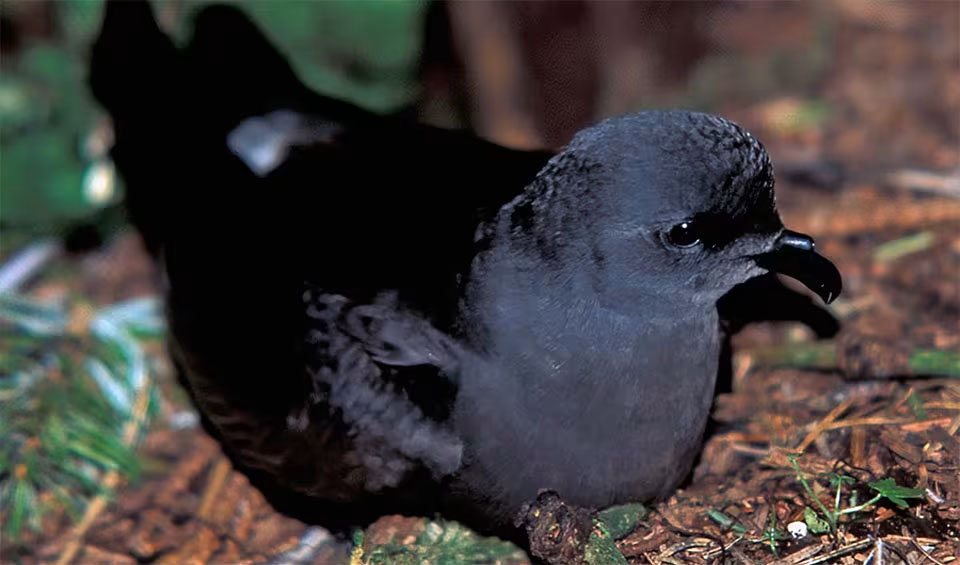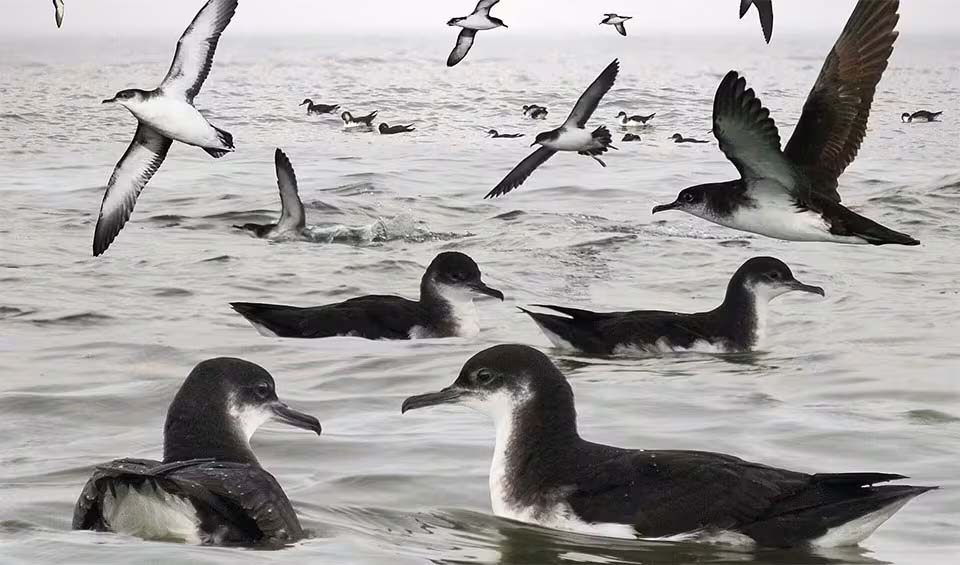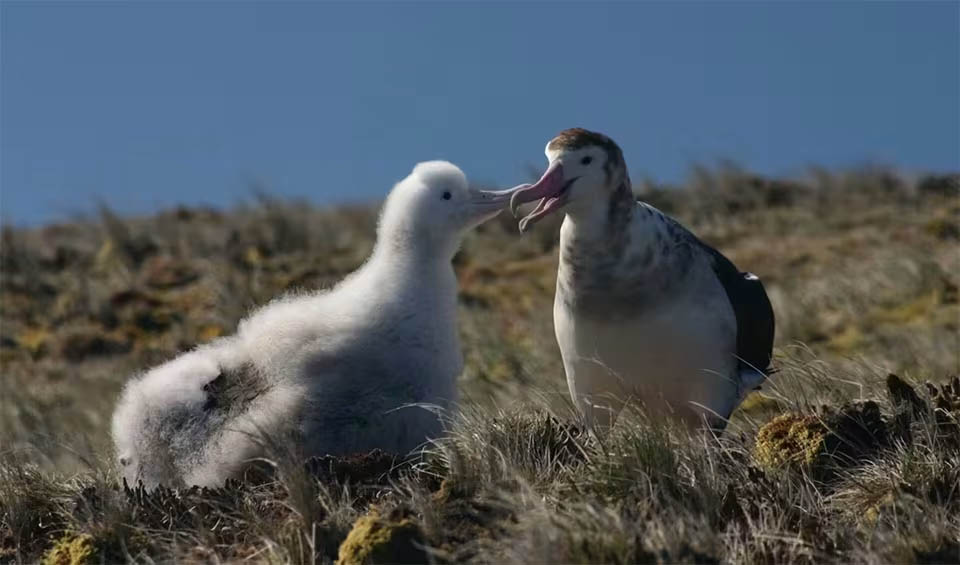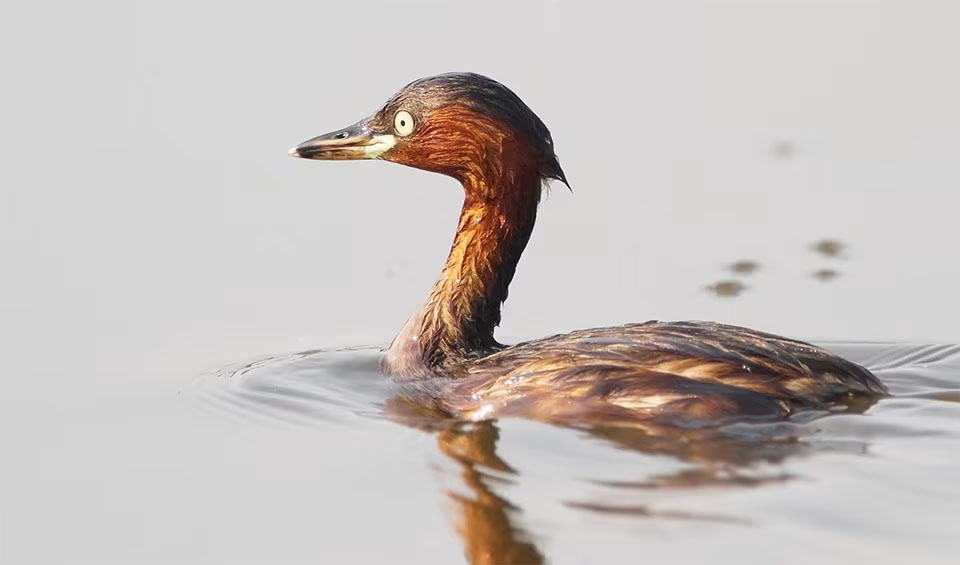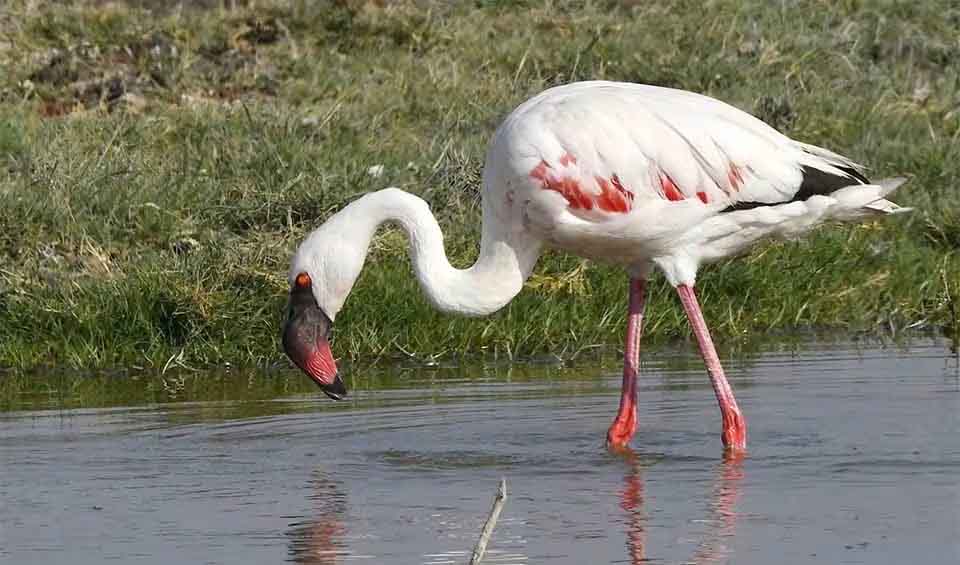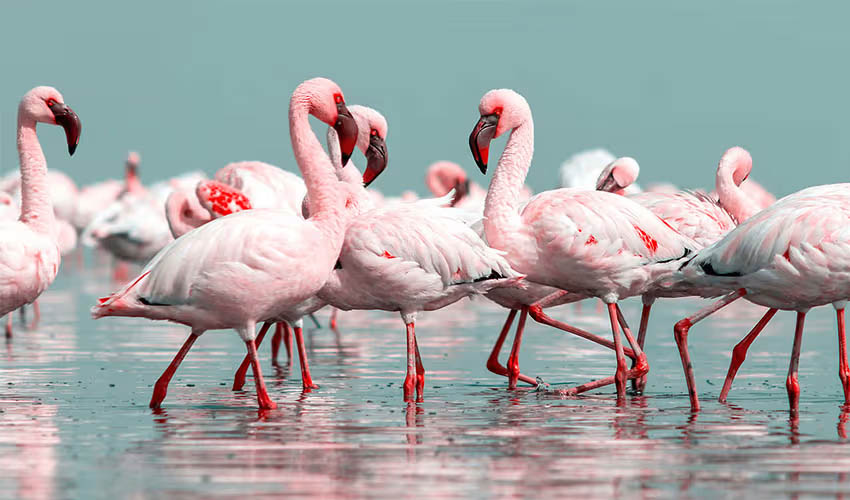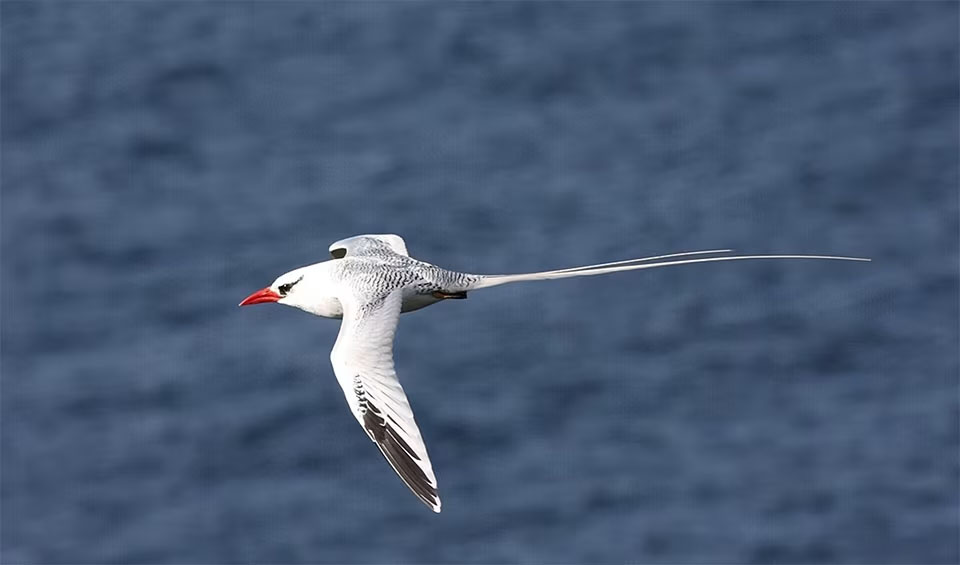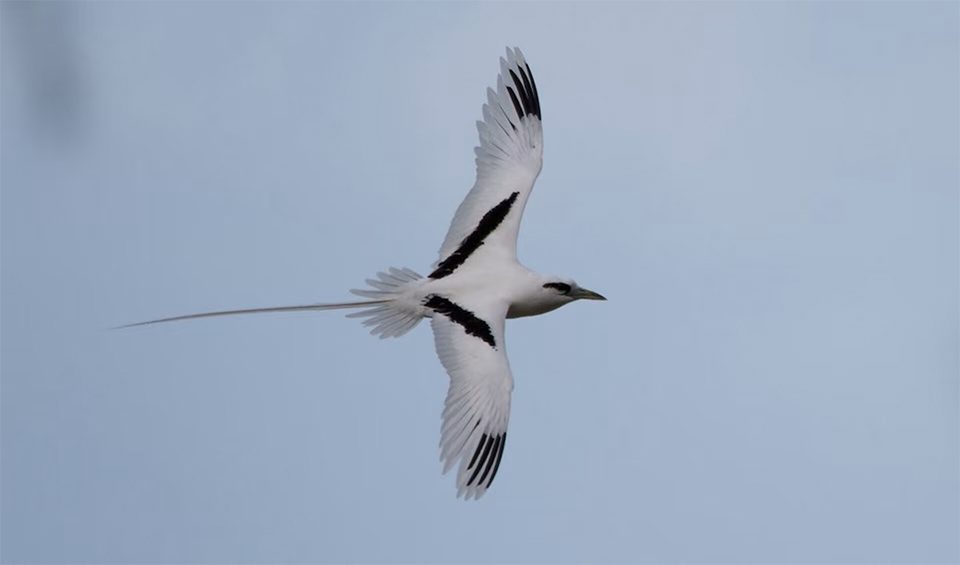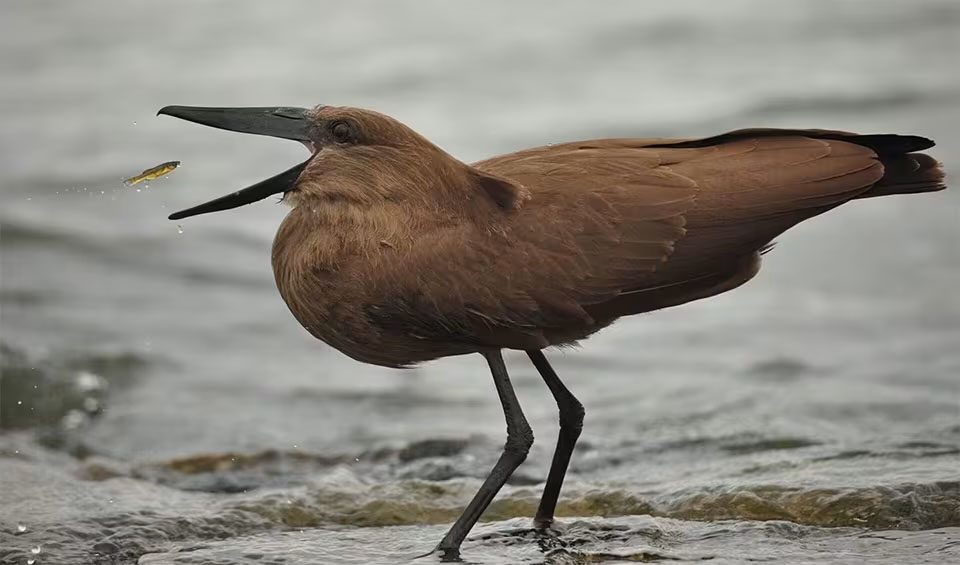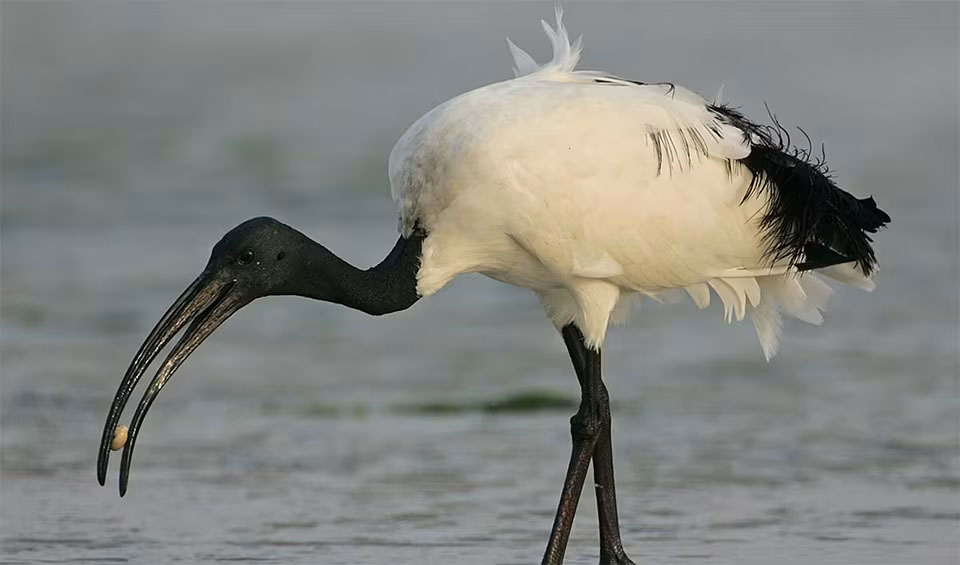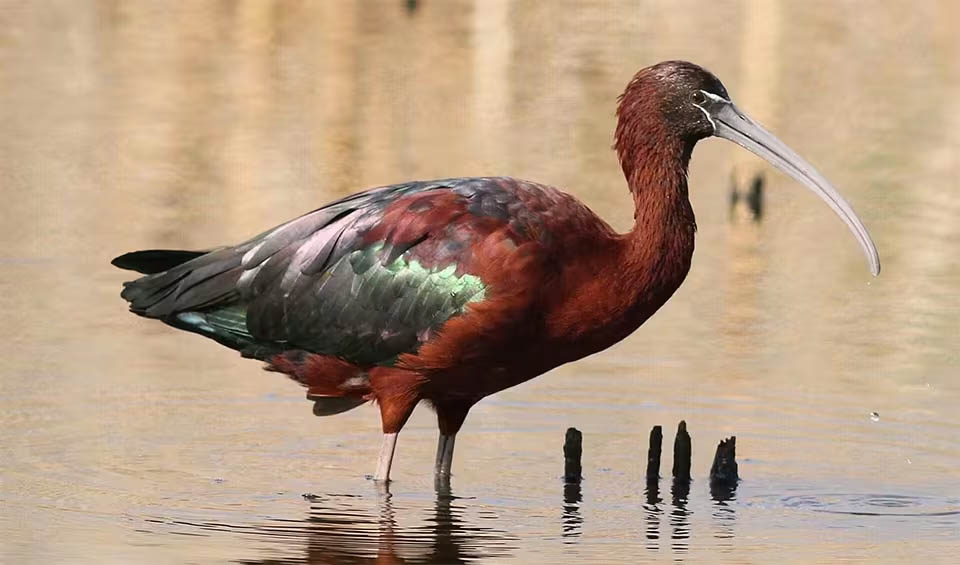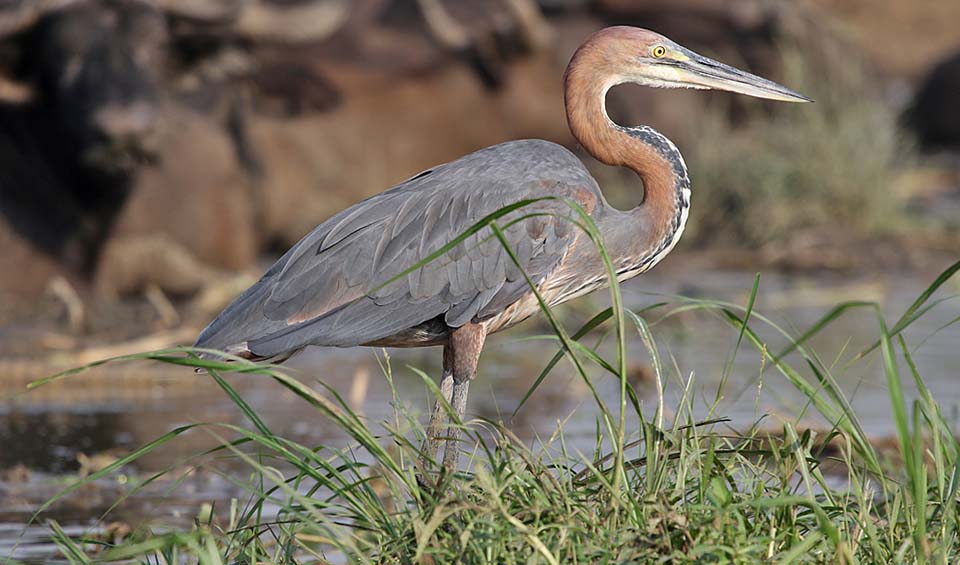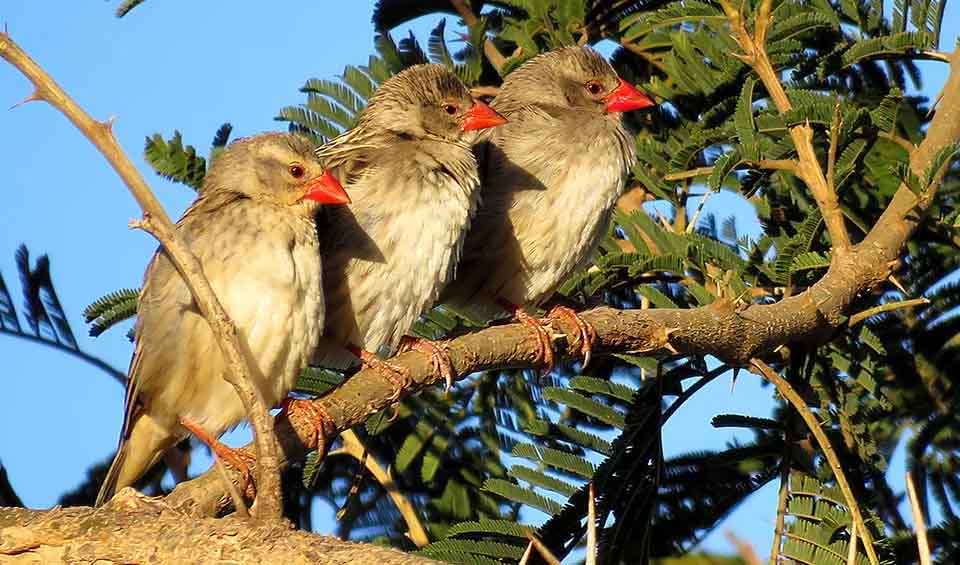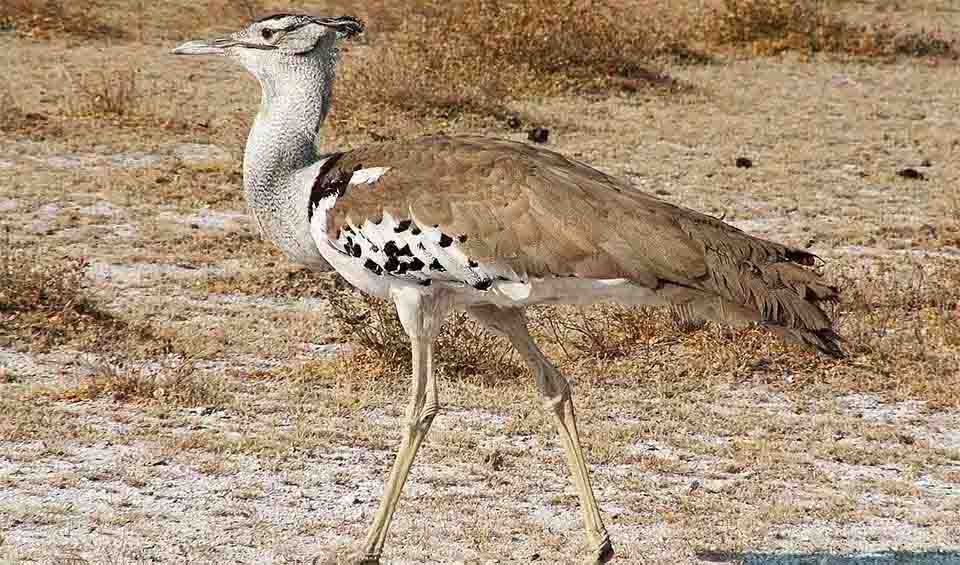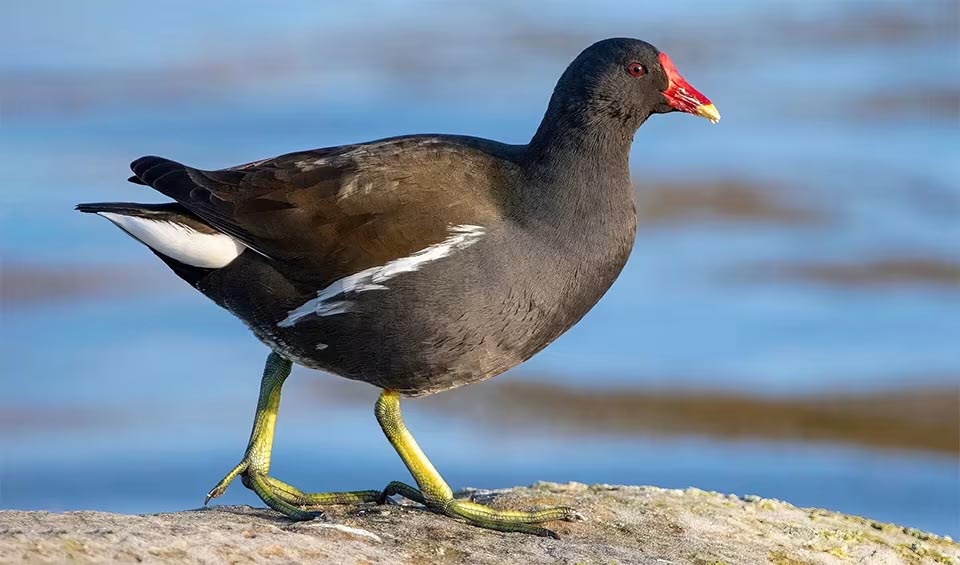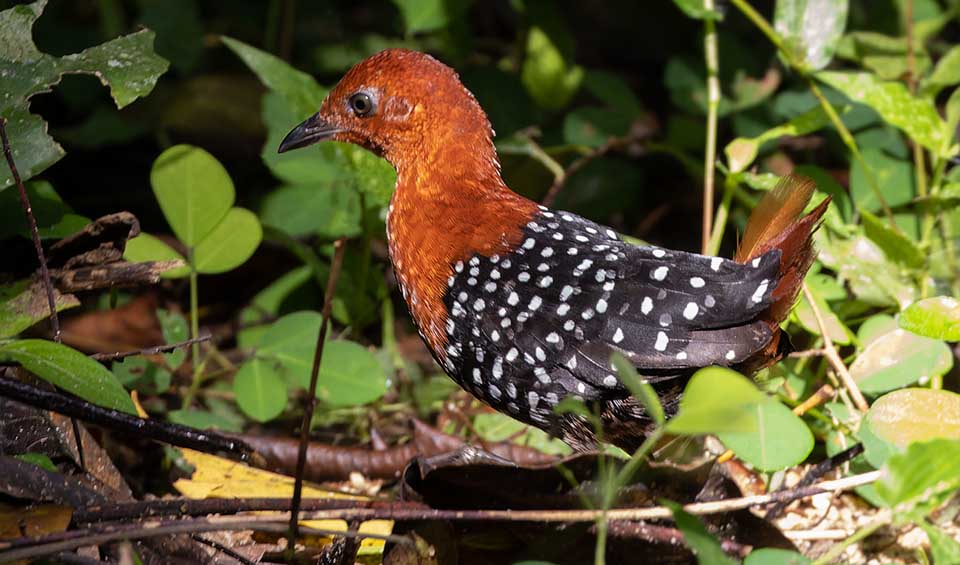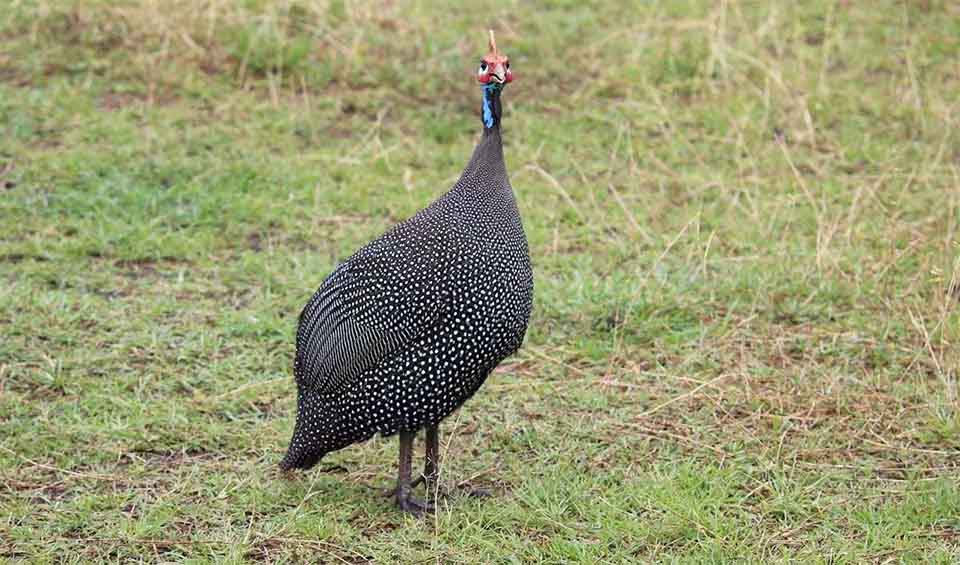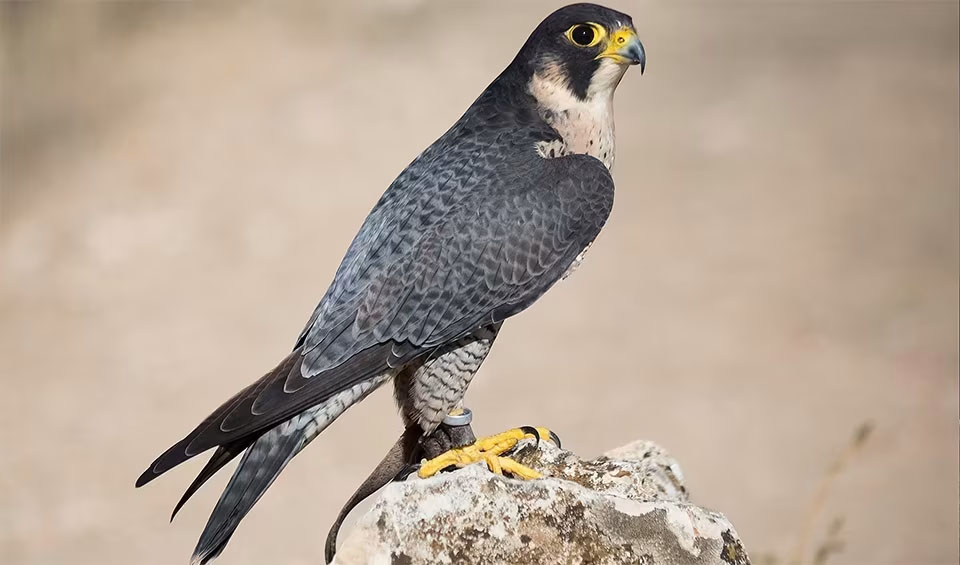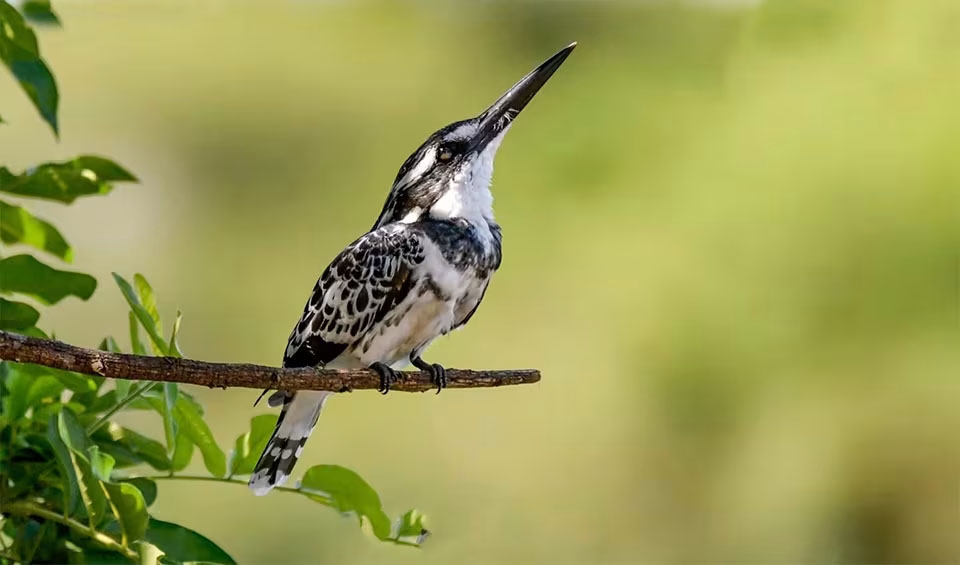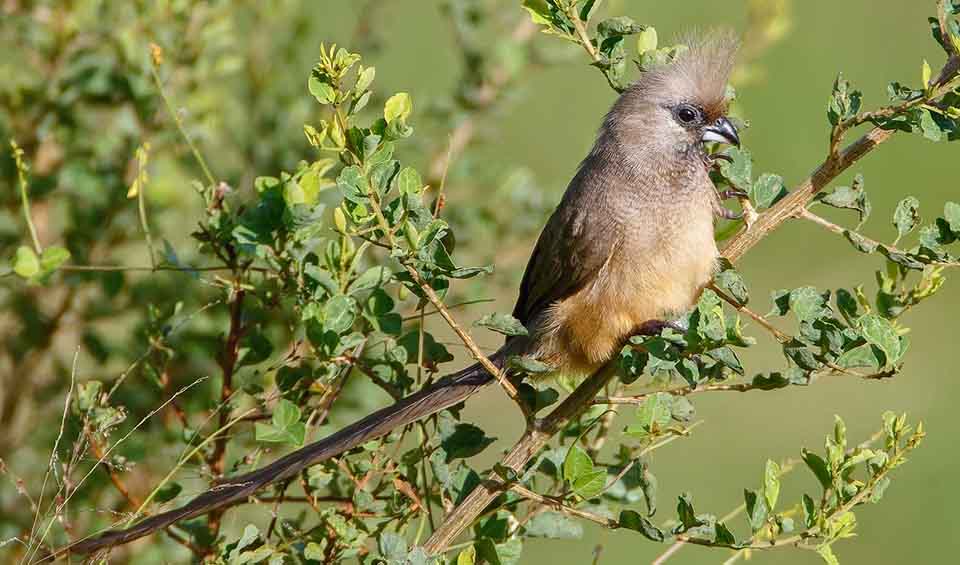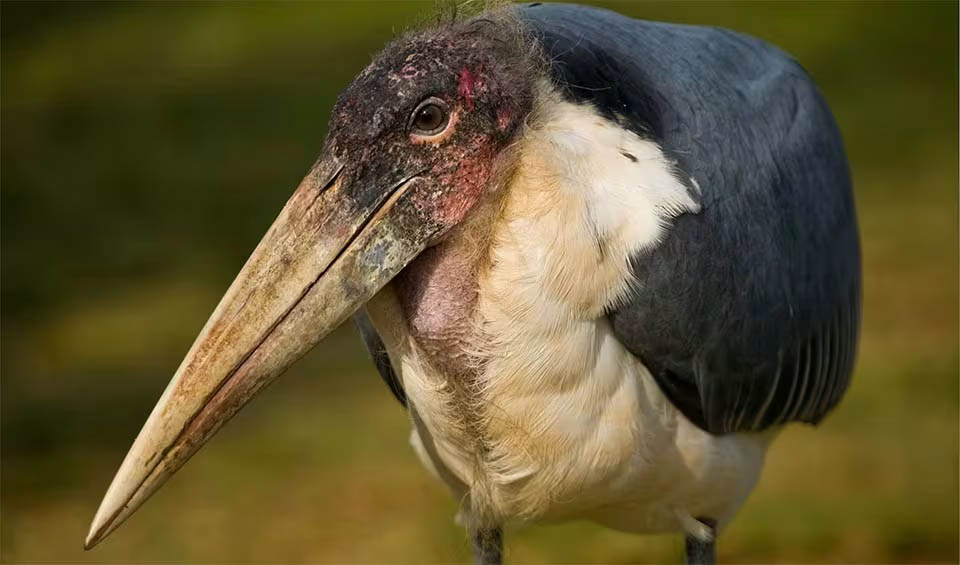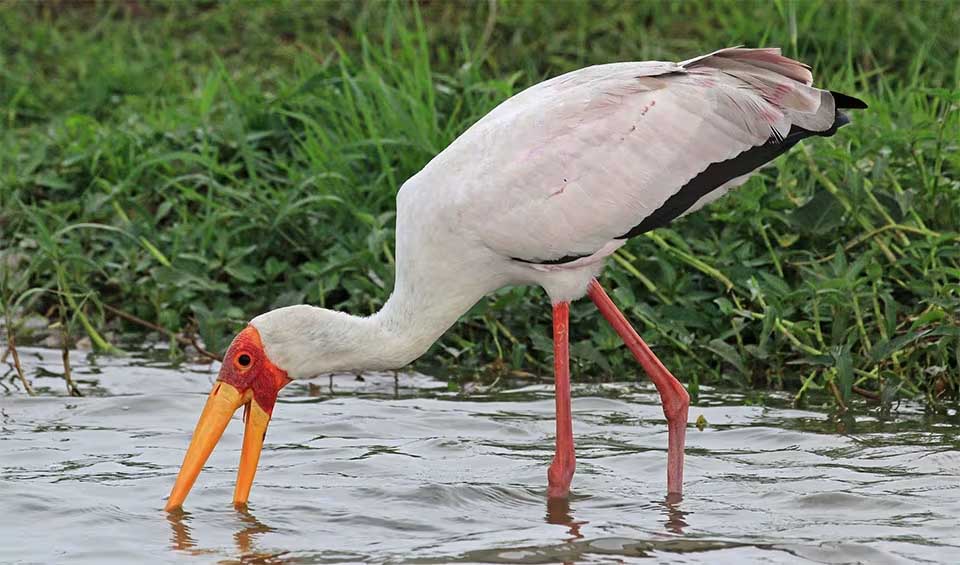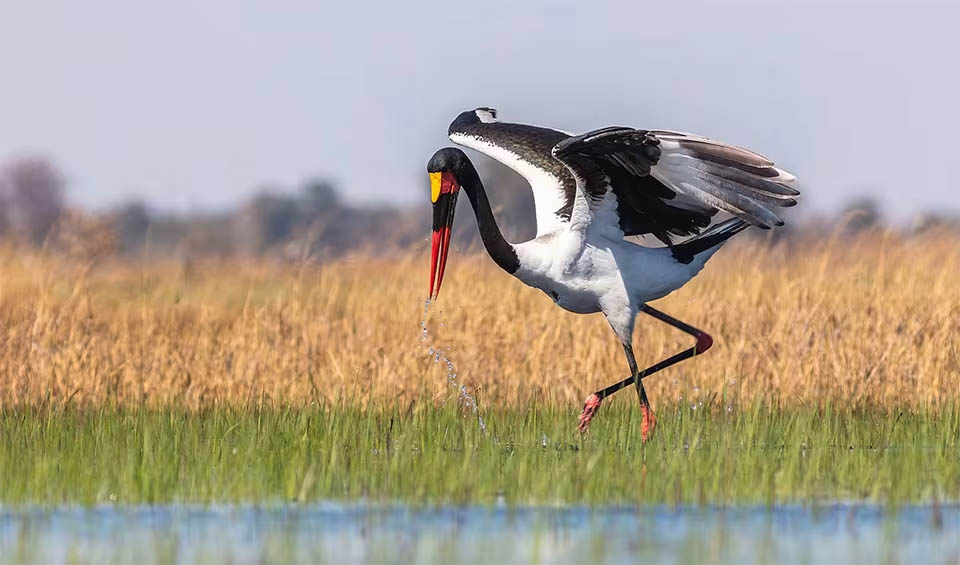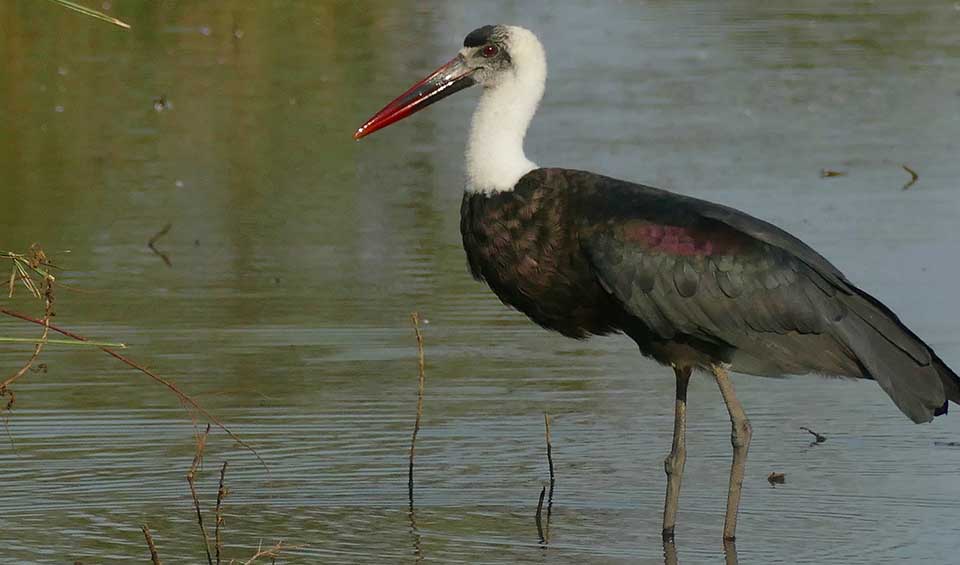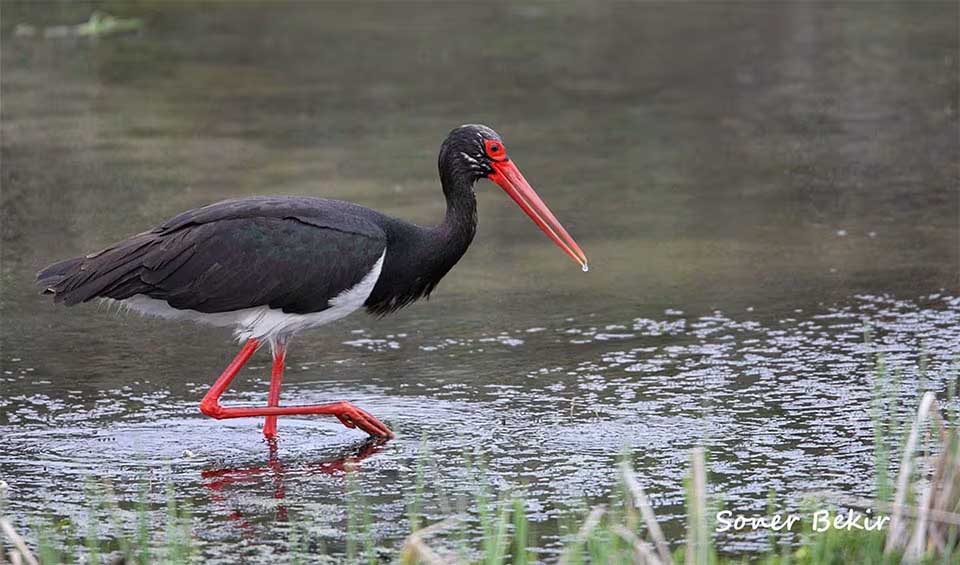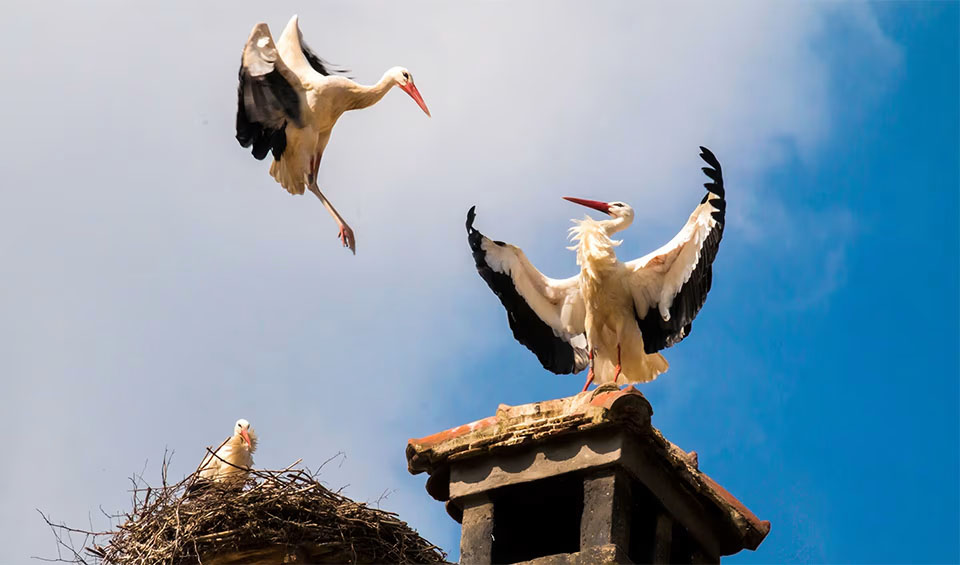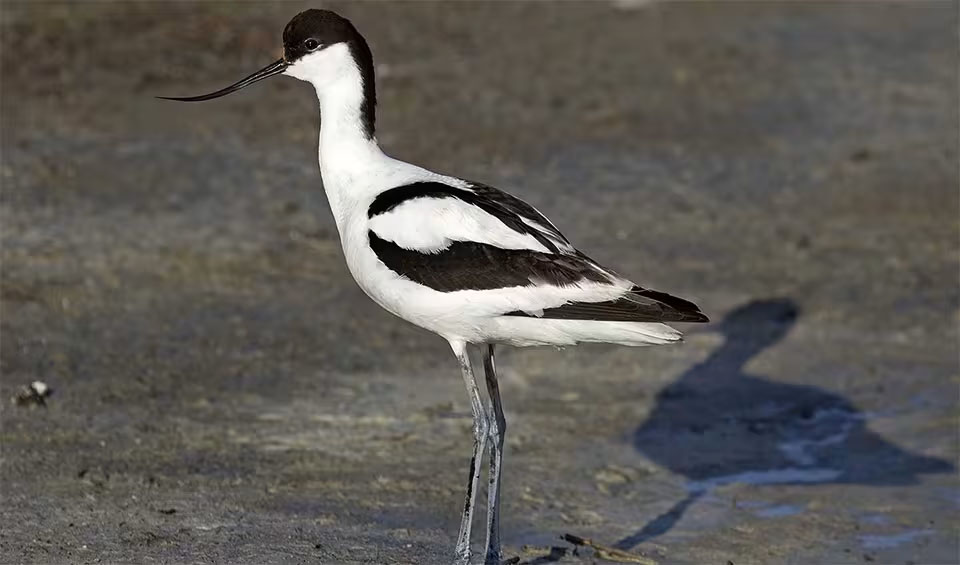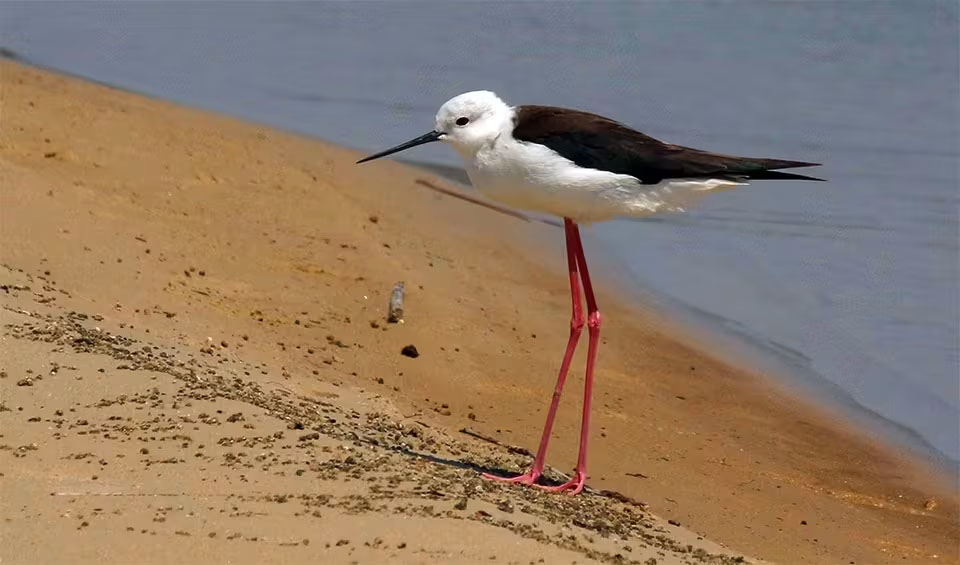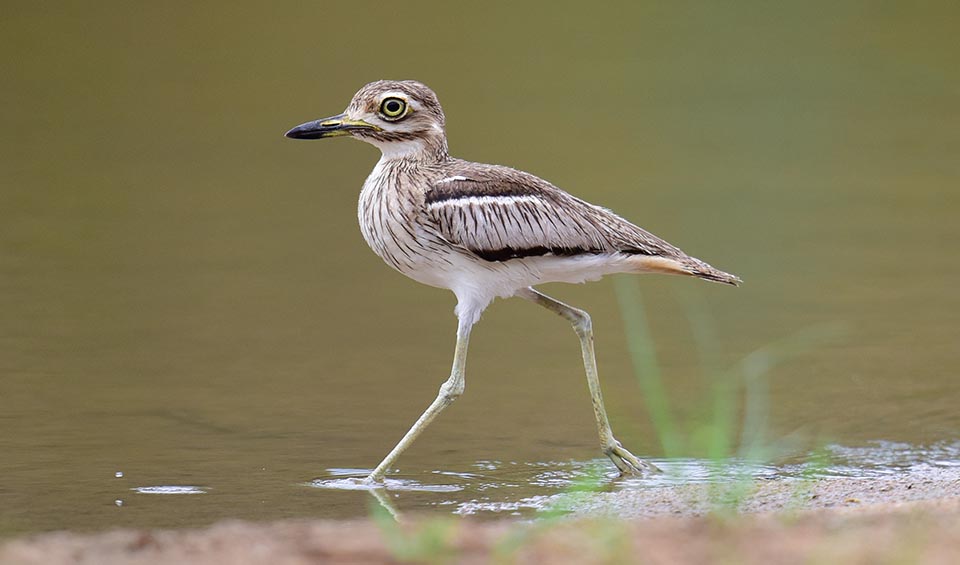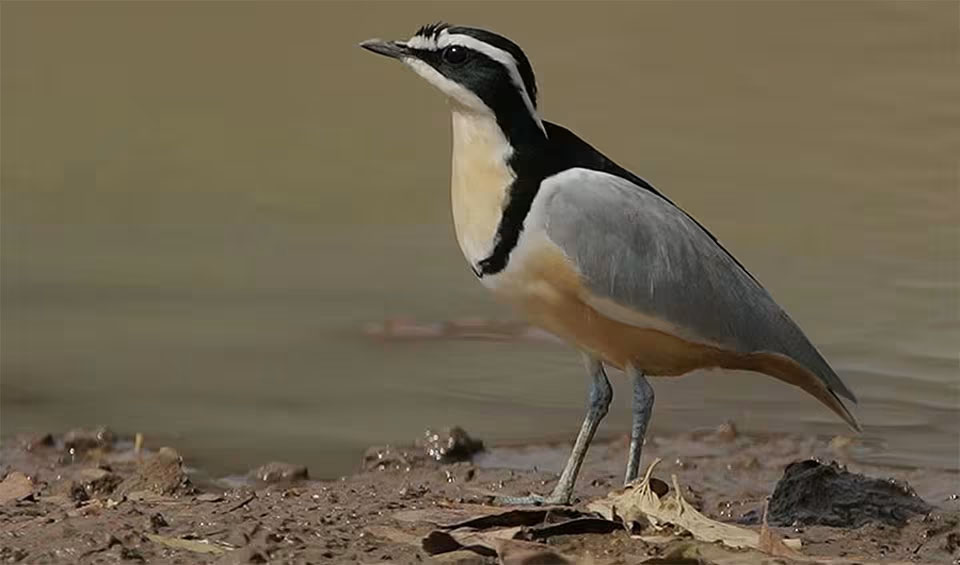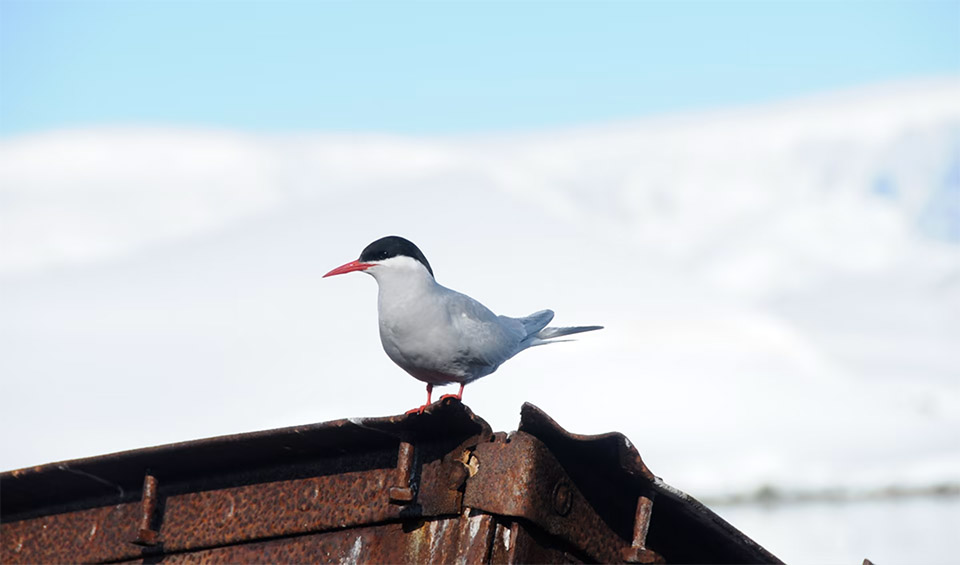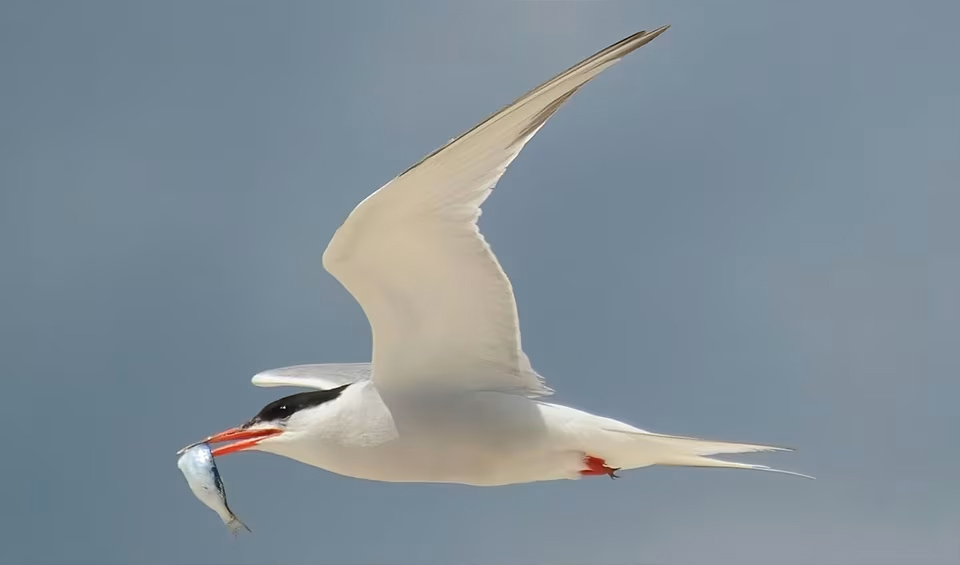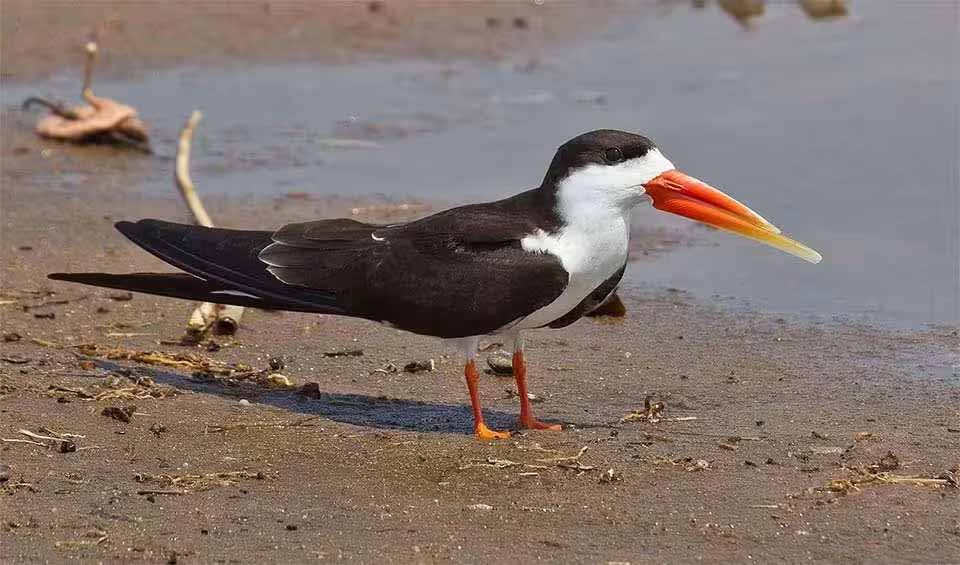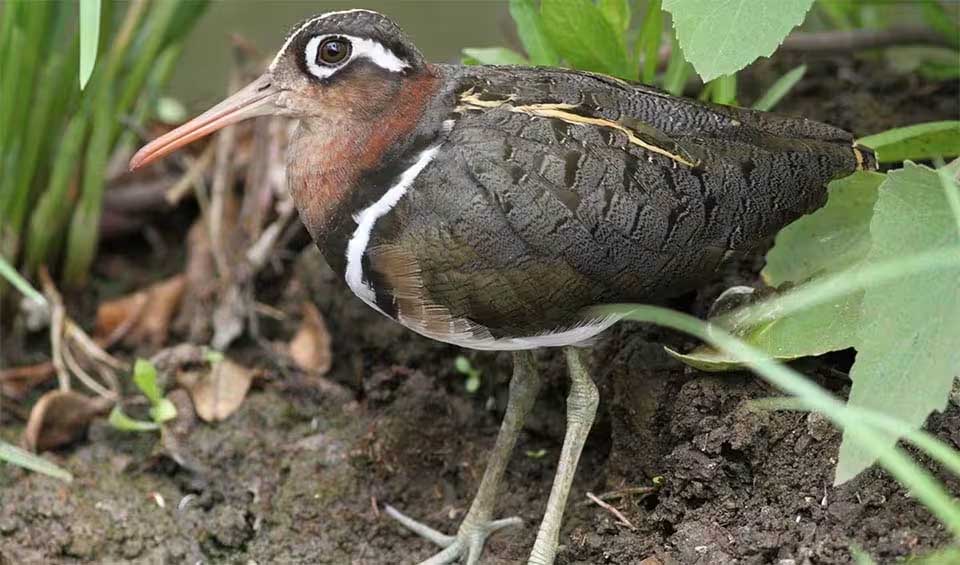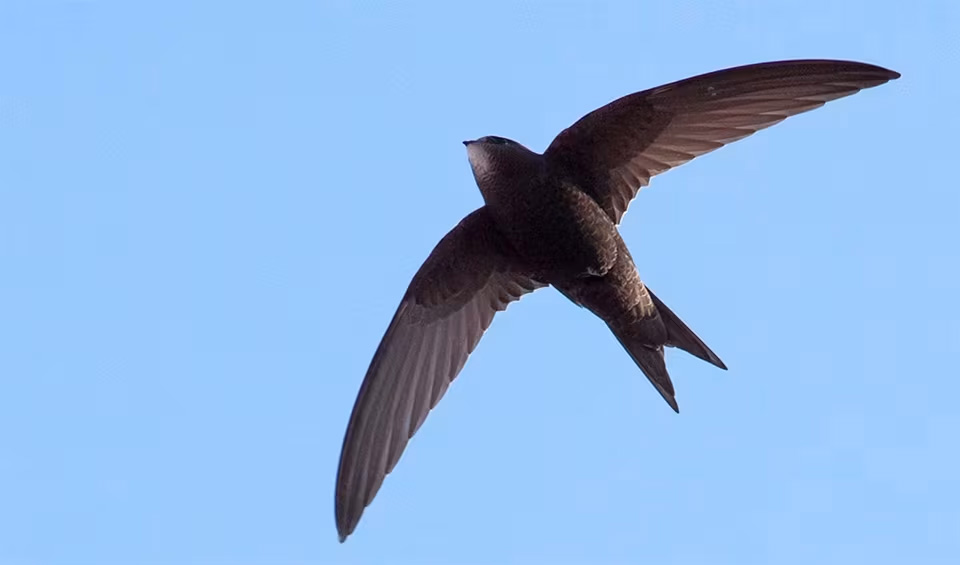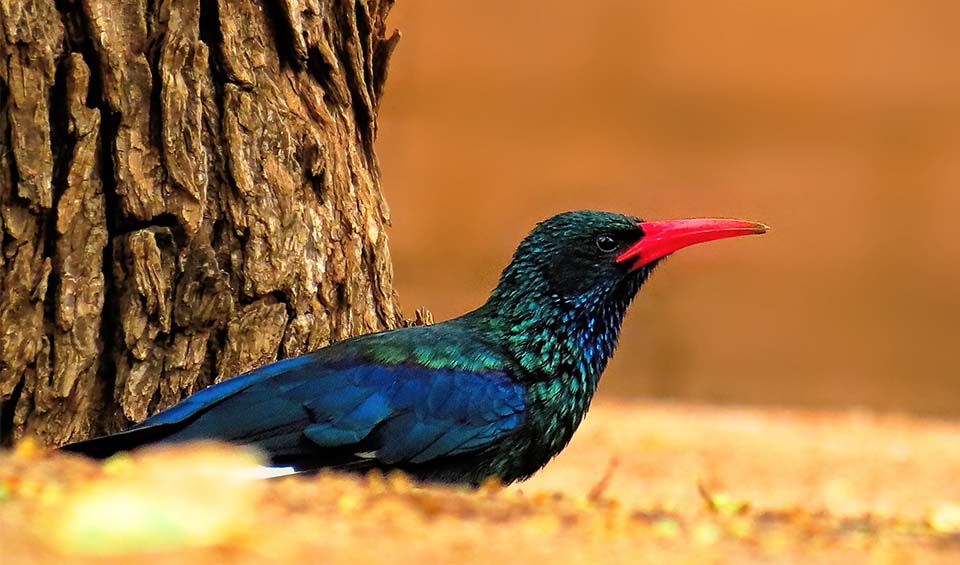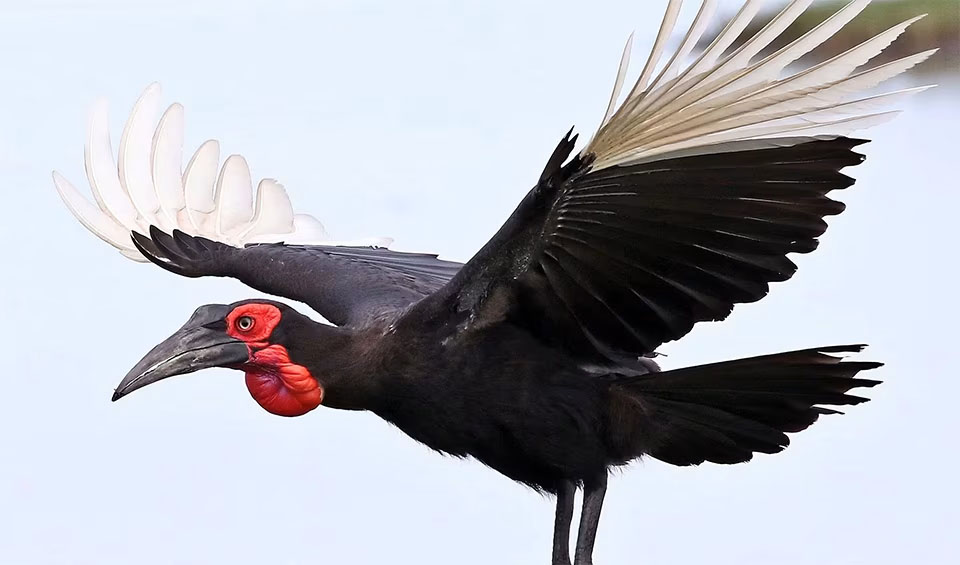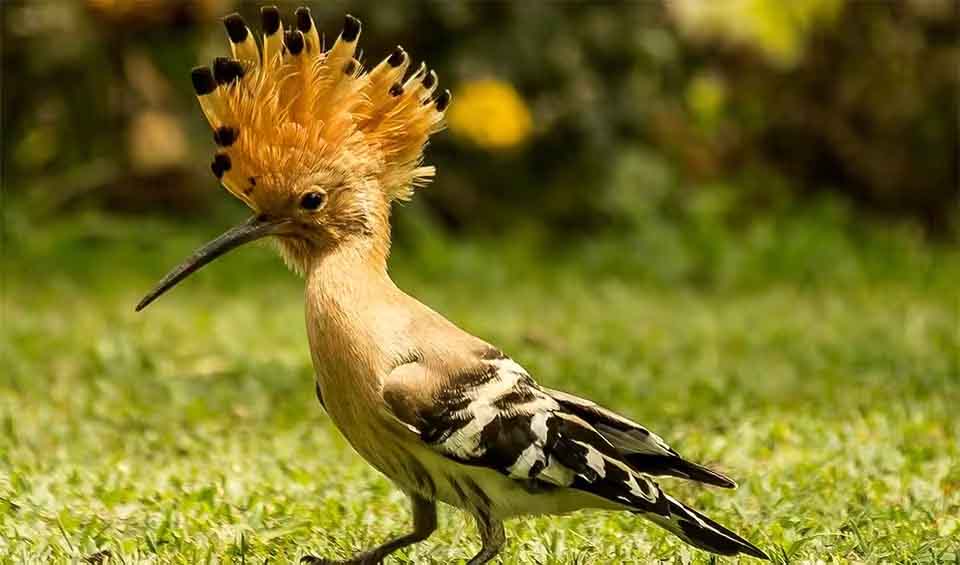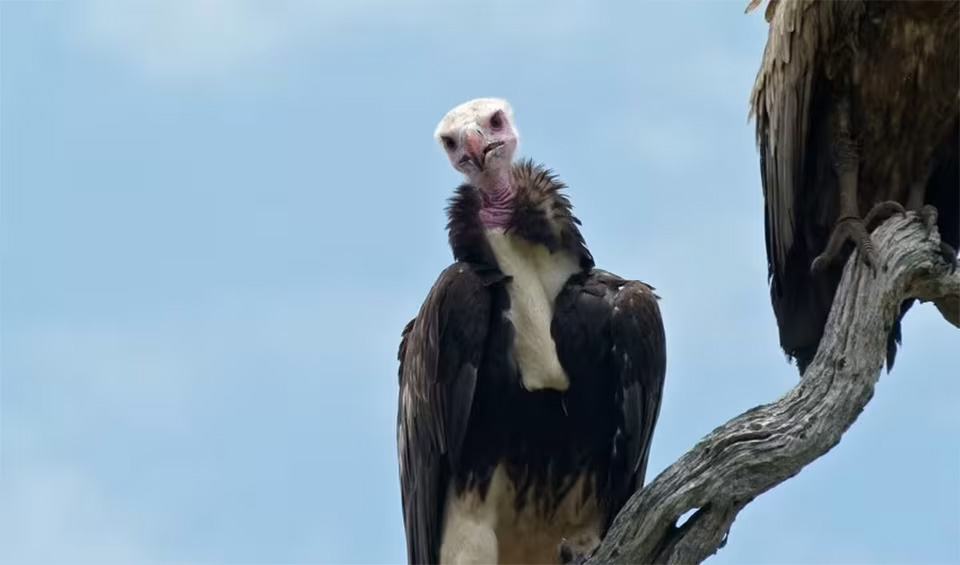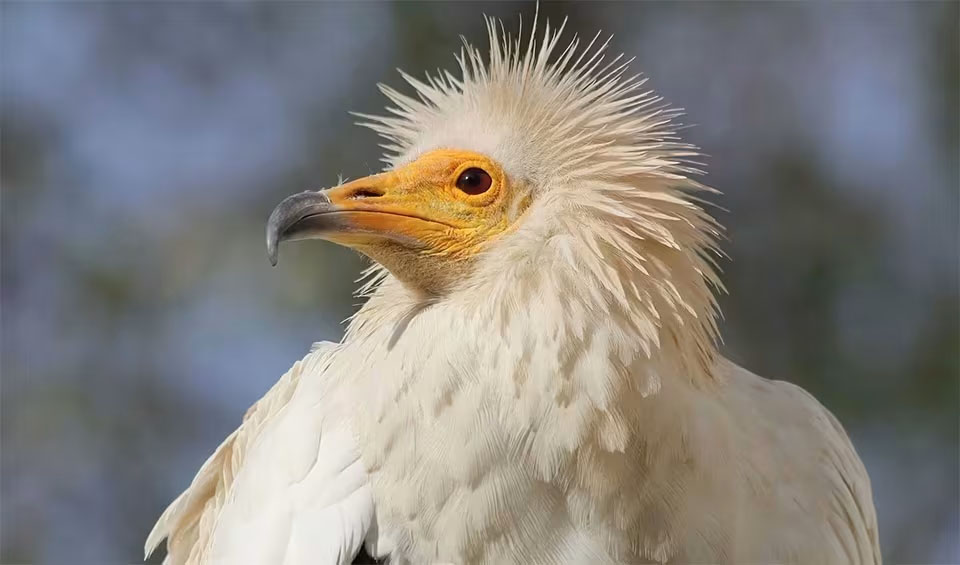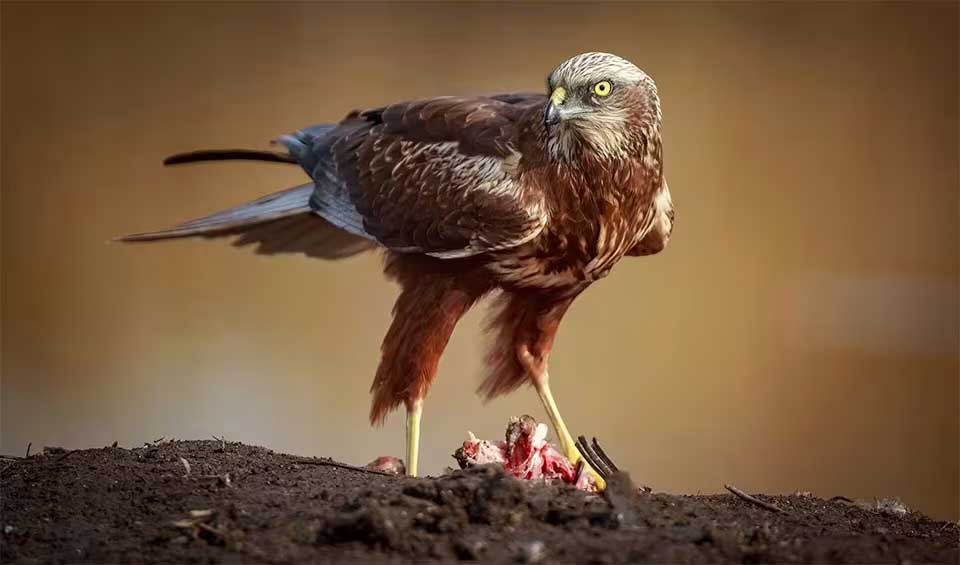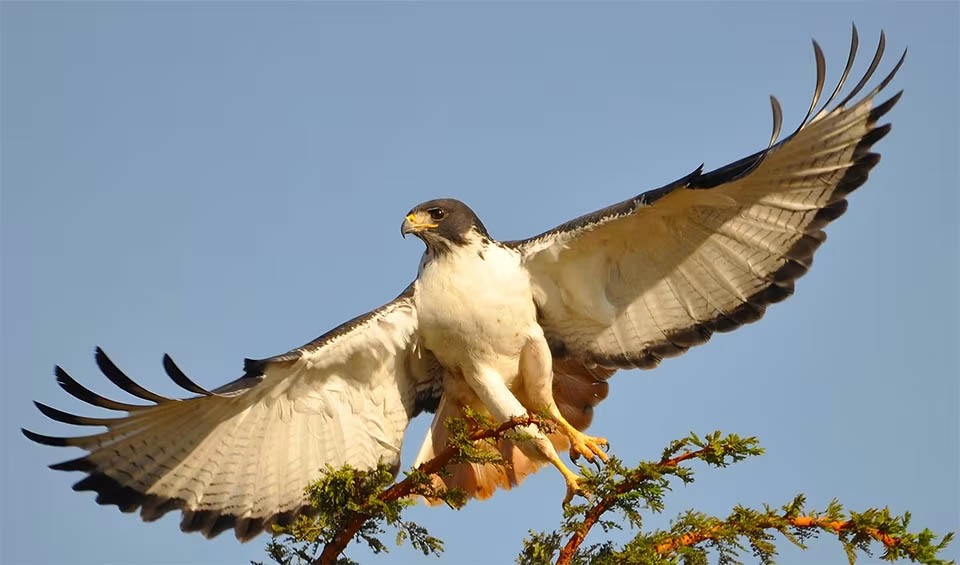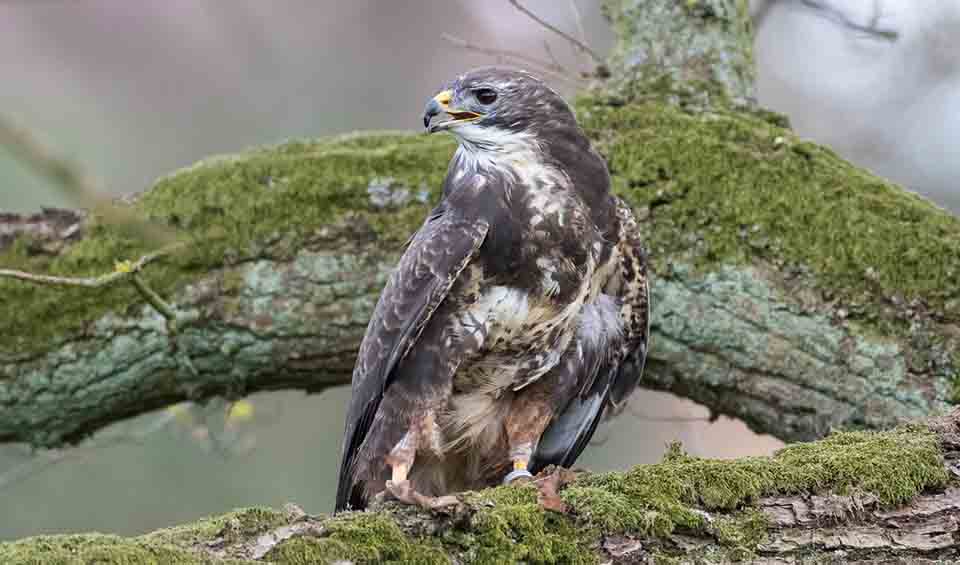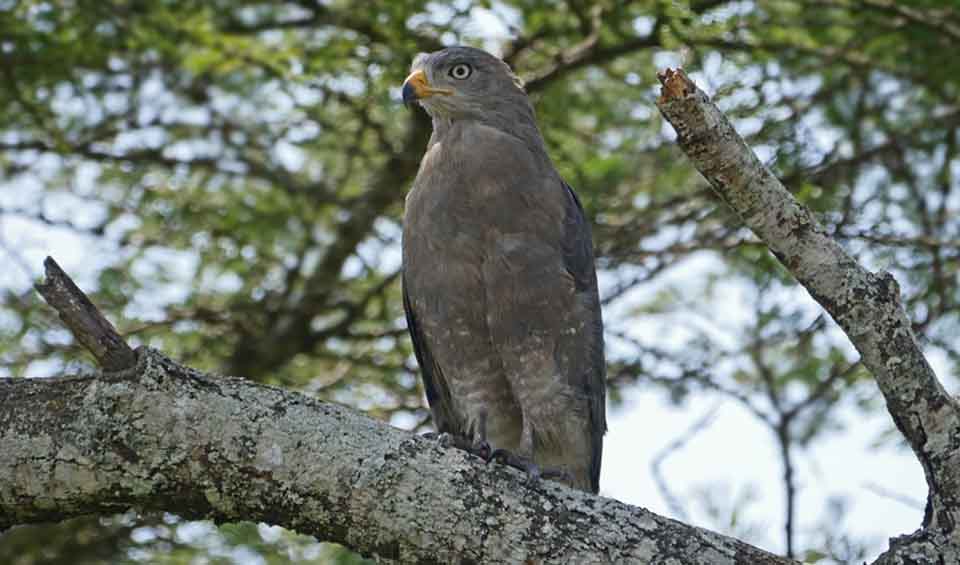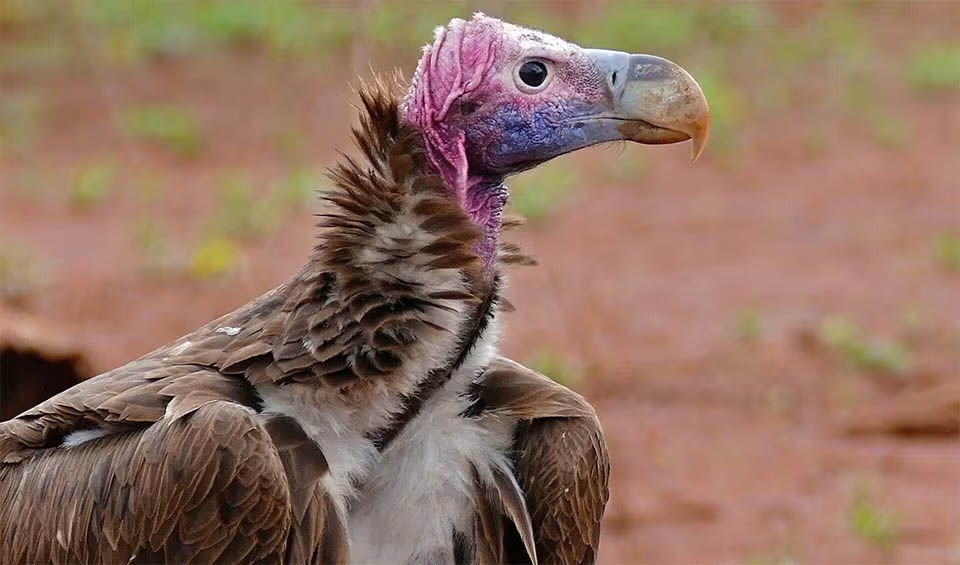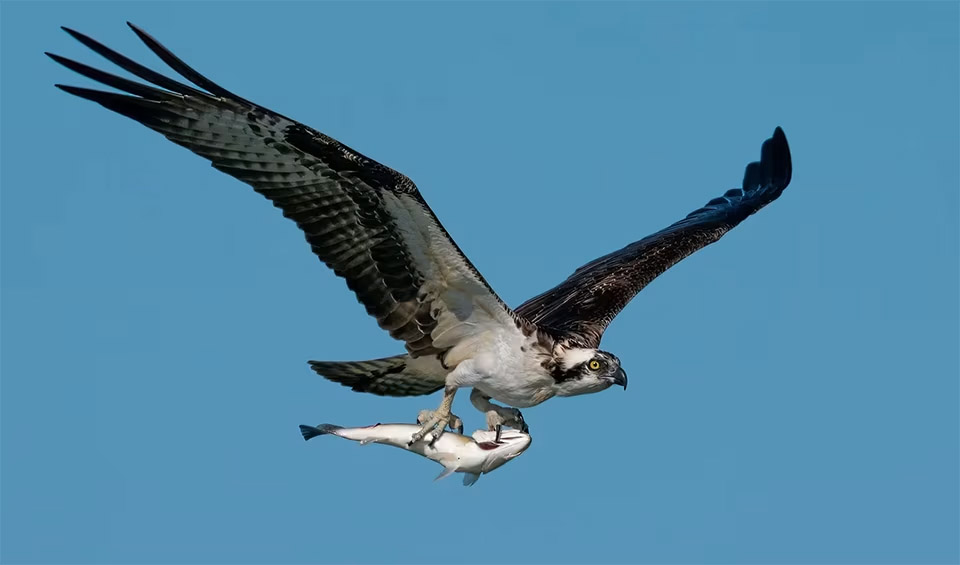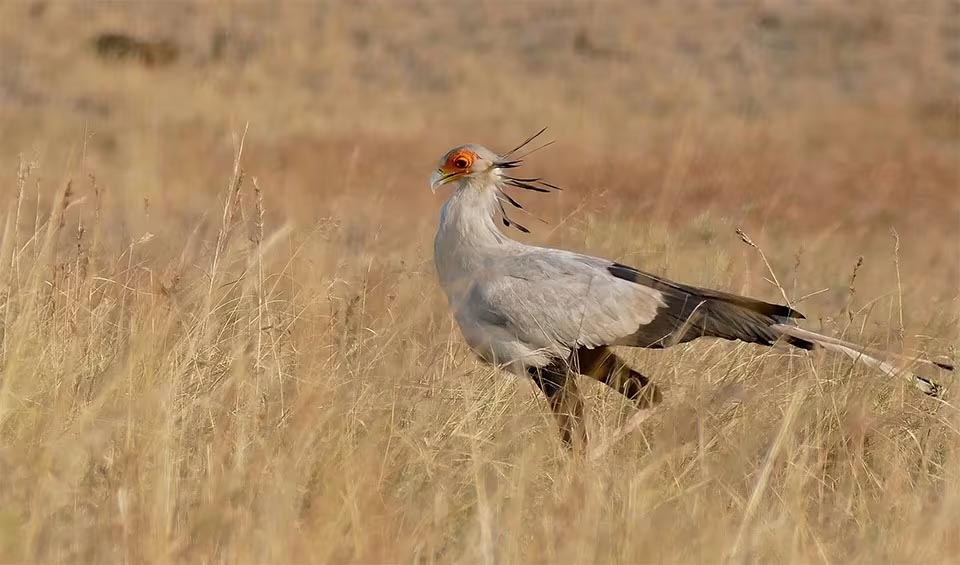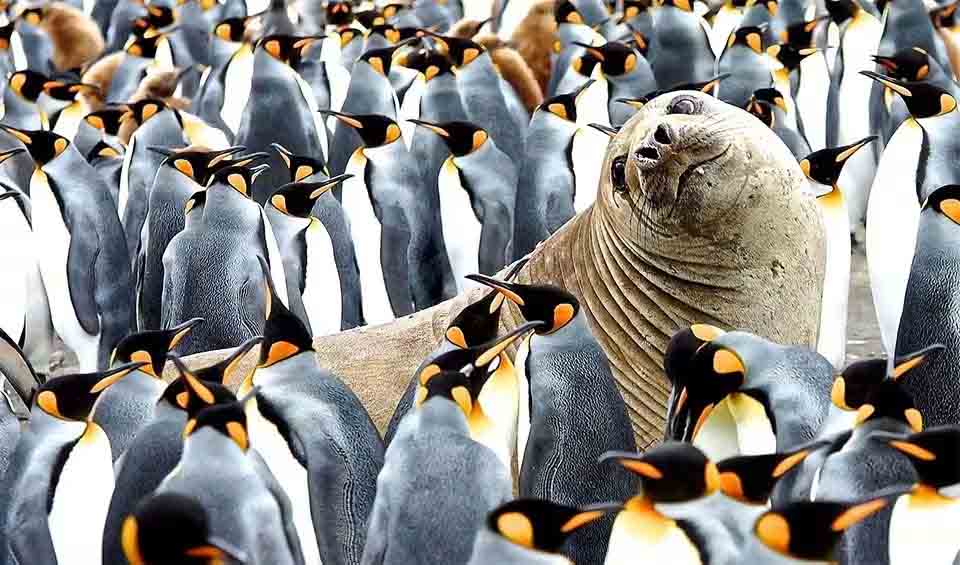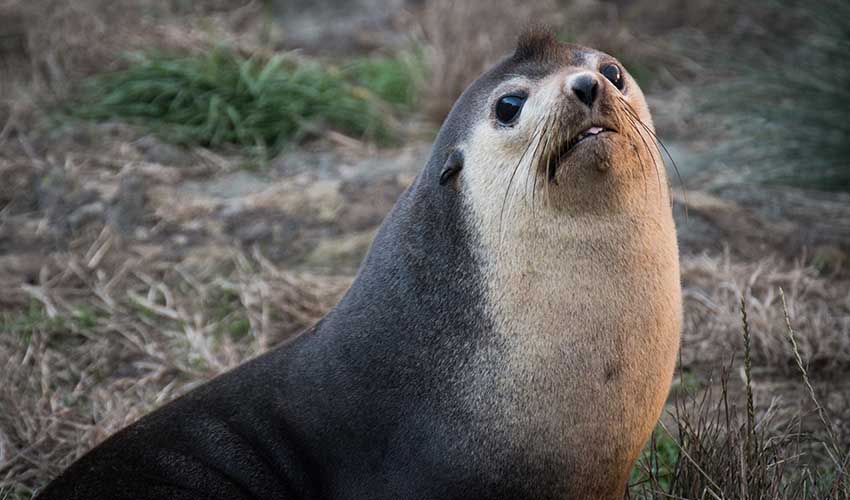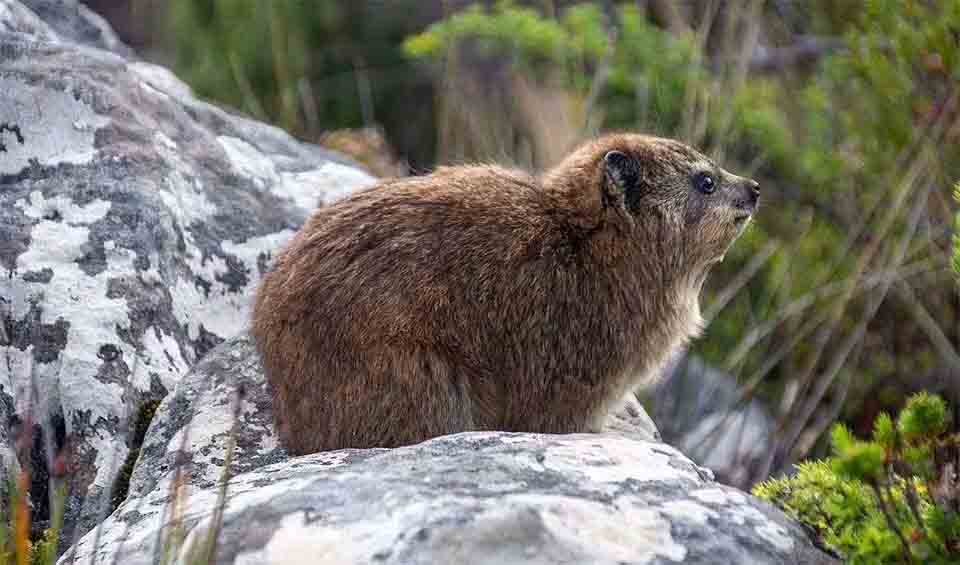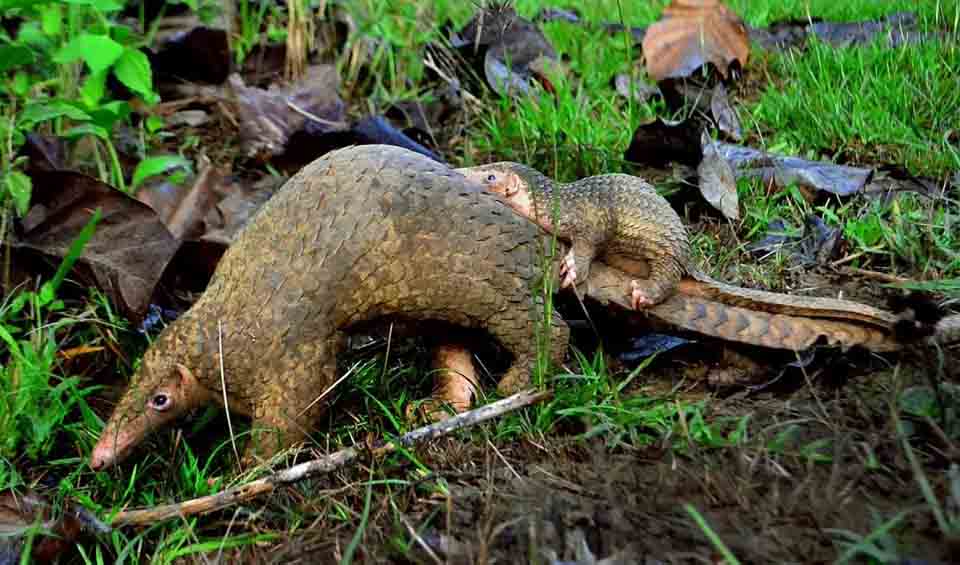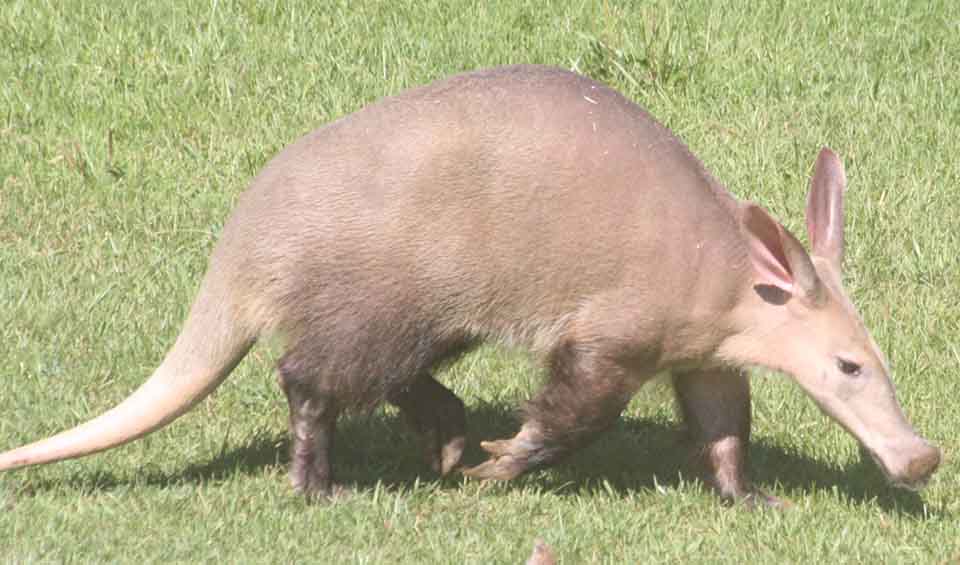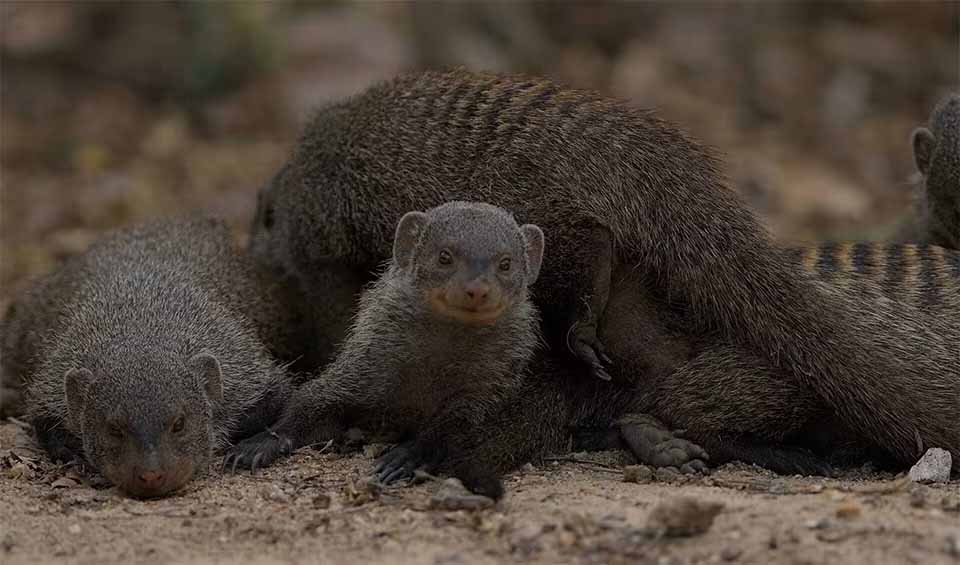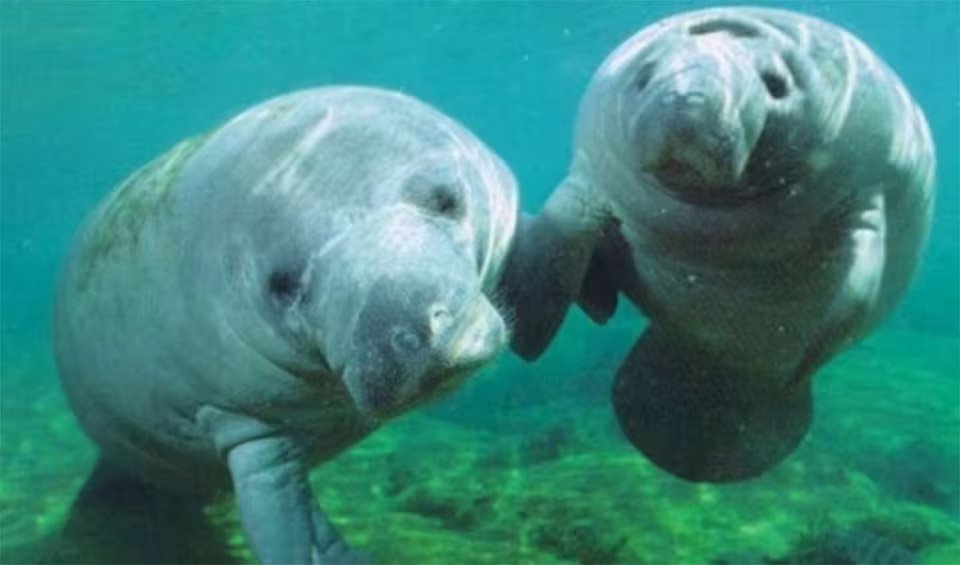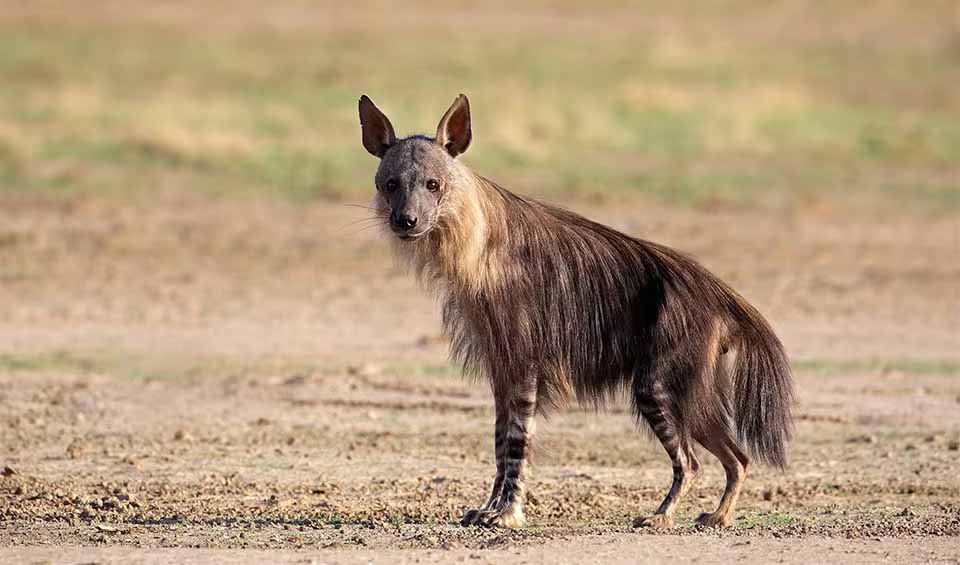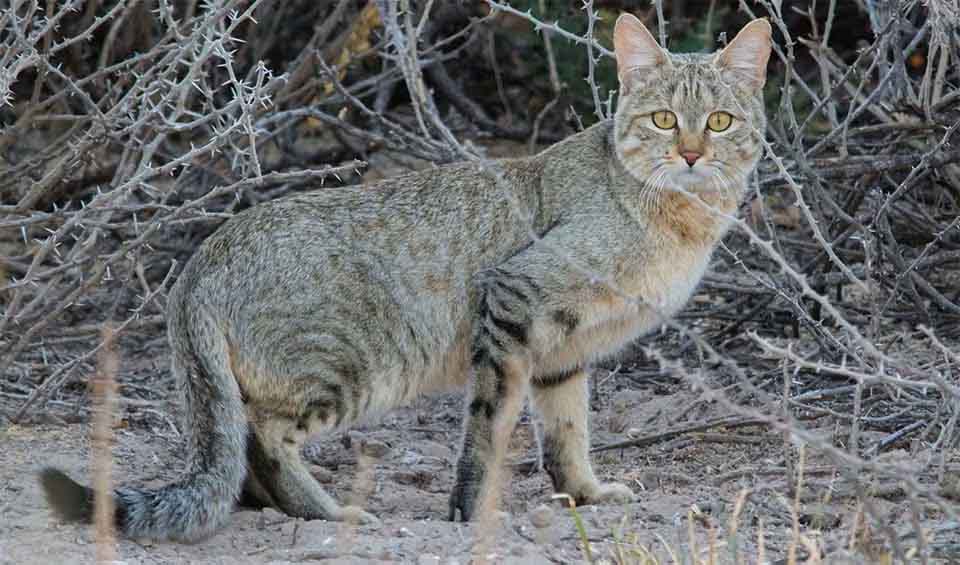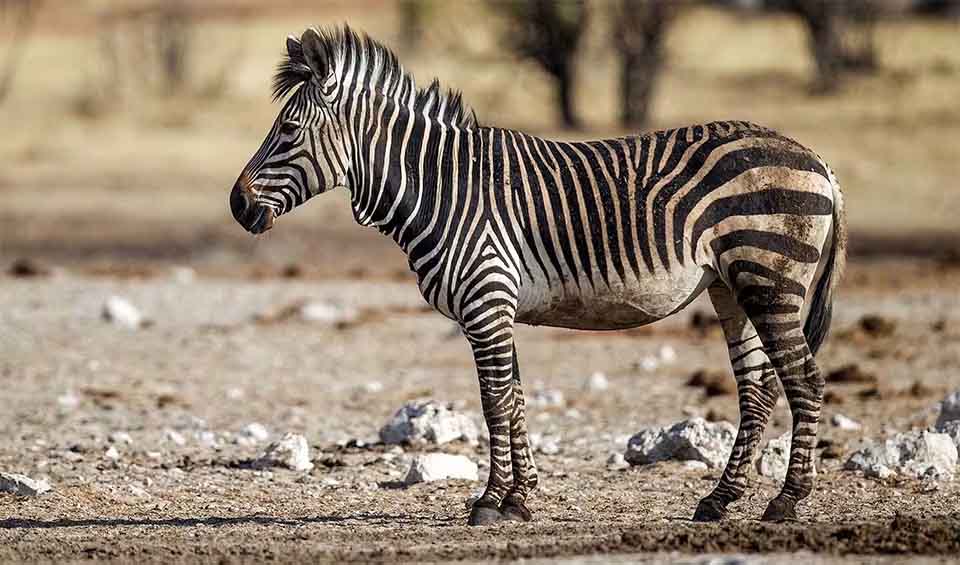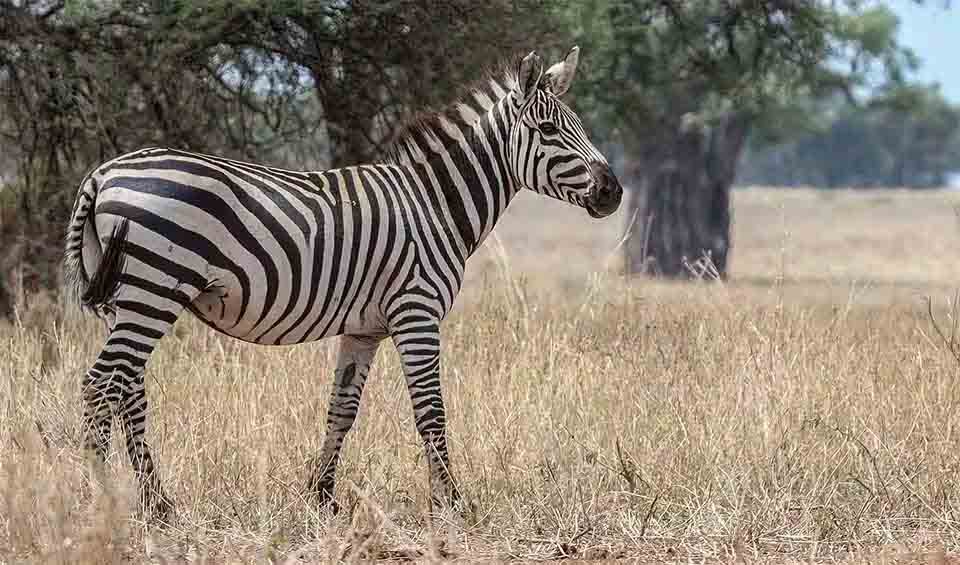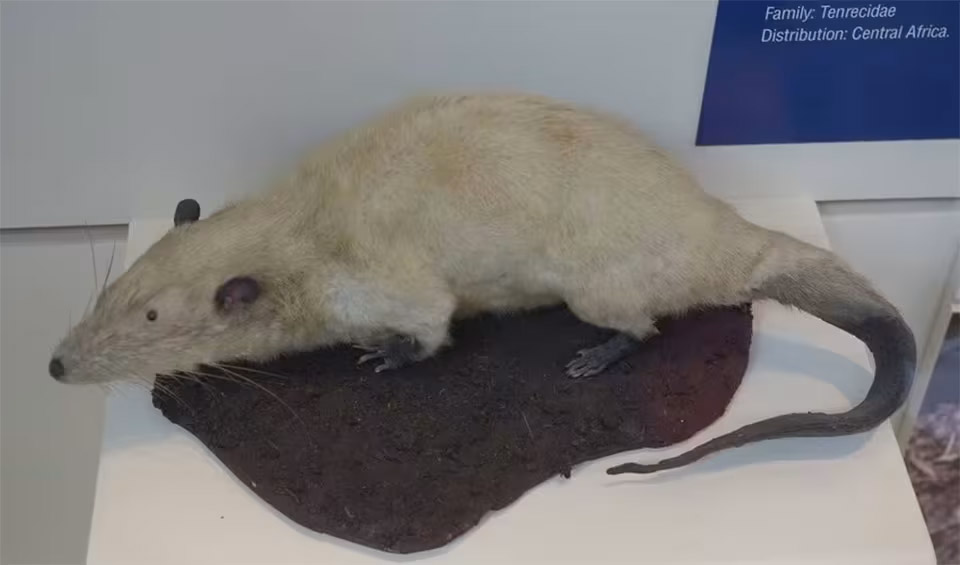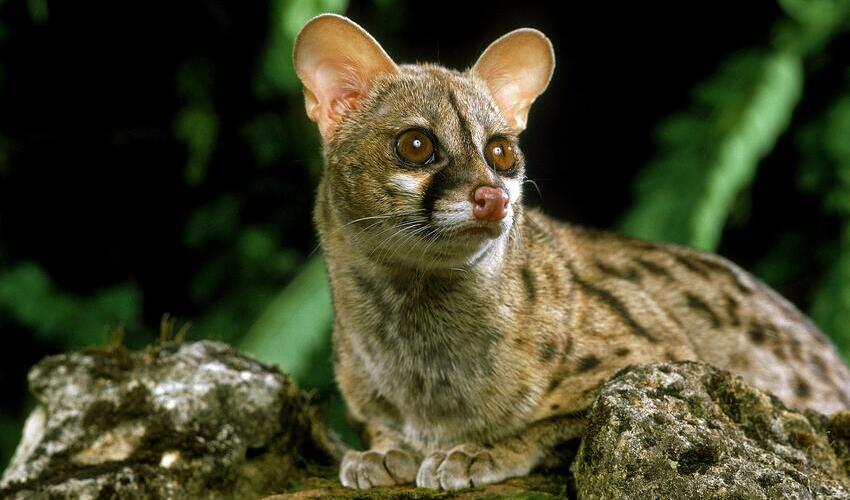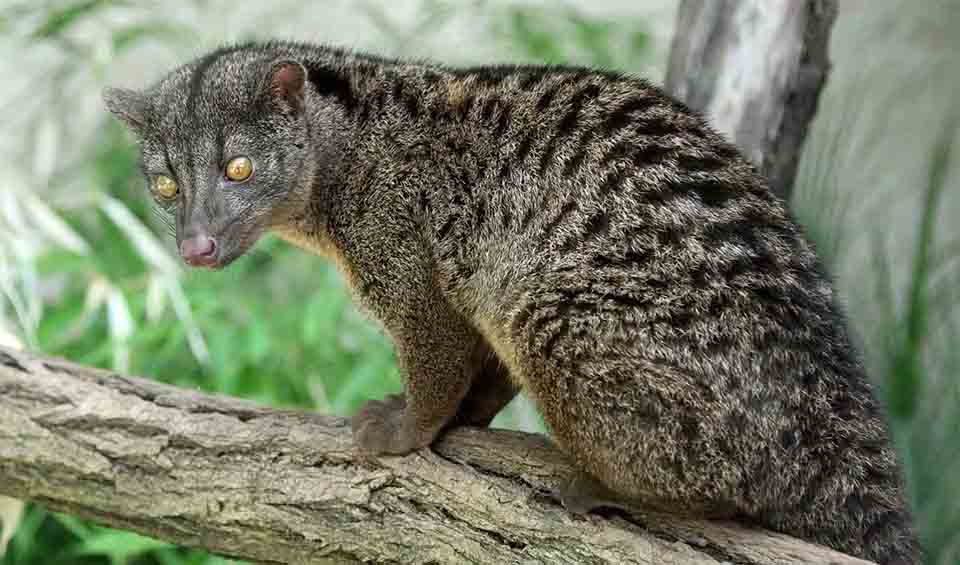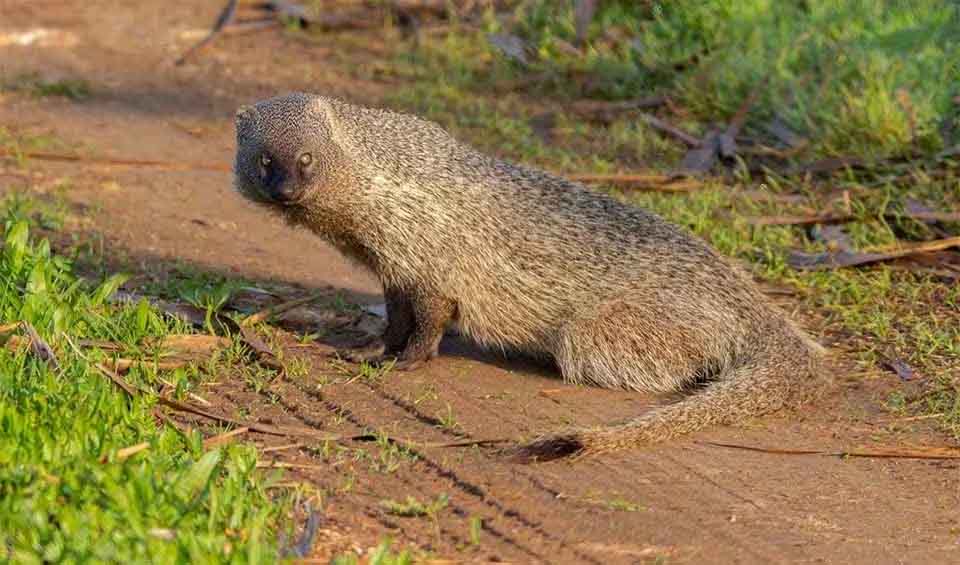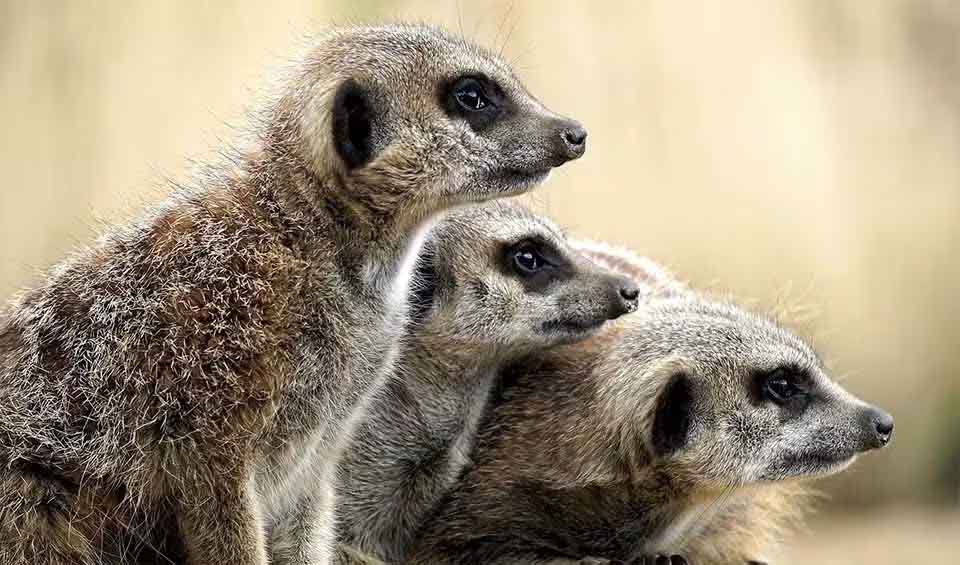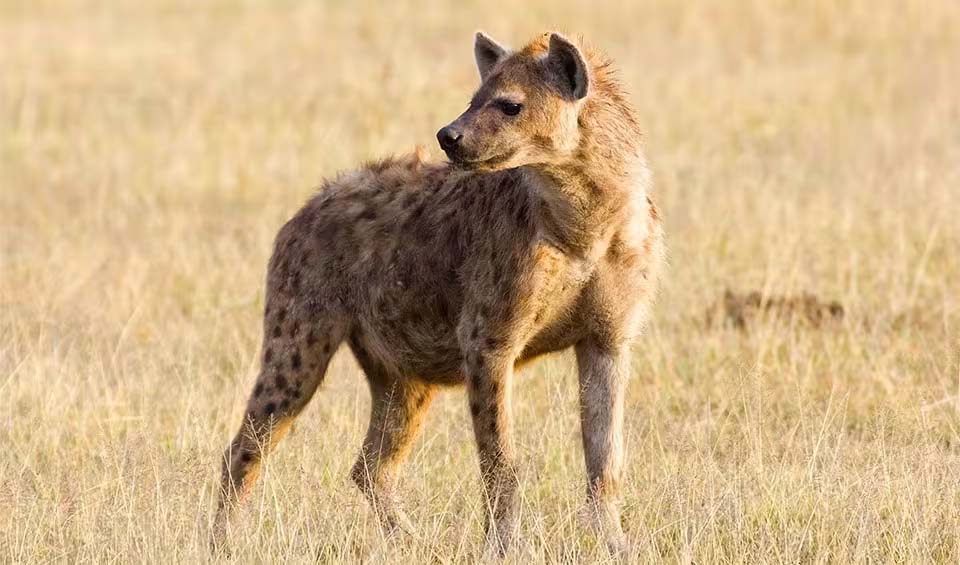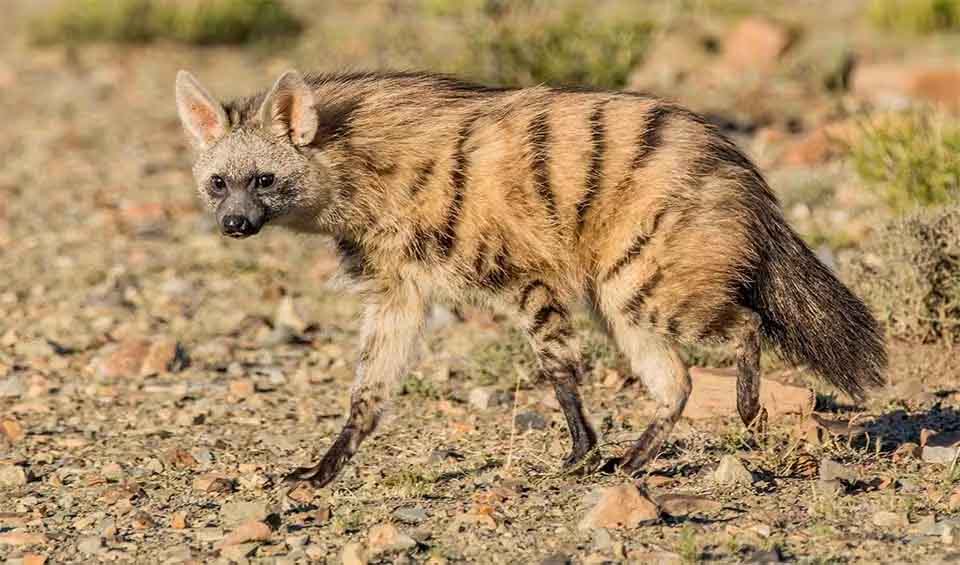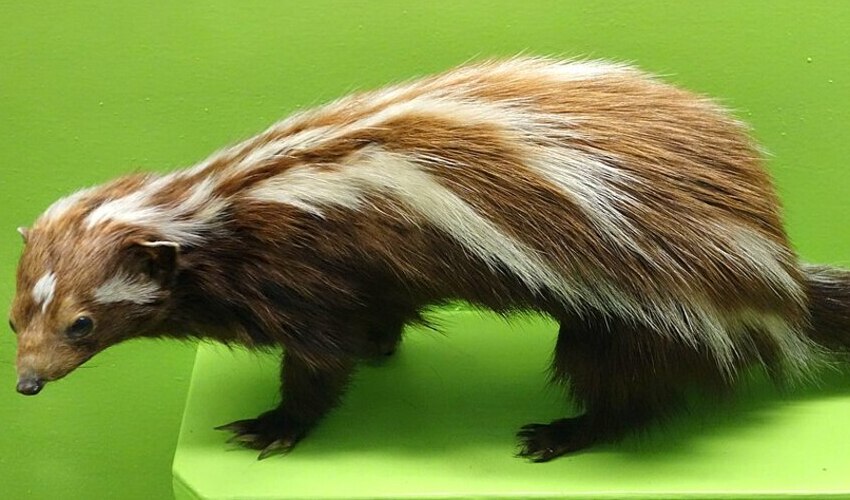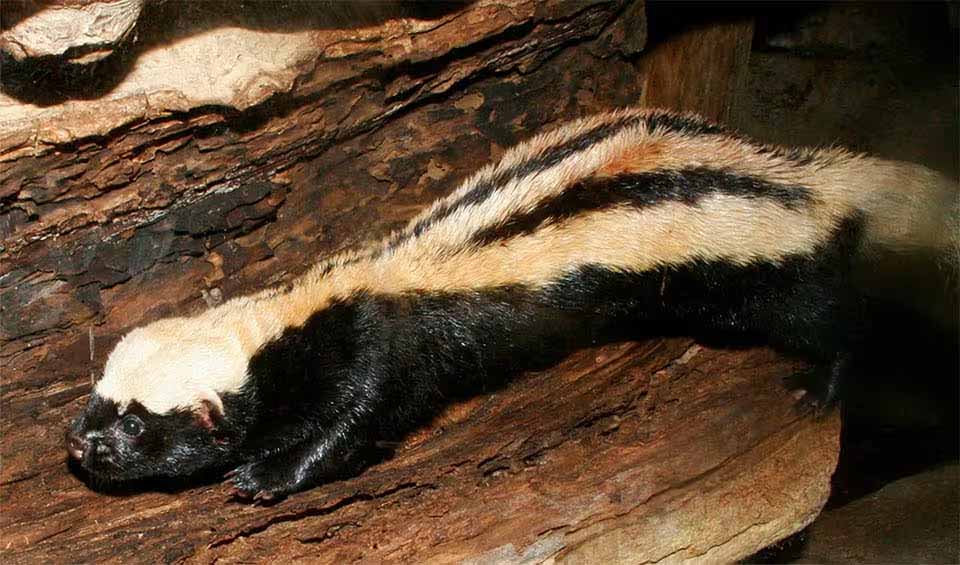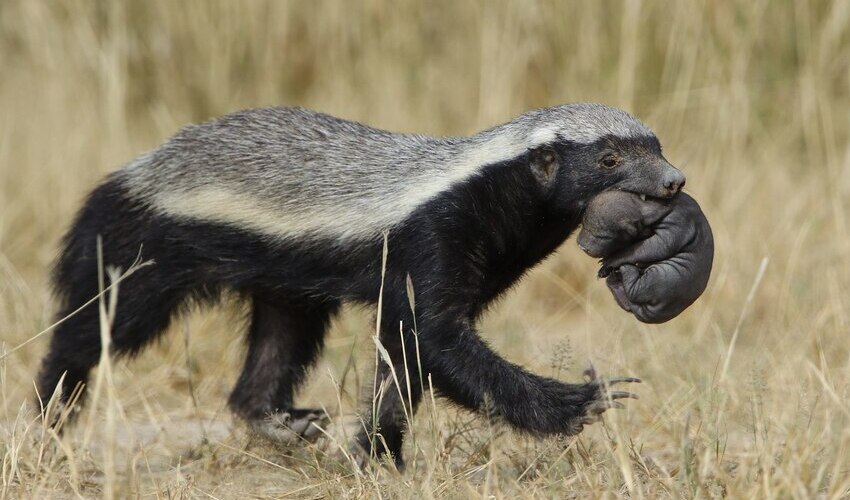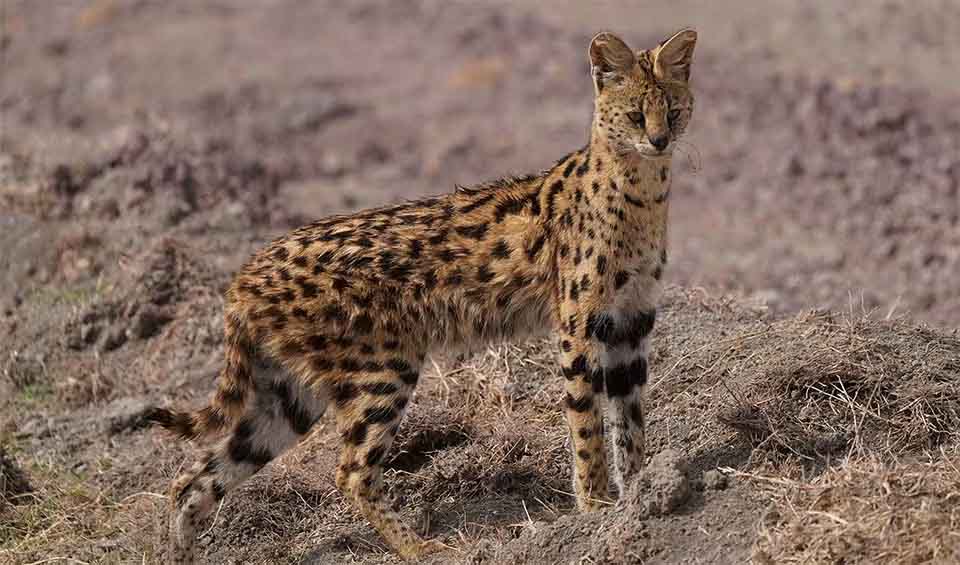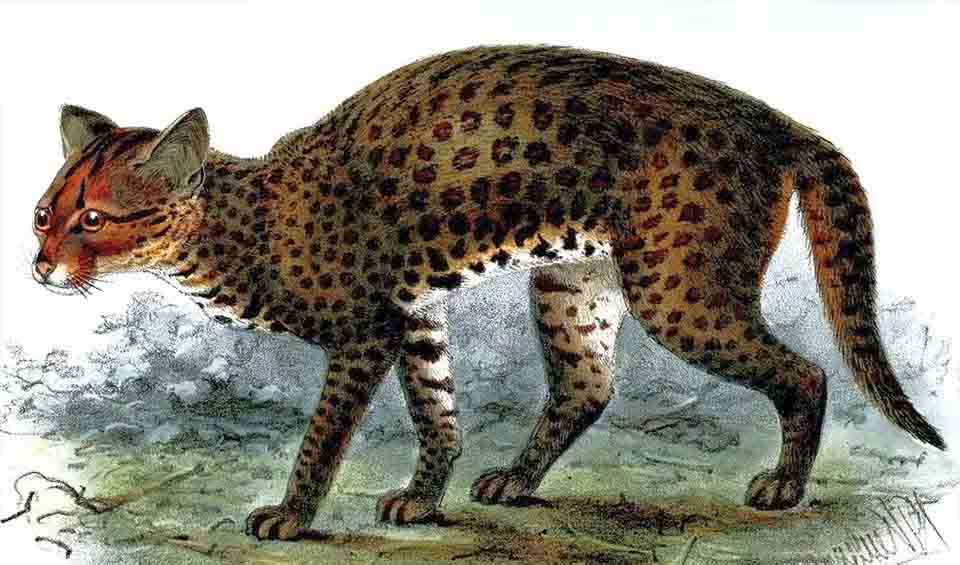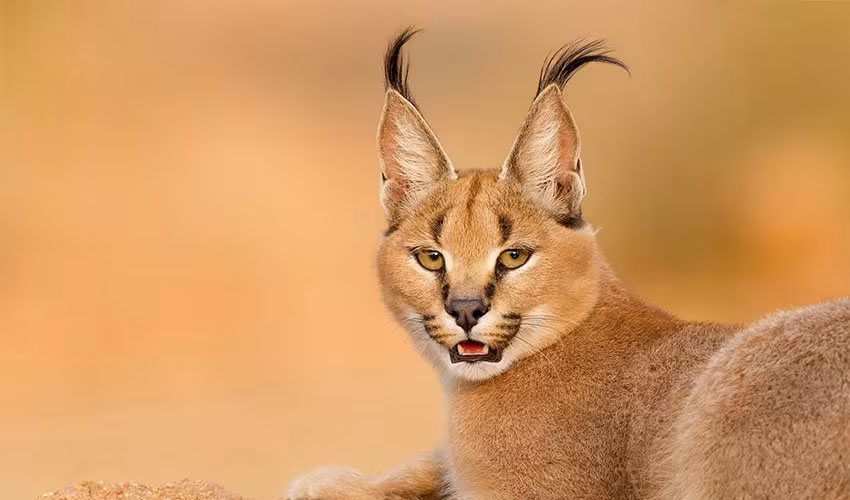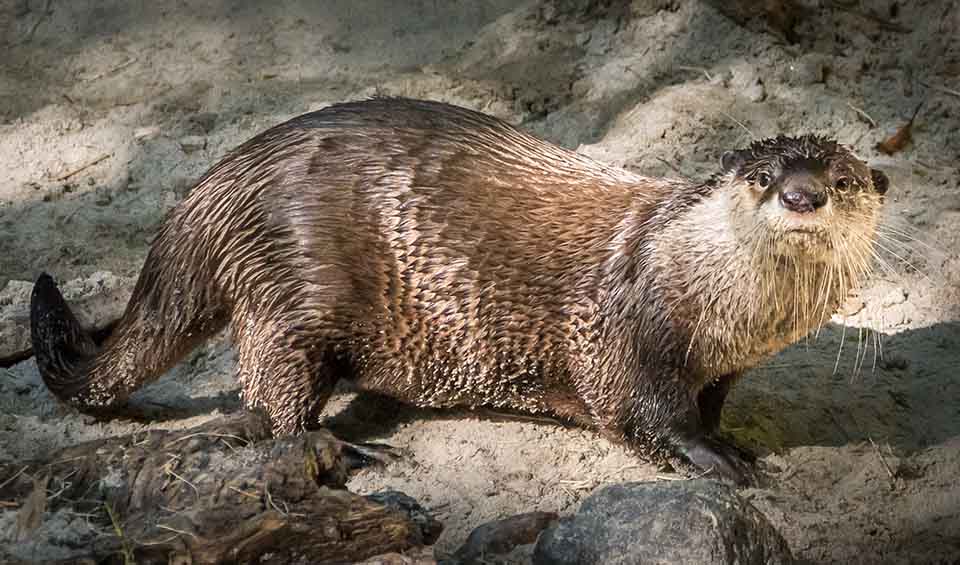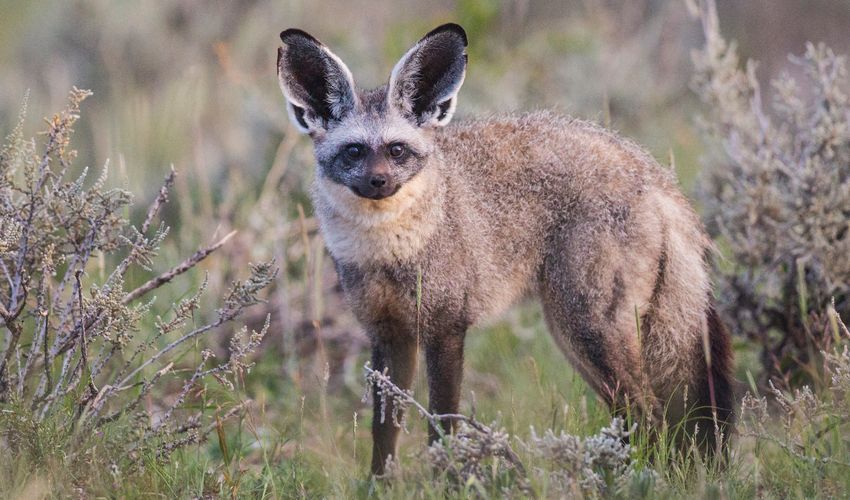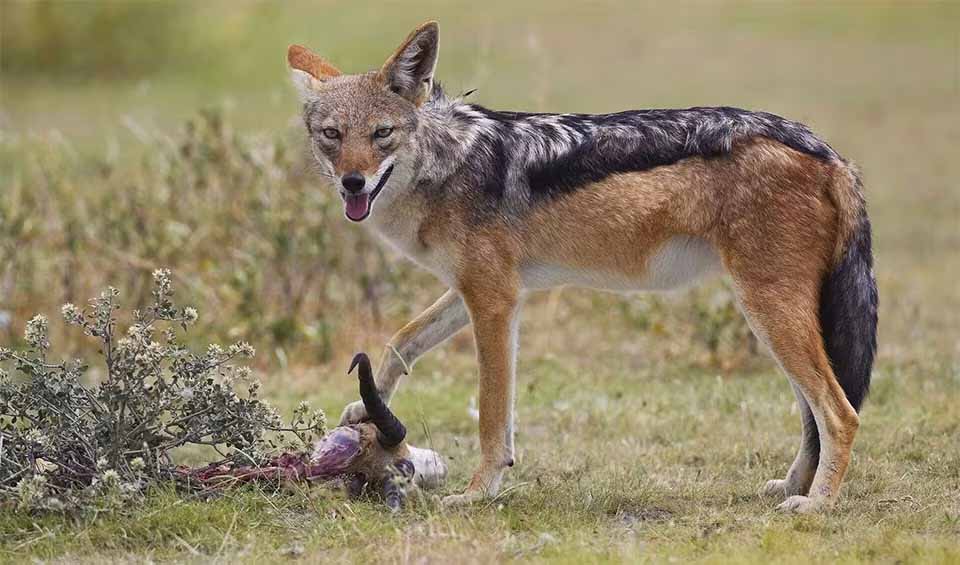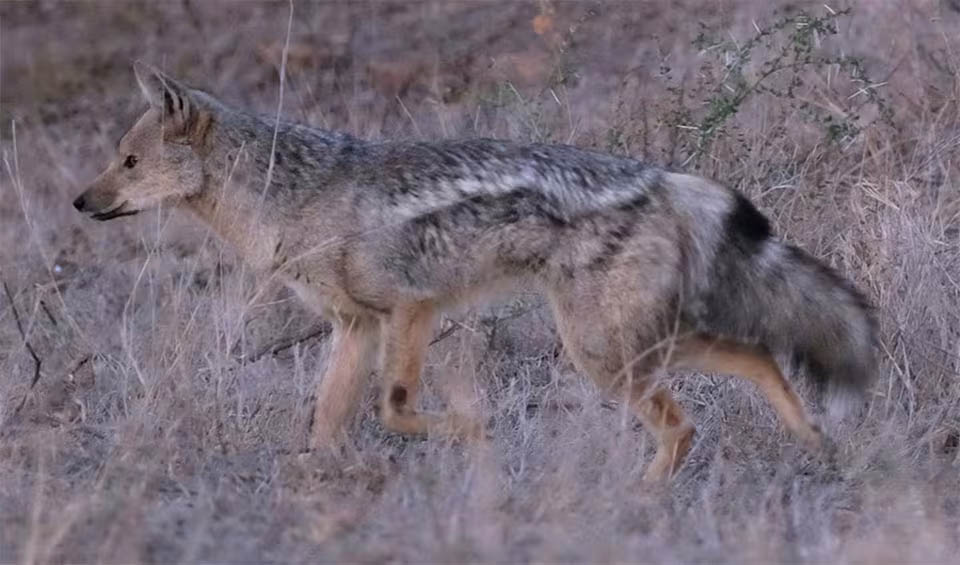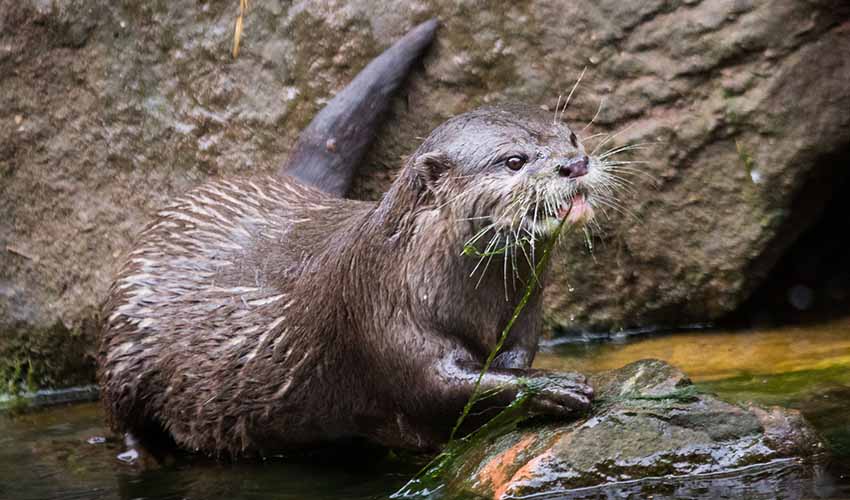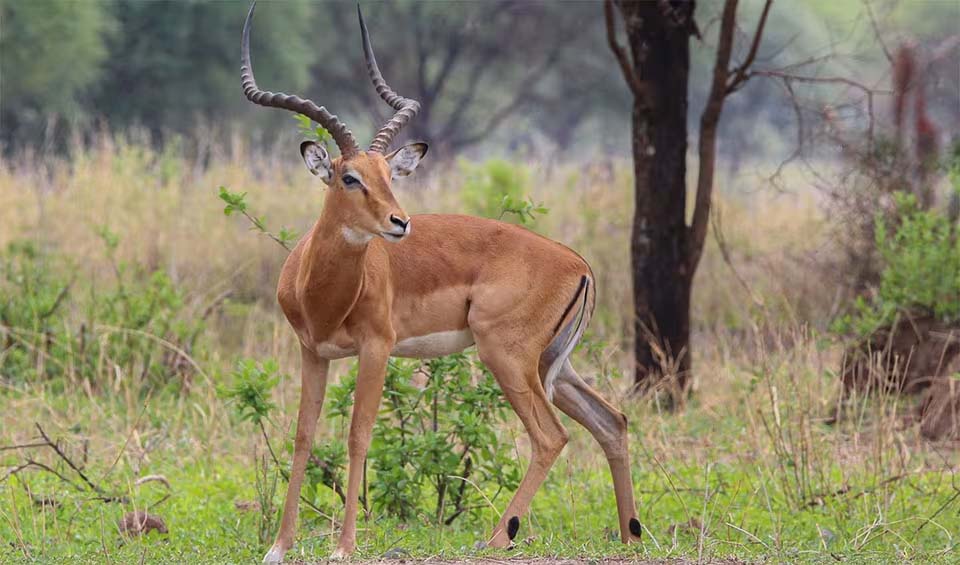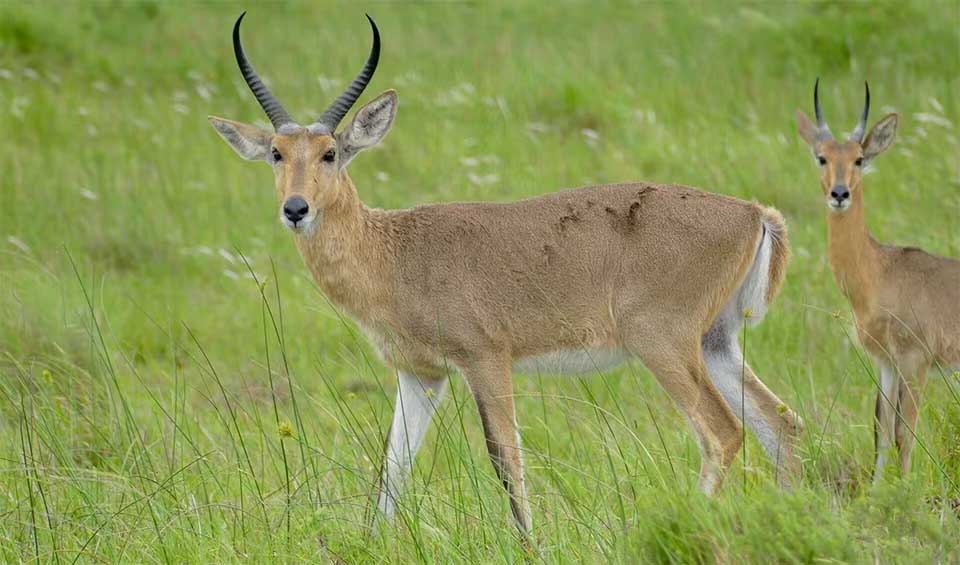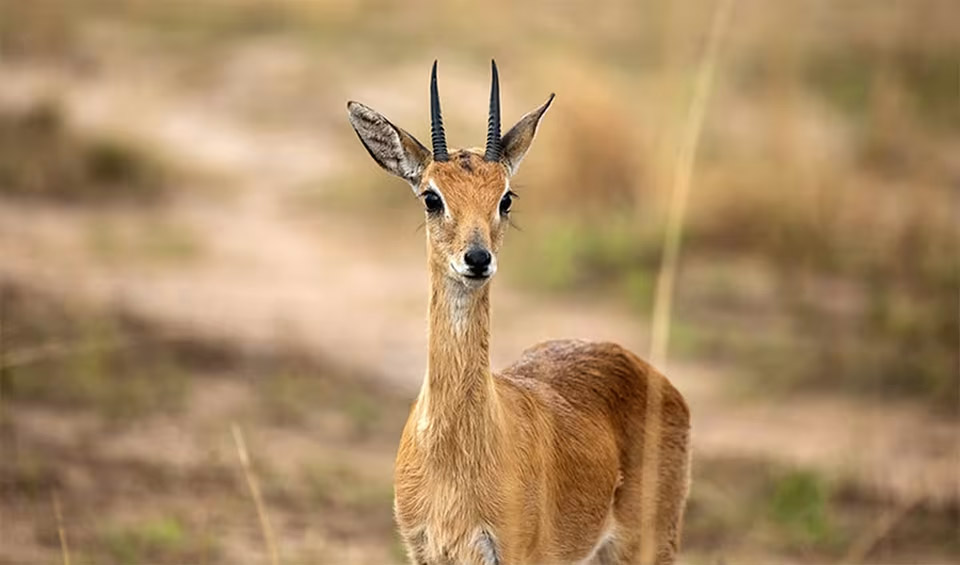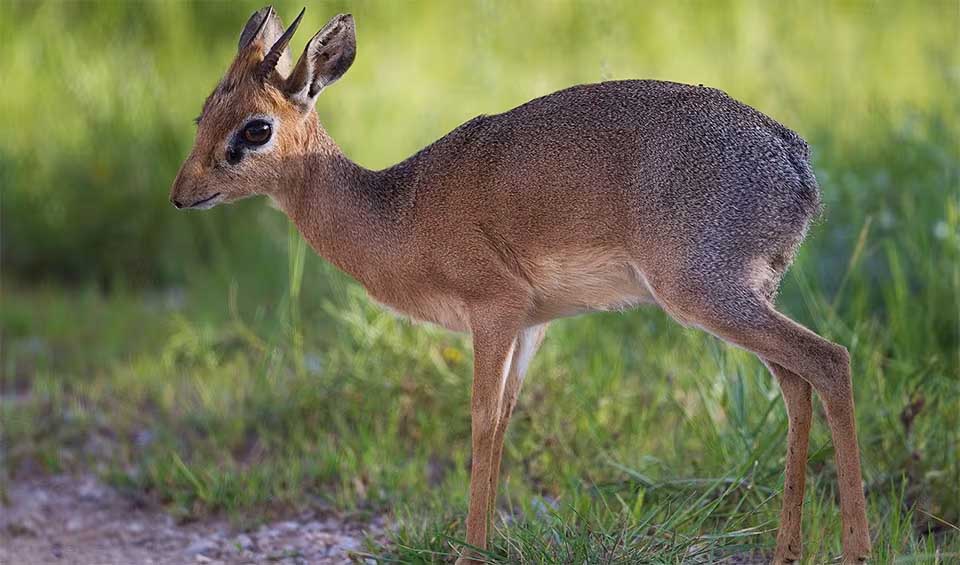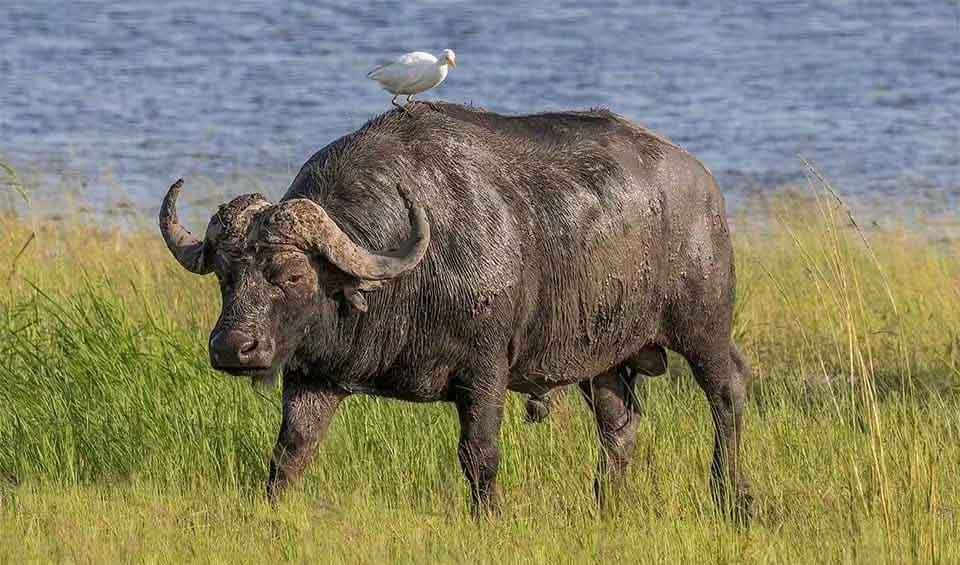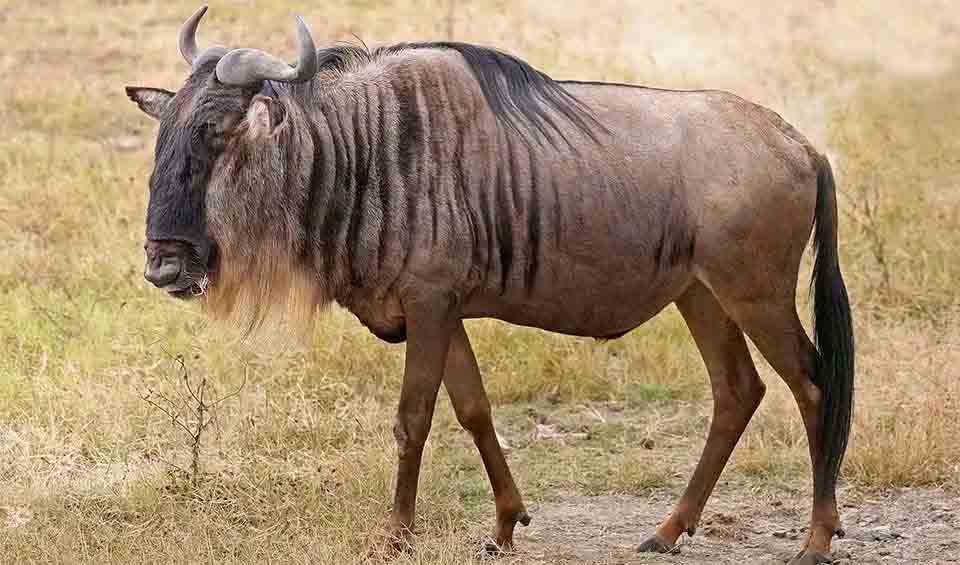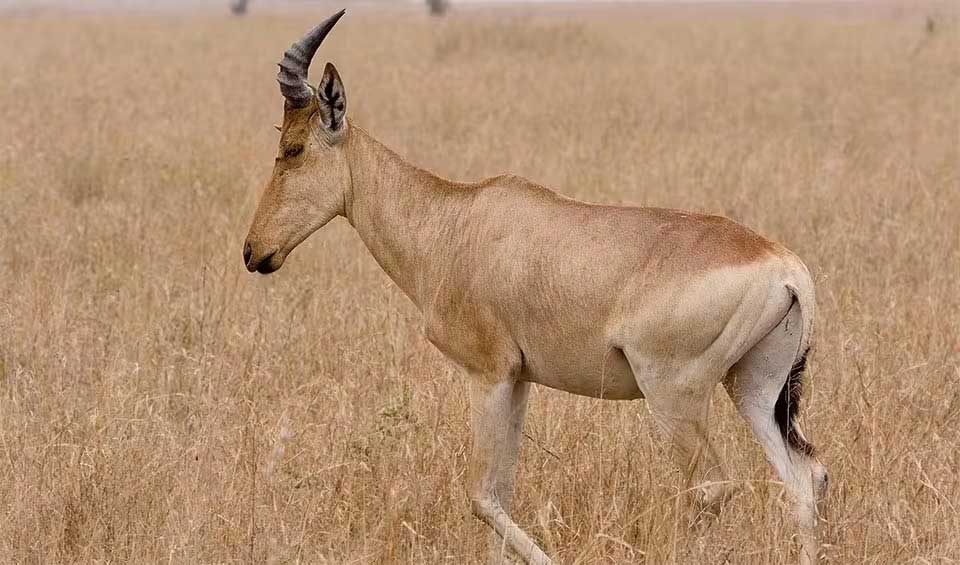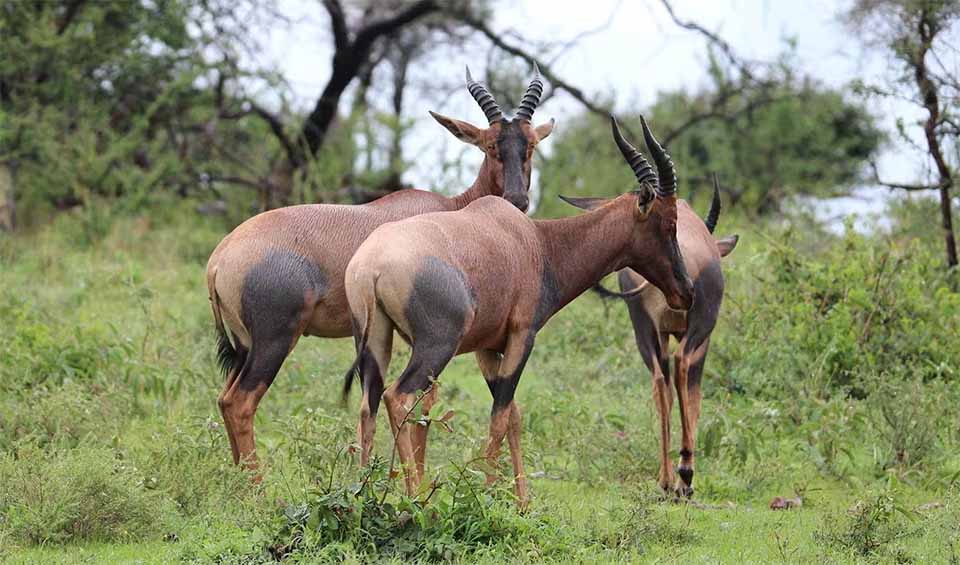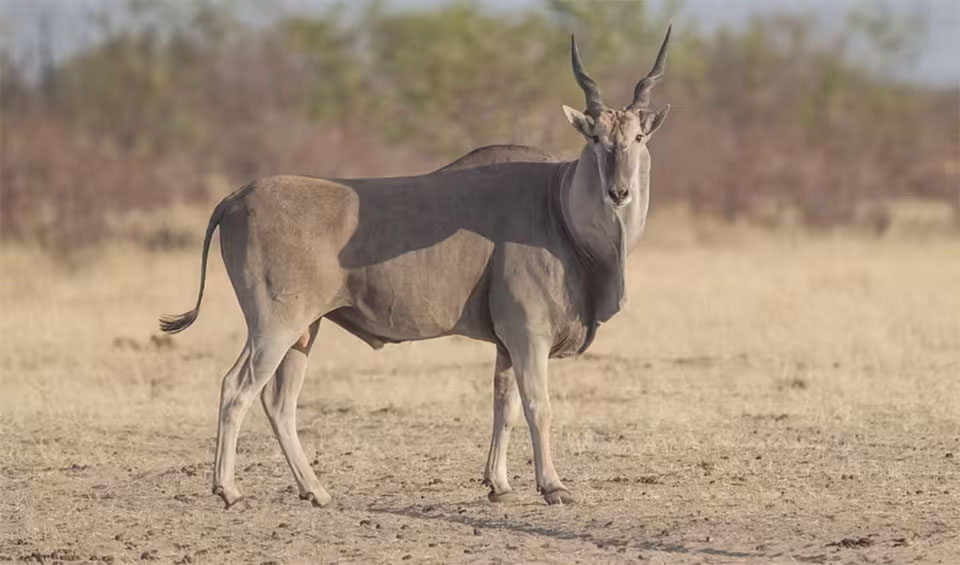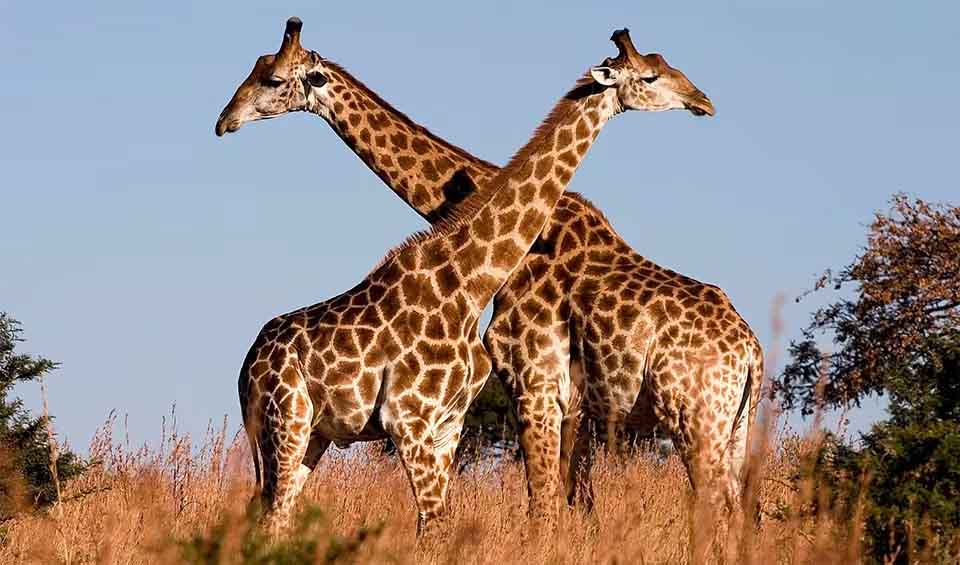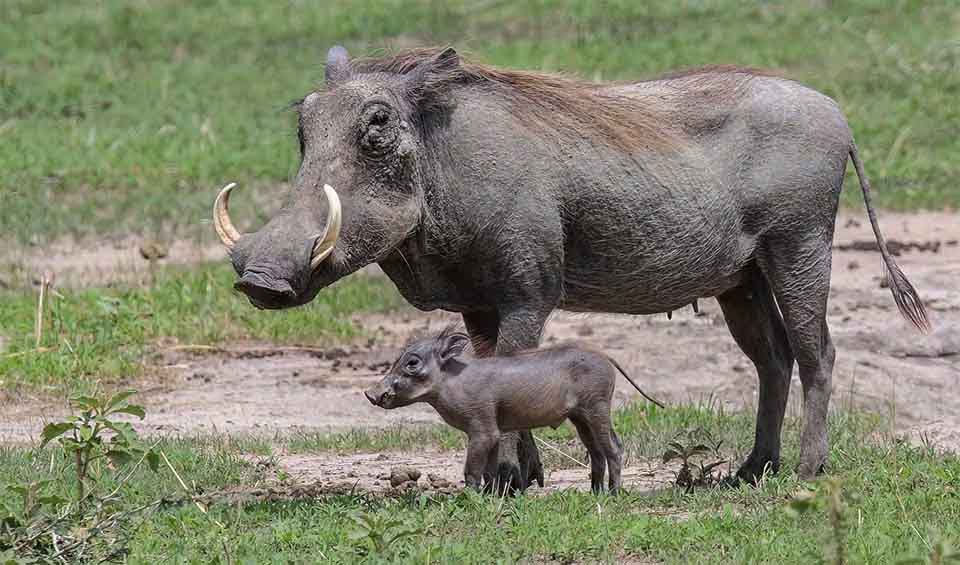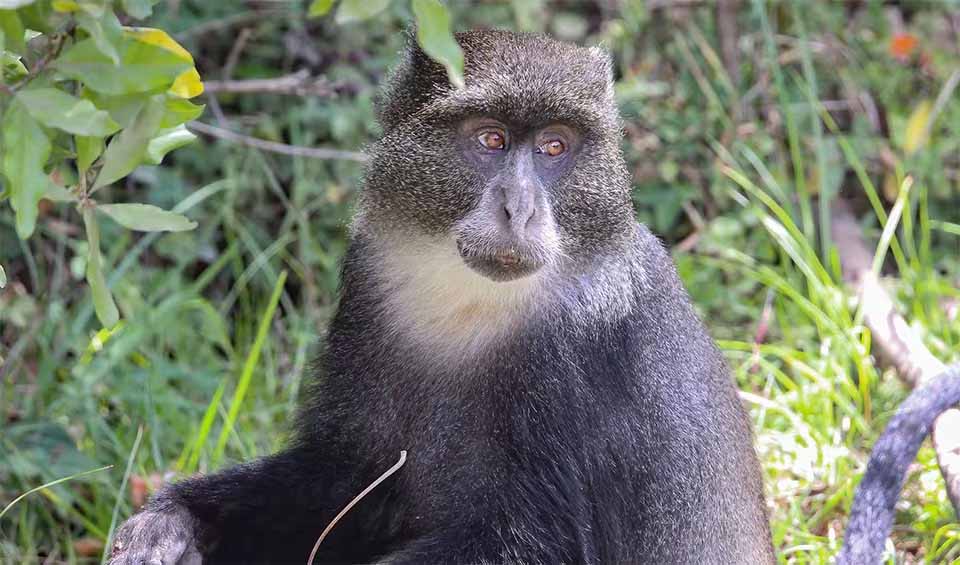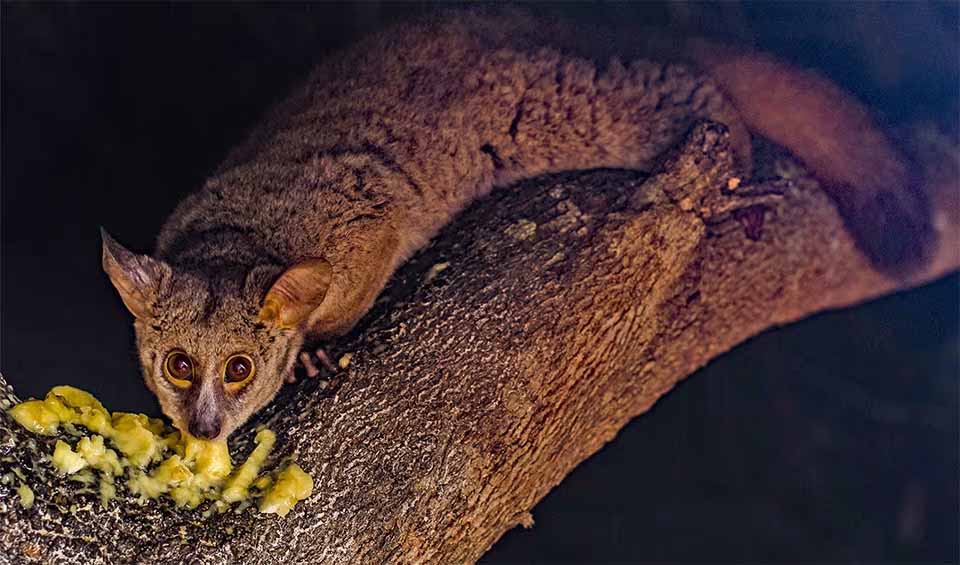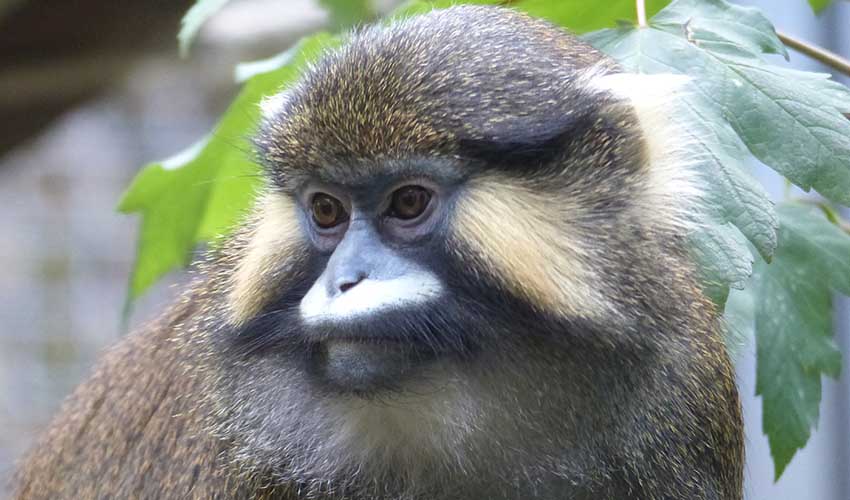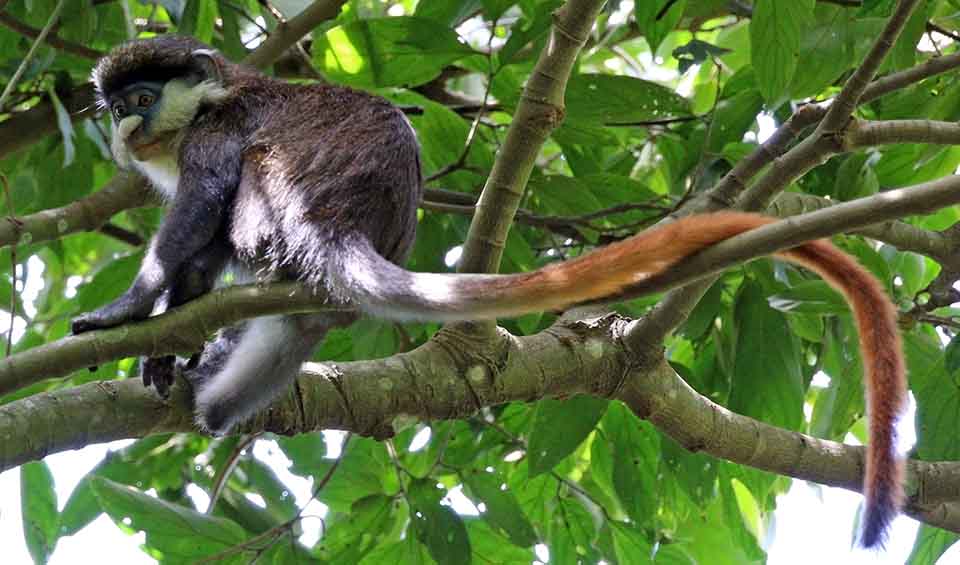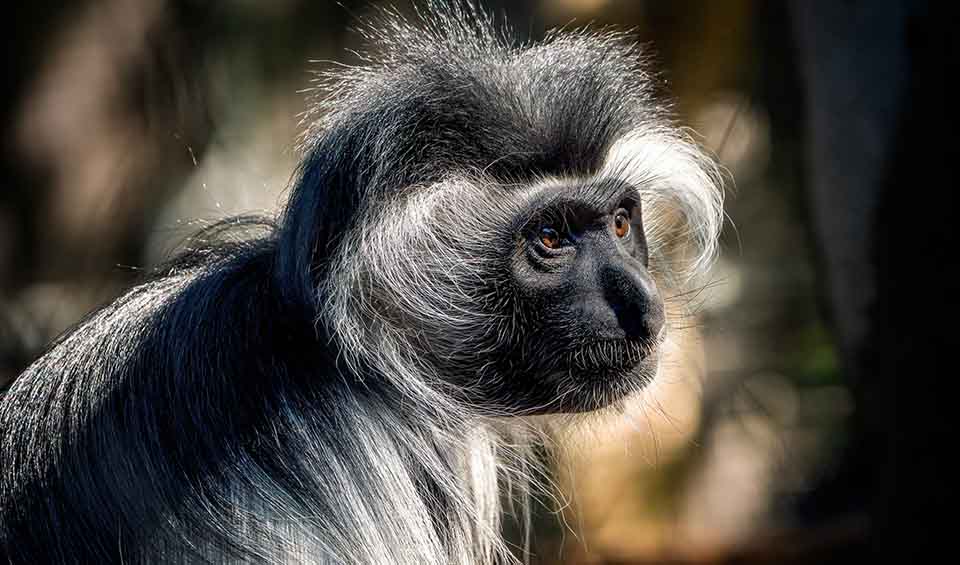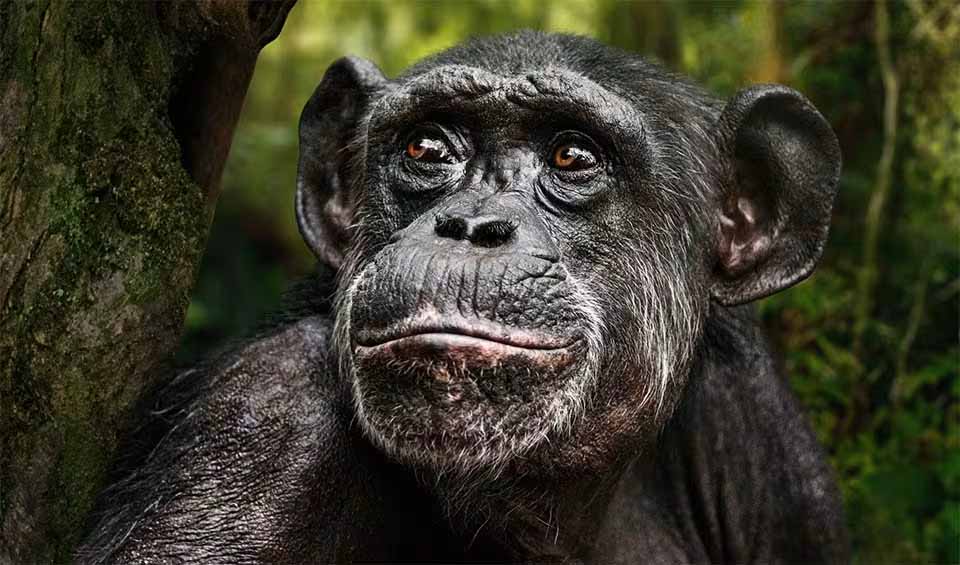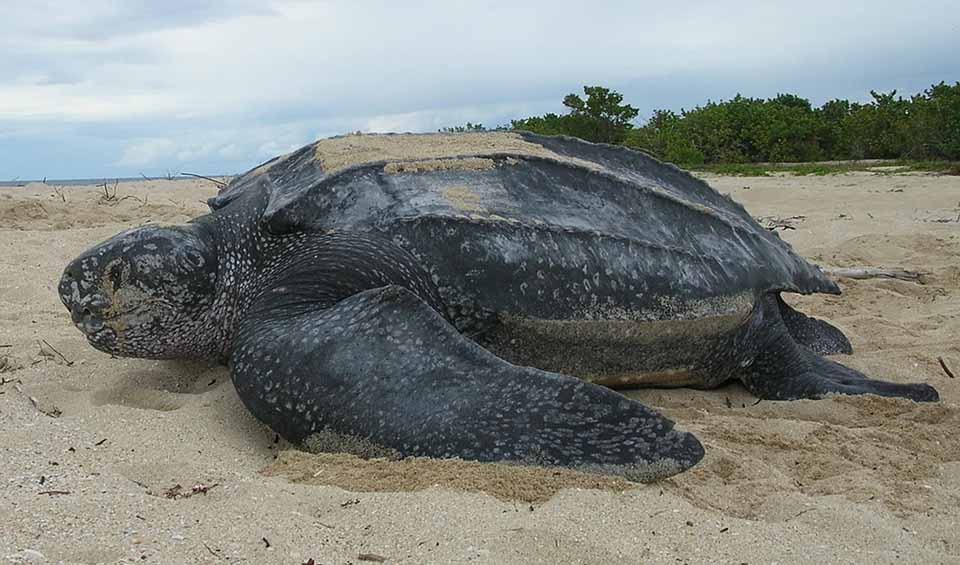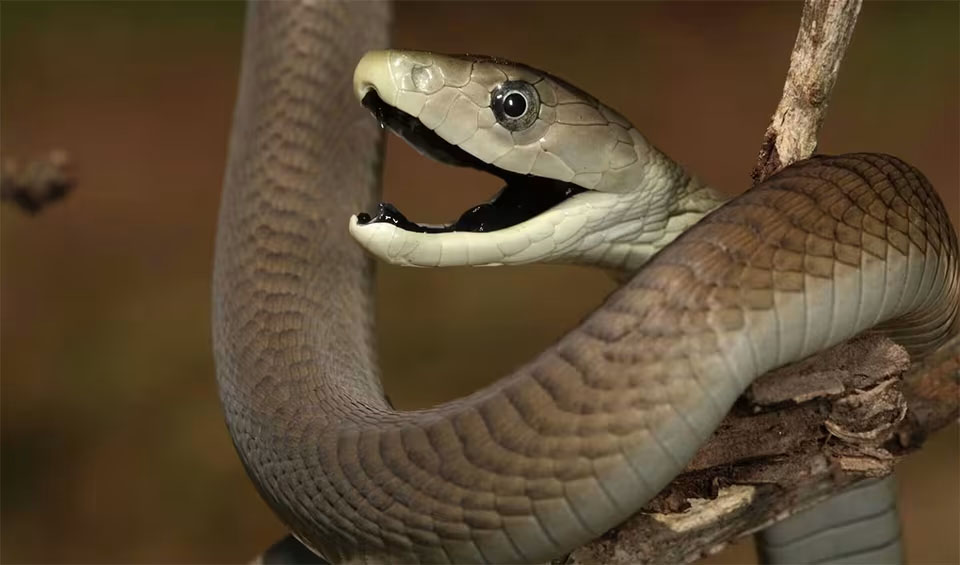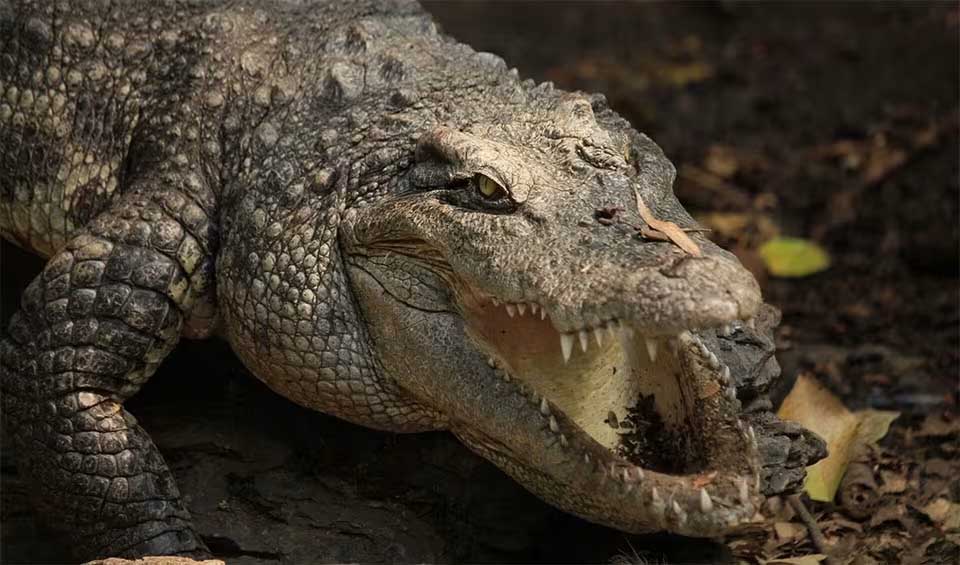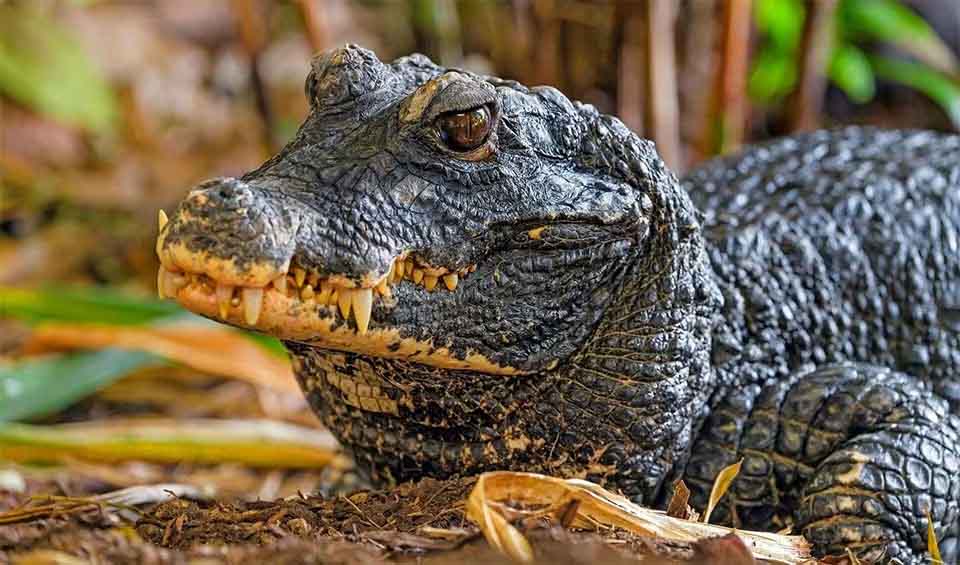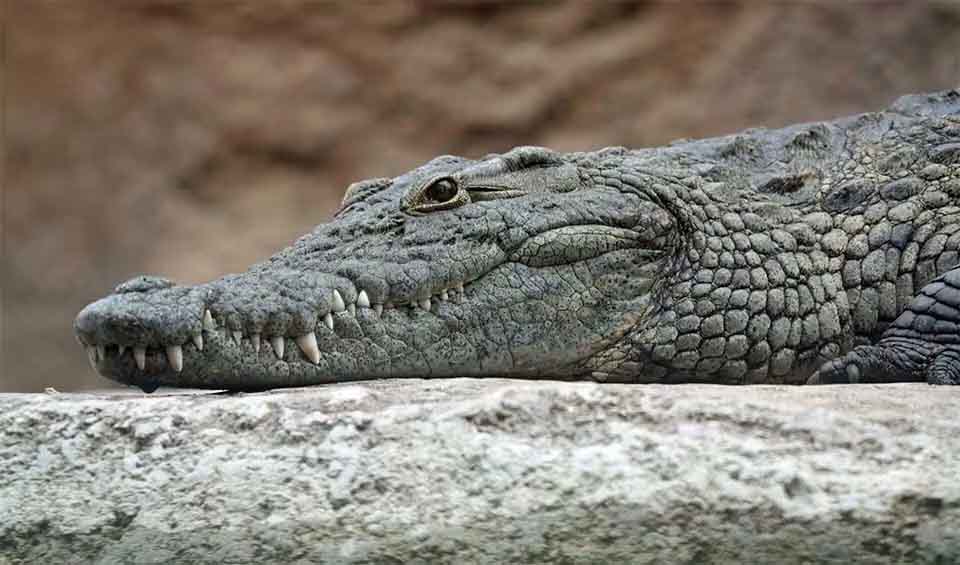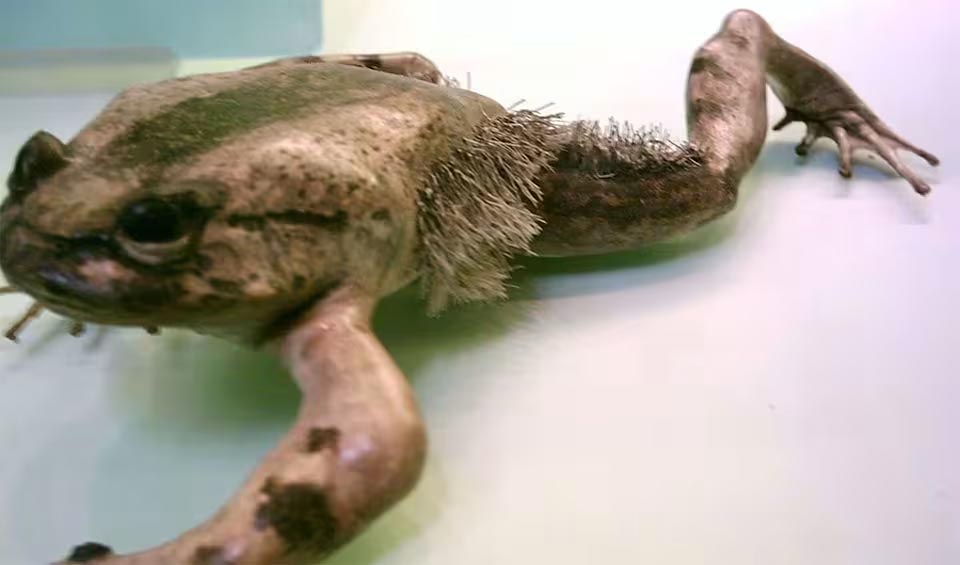Search for Angola
Spotted-necked otter
Can even pursue fish in tight underwater spirals, twisting and turning with remarkable precision
African savanna hare
A clever, athletic survivor, perfectly adapted to Africa’s open landscapes
Sand martin
A bird that carries the rhythms of the seasons on its wings
Booted eagle
Despite its small frame, this eagle can take prey almost as large as itself
Pallid harrier
Local birdwatchers sometimes call it the “silver ghost of the grasslands”
Laughing dove
One of the most charming doves you’re likely to encounter
Grey foam-nest tree frog
Its nests, clinging to branches, often look like someone has stuck blobs of shaving cream or whipped meringue in the trees
Bushpig
They love mud baths, wallowing not only to cool off but also to protect their skin from parasites
Mohol bushbaby
Their eerie nighttime cries—ranging from squeaks to baby-like wails—are how they earned the name “bushbaby”
Four-toed elephant shrew
Despite their mouse-like appearance, they’re closer relatives to elephants, aardvarks, and manatees than to rodents!
Congo caecilian
Spotting one in the wild is like finding a secret treasure of the forest floor
African bullfrog
Often nicknamed the “Pixie frog”, a playful name that seems ironic for such a massive, grumpy-looking creature
Congo dwarf clawed frog
“Mini water gremlins,” quietly cleaning up bits of food in their environment
Natal dwarf puddle frog
Nicknamed “the quacking frog”, since it really does sound a bit like a tiny duck
Banded rubber frog
Small, colorful, and oddly shiny
Angolan reed frog
Despite being only a few centimeters long, they’re some of the loudest frogs in their ecosystems
Mozambique rain frog
One of those creatures that looks like it was designed to make people smile
Power’s rain frog
Became internet darlings, often described as “angry marshmallows” or “walking potatoes
Common squeaker
Their camouflage is so good that even experienced herpetologists sometimes struggle to spot them
Cape grass lizard
Combining the look of a snake with the features of a lizard
Ruff
Looks ordinary—but transforms into one of the most extravagant birds during breeding season
Sand tiger shark
May look like villains, but in truth, they’re peaceful giants of the sea
African common toad
One of the most widespread and adaptable amphibians across sub-Saharan Africa
Pygmy killer whale
One of the lesser-known members of the dolphin family, despite its dramatic name
Long-tailed pangolin
All pangolins nocturnal? Nope—this little rule-breaker loves the daylight!
White-bellied pangolin
Its tail is strong enough to hang it upside down while it feeds, like a tiny armored acrobat
Largetooth sawfish
The only sawfish known to spend long stretches of its life in freshwater lakes, not just rivers or coasts
Scalloped hammerhead
Their skin actually darkens, just like a sunburn!
Pel’s fishing owl
Doesn’t care about rodents or birds — it’s all about the fish, frogs, and aquatic snacks
Reed cormorant
Despite its short stature, it’s a strong and fast flier
Common agama
Known for their vibrant colors, which can change rapidly in response to their environment, mood, or social interactions
Ground agama
Thrives in hot, dry environments like savannas, semi-deserts, and open shrublands
African red toad
Their skin isn’t just pretty — it’s thick and bumpy, helping them retain moisture and deal with harsh, dry environments
Long-crested eagle
Got a long, floppy crest of black feathers sticking up from the back of its head like a windblown mohawk
Palm-nut vulture
Carrion? Nah, I prefer coconuts
Common duiker
And they live up to the name — these little antelopes are known for diving headfirst into thickets when spooked
African green pigeon
Despite being brightly colored, they’re hard to spot — they sit quietly in treetops, perfectly camouflaged among leaves
African harrier-hawk
Has double-jointed ankles that let it bend its legs backward, forward, and sideways
Flap-necked chameleon
Its tongue can shoot out up to twice its body length in a fraction of a second
Graceful chameleon
Its eyes can rotate nearly 180 degrees—no sneaking up on this lizard!
Yellow mongoose
Looks like a desert-dwelling fox and a meerkat had a sandy little sidekick
Chacma baboon
One of the largest and most widespread baboon species in Africa
Black crake
They’re always close to the reeds, but just bold enough to be seen
Martial eagle
One of Africa’s largest and most powerful birds of prey—a true apex predator of the skies
Knob-billed duck
Males sport a big, bumpy black “knob” on top of their bill — like a bird-sized bike helmet
Freckled nightjar
Camouflage game: legendary
Northern black korhaan
Flying? Only when absolutely necessary
Rüppell’s parrot
Their relatively quiet nature and modest size make them sought-after as companion birds
Schlegel’s beaked blind snake
One of the tiniest and most overlooked reptiles in Africa
Ruddy turnstone
They flip the script — literally!
Klipspringer
Natural-born climber, capable of leaping with incredible agility across steep cliffs and boulder-strewn slopes
African paradise flycatcher
Its call—a soft, sweet “chee-chee” or chattering trill—can often be heard before the bird itself is seen
Common flat lizard
Have super-flat bodies that help them slip into narrow rock crevices to hide from predators and escape the heat
Blue waxbill
Their name says it all!
Forest cobra
Largest of all true cobras and one of Africa’s most powerful snakes
Ringed water cobra
One of the few snake species truly specialized for an aquatic menu
Common slender mongoose
Can take on a cobra with nothing but speed and confidence
Owen’s chameleon
Their slow-motion movements and calm temperament have earned them nickname like “leaf walkers”
Little sparrowhawk
The fun-sized falcon of the forest, but with all the attitude of a full-grown eagle
Pale chanting goshawk
Sing most actively at dawn, often creating a haunting, flute-like melody just as the desert wakes up
Leopard tortoise
Famous for its beautiful, patterned shell that resembles the spotted coat of a leopard
Black-and-white-casqued hornbill
Its big casque works like a built-in speaker, boosting their calls to echo powerfully across dense forests
African grey hornbill
One of the more subtly beautiful members of the hornbill family
Crowned hornbill
Have sharp eyesight and are known to mob snakes they spot near their nests
Southern yellow-billed hornbill
Nicknamed the “flying banana” because of its large, bright yellow, curved bill
Crested barbet
A tiny bird with a voice, and style, far bigger than its size
Long-tailed paradise whydah
It’s not just color — the entire body shape of males changes between seasons
Giant kingfisher
Africa’s largest and most powerful kingfisher
Common dwarf mongoose
Tiny but mighty warriors of Africa — proof that being small doesn’t mean you can’t live large
Grey go-away-bird
Love to bathe, not just in water but also in dust!
Hadada ibis
Natural alarm clocks in African cities — whether you want them or not!
Swainson’s spurfowl
Some of the earliest risers — often calling before sunrise
Trumpeter hornbill
Named for its loud, trumpet-like calls
Brown-hooded kingfisher
Isn’t obsessed with fishing — in fact, it rarely fishes at all!
Grey-headed kingfisher
Despite the name, it rarely goes fishing!
Roan antelope
One of Africa’s most majestic and powerful antelopes, known for its robust build and horse-like stature
Black-crowned night heron
One of the most widespread and adaptable herons in the world
Steppe eagle
The treasured bird of Saladin, the first Sultan of Egypt
African softshell turtle
Instead of a bony shell, it has a flat, leathery covering that helps it glide smoothly through the water
Afro-Australian fur seal
Largest of all fur seals and a true coastal heavyweight
Grey parrot
Often considered as the smartest of all parrots
Crowned eagle
Often called the “leopard of the sky”
White-tailed mongoose
One of its favorite snacks? Beetles and other crunchy bugs!
Yellow-billed oxpecker
One of the few birds that feeds partly on blood—not in a harmful way
Cape bushbuck
Females hide their young and eat the feces after nursing them, so no trail of their scents remains to entice predators
Gaboon viper
Gaboon viper has the largest fangs and highest venom yield of any snake on earth
Common ringed plover
This bird taps its feet to imitate rain to make the prey reach the surface
Forbes’s plover
Sometimes called the “dry country plover” because of its preference for inland habitats, unlike its more coastal relatives
Red-capped lark
Surprisingly photogenic, especially when the sun catches their reddish crown just right
Square-tailed nightjar
Their wide, gaping mouths might look a little odd, but they’re perfect for scooping up moths and beetles mid-flight
African jacana
Chicks are skilled swimmers and divers, able to paddle through the water just hours after hatching
Cape cormorant
Aren’t just dipping their toes in the water; they’re deep-sea divers with a serious appetite
Red-footed falcon
Their favorite snack? Large insects like locusts and dragonflies
African forest elephant
Inhabiting humid forests in West Africa; they are the smallest of the three elephant species
African darter
African darters or ‘snakebirds’ are expert underwater fishermen equipped with stealth, diving skills, and a spear-like bill
Wattled crane
The “gentle giants” of the wetlands
Little tern
Renowned for their spectacular aerial displays during courtship, including steep dives and intricate flight patterns
Northern giraffe
Most endangered giraffe species is witnessing silent extinction
European roller
Loves trees! Only member of its family breeding in Europe
Angolan python
One of the rarest snakes in Africa, making them a prized possession for reptile enthusiasts
Southern African rock python
Kills by constriction, ambushing and coiling around its prey, and tightening its coils every time the victim breathes out
Lesser black-backed gull
A common sight in coastal regions throughout the Northern Hemisphere
Jameson’s mamba
Unlike the black mamba, the deadliest snake in Africa, it is less aggressive and more likely to retreat when threatened
Horned adder
Famous for its distinctive horned scales on its head, which give it a fearsome appearance
Black-necked grebe
Unlike many birds, their chicks can swim and dive just hours after hatching
Crested mona monkey
Looks like they’re wearing a permanent carnival mask and crown
Common egg eater
Has the incredible ability to swallow eggs that are much larger than its own head
White-faced whistling duck
Loud birds with a distinct three-note whistling sound
Bateleur
One of the easiest birds of prey to identify from a distance
Brown fur seal
Aren’t just rocking a single fur coat; they’ve got a double-layered defense against the elements
African rail
Spend most of their time lurking in the thick reeds and grasses, only venturing out when they absolutely have to
Hammer-headed bat
A bat with a face that looks like it belongs on a comic superhero!
European pied flycatcher
Males are particularly eye-catching with their black and white plumage, looking like they’re wearing a little tuxedo
Great white pelican
Underneath this colorful beak, there’s a hidden surprise – a built-in net for scooping up a delicious lunch!
Pink-backed pelican
Mostly pale grey or white, but when the light hits just right, you’ll see a rosy-pink blush across their back and wings
African clawed frog
It’s a frog, but it doesn’t look like the typical frogs we think of!
Barn swallow
Most common and widely distributed swallow globally
Lesser grey shrike
Have been observed remembering the locations of their impaled prey and even using tools to help them catch food
Great blue turaco
A bird as big as a crow but with feathers that shimmer an unbelievable shade of blue
Great hammerhead
The biggest of all the hammerhead sharks, with a massive head that looks like a giant, flat hammer
Yellowfin tuna
Popular food fish, prized for its mild flavor and firm texture
White-crowned lapwing
Known to nest surprisingly close to crocodiles!
Pantropical spotted dolphin
A champion swimmer and a social butterfly of the warm seas
Brown noddy
They bob their heads up and down as they fly, which is actually how they earned the nickname “Noddy”
Common bottlenose dolphin
Known for their acrobatic leaps, twisting and turning gracefully as they jump completely out of the water
Grey crowned crane
It holds significant cultural and spiritual importance in African cultures, often associated with wisdom, longevity, and good fortune
Gemsbok
Their large, bat-like ears help them dissipate heat, keeping them cool in the hot desert climate
Tawny eagle
Often seen as a symbol of strength, freedom, and keen vision in many African communities
Sable antelope
Often revered in African folklore as symbols of strength, grace, and nobility—earning them nicknames like “the antelope of kings.”
African fish eagle
With its striking appearance and distinctive call, it is often referred to as the “voice of Africa”
Puff adder
Notoriously grumpy, always putting on a dramatic hissy fit when approached
Guttural toad
Known for its loud, ‘guttural’ croak that can be heard from a distance
Springbok
The national animal of South Africa and even lend their name to a South African rugby team
Aubry’s tree frog
With sticky toe pads that act like suction cups, letting them cling to leaves even when upside down
Little egret
During breeding, they transform with elegant white plumage, adorned by decorative plumes on the head, neck, and back
Egyptian goose
They were commonly depicted in art from ancient Egypt
Eurasian kestrel
Adaptable raptor known for its hovering hunting technique and striking appearance
Tiger shark
They eat almost anything that comes their way – you name it, they’ll try to snack on it!
African openbill
An unrushed flyboy from Africa
Nile monitor
Can deliver a painful bite, tail lashes, and fierce scratches — definitely a reptile to respect!
Rock monitor
One of Africa’s largest and most powerful lizards
White-backed vulture
Their highly acidic stomachs and powerful enzymes help break down and neutralize harmful bacteria and toxins present in the carcasses they feed on
Cape vulture
These birds are built for flight; their massive wings allow them to glide effortlessly on thermal currents for hours
Hooded vulture
They are known to scavenge at rubbish dumps and around slaughterhouses, helping to dispose of animal byproducts and reducing potential health risks
Shortfin mako shark
Speed and power embodied, they rule the seas with their sleek bodies and jaw-dropping leaping prowess
Basking shark
Majestic giants of the sea, they peacefully glide through the ocean with mouths agape, filtering the waters for sustenance
Oceanic whitetip shark
Opportunistic predators of the open ocean, their aggressive and persistent feeding behaviour strikes fear into the hearts of their prey
Bull shark
Fearless and formidable, these aggressive predators command respect in the waters they roam
Whale shark
Gentle giants of the sea, with mouths wide open to filter the ocean’s bounty
Great white shark
Majestic ocean predators, embodying power, speed, and precision in their pursuit of prey
Loggerhead sea turtle
One of the largest and strongest sea turtles in the world
Steenbok
A tiny wonder of the animal kingdom that embodies both elegance and resilience
Cape fox
It can climb, swim, and run faster than you might expect from an animal that weighs just a few kilograms
Black-footed cat
When it comes to hunting skills, this cat proves that good things come in small packages
Cheetah
Racing to extinction: historically ranging throughout Africa to India, now distributed in small, fragmented populations
Lion
Tufted-tailed Simba in the plight
African bush elephant
Size matters! The largest of the three elephant species and the largest extant terrestrial creature on our planet
Black rhinoceros
With 3 out of 8 subspecies have been declared extinct, illegal poaching puts these hooked upper lip rhinos in danger
African wild dog
85% successful kills! Yet irreversibly waning, it is among the most endangered canids in Africa
Western gorilla
Most diverse species of a gorilla; inhabits midwest Africa
Leopard
Disappearing graceful shadows, this tree-climber is on the way to extinction
Kuhls pipistrelle
Their population distribution is often associated with human settlements as they are comfortable in both agricultural and urban habitats
Egyptian slit-faced bat
Often called ‘whispering’ bats because their echolocation used to access the area and prey location are low intensity and not strong
Egyptian fruit bat
They hold their food tightly and closely to their bodies while feeding, preventing the food from being stolen by other bats
Crested porcupine
They don’t shoot quills—they let predators do the hard work by detaching them on contact!
South African springhare
Infant at birth is well-developed as they can immediately sit on their hind legs and even run on the second day
Hippopotamus
1.6 ton (1.5 tonne) + 48 km/h (30 mph) = what do you think?
Great cormorant
Due to their adaptability and willingness to migrate to more favorable habitats, great cormorants are found worldwide
Common ostrich
Arabian ostrich, 1 of 4 subspecies, was hunted to extinction in mid-20th century
Barn owl
The most cosmopolitan of owls with home ranges extending across the globe
African penguin
Pinked patched endanger penguin
Wilsons storm petrel
This species is found in all world oceans except the north Pacific Ocean
Leachs storm petrel
These petrels stylishly ride the ocean waves like they own the winds
Manx shearwater
Impressive flights but clumsy walking on the ground are observed in these birds due to awkward legs
Wandering albatross
The humongous bird with the largest wing span of 3.5 m (11.5 ft) – seems straight out of a fantasy movie
Little grebe
This cute and small bird is one of the most elite hunters below the water’s surface
Greater honeyguide
The master hunter and the bane of the bees
Lesser flamingo
This bird holds a Guinness book of world records to its name
Greater flamingo
The iconic and elegant bird with a curved pink bill is known for turning heads
Red-billed tropicbird
Professional marine forecasters to optimize breeding success and prey availability
White-tailed tropicbird
These ocean wanderers can be spotted from a distance showing awe-inspiring aerial tricks
Hamerkop
The hammerheads of the bird kingdom
African sacred ibis
The fossil records suggest that this species has been on this planet for millions of years
Glossy ibis
These birds seem to have lost their way to the beauty pageant
Goliath heron
This large heron is a firm believer in the adage: “Patience is the key to success”
Red-billed quelea
The most numerous wild bird species in the world
Kori bustard
These large birds may remind you of ostriches, but they can fly!
Common moorhen
Living around smelly brackish marshes is unthinkable, but these birds love their isolated habitat or don’t have a sense of smell
White-spotted flufftail
Don’t be disappointed if you don’t see a fluffy tail on these birds – it’s a misnomer
Helmeted guineafowl
Native to Africa, it is the best-known bird of its family, broadly introduced as domesticated species
Pygmy falcon
Smallest raptor of Africa with a heart bigger than lion’s
Peregrine falcon
At the speed of over 321 km/h (200 mph), this bird outraces a Formula1 car
Pied kingfisher
The only member of the genus having wide distribution across Asia and Africa is sociable, unlike other members of its family
Speckled mousebird
Their dull mousy-brown color justifies the name pretty well
Marabou stork
This Nature’s cleaners are the largest & heaviest living stork
Yellow-billed stork
As the name suggests, this whitish stork has a bright red face and a distinctively long yellow bill
Saddle-billed stork
The colorful stork of Africa
African woolly-necked stork
One of the most elegant and quietly impressive birds of Africa’s wetlands
Black stork
The stork with the widest geographic range
White stork
The folktale bird that brings the babies!
Pied avocet
One of the very few birds with an upturned bill
Black-winged stilt
Elegant long-legged wader, common almost worldwide
Water thick-knee
Its giant yellow eyes aren’t just for dramatic effect — they give it excellent night vision
Egyptian plover
The janitors of the bird world
Arctic tern
This bird can give any cross-country runner a run for their money
Common tern
This bird holds the record of the longest distance flown by any bird in recorded history
African skimmer
Global Warming got nothing on this bird
Greater painted-snipe
Looks no less than a renaissance masterpiece
Common swift
These enthusiastic travelers can be seen almost worldwide in different seasons
Green wood hoopoe
Insect-eating, tree-dwelling, and an incredible co-partner. That said, there’s nothing uninteresting about this one
Southern ground hornbill
What does a 29 km/h (18 mph) speed coupled with a massive wingspan bring to the table? A ‘vulnerable to extinction’ title isn’t something anybody would hope for
Eurasian hoopoe
Dependable wings and a muscular build. Nope, we aren’t talking about the next Redbull ad campaign
White-headed vulture
They’re known as ‘old world vultures’ endemic to Africa and the first ones to get a whiff of corpses
Egyptian vulture
A highly intelligent species that is the world’s only tool-using vulture with a long migratory range
Western marsh harrier
The yellow-eyed devil
Augur buzzard
The sturdy body complimented with broad wings make these raptors one of a kind
Common buzzard
They eat just about everything — rabbits, rodents, birds, carrion, earthworms, insects… even beetles get a look-in
Western banded snake eagle
As the name suggests, this eagle is all about snakes — venomous or not, it doesn’t care
Lappet-faced vulture
The African giant vulture has a wingspan up to 2.80 m (9 ft) wide
Osprey
One of only six land-birds with a cosmopolitan distribution habituating all continents except Antarctica
Secretarybird
A long-legged bird with a stunning black feather crest on its back head
Southern elephant seal
The largest member of the order Carnivora, adult males, can be six times larger than polar bears!
Subantarctic fur seal
Once nearly wiped out, it now thrives in great numbers
Rock hyrax
African rock dwellers that resemble pikas , but are more closely related to elephants!
Ground pangolin
Often referred to as “scaly anteaters” due to their diet and appearance
Aardvark
Dig large subterranean burrows that other animals can hide in during fires, hence preventing wildlife deaths
Banded mongoose
Living in troops, a real-life example of “All for one, and one for all”
West African manatee
Thought to be the goddess of the sea known as “Maame Water” in many coastal legends of western Africa
Brown hyena
Rarest of all four hyena species; native to southern Africa
African wildcat
The direct ancestor of the domestic cat—no wonder why they look so alike!
Mountain zebra
The zebra with dewlap climing over steep, rugged terrains, as high as 2 km (1.2 miles)
Plains zebra
These zebras with the underbelly stripes are the longest migrators in Africa
Giant otter shrew
Got their common name due to their resemblance to otters and shrews, but not true otters nor shrews
Common (spotted) genet
We can rotate our pinnae by 80 degrees!
African palm civet
Live in harmony with a parasite causes the deadly Sleeping sickness in humans
Egyptian mongoose
Appeared in Egyptian paintings from 300 B.C., it is known as “Pharaoh’s cat” and is considered a holy animal that is housed in temples
Meerkat
Living in large groups called “mobs” with complex matriarchal-led social structures
Spotted hyena
Also known as Laughing Hyena, it gets chewed a lot for being cruddy and a good-for-nothing scavenger!
Aardwolf
Unlike other hyenas, they do not hunt or scavenge but mainly consume termites
Striped polecat
They are also called ‘zorilla’ which comes from the Spanish word ‘zorro’, meaning small fox, but they are not fox
African striped weasel
A skunk mimic, besides a similar appearance, also releases smelly fluid from its anal gland when they feel threatened
Honey badger
Well known for their ferocity, these fearless little creatures are always ready to take on an entire pride of lions
Serval
Owners of the longest legs-for-body-size of all cats are widespread in sub-Saharan savannahs
African golden cat
There is still a lot to learn about this already threatened species
Caracal
“To put the cat among the pigeons” was phrased on caracals, as they were once trained for hunting game birds for Persian and Indian royalty
African clawless otter
Inhabits water bodies in sub-Saharan Africa’s savannahs
Bat-eared fox
The ears not only resemble a bat’s ear, but they also have the same purpose – locate insects
Black-backed jackal
Has two subspecies populations, separated by 900km (560 miles)
Side-striped jackal
Larger than its jackal relatives and easily distinguishable with white stripes on the sides
Congo clawless otter
Unlike many otters, it does not depend much on fish, making it a true crustacean specialist
Impala
One of the most successful African sprinters
Southern reedbuck
Graceful animals with V-shaped horns have royal and aristocratic looks
Oribi
They benefit from wildfires as they can return to the area that recovered from fires to eat fresh grass
Kirk’s dik-dik
A frightened female whistles repeating the dik-dik sound, giving rise to the name dik-dik
African buffalo
They are also known as the “black death” or “widowmaker,” which says a lot about them – dangerous!
Blue wildebeest
So named because of the silverish-blue shine of fur, which is not blue but greyish to brown
Waterbuck
Predators usually don’t hunt adult waterbucks as they have an unpleasant body odor because of the waterproofing secretions
Hartebeest
They enjoy a sedentary and lazy lifestyle but run fast if they sense danger
Topi
This prestigious, highly social, antelope species of Africa could run up to 80 km/h (50 mph)
Common eland
Large antelopes look like giant cows in appearance but run pretty fast
Greater kudu
One of the largest antelopes – a male kudu having thick and spiraled horns as long as 1.8m (6 feet) in length
Southern giraffe
The only giraffe species (of four) with population no deceasing
Common warthog
Widely distributed and the only pigs that live in grasslands
Blue monkey
The blue monkey’s digestive tract has developed to accommodate a diverse range of diets; however, they prefer fruits 50% of the time
Brown greater galago
Unlike social grooming in other primates, they prefer to lick the fur of one another rather than use their fingers
Moustached guenon
Their distinctive white “stache” makes them look like little forest gentlemen
Red-tailed monkey
Named for their striking red tail, which looks like it’s been dipped in paprika
Angola colobus
Abundant in Congo Basin and fragmented in Eastern Africa
Chimpanzee
Our closest living relative from the wild
Leatherback sea turtle
The mysterious diver of the ocean is the largest and only sea turtle without a hard shell and scales
Black mamba
Africa’s most feared snake that would inevitably evoke reactions of fear by just its looks
West African slender-snouted crocodile
With only a few thousand remaining individuals, this critically endangered species is on the verge of extinction
Dwarf crocodile
Timid nocturnal with broad snouts native to Africa, they are the smallest of all crocs
Nile crocodile
One of the most iconic animals of Africa and the second largest reptile on earth
Hairy frog
The predominantly terrestrial hairy frog lives in subtropical and tropical forests & rivers of West Africa
